2015 Jeep Renegade Trailhawk: What's It Like to Live With?
Read the latest updates in our long-term road test of the 2015 Jeep Renegade Trailhawk as our editors live with this car for a year.
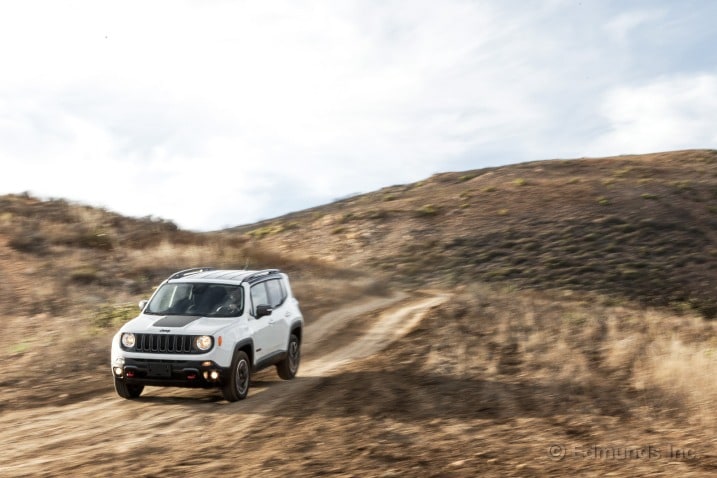
What do you want to know about?
- Introduction
- Tony Stark Would Approve
- Rides Better Than an Early Sample Vehicle
- Hipster Jeepster, Not for the Oldster
- Plenty of Room for Tall Drivers
- Simple Gauges With a Twist
- Rear-Facing Convertible Car Seat Fits, But Forces Passenger to the Back
- I'd Skip the Trailhawk for a Latitude
- First Road Trip
- Scores High Among Crossovers on Ramp Travel Index
- Hot or Cold, You Want Remote Ignition
- Trials on the Tarmac
- Will the Bike Fit?
- Fuel Economy Update for August — More Efficient With More Miles?
- Key Fob Malfunctions in Major Way
- The Renegade Rumble is Not a Dance
- Unexpected Features
- Does Things for You
- A/C Chills Even in Triple Digits
- Fuel Economy Update for September - What's Behind Our Low MPG?
- Poor "Time to Bluetooth" Test Results
- Climate Dials Too Big for Their Own Good
- Interior Rattle Remedy
- Packed for the Track
- Let There Be Flashlight
- More Rear Seat Room Than You Expect
- Solid Engine, Average Transmission
- What Does Trail Rated Mean Anyway?
- 5,000 Miles of Mixed Opinion
- Crash-Tested
- Immoderate Amount of Jeep Iconography
- Desperately Needs a Road Trip or Three
- Behind the Scenes at the Body Shop
- Auto Parking Brake Works Perfectly — Sometimes
- Into the Mountains for a Winter Hors d'Oeuvre
- I Would Totally, Absolutely, 100 Percent Buy It
- Needs a Bigger Gas Tank
- ROAD TRIP!
- First Service Comes Early
- Room for Big Power Tools
- 10,000 Miles
- Fuel Economy Update for December - Catching Up
- Los Angeles to Detroit in Winter
- Six Days on the Road — LA to Detroit in Numbers
- Los Angeles to Detroit in Photos
- Los Angeles to Detroit by Time Lapse
- Detroit to L.A. — Day 1
- Detroit to L.A. — Day 2
- Detroit to L.A. by the Numbers
- Seats Four Camerons in Relative Comfort
- Communication Breakdown
- Fuel Economy Update for January - After 498 Gas Stops in January
- 2015 Jeep Renegade Trailhawk vs CPO Jeep Grand Cherokee
- Range Anxiety
- Capable, But Is it Cute?
- No Transmission Love
- Vlog! How Much Stuff Fits Inside?
- Drummer-Approved
- Believes My Briefcase is a Person
- The Headrest Protest
- Intermittent Annoyance
- Need a Light?
- More Long-Distance Driving Impressions
- Fuel Economy Update for February
- Hopping Up To 20,000 Miles
- Fuel Economy Update for March - Road Trips Boost MPG Average
- 20,000-Mile Service Performed
- Leaning to the Right
- Finding the Balance
- What's New for 2016?
- Still Pulls
- Almost Hitting Its MPG Numbers
- Steering Mischief Managed
- How Does It Drive After 22K Miles?
- Climbing Santiago Peak
- Plenty of Headroom
- Triangulating
- Fuel Economy Update for June
- Virtual Ownership
- Fuel Economy Update for July
- More Transmission Woes
- Loyalists & Daredevils
- 25,000 Miles Without Trying Too Hard
- Made Peace With the Shift
- What Did We Leave on the Table?
- Cargo Wins
- Fuel Economy Update - Is August Over Already?
- It's Not the Liberty
- Wrap-Up
Introduction
What Did We Buy?
The Renegade is a new junior-size Jeep designed to compete in the emerging compact crossover class.
Like our long-term 2014 Jeep Cherokee Limited 4x4, it is the offspring of the Fiat-Chrysler marriage. In fact, the Renegade is built in Italy alongside its platform mate, the Fiat 500X. Unlike our outgoing Cherokee, however, we opted for the rugged, rough and ready Trailhawk trim level. Other trims might have been more comfortable, quiet and a little more refined, but in the end this is a Jeep. We wanted a vehicle that is capable of living up to the reputation created by round headlights and a seven-slat grille.
Jeep's last effort at a small, car-based crossover was the unloved and much-maligned Compass. Like the Renegade, the Compass shares its bones with other family products. But the Compass was the product of an era at Chrysler where hard plastics, harsh engines and bad vibrations were common. It was the antithesis of everything Jeep stands for and was a poor reskin of another poor product.
Things have improved immensely in the years since. Jeep's parent company Chrysler married an Italian and the products from the partnership are solid. The Renegade continues the trend. Not only does it look like a proper Jeep, it performs like a proper Jeep.
We came away impressed in our 2015 Jeep Renegade Trailhawk Road Test. It worked like a proper Jeep, but we still have mixed feelings about its day-to-day use. We're spending 12 months and 20,000 miles with the Renegade to evaluate its full potential.
What Options Does It Have?
A base Jeep Renegade Sport starts at $17,995. This nets you a two-wheel-drive model powered by a 1.4-liter turbocharged four-cylinder engine with a six-speed manual transmission. The Sport is equipped with keyless entry, power windows, steering-wheel-mounted audio controls and hill-start assist, but no air-conditioning, a trait shared with the Wrangler.
We opted for the off-road-focused Trailhawk model. Our Alpine White Renegade bumps the price up to $25,995. The only engine available on the four-wheel-drive Trailhawk is the 184-horsepower 2.4-liter four-cylinder that's attached to a nine-speed automatic transmission. Features that separate the Trailhawk from its more street-focused kin include skid plates (transmission, transfer case and fuel tank), Active Drive Low four-wheel drive with a 20:1 crawl ratio, a 0.8-inch lift with beefed-up suspension, hill descent control, unique 17-inch wheels with more aggressive rubber, new front and rear fascias that provide better approach angles and red-painted tow hooks.
Standard equipment on the Trailhawk includes tinted rear glass, a leather-wrapped steering wheel, a back-up camera, foglamps, UConnect infotainment with a 5.0-inch touchscreen and USB ports and, thankfully, air-conditioning.
Aside from the basic Trailhawk equipment, individual options fitted to our Renegade are a matte black hood decal ($150), remote start ($200), passive entry/keyless ignition ($295) and an upgraded speaker system ($495). We also added the Safety and Security Group I with blind-spot and cross-traffic warnings for $595, an upgraded UConnect infotainment system for $1,245 and the Premium Leather Group for $1,495. With a $995 destination charge, our 2015 Jeep Renegade Trailhawk had an MSRP of $31,495.
Edmunds True Market Value (TMV®) for our Renegade was $30,051. We purchased our Jeep for $29,577 from Alhambra Chrysler Jeep Dodge Ram.
Why We Bought It
We want to know if Jeep is capable of competing in a new, but important, segment. Jeep, like every other automaker, must make smaller and more fuel-efficient vehicles in order to meet government emissions and fuel economy standards. Can Jeep reconcile its SUV- and truck-based heritage with the realities of modern emissions and fuel economy regulations?
With the Renegade, Jeep set out to create a vehicle that doesn't have to make excuses. Inexpensive doesn't mean cheap anymore. Small doesn't mean less capable. The compact crossover class is highly competitive, with solid offerings like the Honda HR-V and Mazda CX-3. Jeep can't afford a subpar product.
Fiat Chrysler is pushing to make Jeep its flagship brand worldwide. To succeed, the company needs a solid entry-level offering that will deliver on everything the Jeep name stands for, while still being efficient and practical. The Renegade needs to fulfill those goals if Jeep is going to be a global brand.
Our initial impressions of the Renegade Trailhawk warranted a longer look. We walked away from our test of the 2014 Jeep Cherokee Limited 4x4 with mostly positive impressions. We'll spend 12 months and 20,000 miles determining if the Renegade will leave us similarly impressed.
Is the Renegade a competitive crossover? Is the Trailhawk all show or is it a serious off-roader? We're going to find out.
Best MPG: 23.7
Worst MPG: 16.4
Average MPG: 20.0
Current odometer: 1,119 miles
Edmunds purchased this vehicle for the purpose of evaluation.
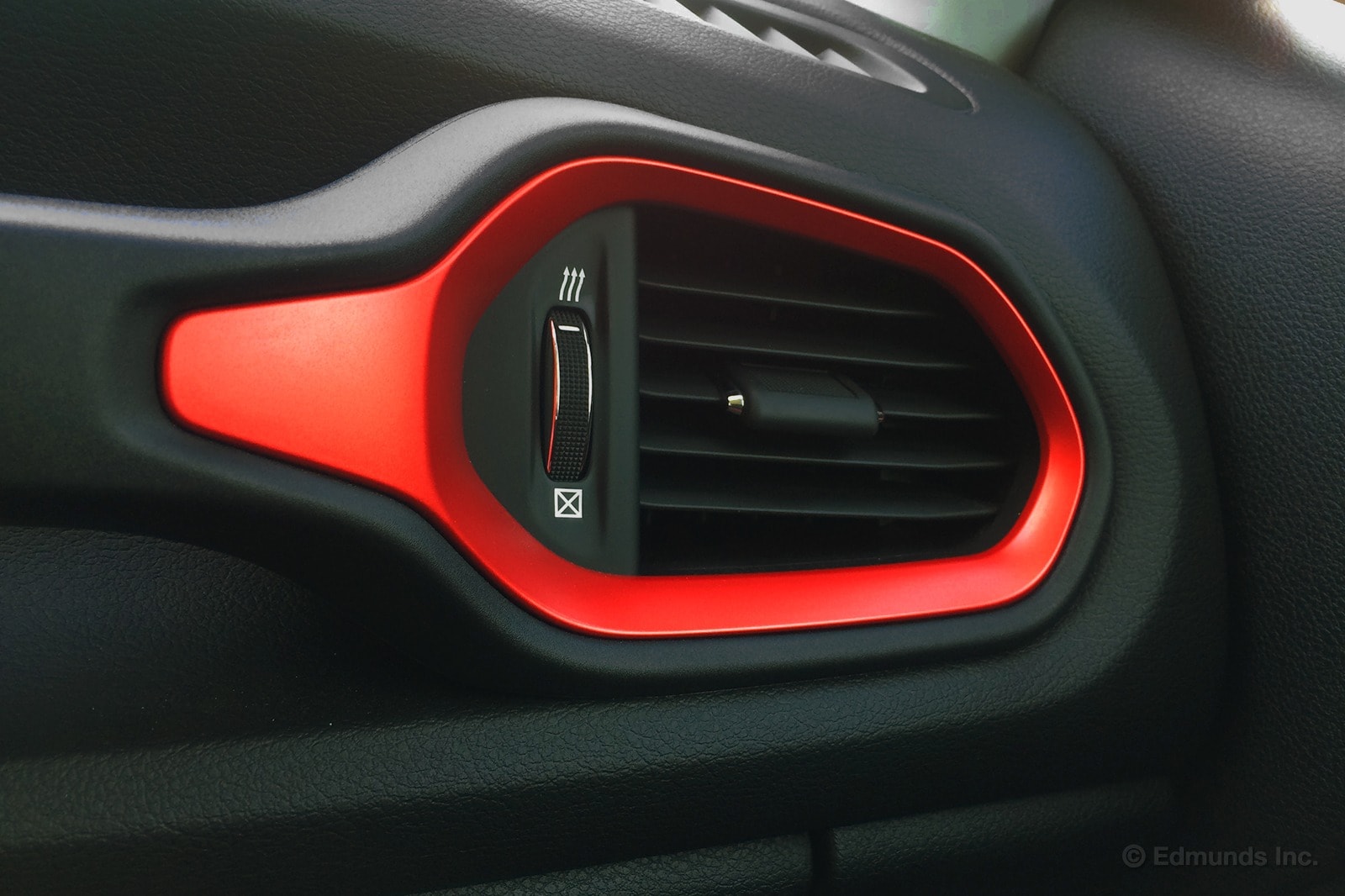
I geek out on materials. In particular, I like descriptions that include CNC-machined, bead-blasted, anodized, carbon composite and so on. And that's why I'm drawn to the interior trim of our new 2015 Jeep Renegade Trailhawk.
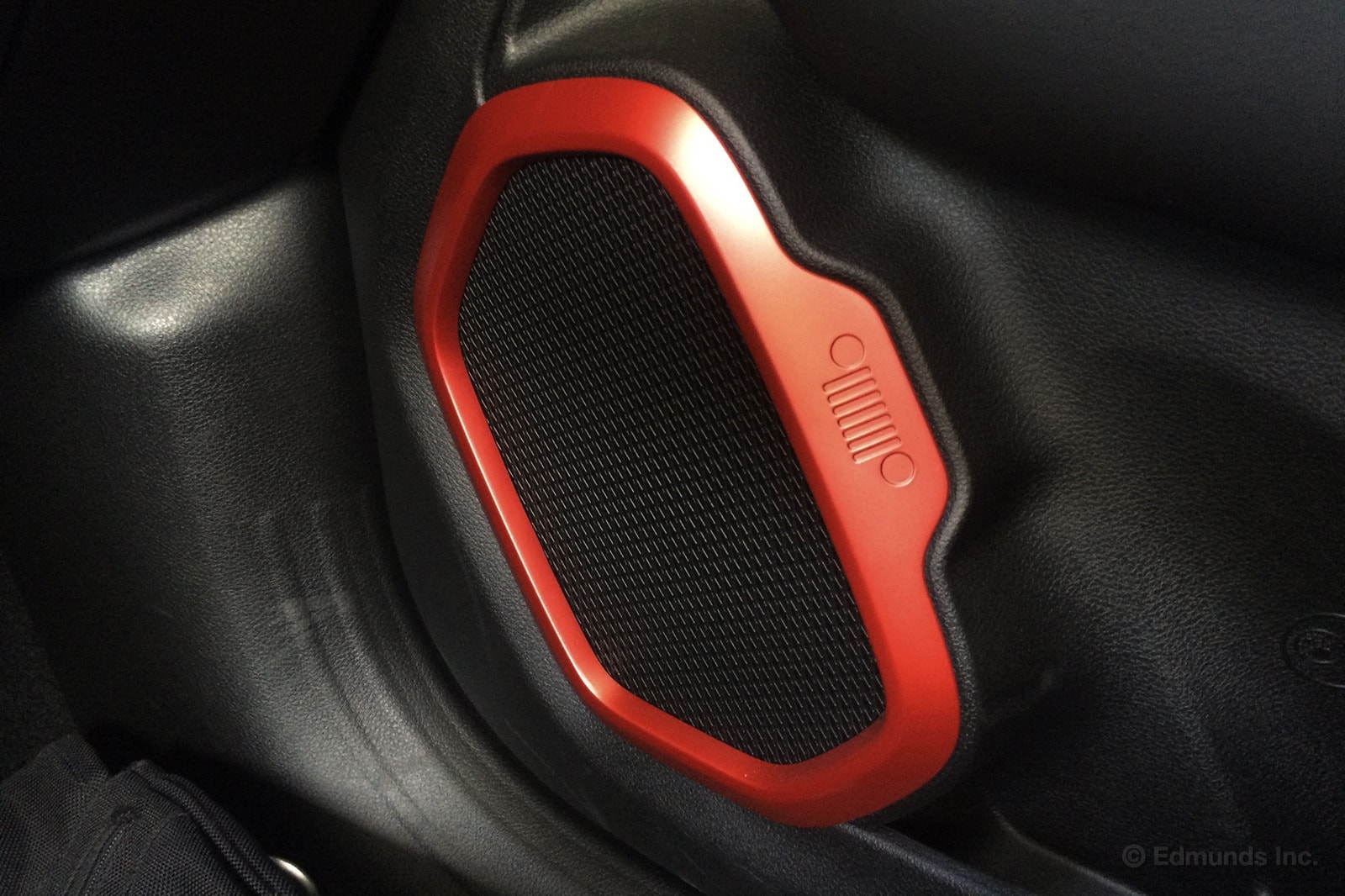
The side air vents, gear selector surround and cupholders all have this attractive red treatment. It has the look of a semi-gloss anodized aluminum. I know it's only painted plastic, but man, does it liven up the interior.
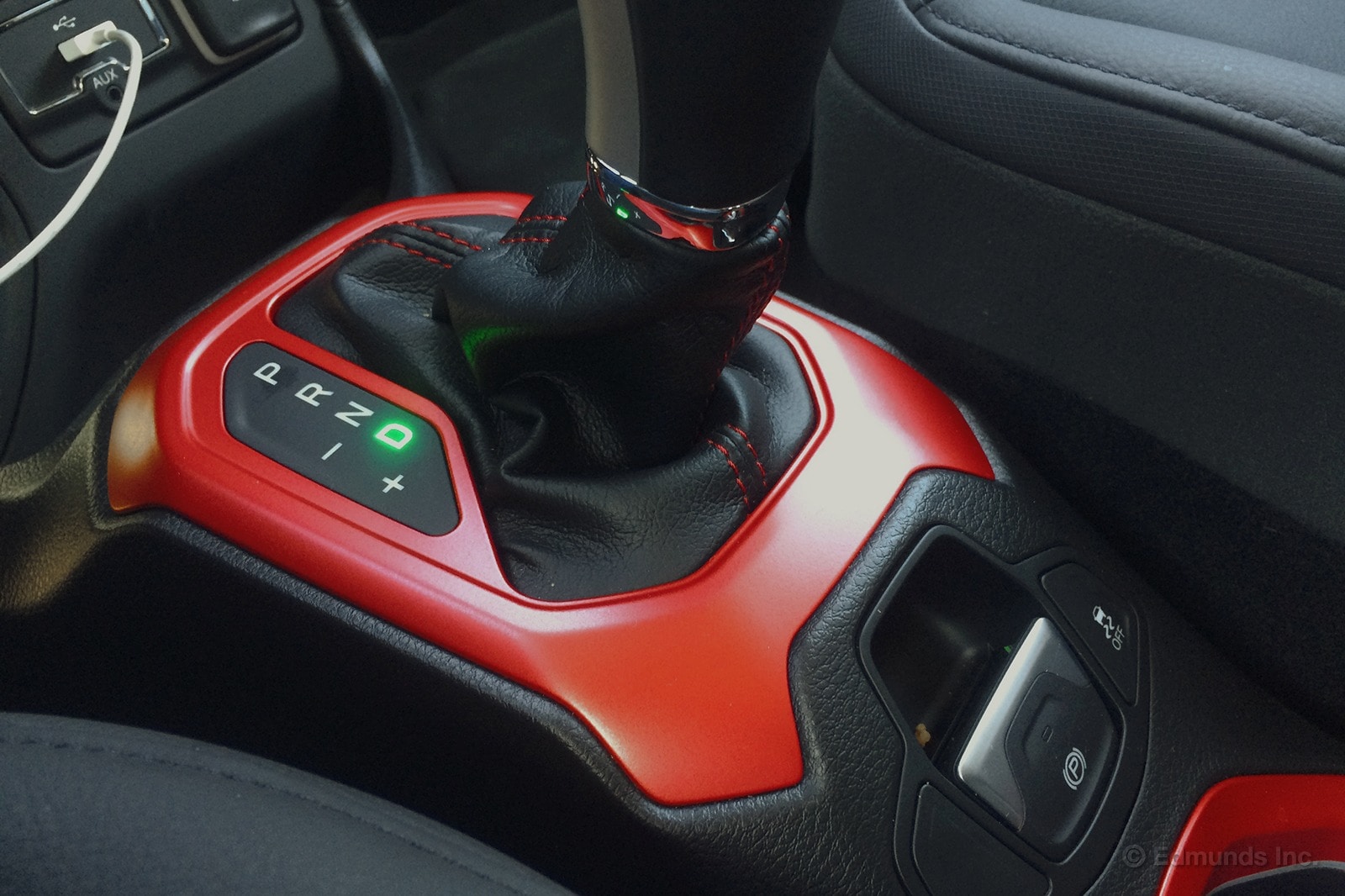
Thankfully, these treatments aren't on elements that are frequently touched, so you get to keep believing they're not just plastic. Plus, they won't develop scratches or signs of wear over time. That might explain why the shifter knob is still silver. Then again, had Jeep gone with gold for the shifter, it would've had a distinct Iron Man vibe.
What do you say? Stupid or cool?
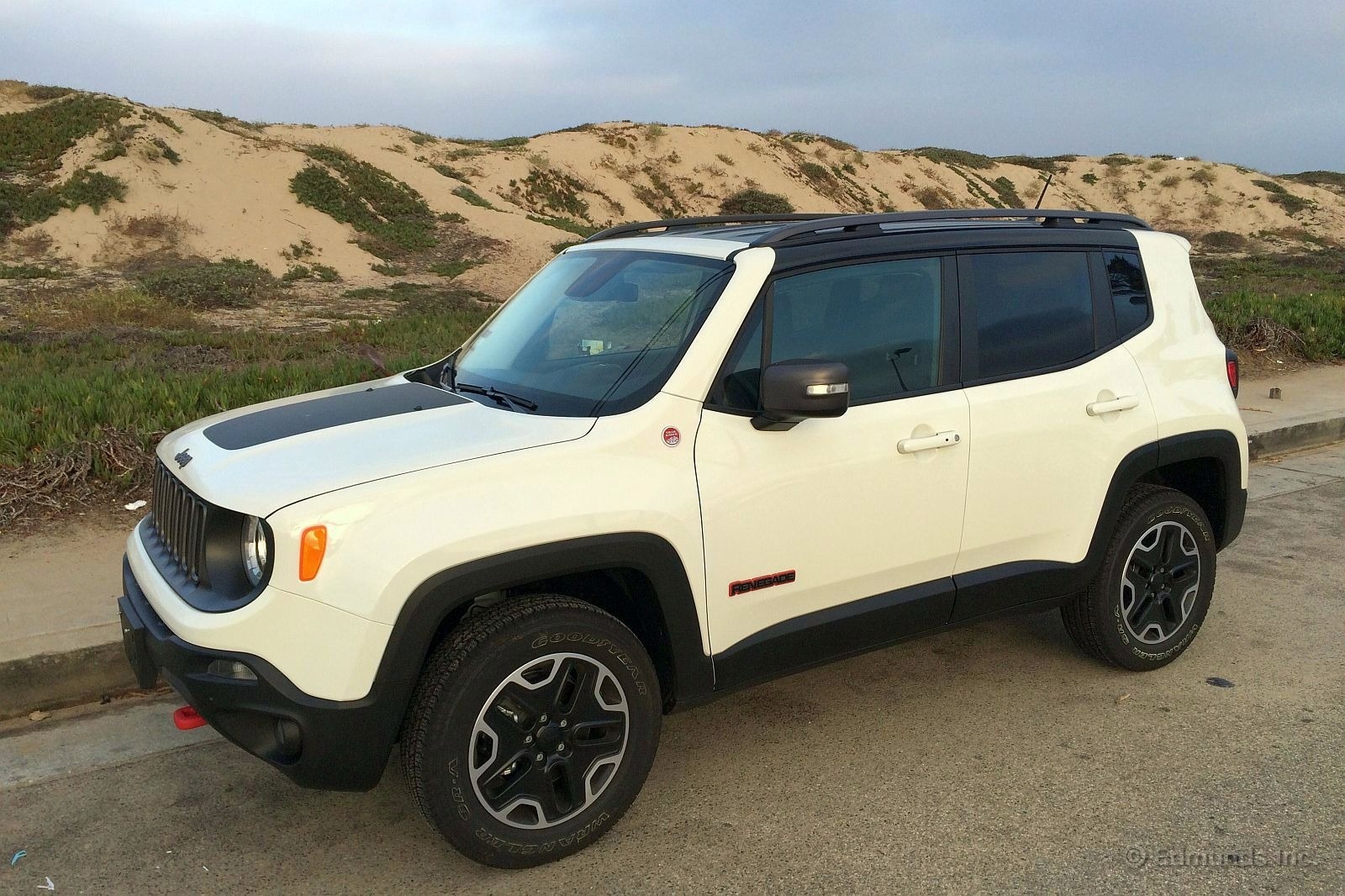
Our new 2015 Jeep Renegade is not the first one I've driven. We had a pre-production loaner in for a look about three months ago. A few things about that early model bugged me, specifically the ride. It felt stiff-legged and sproingy, as if up on tiptoes. It wasn't as settled as I'd have liked.
I'm glad to say our production Trailhawk has a calmer demeanor. I'm not quite sure if the suspension is actually softer — it may or may not have different spring rates — but it sure does breathe better.
At the risk of treading onto technical ground, the damping seems to be somewhat more relaxed in compression, and I think I detect a better balance between compression and rebound. This sort of difference would result from an alteration to the internal valving of the struts and shocks, a different tune.
New vehicles, particularly all-new models like the Renegade, go through a lot of last-minute tweaks as the start of production draws near. It isn't unheard of for certain specifications to get changed between pilot-production — the source of early press, marketing and other sample vehicles — and full-scale production.
Suspension settings typically get locked down fairly early, but 11th-hour tuning changes are not out of the question. But that's not the only way it can go. I have personally been involved in situations where the damper spec was fine, but the supplier goofed up the trial build. Pilot-production exists to sort this stuff out before dealer shipments begin in earnest.
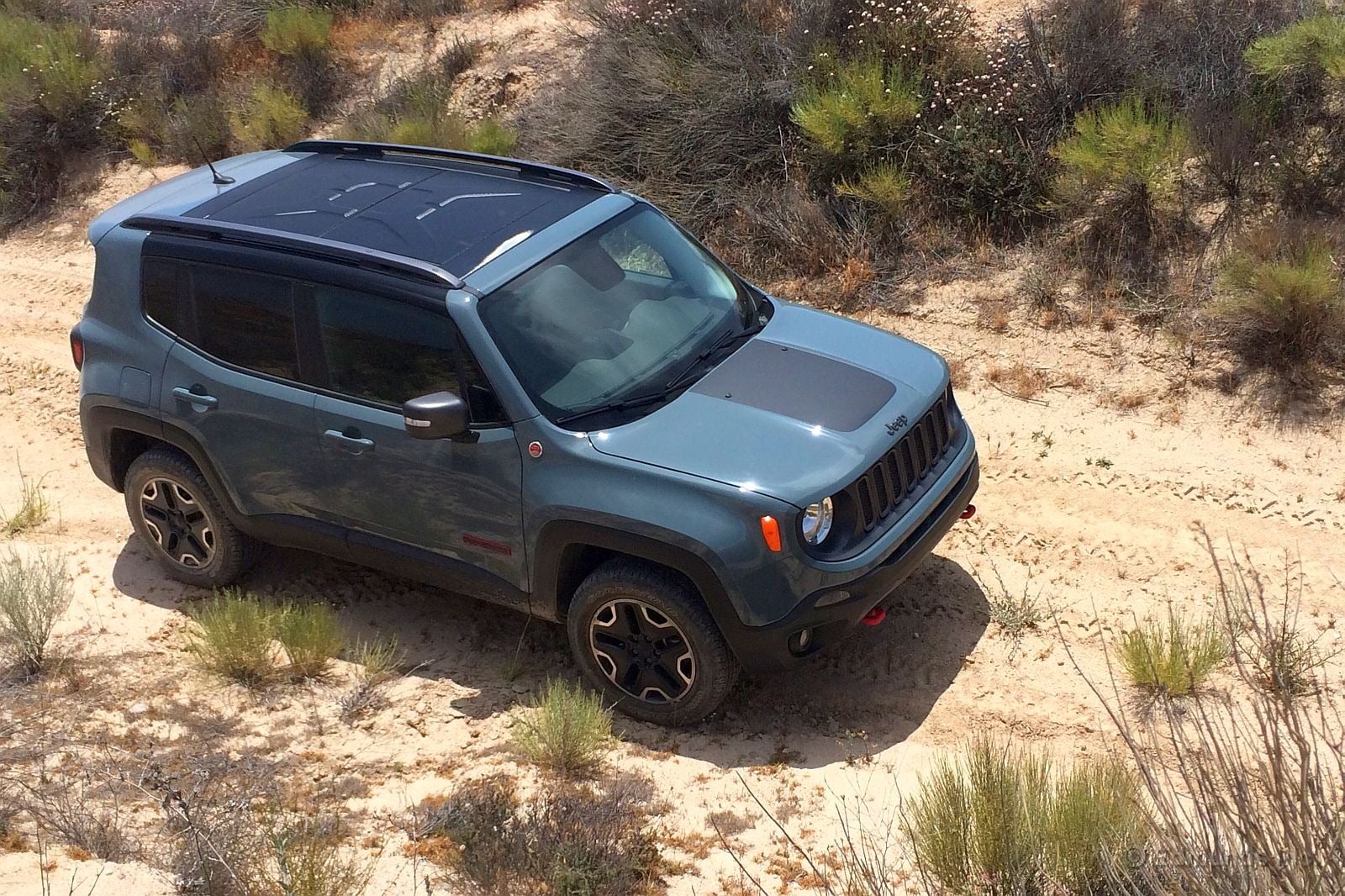
The other irritant was the pre-production Renegade's My Sky removable roof panels. I wasn't a fan. There isn't a surplus of cargo room inside a Renegade to begin with, and it seemed to me those roof panels would have to stay at home if you wanted to drive around with great big holes in your roof.
This isn't a flaw, per se. But it is an option, and I'm happy we didn't go there when we laid down money for our very own Jeep Renegade Trailhawk. Our Trailhawk enjoys a fully intact roof and a lower price tag.
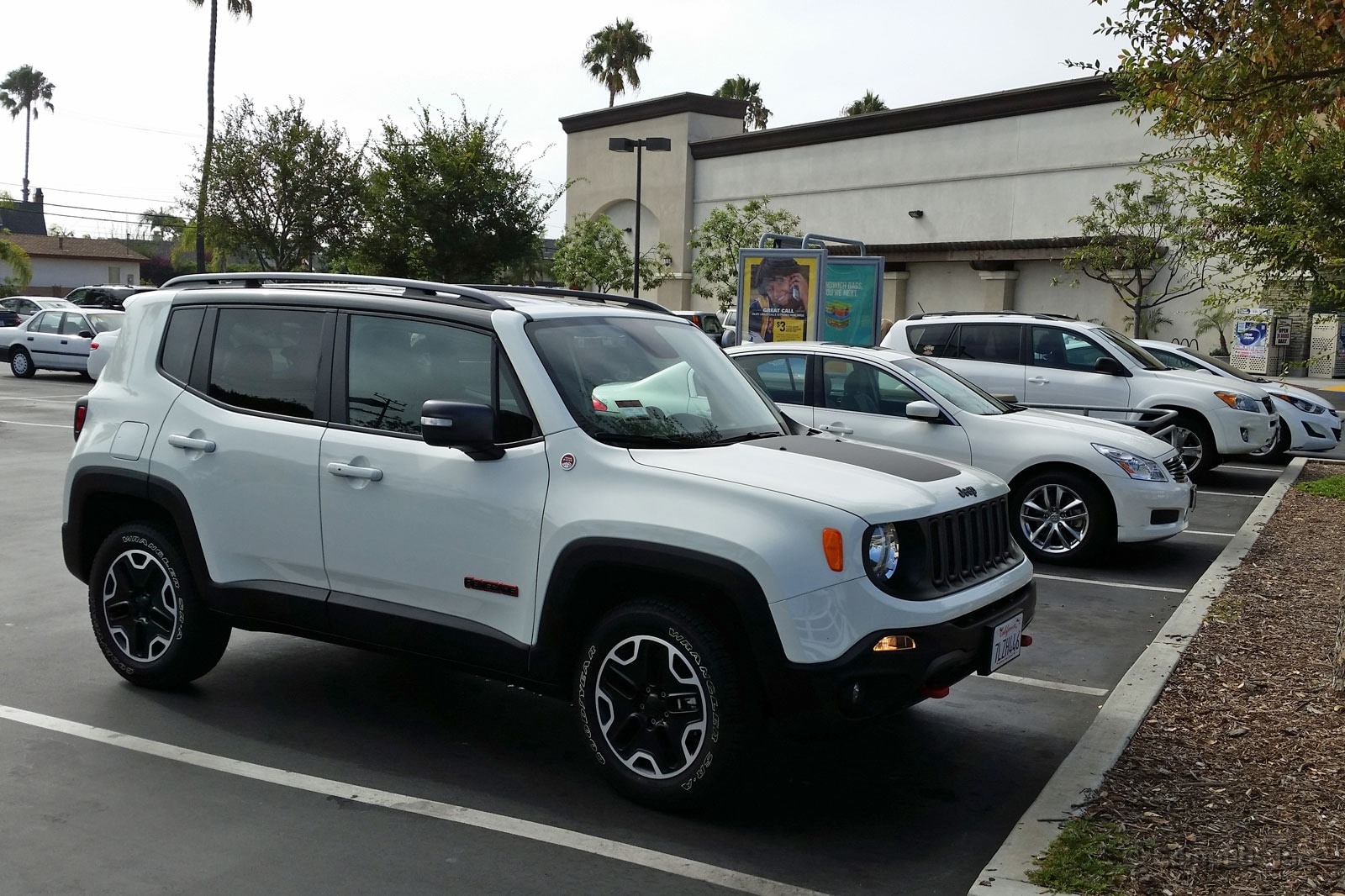
Let's be clear: I'm never going off-roading. At least, not intentionally.
So my days behind the wheel of our new 2015 Jeep Renegade Trailhawk are largely spent the same way as most of my time is away from Edmunds: dropping off kids and dry-cleaning, picking up kids and groceries, sitting in freeway traffic, sitting in the passenger seat when I toss my husband the keys — pretty typical stuff for a 40-year-old woman.
Although I don't dislike driving the new Renegade, it does make me feel like a hipster imposter. The exterior says, "I'm young, I'm unique," even in white paint. Adding the orange details only emphasizes its position. By merely parking it in the lot of my local supermarket, I feel like I'm devaluing its Jeep lineage.
The sporty Renegade deserves a youthful brand ambassador. And I am not it.
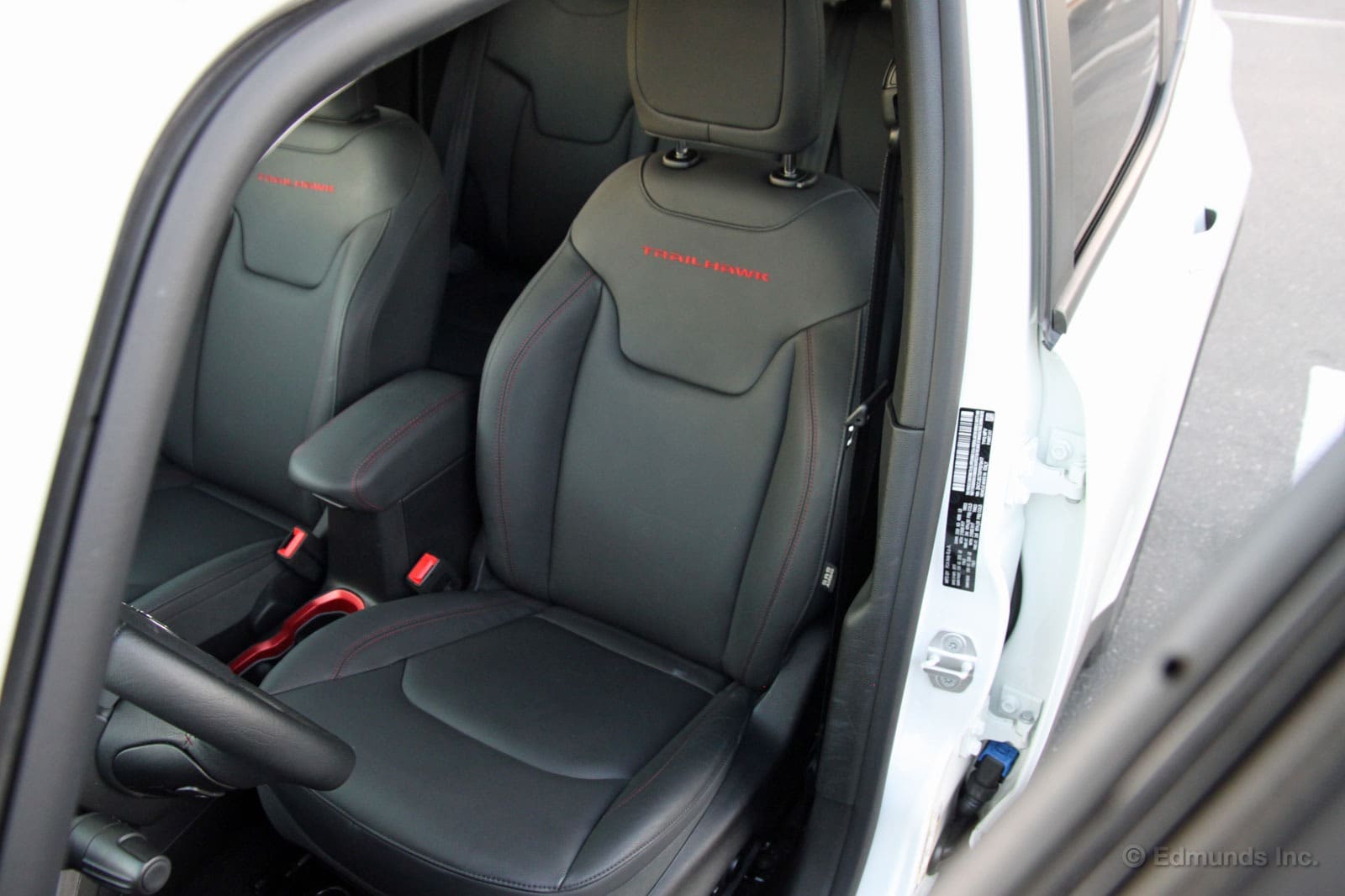
Are the seats in our 2015 Jeep Renegade Trailhawk any better because they have cool stitching on them? Certainly not. Thankfully, they're pretty good anyway.
Eight-way adjustability helps, yet these seats also have firm cushions and an excellent shape. I've put in some decent time behind the wheel and have yet to get restless legs or a numb backside. There's also plenty of adjustability for my 6'2" frame.
This shouldn't be an issue, but other editors have noted a distinct lack of legroom in one of the Renegade's main competitors, the Honda HR-V. Combined with the tilt-and-telescoping steering wheel, the Renegade's power driver's seat (an option on all but the base Sport) makes it easy to find a comfortable driving position. I still don't love the view over the long hood, but the right driving position makes up for it.

Simple, easy-to-read gauges shouldn't be a reason to pat our 2015 Jeep Renegade Trailhawk on the back. All vehicles should be blessed with such dials. But in this era of jamming as much info as possible into small spaces, the instrument panel in this Jeep is a welcome sight.
The analog dials are perfect: Big, simple, uncluttered. Jeep even went the extra creative mile with the mud splash redline on the tachometer. The rest of the panel is electronic but the important stuff like engine temperature and fuel get their own dedicated spots.
Need more info? You can scroll through all kinds of stuff in the center display using the buttons on the steering wheel. It's a useful setup that allows you to simplify things with basic information or show the transmission fluid temperature should the need arise. Not a bad layout for a vehicle in this class.
Rear-Facing Convertible Car Seat Fits, But Forces Passenger to the Back
"Are people in our situation really shopping for entry-level, subcompact crossover SUVs?" asked my better half as we were driving in the long-term 2015 Jeep Renegade.
"Yes," I answered.
He asked the question because our family of three barely fits in the Jeep Renegade. Then he made the argument that the tiny crossover class (Renegade, Chevy Trax, Honda HR-V, Mazda CX-3 and Nissan Juke) really targets single people and childless couples. He's probably right, but I can't be the only person interested in this vehicle class.
My interest in miniature SUVs is narrow, by the way. I just like the idea of an affordable new vehicle with raised ground clearance, because now that I'm a parent, I'm always on the verge of throwing out my back. Not bending is a great thing.
So I installed my daughter's enormous rear-facing convertible car seat in the Renegade. She was content.

But there's no room to spare in the front-passenger seat, so the non-driving parent always had to ride in the backseat. There's room for that, but if you combine a 5-foot-10-inch driver and a 5-foot-9-inch passenger, you'll have to negotiate the legroom situation. Most likely, the driver seat will need to come forward a bit on its seat track.
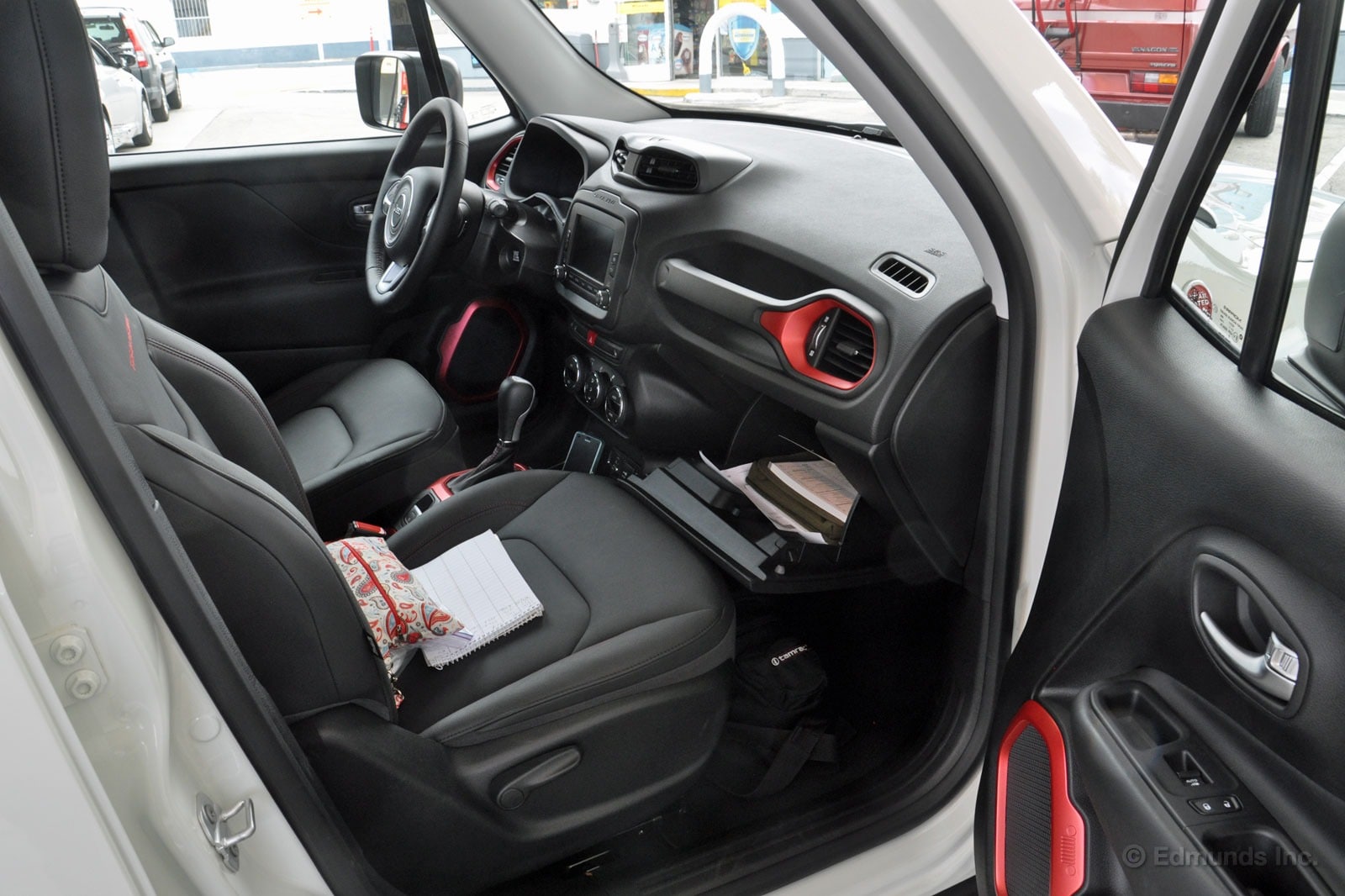

Because of the total inability to use the front-passenger seat, I would eliminate the Renegade from contention and turn my attention to the Jeep Cherokee, which is comparatively roomy. But for families in which the adults are shorter, this Jeep could certainly work and it has some nice conveniences.
For example, the lower anchors (LATCH) are well marked to minimize fumbling in dimly lit garages.
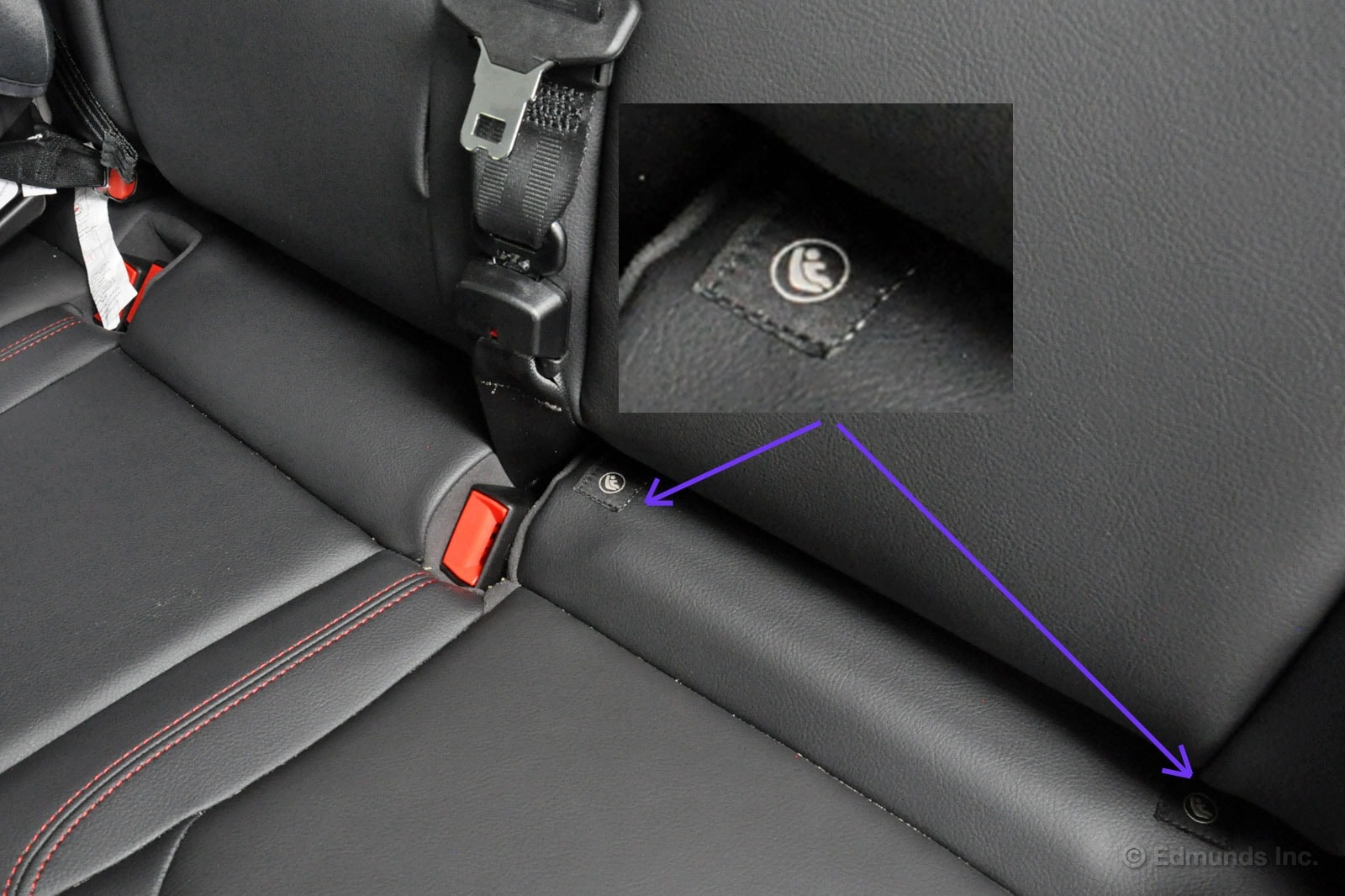
Further, although the rear door openings are narrow due to the Renegade's short length, the doors themselves do open to a nearly 90-degree angle to facilitate loading of a large car seat.
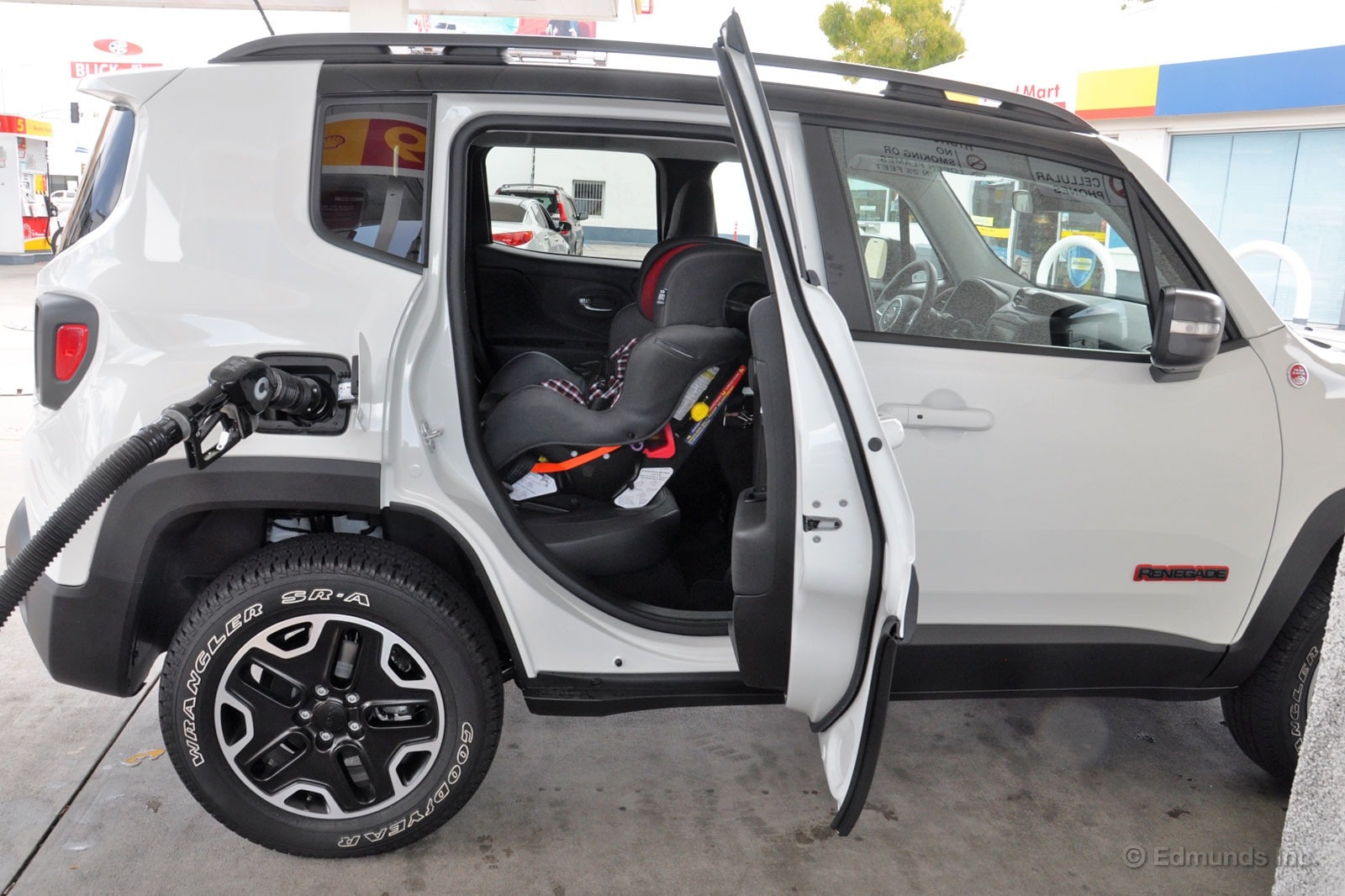
In this photo, you can also see that my car seat obstructs very little of the glass area on the rear door. Mostly, this is due to the reality that the Jeep's rear doors have very little glass to obstruct. Nevertheless, I consider this a plus for the Renegade, because this particular car seat creates massive blind spots in other vehicles I've driven, including my own Mazda 5.
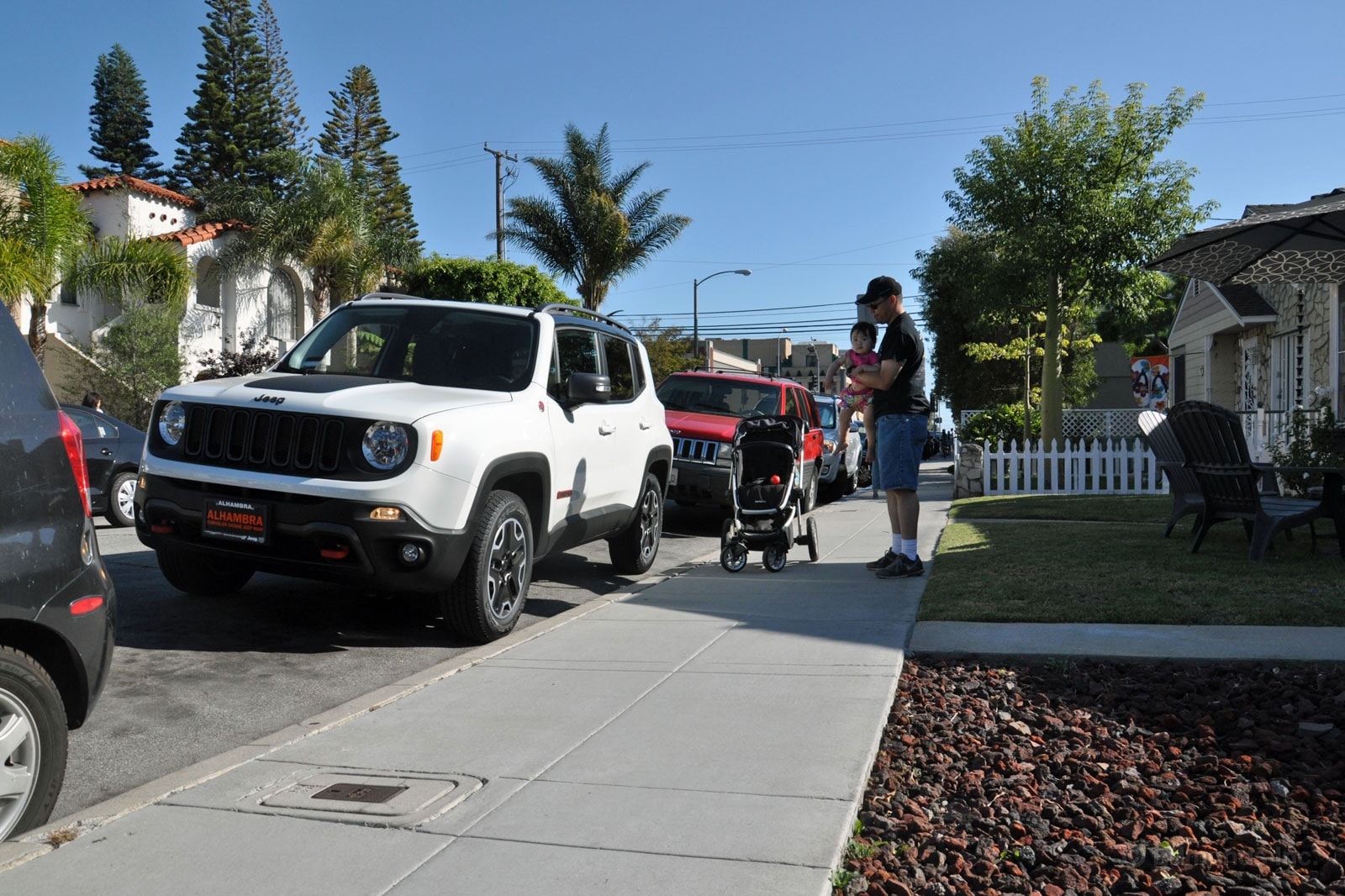
Although I initially liked the idea of using our long-term 2015 Jeep Renegade as a family runabout, after a long weekend with it, I was ready to the hand back the key.
The reason?
Our Trailhawk version has an overly stiff ride.
Dan Edmunds has written that our production Renegade Trailhawk is actually more relaxed and less stiff-legged than the pre-production Renegades he drove earlier this year. Nevertheless, our long-term Jeep gives you a pretty good pounding over our concrete-slab Southern California. This is especially true if you're riding in the backseat.
Fortunately, there's an easy solution to this problem. I can just go and buy a Jeep Renegade Latitude, which as we found in our recent road test, has a softer, more compliant ride while still maintaining respectable off-road ability for the one day out of the year you choose to use it.

The mission was simple. Small dog with penchant for whining has only been in a car for an hour at a time. Small dog will be on massive day-long drive to Oregon in two weeks. For everyone's sanity, a trip of between one hour and 12 was in order.
Mr. Riswick, lay in a course for Julian, California, and engage at whatever speed our 2015 Jeep Renegade Trailhawk manages to get to (you see, it's quite slow. Also, I've been watching way too much Star Trek recently).
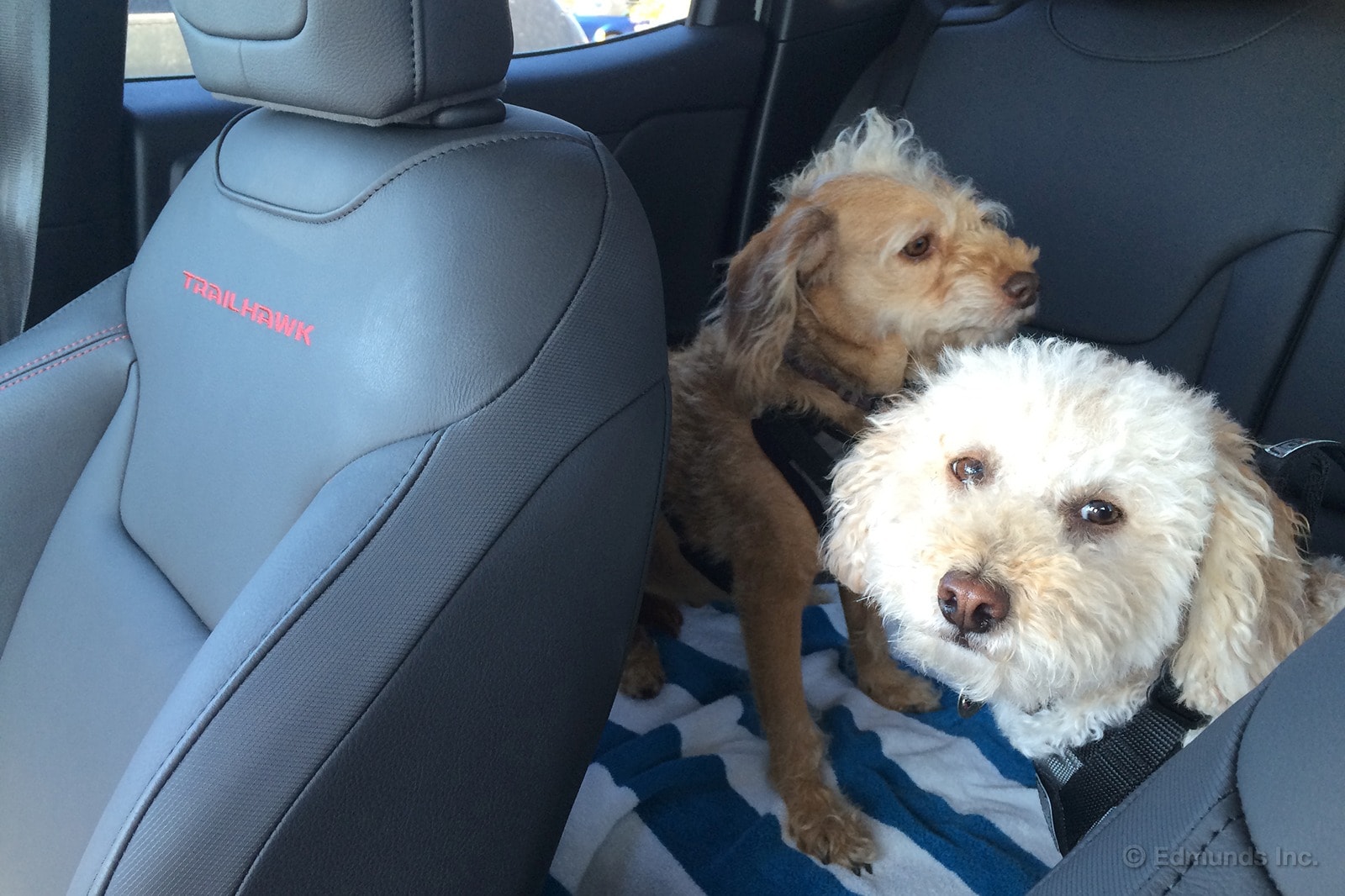
Nellie, the white one, is generally unamused. Maggie, the Mohawked one, stoically awaits the journey.
Besides car-breaking a dog, this would indeed be my first opportunity to take a road trip of some sort in our Renegade, a car I'm quite keen on after doing both our Trailhawk video review and Latitude road test. Apart from its sluggish acceleration, accompanying recalcitrant transmission and utter dearth of cargo volume, I very much enjoyed Jeep's new micro-ute. Would our new long-termer maintain that affection?
For the most part, yes. Both my wife and I found our long-termer's leather seats extremely hard, and although they were supportive during our day in the saddle, we both preferred the comfier cloth-lined seats in the previous short termers (which aesthetically benefit from a cool topographical pattern in the Trailhawk).
I also agree with Dan Edmunds that our long-termer's ride is better than the original Trailhawk we had in, but I stand by my own determination that the Latitude's ride is less busy, you feel fewer bumps, and is generally more pleasant.
Emphasis on more pleasant, however, as we easily could've ventured even further in the Renegade without complaint. Road and wind noise are certainly on the upper end of the spectrum, but our cabin is certainly much quieter than the short-term Trailhawk that included the MySky removable roof panels. I definitely do not recommend that option, as besides creating more wind noise when in place, they cause horrible buffeting when removed at speeds north of 40 mph.
I also once again found the little Jeep to be surprisingly adept at handling winding roads, in this case the rolling terrain of north San Diego county. The steering is precise, the suspension nicely controlled, and for an SUV, it can actually be described as agile. I definitely enjoy driving the Renegade more than the bigger, more expensive Cherokee (I'm also more comfortable in its driver seat, but that's for another post).
Then again, the Cherokee's V6 really would do wonders for the Renegade, as its 2.4-liter liter is thoroughly unimpressive given its competitive-looking specs. It apparently has 180 horses, but it seems like some have wandered out of the barn. Around town, it manages to feel rather punchy, but on the highway or when making its way up grades, it's a slug.
Not helping things is the nine-speed automatic transmission that's too slow to downshift, something that the mechanically-related Fiat 500X's Sport mode remedies to some extent.
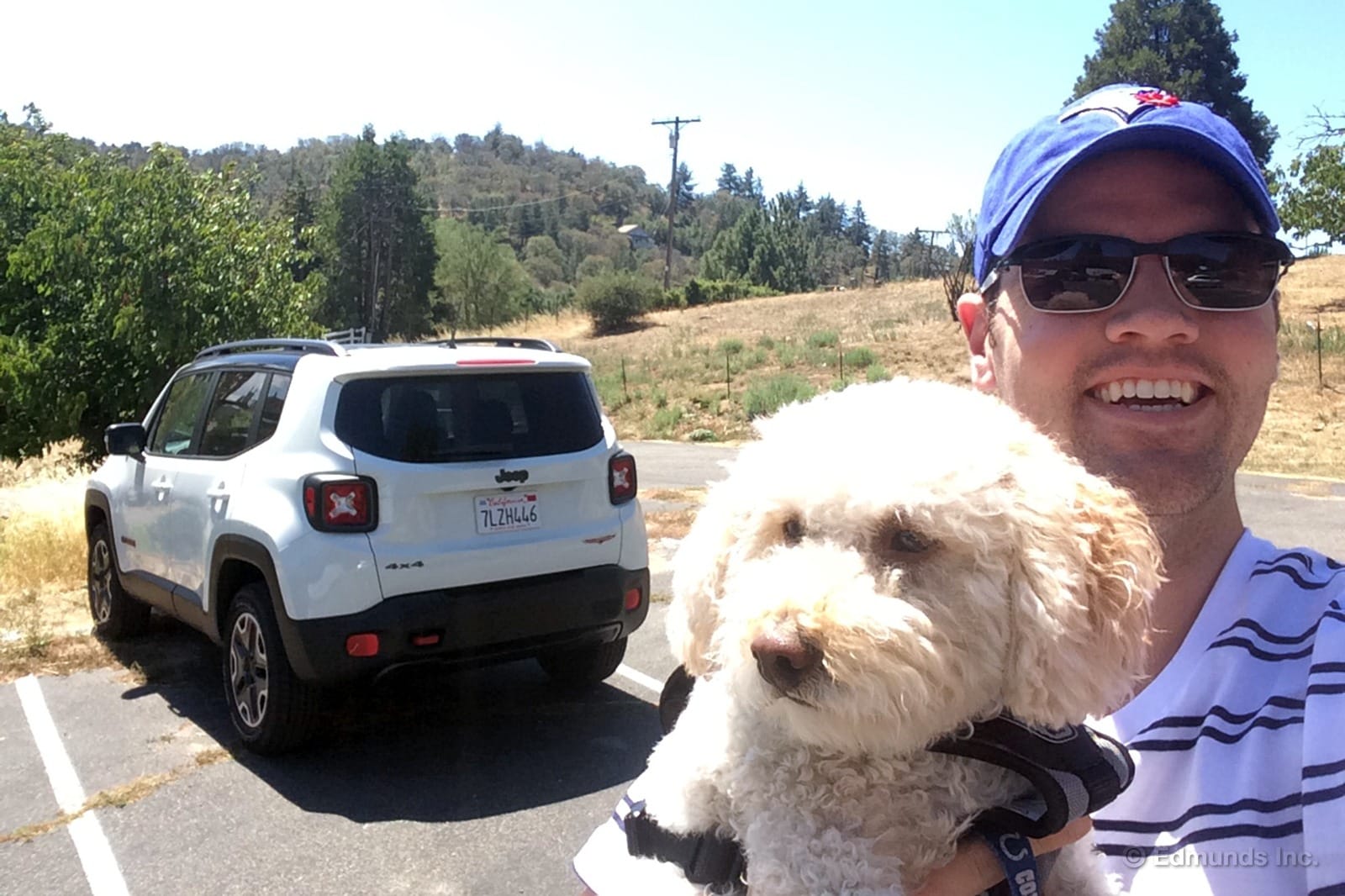
Nellie made it to scorching-hot Julian with minimal whining. The same could not be said of her behavior at Bailey BBQ. "Yes, we get it, you want some brisket."
Inevitably, it's the lack of power that would make me think twice about taking the Renegade on a road trip of considerable distance. Its minuscule cargo area would also be a concern, but that could be remedied by mounting our Thule cargo box (featured in our Ski Vacation Face-Off) onto the roof.
And as for our mission, we were only briefly tempted to hoist Nellie onto the roof. There was some whining, but the Renegade's stereo managed to take care of that. Her next test will be much greater.
I'm sure our staff will have plenty of much greater tests in store for the Renegade as well.
Scores High Among Crossovers on Ramp Travel Index

The 2015 Jeep Renegade Trailhawk is the Trail-Rated version of this new sub-compact crossover. Among all of them, it's the model that someone who might actually travel off-road is likely to buy.
The Renegade Trailhawk has an Active Drive Low system that holds the lowest gear and a Selec-Terrain dial that allows the driver to adjust the traction control to suit conditions. It's fitted with knobbier all-terrain tires, and its 8.7 inches of ground clearance, 30.5 degrees of approach angle, and 34.3 degrees of departure angle are significantly more aggressive than what you'll find on any non-Trailhawk Renegade 4x4.
Ramp Travel Index (RTI) isn't typically found on a specification sheet, but this measure of maximum suspension articulation is nice to know, too. So we pointed our new Renegade Trailhawk up our home-made RTI ramp to see what's up.
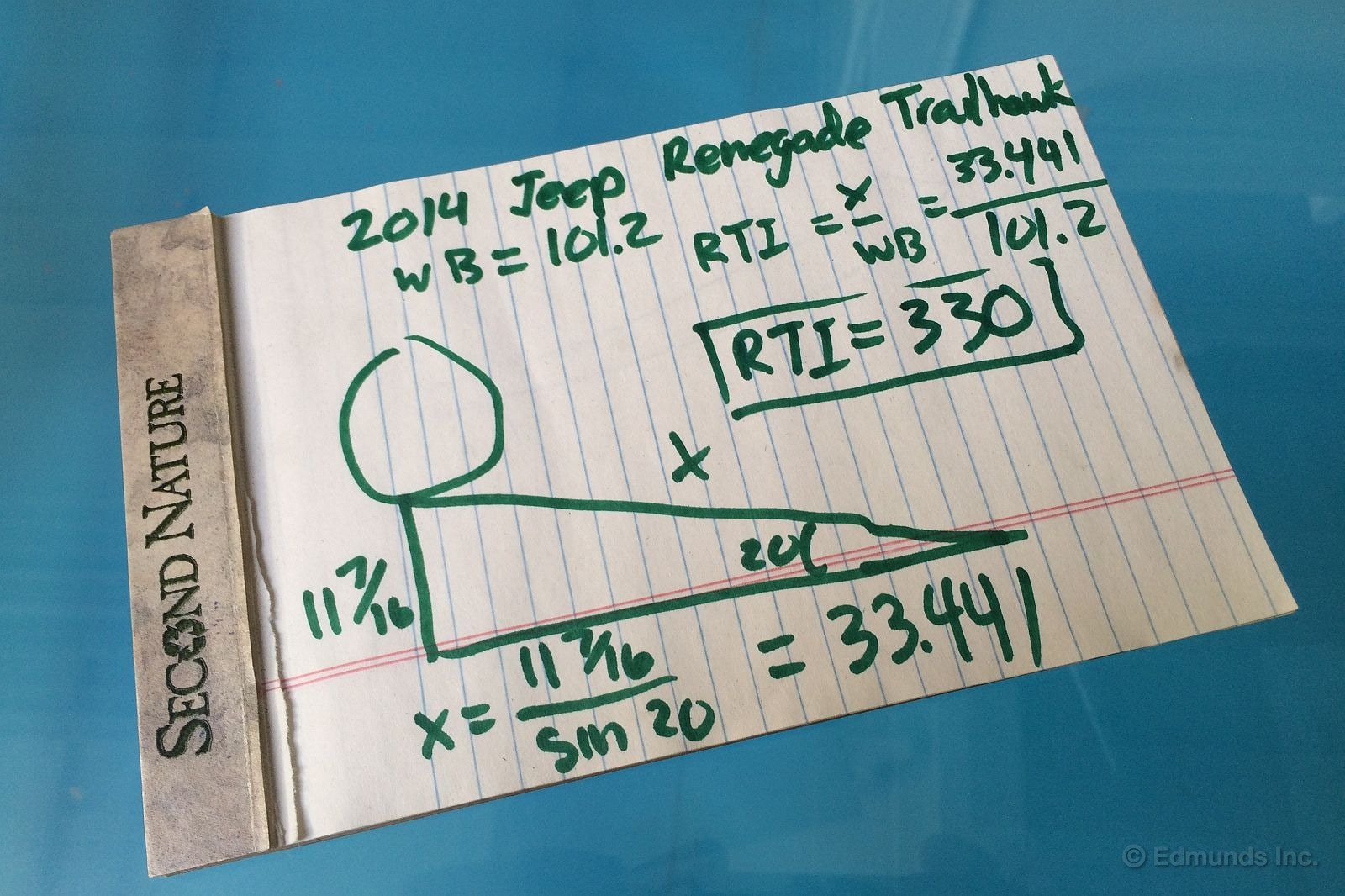
It doesn't look terribly impressive on the ramp, but the Renegade is, after all, a compact crossover with strut-based suspension at all four corners. Compared to the segment, its 330-point performance is pretty strong.
The 2014 Cherokee Trailhawk scored 324 points and the new Land Rover Discovery Sport managed 323 points. The only crossover that's done better is the slightly larger Mazda CX-5, which registered 334 points. But the CX-5 lacks the tires, clearance and traction-control upgrades to maximize that slight advantage.
All three of the above have independent rear suspension, which should stand them in good stead. But they also ride on wheelbases that are five to six inches longer than a Renegade, which cancels that out. The Range Rover Evoque has struts all around like a Renegade, but it scored just 300 points.
Considering its car-based underpinnings, the 330-point RTI score of the Renegade Trailhawk is not too shabby.
Hot or Cold, You Want Remote Ignition
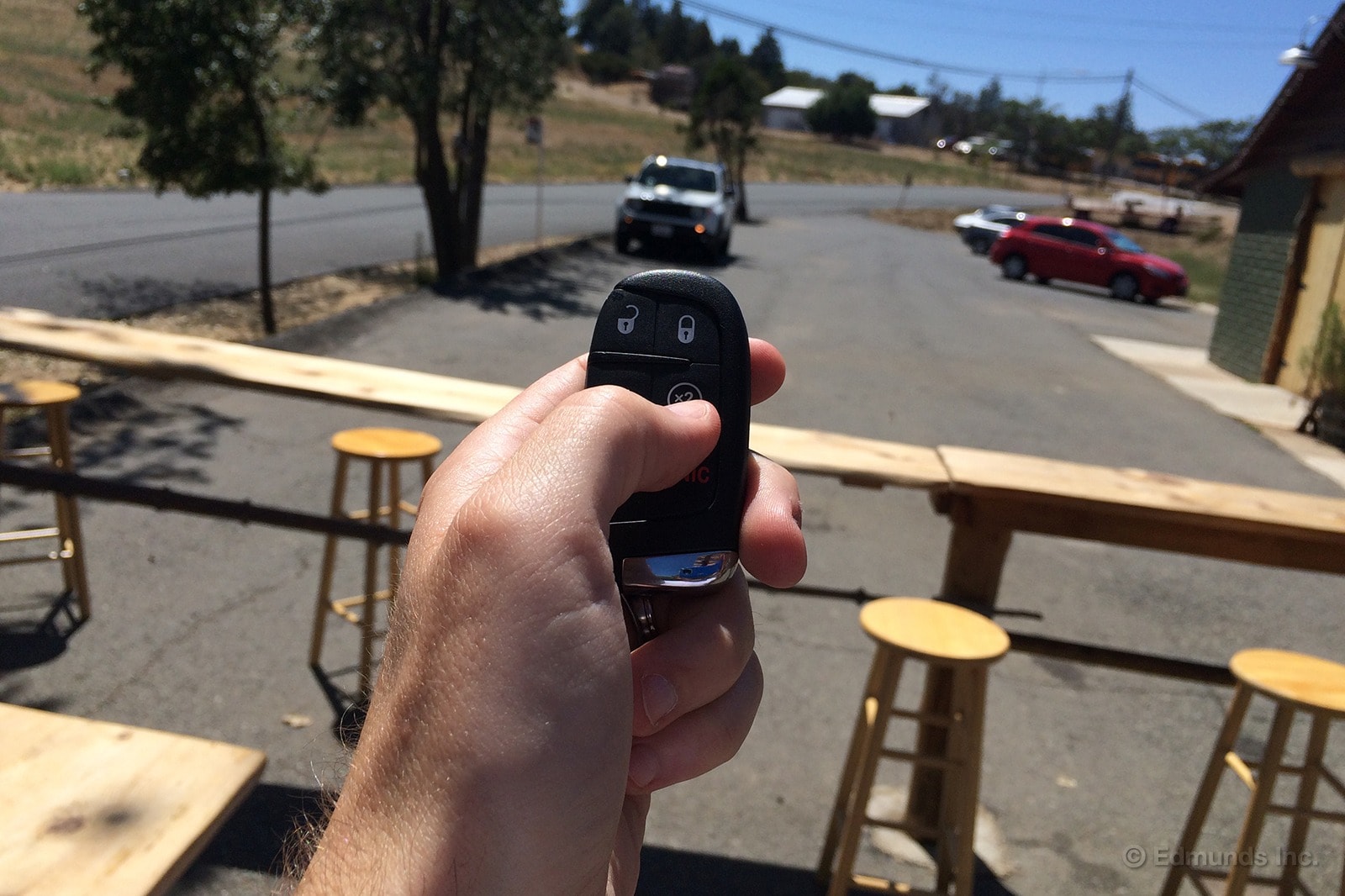
Back in January, I discovered how wonderful remote ignition can be in cold weather. Well, turns out, it's pretty great in scorching hot weather as well. During our day trip in the 2015 Jeep Renegade Trailhawk to Julian, California, temperatures were pushing 100 degrees. With two dogs in tow and no rear air vents in the Renegade, I figured turning on the car early to let it cool down a bit was a good idea.
Sure, we'd be wasting gas and yada yada yada, but my general eco-friendliness elsewhere in life will surely make up for it.
Sure enough, after a few minutes, we hopped into a not oven-like car. Remote ignition really is a handy feature, be it hot or cold.
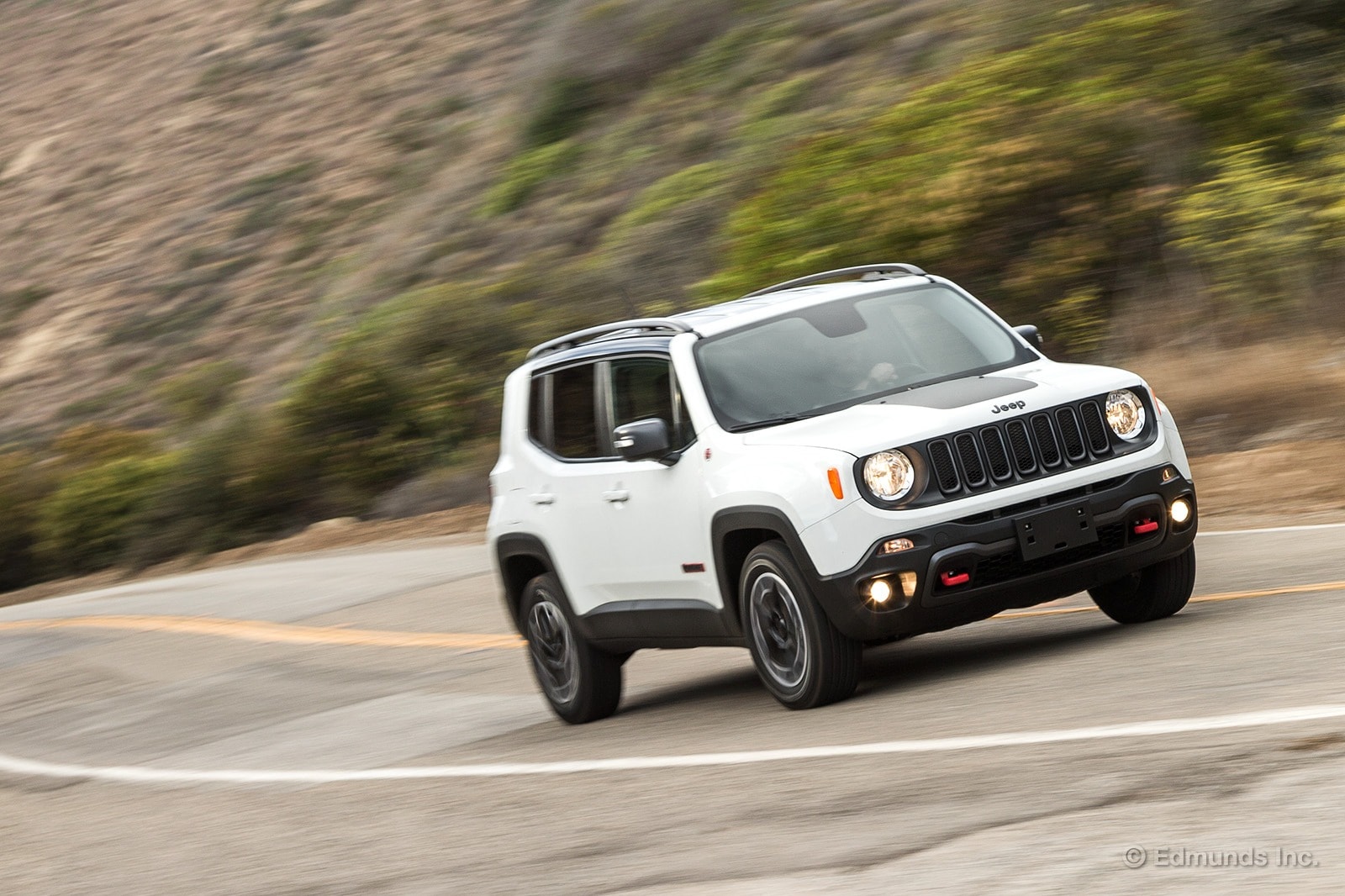
A test track is not the place to really put our 2015 Jeep Renegade Trailhawk through the paces. What we really need is a nice off-road course where we can test the Renegade's four-wheel drive capabilities.
That time will come. For now, we put our Renegade through the same trials as every other Edmunds' long-term test vehicle. Read on to see how the stubby 4x4 measured up on the tarmac.
Vehicle: 2015 Jeep Renegade Trailhawk
Odometer: 1,461
Date: 8/18/2015
Driver: Carlos Lago
Price: $31,495
Specifications:
Drive Type: Four-Wheel Drive
Transmission Type: Nine-speed automatic
Engine Type: Inline four-cylinder
Displacement (cc/cu-in): 2,360/144
Redline (rpm): 6500
Horsepower (hp @ rpm): 180 @ 6,400
Torque (lb-ft @ rpm): 175 @ 3,900
Brake Type (front): 1-piece vented disc with a single piston sliding caliper
Brake Type (rear): 1-piece solid disc with a single piston sliding caliper
Suspension Type (front): MacPherson strut, coil springs, flat front steel cross member, high-strength steel double shell lower control arms
Suspension Type (rear): Chapman strut, high-strength steel links, isolated steel rear cradle
Tire Size (front): P215/65R17 98S
Tire Size (rear): P215/65R17 98S
Tire Brand: Goodyear
Tire Model: Wrangler SR-A
Tire Type: All-season
As-tested Curb Weight (lb): 3,586
Test Results
Acceleration:
0-30 (sec): 3.4 (w/ TC on 3.7)
0-45 (sec): 6.1 (w/ TC on 6.4)
0-60 (sec): 9.9 (w/TC on 10.2)
0-60 with 1-ft Rollout (sec): 9.7 (w/TC on 9.8)
0-75 (sec): 15.6 (w/TC on 16.1)
1/4-Mile (sec @ mph): 17.33 @ 78.1 (w/TC on 17.47 @ 78.1)
Braking:
30-0 (ft): 32
60-0 (ft): 128
Handling:
Slalom (mph): 56.4 (52.7 w/ESC on)
Skid Pad Lateral acceleration (g): 0.74 (0.68 w/ESC on)
RPM @ 70 mph: 1,750
Comments
Acceleration: A short first gear and final drive makes initial acceleration funny: There's a lot of noise but not a lot of movement. Beyond simply applying full throttle, there's little to gain by adjusting traction and stability control settings, holding the brake while applying throttle, or shifting manually. None of these affected acceleration in a significant way. This is not a fast car nor is it an exciting one. But it's difficult to make complaints about the acceleration of a vehicle intended for off-road use. The automatic transmission upshifts at around 6,000 rpm, though the tach may be slow. In manual mode, it holds gears at redline.
Braking: The Renegade exhibits some forward pitch during emergency stops, but it's to be expected with a taller vehicle. Otherwise it has good control and doesn't need steering correction to stay in its lane. Braking power feels consistent, though distances were longer than we'd like, worsening by one- to two-feet with each stop. There's minor ABS sensation, and we experienced no fade or odor after five stops.
Handling:
Slalom: Low limits combined with a bit of roll and an over-aggressive stability control system makes the Renegade difficult to maneuver through the slalom. Doing a quick run is all about flying under the radar of the stability control system. This, again, is neither fast nor fun, but it's not what the Renegade's built to do either.
Skidpad: A super heavy-handed stability control system severely limits the Renegade's cornering abilities. While it doesn't hammer down the brakes, it nearly takes away all throttle control from the driver when it intervenes. When you turn the system off, the Renegade becomes surprisingly playful and easy to control. It pushes and has low limits, but still has some tire squirm that allows you to easily manage the balance with throttle and steering.
Will the Bike Fit?
No doubt you guys have a bunch of burning questions about our 2015 Jeep Renegade Trailhawk.
And I'm sure topping your list is: How difficult is it to stuff a large, full-size suspension 29er mountain bike in the back? Let's get right on it and find out.

Even though the Renegade is a subcompact crossover SUV, my Santa Cruz Tallboy fit in there fairly easily. Of course it required taking the front tire off, but that was expected. My bike's dropper seatpost eased entry, too. I also had to move the front passenger seat forward significantly and angle the seatback in order to clear the rear tire. This pretty much negated any chance of a second person riding in the diminutive Jeep.
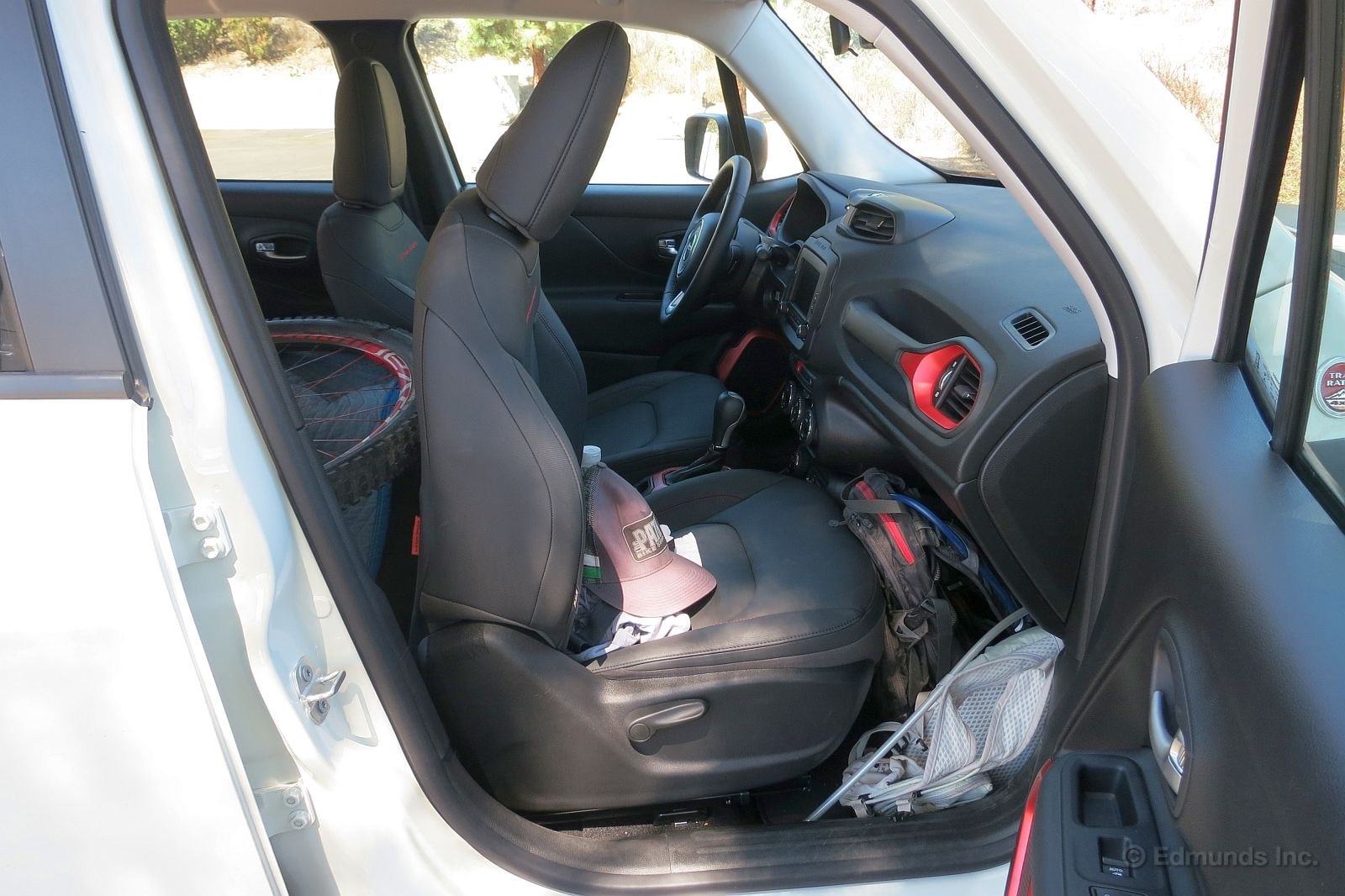
But overall, not a horrible ordeal. And if I enjoyed the actual driving experience of this Jeep more than I do, I wouldn't hesitate to use it for another mountain bike ride.
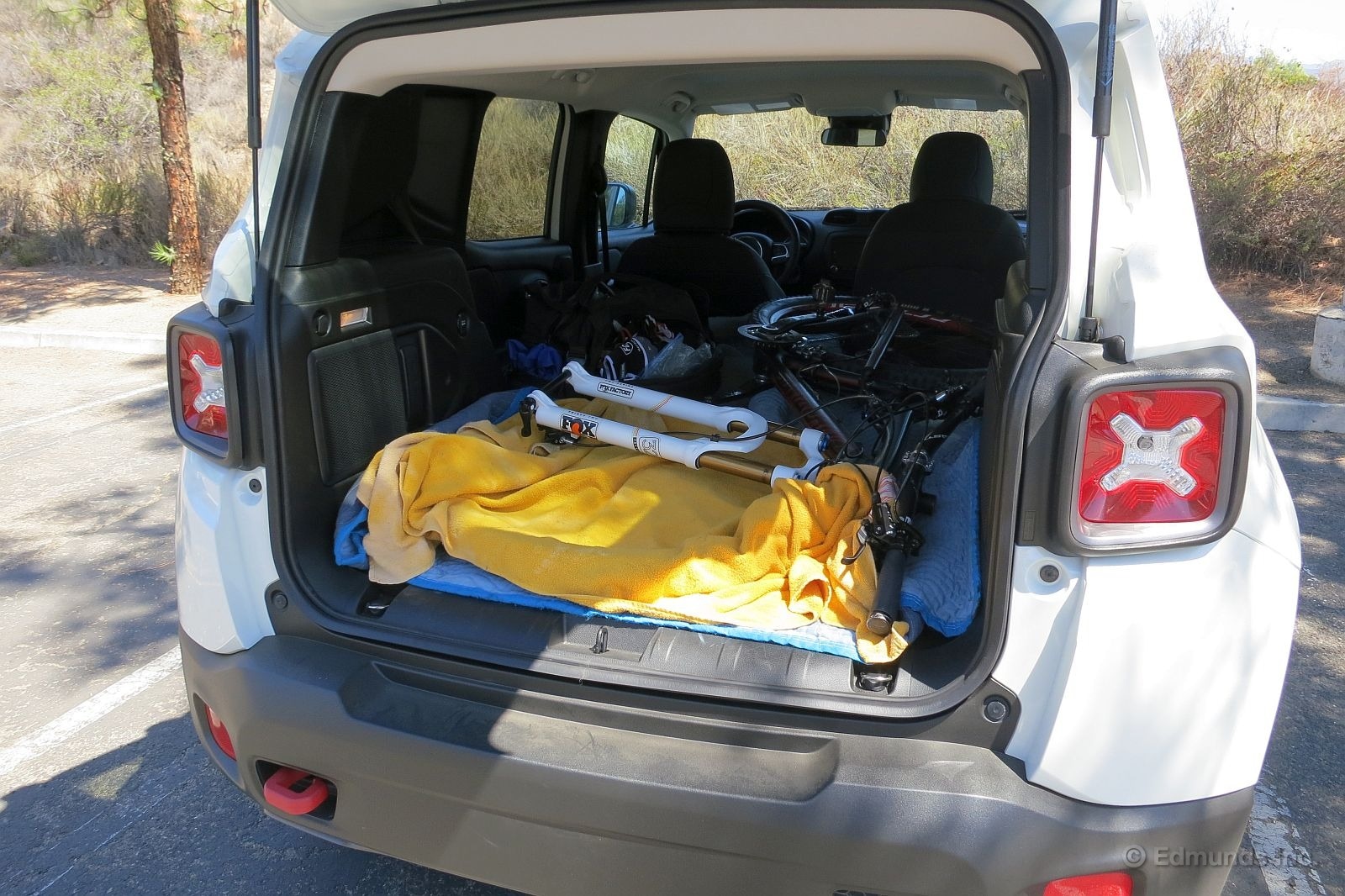
Fuel Economy Update for August — More Efficient With More Miles?
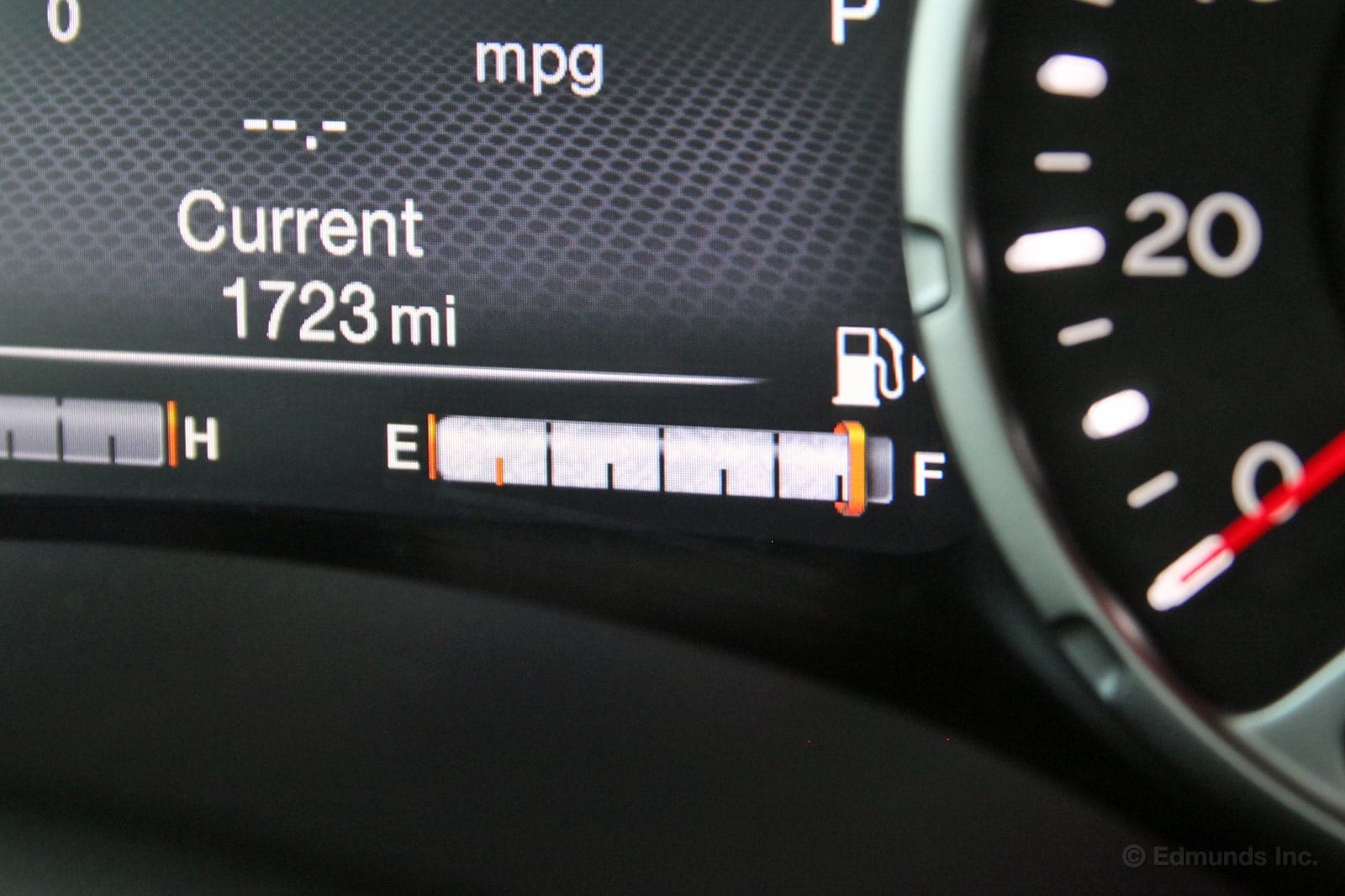
A little more than a month in service, our 2015 Jeep Renegade has already racked up a solid number of miles. Most of the staff likes its combination of interior room, maneuverability and ease of use. The fact that it looks and feels a little different might help, too.
From a mileage standpoint, our Renegade is still well off its EPA numbers. Its overall average of 20.1 miles per gallon isn't even up to its city rating.
Like most cars in our fleet, the Renegade's overall number will start to creep up as the miles pile on, but so far it's not a very miserly subcompact SUV.
On the positive side, this Jeep's interior has impressed most drivers with its eye-catching materials and comfortable ride. It's also able to fit a rear-facing car seat in back if you need that functionality.
There are some off-road adventures in the works for this Jeep in the months ahead along with plenty of commuting, grocery getting and other mundane tasks. We'll see if these weekend trips and everyday chores improve the mileage numbers or keep this Jeep on the low side when it comes to fuel efficiency.
Worst Fill MPG: 16.4
Best Fill MPG: 24.1
Average Lifetime MPG: 20.1
EPA MPG Rating: 24 Combined (21 City/29 Highway)
Best Range: 297.2 miles
Current Odometer: 2,304 miles
Key Fob Malfunctions in Major Way
Midway through my weekend, the lock/unlock feature of the key fob stopped working on our 2015 Jeep Renegade Trailhawk.
A bit of a problem, as locking and unlocking doors is pretty much the main function of the key fob. Pressing the lock button would flash the lights, but it wouldn't do any kind of actual locking.
At first I was pretty put off by the whole thing. I mean, having to reach around to the different doors and lock them myself — the horror!
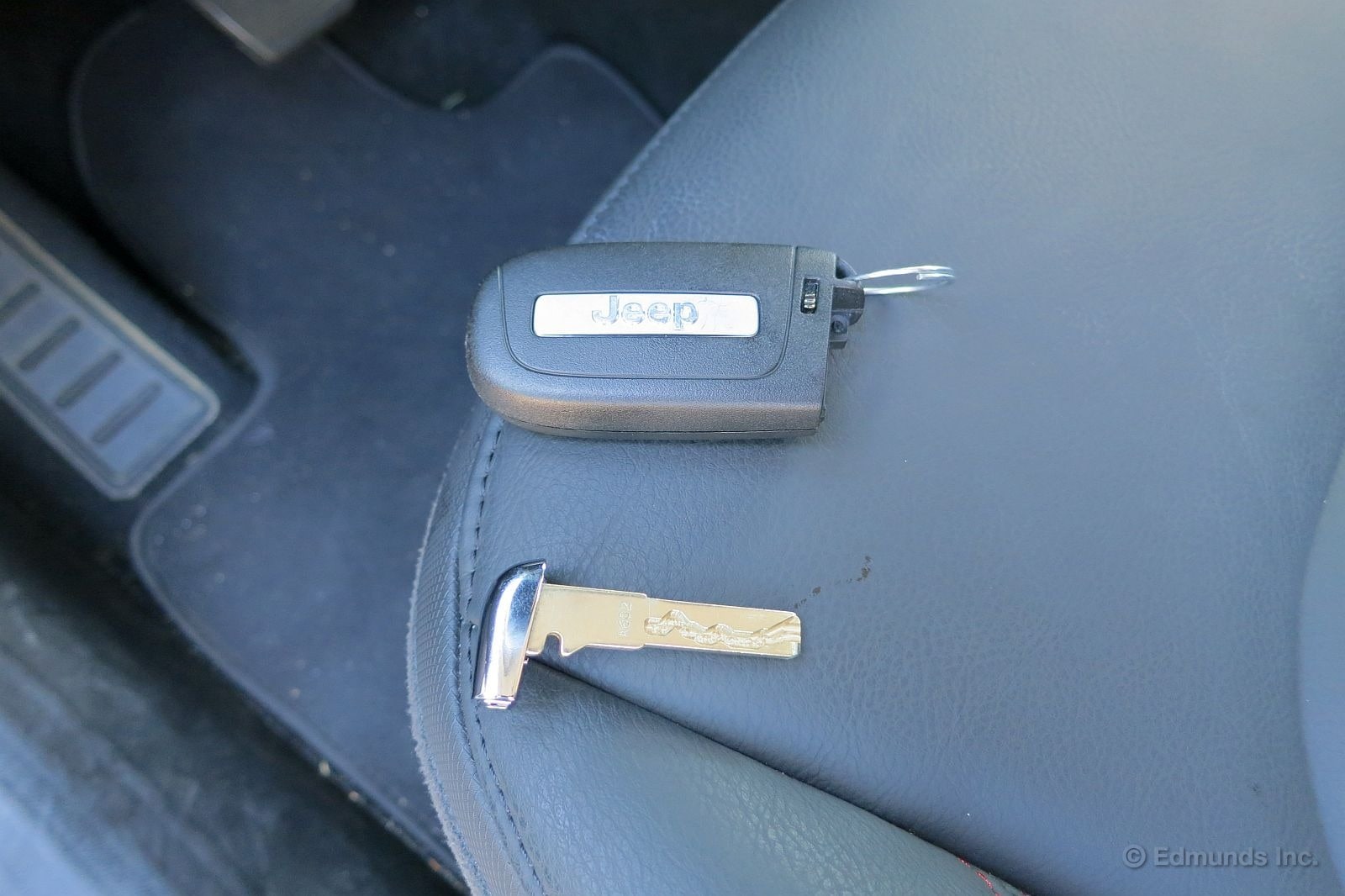
At one point, I was already running late and couldn't study the manual for a cure. So I had to slide the actual key out of the fob to lock or unlock the driver's door. When I'd leave the Jeep, I'd tell whoever was with me to lock their door. Ya know, manually. It was so...my childhood.
When I was a kid, my parents would tell us the same thing whenever we got out of our 1968 Volvo 145 Wagon: "Okay, everyone lock their door!" With that trip down memory lane circulating in my head, I kind of embraced the old-school aspect of the whole thing. Still, a malfunction like this clearly isn't a great sign for a brand-new vehicle.
Even that fond remembrance couldn't keep me from wanting the key fob to work properly, though. A quick glance through of the owner's manual revealed no instructions for a key fob reset, so I simply disconnected the Renegade's battery, then reconnected it. My own "reset."

It worked. Key fob locking/unlocking was immediately restored and it operated properly the rest of the weekend. We still took it to the Jeep dealer anyway to see if they could figure out why it happened in the first place.
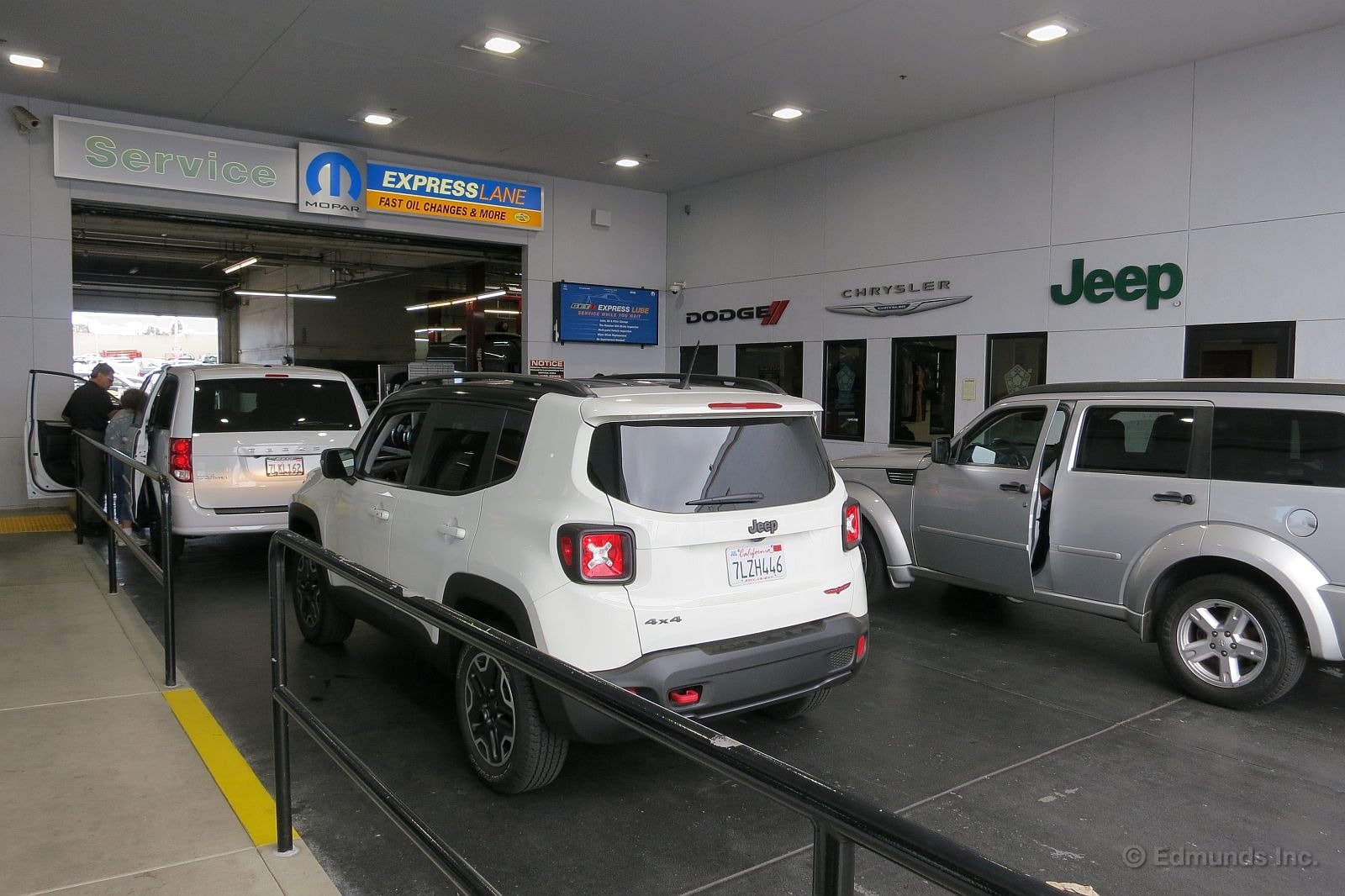
The Renegade Rumble is Not a Dance
I've heard it every time I've taken our 2015 Jeep Renegade Trailhawk for a spin. It doesn't happen all the time, but it happens regularly in certain circumstances. And it stands out to me because it was totally absent from the early press sample I drove a few months ago.
What am I on about? I call it the Renegade Rumble, a low-level grumbling sound that comes from down low behind the driver's seat under the back of the vehicle somewhere. It's not terribly loud, but the low frequency nature of the thing hovers on the edge of being an outright vibration.
No one could ever accuse the Renegade of being a quiet vehicle. It's not like this is the only noise it makes. The exhaust is fairly buzzy, there are a few rpm ranges where it drones in certain gears, and it's a shoo-in for the Nobel lack-of-peace prize when it comes to the production of idle vibration.
But unlike those sounds, the rumble doesn't seem to correspond to anything that should be going on. It doesn't feel right.

The noise is most obvious when cruising steadily at or above 30 mph. If you forced me to pick, I'd say 32 mph is prime time.
I'm getting good at inducing it on command, especially on quiet residential streets. Starting at 25 mph, I'll slowly edge up my speed. It'll come on suddenly at 32 mph, accompanied by the gentle lurch of a shift. But it's not a shift because the rpms don't budge.
Sometimes I think I can still detect it when cruising at faster road speeds, but the higher background levels of wind and road noise make it hard to tell. Sometimes it reappears if I coast down gradually enough into the 30-35 mph speed range, sometimes not.
It would be easy to confuse this with a downshift mixed with the aforementioned raspy exhaust, a muffler resonance of some sort. But that's more of a thing when I'm on the throttle more aggressively, not poking along on level ground.
Besides, a simple test eliminates this possibility.
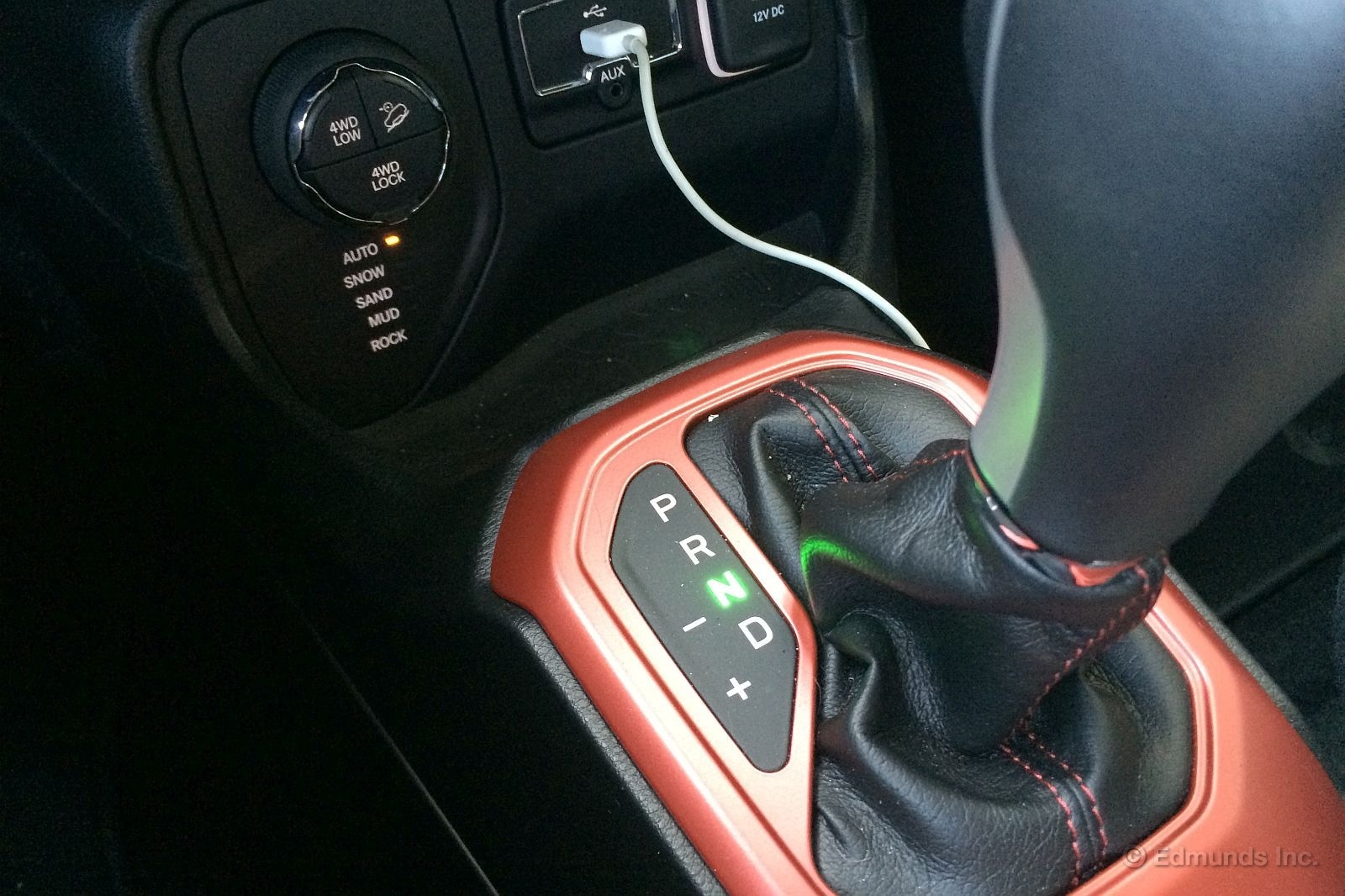
Remember, it comes on with the feel of a shift but the rpms don't change. That's one clue. Another is when I slip the tranny into neutral. The engine speed falls away, but the grumble lives on at the same frequency.
It didn't seem like a tire issue, but we had Stokes check them on their road-force balance machine to make sure. It's best to eliminate the easy stuff first. Everything checked out. They didn't even charge us.
At this point I visited a forum dedicated to the new Renegade and struck gold. There's a thread on this very issue, and a couple of posters were describing the same symptoms. One of them pointed out a further diagnostic step I hadn't thought to try, something that resonated with me because it lined up with a theory I had about the possible source: the rear differential or the four-wheel drive coupling that's mounted on its nose.
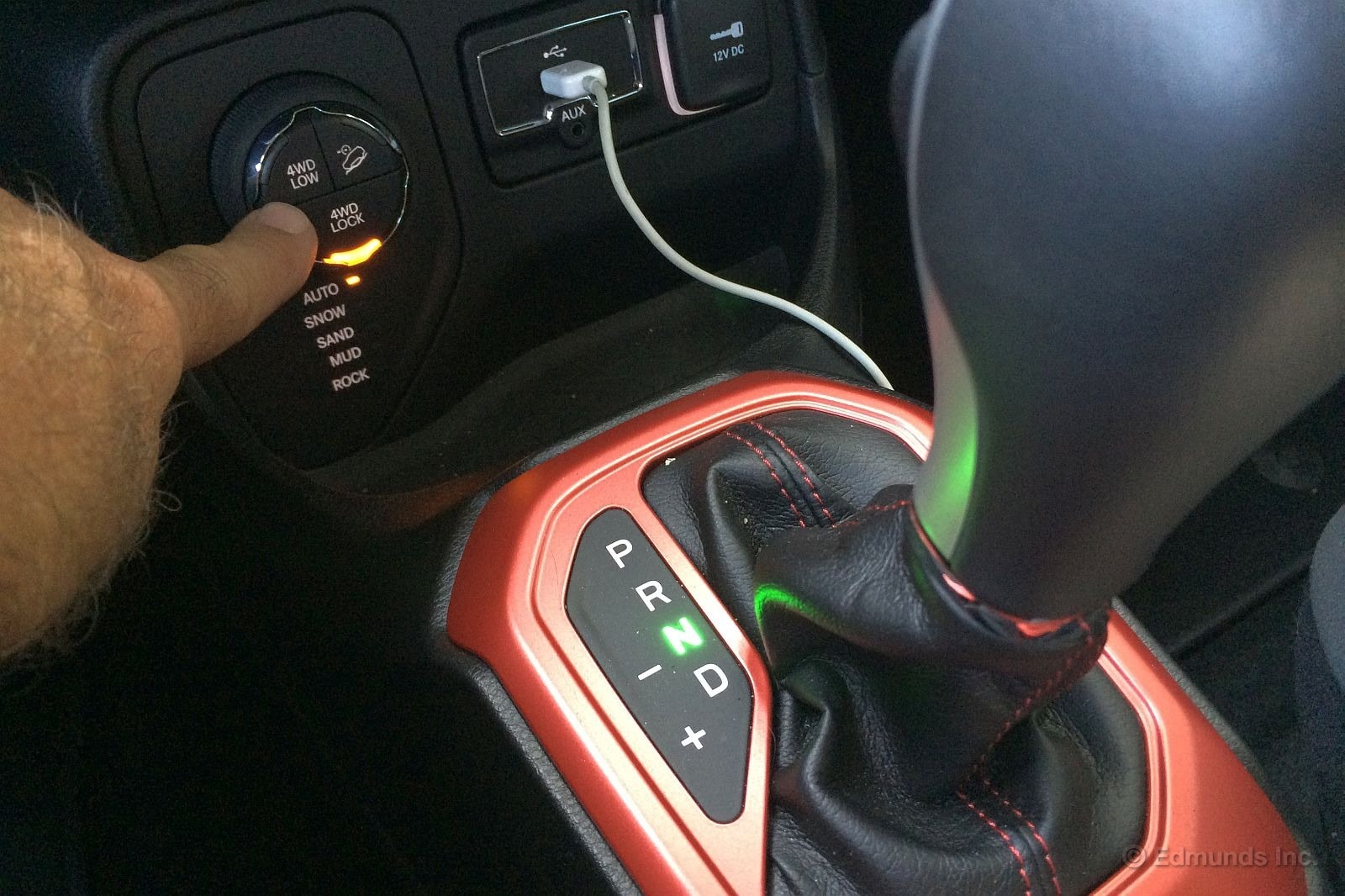
It's a simple check. Press the 4WD Lock button while the noise is present and force the coupling to engage. You're not supposed to do this on dry asphalt, but it doesn't hurt if you're driving straight ahead at residential speeds. The noise disappears pretty much entirely as the 4WD clutch engages. You can't drive around like that, but it's a supremely useful clue.
The rumble is still with us, but our Renegade seems OK to drive. The 4WD system works and the intermittent noise doesn't interfere with routine commuting. But it's not something we plan to ignore, especially since we have some idea of the source.
A dealer visit is our next move. We'll tell them what we know and see if the factory has seen enough of this to have engineered a fix. Fingers crossed.
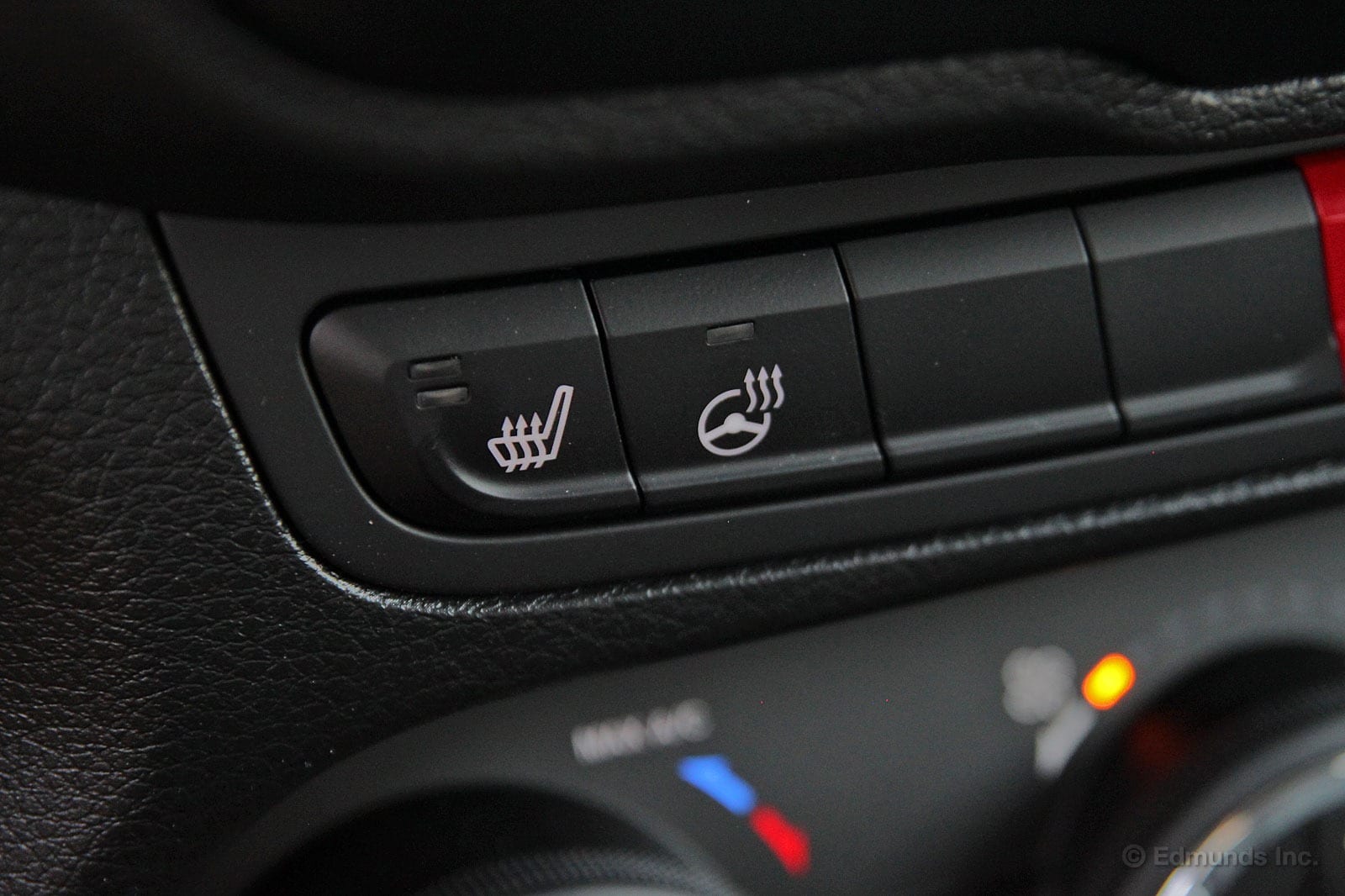
When it comes to subcompact SUVs like our 2015Jeep Renegade, I don't expect much. Given their size, price range and intended use, I figure as long as they get decent mileage, have useful interiors and comfortable rides, that's all they need. This Renegade has all that and more.
Case in point: a heated steering wheel.
It's part of the Premium package, naturally, and although I've had no need to use it as of late, just seeing the button down there on the dash surprised me. That was once the kind of option you could only get on a mid-range or higher luxury sedan. It makes the heated seats seem expected, enough though these two options used to be considered luxurious.
Our Renegade wasn't exactly cheap, so it's good to see it loaded with features. Even so, there are plenty of competitors that don't even offer its level of equipment no matter how many boxes you check.
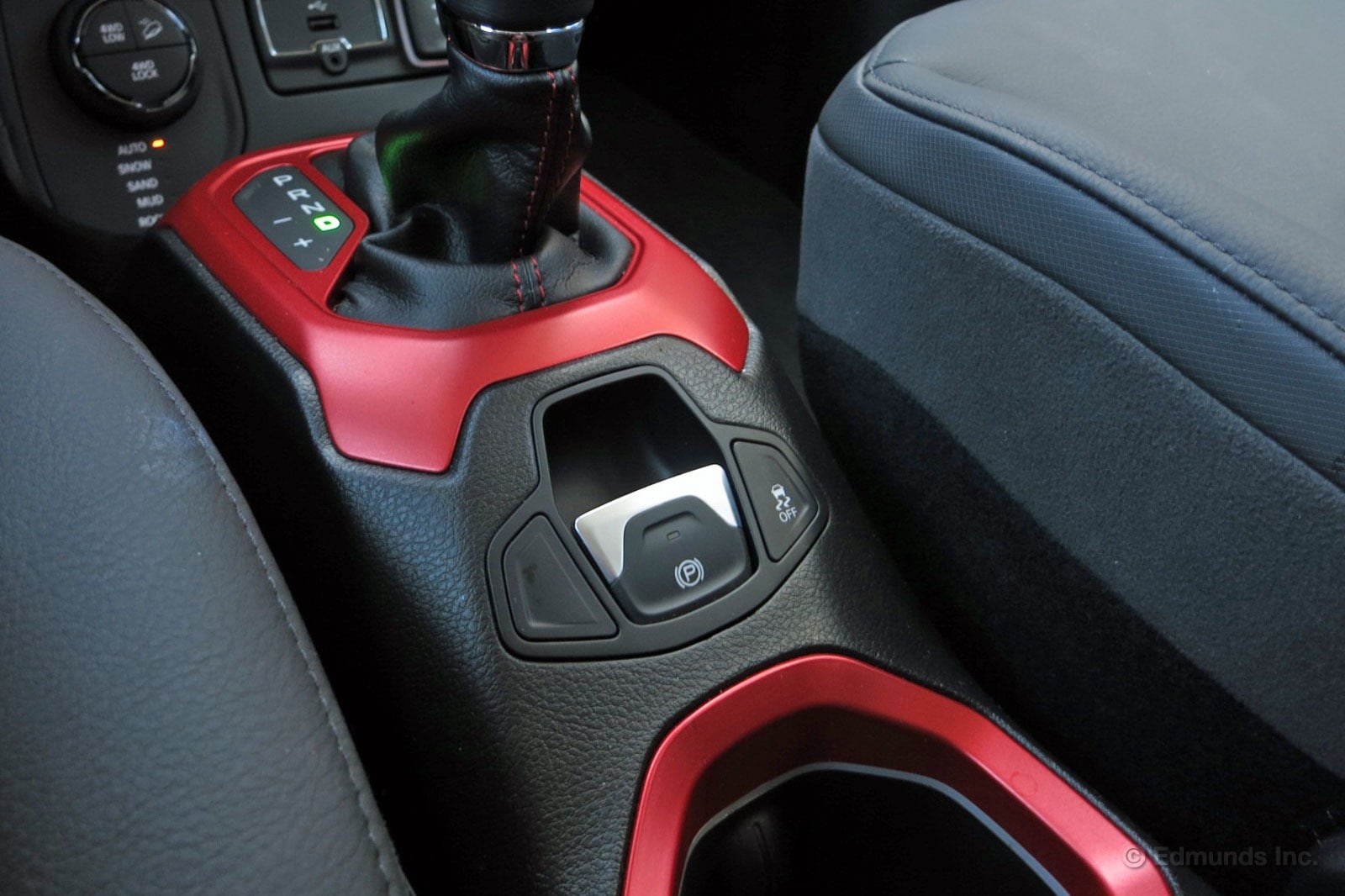
Do you use the emergency brake every time you park? Not everyone does even though it's the proper thing to do to prevent the unexpected. In our 2015 Jeep Renegade, you don't even have to think about it. The brake engages for you.
Yes, that's right, no input needed. Just stick the transmission in Park and a few seconds later the parking brake engages on its own. It's one of those features made possible when switch from a manual pedal or lever to an electronic switch.
I'm sure there are some people out there that don't want this kind of "intrusion." I'm not one of them. I use the emergency brake every time I park a car, so knowing that it will do it for me is a nice feature (it can be turned off, by the way). It's also something I didn't expect to find in a subcompact SUV since there are plenty of luxury cars that don't do the same.
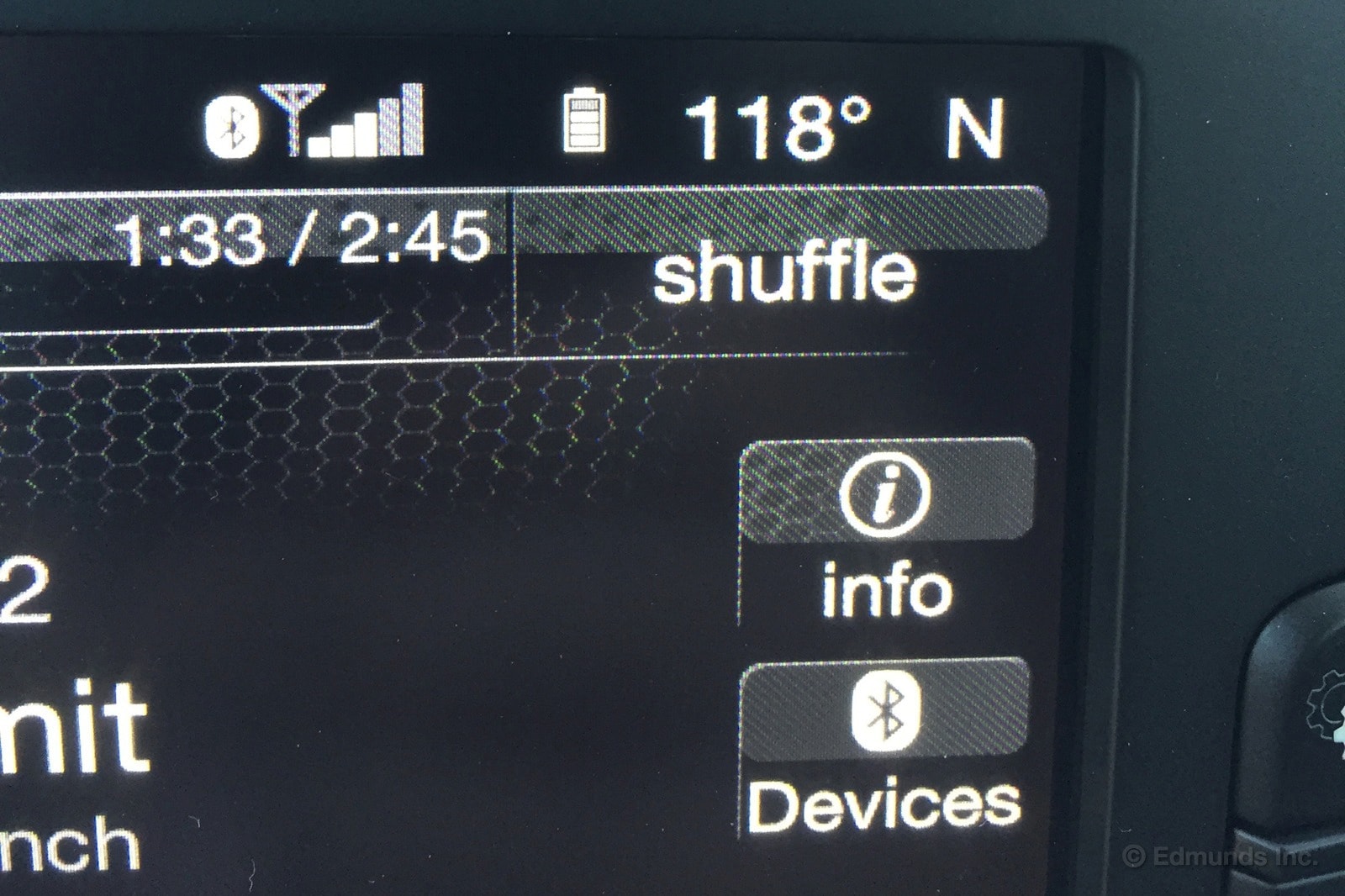
Air-conditioning shouldn't be taken for granted. Heat is a killer and Southern California recently basked in the brutal blows of our loving sun. When temperatures creep north of 100 degrees, the ability to turn a knob or push a button and get cool, crisp air filling the cabin is one of the greatest luxuries of modern cars.
But not all A/C is created equal. Each week, Edmunds tests cars at Auto Club Speedway in Fontana, California. Fontana gets hot. Choosing a vehicle with good A/C is a necessity.
When I was ready to leave the track after testing recently, our 2015 Jeep Renegade Trailhawk had been sitting in the sun for a few hours.
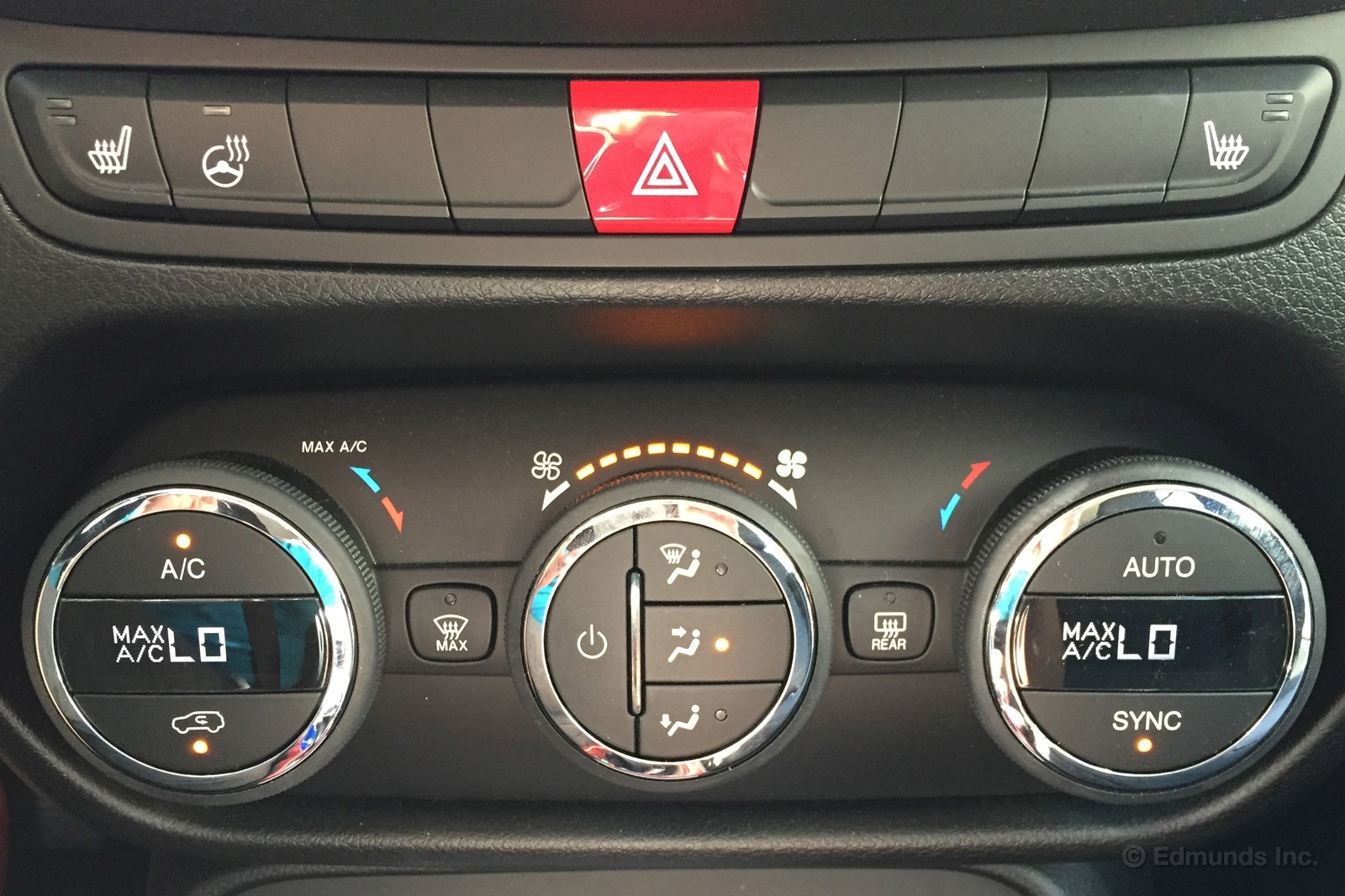
Opening the door was like a slap in the face, the escaping heat forcing me to take a few steps back. After starting the Renegade, I was greeted by a thermometer reading of 118 degrees. Of course the gauge will read high after sitting in the sun, but even after moving, it only dropped slightly.
It turns out the Renegade has really good A/C. The vents immediately started blowing cool air. The whole cabin chilled in a matter of minutes and I dropped the fan speed for the remainder of my drive. Even with a black leather interior, I never felt like I was sticking to the seat.
I also appreciated the HVAC controls. With many automakers opting for buttons and touchscreens, it's nice to have big, round knobs within easy reach. My only complaint is that the temperature display sits lower on the center stack than I'd like.
While SoCal temperatures have cooled, it's nice to know that the Renegade will keep me comfortable should the need arise.
Fuel Economy Update for September - What's Behind Our Low MPG?
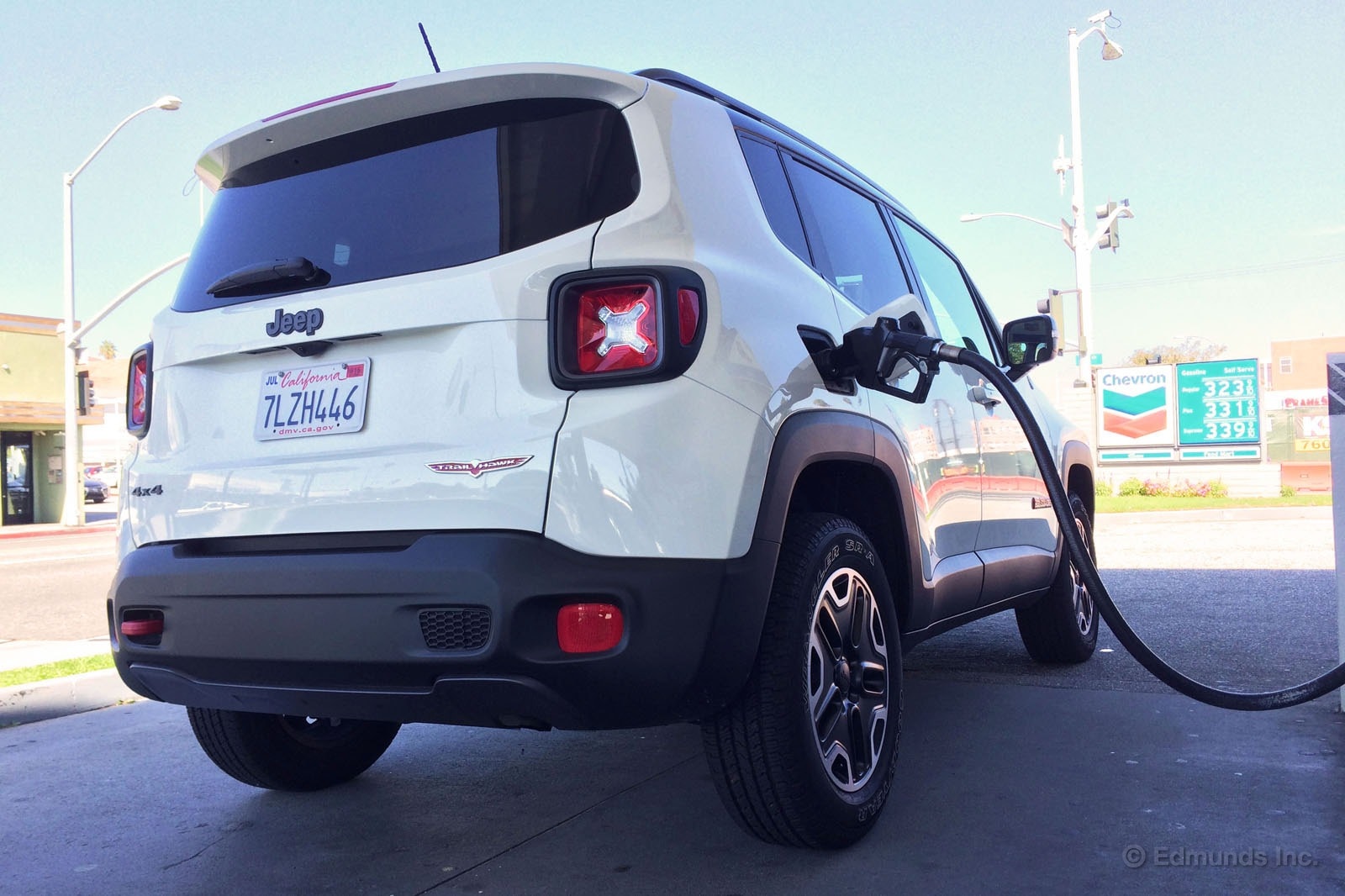
Last month, our recent-arrival 2015 Jeep Renegade Trailhawk returned some relatively unimpressive fuel economy figures. While we've yet to set it loose on freer pastures, we're still achieving only the estimated city economy numbers (21 mpg) about 40 percent of the time at best.
Some recent developments, however, could absolve our Renegade's 2.4-liter MultiAir engine of blame for our low efficiency.
There were a few issues we encountered over the past month, one involving a key fob malfunction that sent Monticello down memory lane, and another that inspired Dan Edmunds to coin the term "The Renegade Rumble." The latter, though fun to say, might be the culprit to our MPG woes. If Dan's supposition is correct and we're experiencing some type of differential malfunction, the elevated levels of driveline drag — imagine yourself running in sand — could be what's fueling our Renegade's increased thirst.
With a new lifetime average MPG of 20.4, we're at least moving in the right direction with an improvement of three-tenths over last month's figure. We have plans for both an extended road trip and investigating the mysterious rumble in the coming weeks, which should provide us more definitive answers.
In the meantime, we'll keep finding excuses to use "Renegade Rumble" in casual conversation.
Worst Fill MPG: 16.4
Best Fill MPG: 24.1
Average Lifetime MPG: 20.4
EPA MPG Rating: 24 Combined (21 City/29 Highway)
Best Range: 297.2 miles
Current Odometer: 3,820 miles
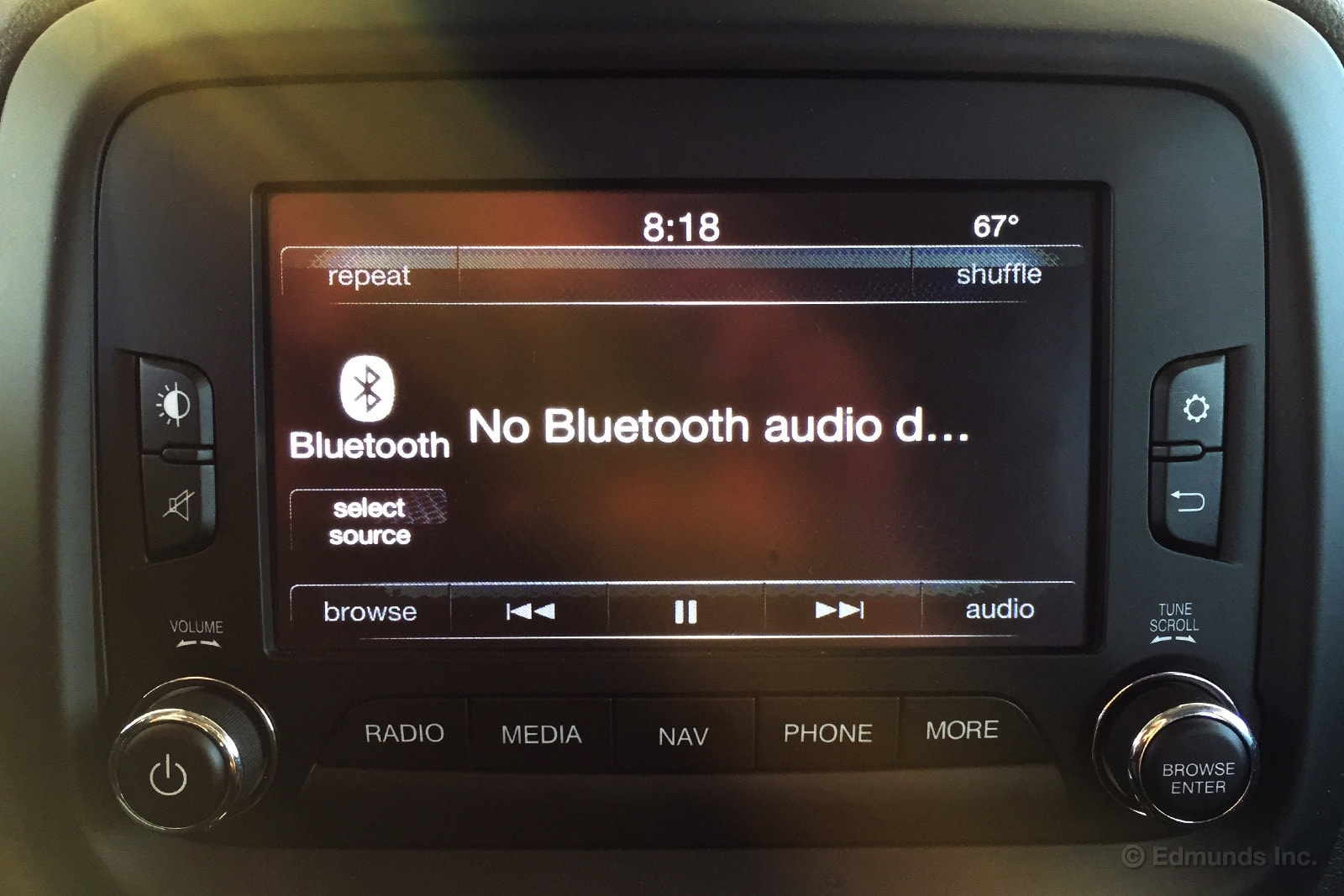
I rely on podcasts for entertainment during my commute. Consequently, I notice when Bluetooth systems act up. Though the infotainment system in our 2015 Jeep Renegade Trailhawk is easy to use, it seems to take much longer than normal to resume Bluetooth audio playback after starting. While most cars are streaming by the time I exit my garage, the Renegade doesn't start until I'm halfway down the block.
How much longer does it take?
Welcome to the "Time To Bluetooth" or TTB test, which I created today in the Edmunds.com garage.
The test is simple: I'd first pair my phone with a car and start streaming over Bluetooth. Next, I'd turn the car off, get out, lock the doors, and wait, attempting to simulate what happens when you park your car for the evening. After it looked like the entertainment system finished shutting down, I'd hop in, turn on the car, and start the timer. The timer would run until I could hear Bluetooth audio again.
The TTB results are as follows:
2016 Audi S6: 19 seconds
2015 Chevrolet Colorado: 12 seconds
2016 Chevrolet Corvette: 12 seconds
2015 Ford Mustang GT: 11 seconds
2016 Jaguar F-Type: 14 seconds
2015 Jeep Renegade: 1 minute 7 seconds
1989 Yugo GVL: ¯\_(ツ)_/¯
2015 Volkswagen GTI: 21 seconds
The findings back up what I suspected. While most cars resume playback quickly, the Renegade took three times as long as the group average (minus the Yugo). Of course, this is not an exact science, but a rough approximation of a mild annoyance. The test also highlighted the speed of MyFordTouch and Chevrolet MyLink systems, with the Mustang posting the quickest result.
Though the small sample size is small, it's easy to see these infotainment systems resuming playback just as fast in other models. For example, I tested two wildly different Chevrolets with two different-looking versions of MyLink, and they resumed playback at the same time.
As for the Renegade, it'll simply require a little more patience.
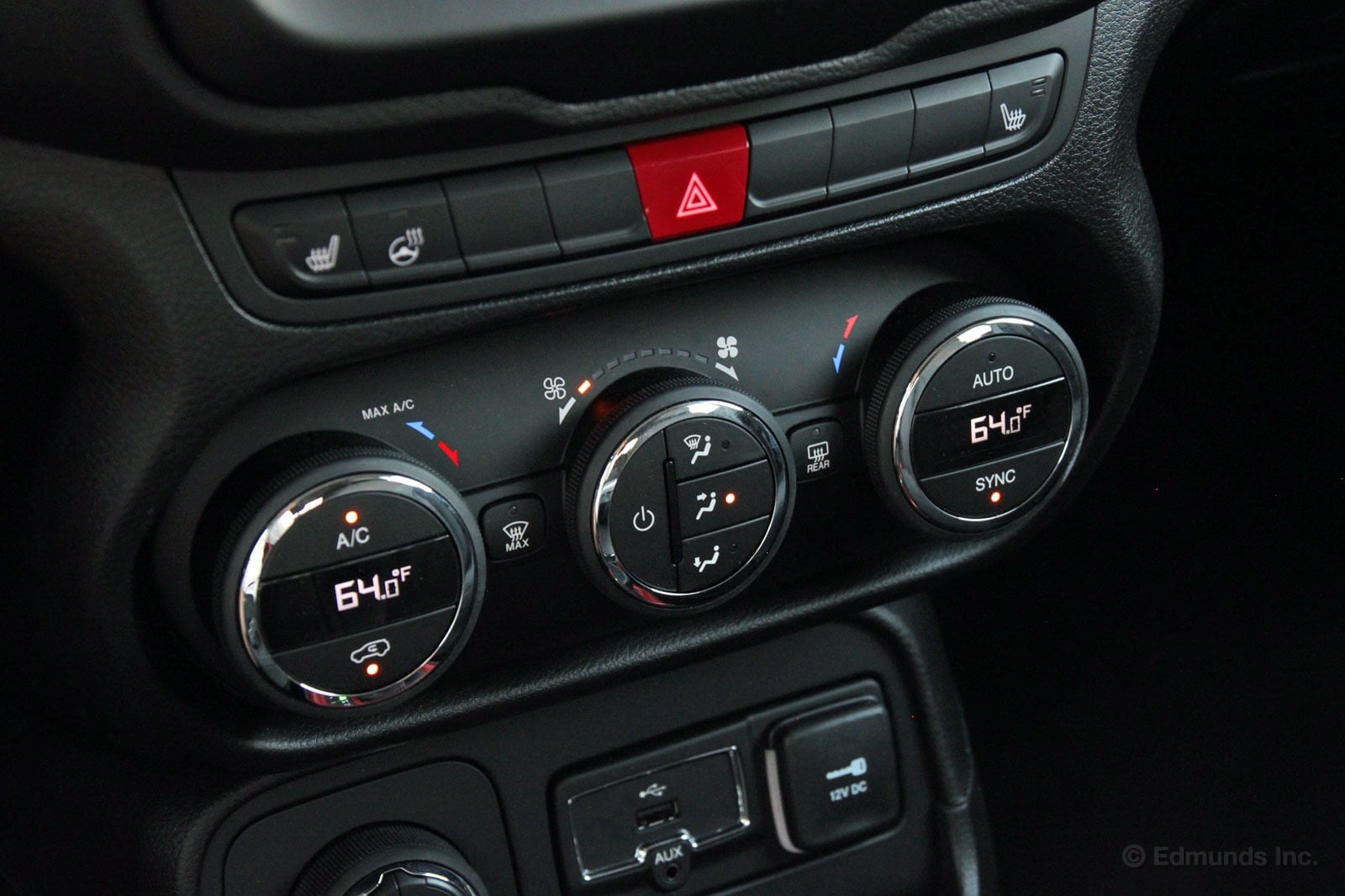
Like most vehicles in this class, the 2015 Jeep Renegade sticks with traditional dial controls for its climate control system. This is a good thing for the most part, but there is one drawback.
These dials are so large that when my right knee rests against the console, it nudges the temperature dial to the right. One minute it's blowing a pleasant 68 degrees, and the next I'm wondering why my eyes are drying out from the blast of hot air in my face.
I suspect this is only a problem for taller drivers, but even so it's an issue I haven't experienced in quite some time.
It's a shame, too, as I'm a big fan of three-dial climate control setups. They're the most sensible way to lay out such controls, and the way Jeep's designers managed to cram in an automatic system without adding much complexity is admirable. If they would just slim down those dials a little I would be sold.
Interior Rattle Remedy
I'm accustomed to a few of the noises our 2015 Jeep Renegade Trailhawk makes. From the intermittent rumble at low-speed deceleration that we've experienced since day one to the light plastic-on-plastic squeak the steering wheel makes when you crank it while stationary. Over the weekend, I found a new noise from the rear cargo area.
But this one I was able to fix.
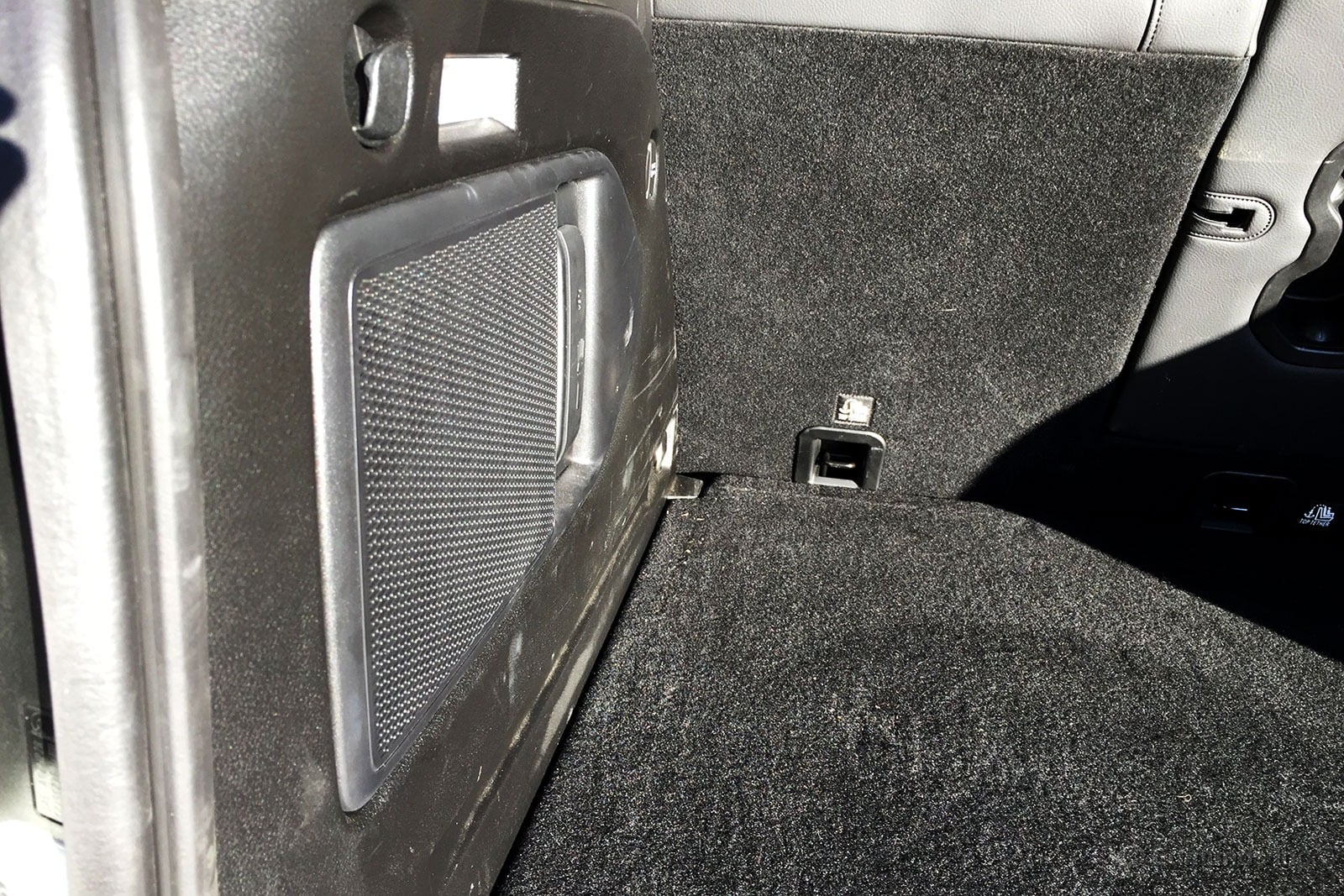
While driving on lightly bumpy roads, I heard a rattle from what sounded like the rear roof area. After listening to it for a day, I put on my Mr. Fix It hat and popped open the cargo hatch. Everything looked normal and I didn't see any loose parts floating around. So I started tapping panels to see if I could replicate the sound.
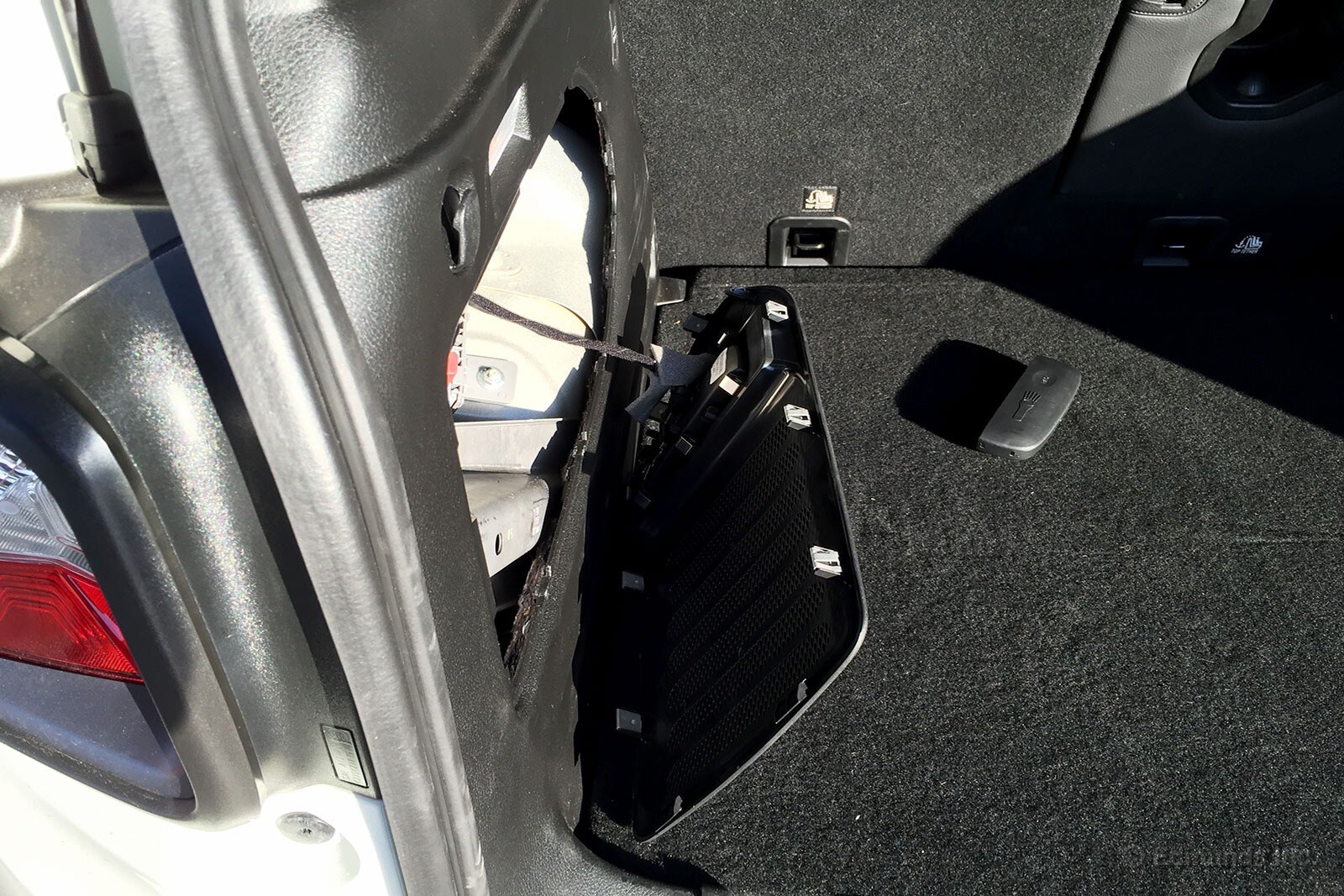
After playing the cooler/warmer game for a minute or two, I found I could reproduce the rattle by tapping around the fuse panel on the driver side, the one that holds a very handy flashlight. I removed the cover and looked at the tabs. None were bent or broken, and nothing appeared to be rattling inside.
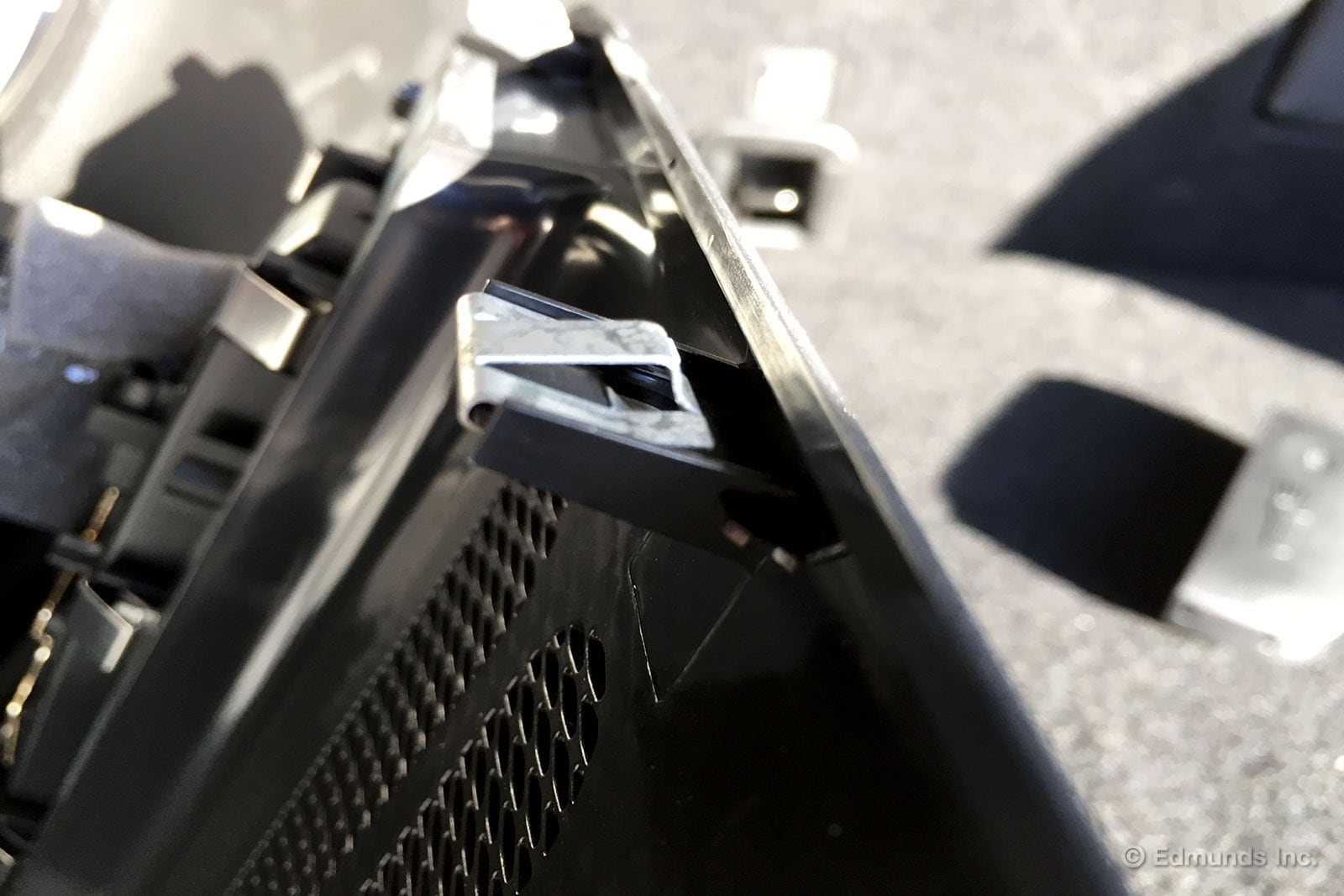
I put the cover back on, carefully pressing in each tab correctly, and then took the Renegade for a test drive. The rattle was gone.
Lesson learned: If you remove the fuse panel cover in the cargo area, be sure to take care when reinstalling it.
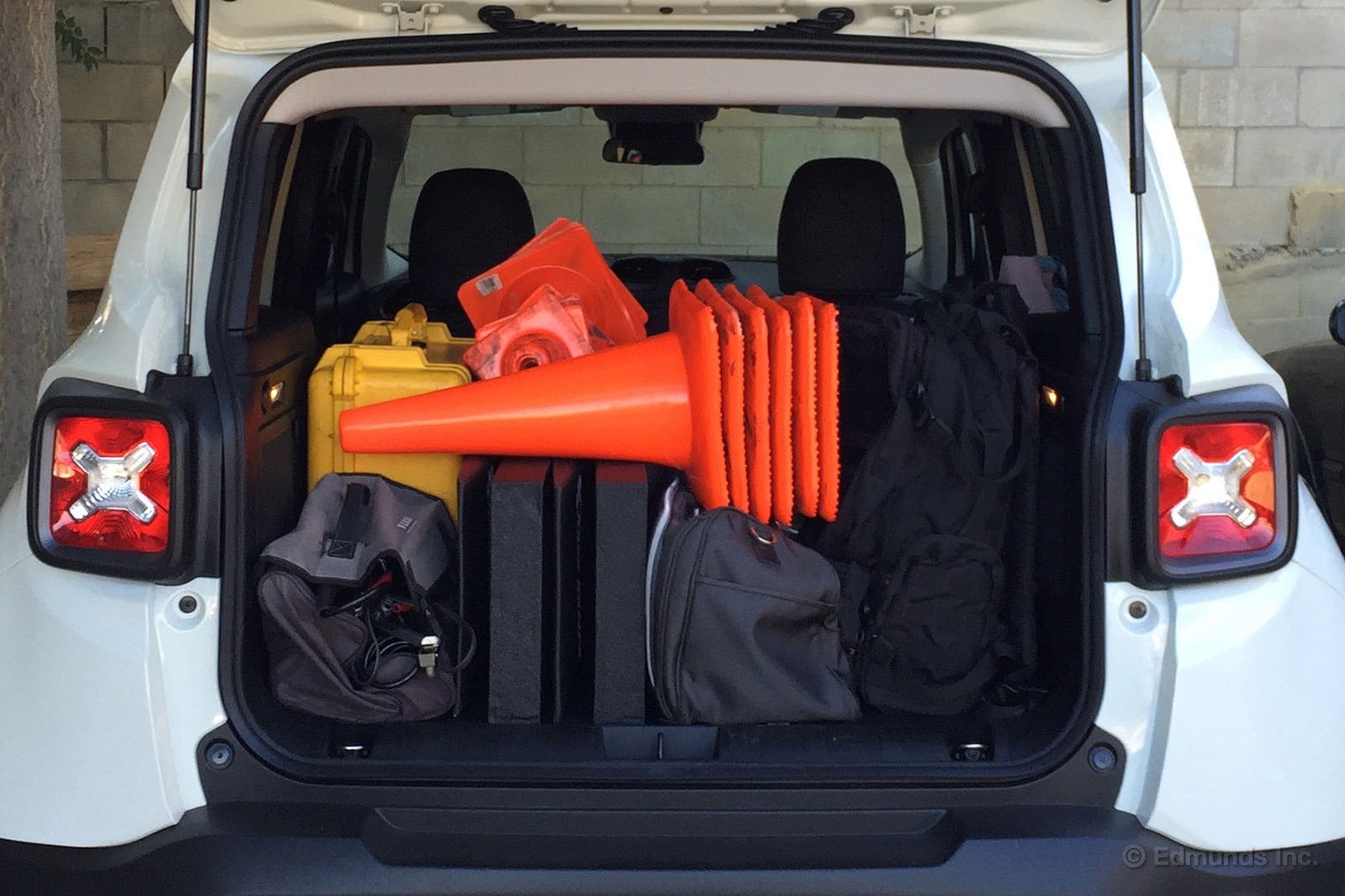
One of my duties as Vehicle Testing Assistant is transporting our test equipment — scales, cones, various timing devices — to and from the track every week. Not everything in our fleet is up to the task and I was concerned our 2015 Jeep Renegade Trailhawk might fall short.
In our recent Renegade rating, one of our biggest criticisms was its subpar cargo capacity compared to other vehicles in its class. At 30.75 inches, the load floor is a little high. With the seats folded down, there are 57.75 inches of room behind the rear seats, though this falls to 28.25 inches with the seats in place. I was a little concerned about fitting all of our gear inside.
I dropped the rear seats and carefully packed all of our testing equipment in the back. The Renegade swallowed our gear and still left enough room to see out of the rear window. Things were packed tightly, but this added the benefit of preventing shifting and clanking that sometimes occurs with our equipment.
Let There Be Flashlight
Long before the days of flash-equipped smart phones, there was a booming market for portable flashlights, namely those LED keychain lights. These coin battery-powered wonders were often saving graces for changing a flat in the dark, or locating small personal effects that slipped into crevices beyond the reach of a cabin dome light. Regular and frequent use, however, would quickly deplete their tiny expensive battery of its last electrons, and always at the most convenient moments.
Fast forward to 2003 when Volkswagen introduced the Phaeton to the US market. With an MSRP ranging anywhere from $65,000 to $95,000, the Phaeton had a hard time finding acceptance in the US automotive market, which unfortunately overshadowed one of the coolest accessories it came with.
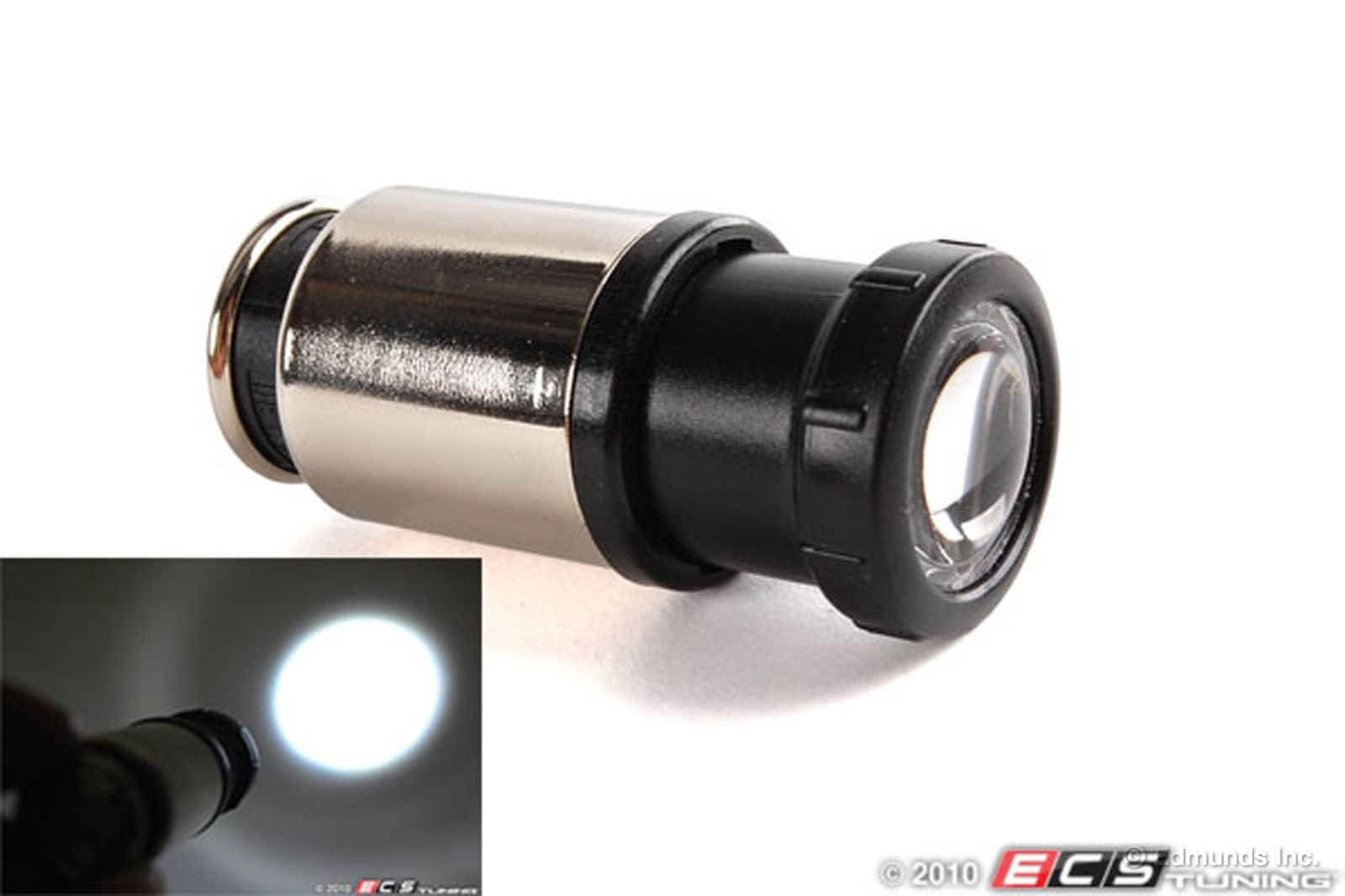
Caption: One of my all-time favorite factory accessories is VW's LED flashlight, which supplants the standard pop-out cigarette lighter. This classy universal device stays charged and at the ready whenever you're in need of a light. A flashlight, that is.
Fast forward to today and our 2015 Jeep Renegade Trailhawk offers its take on the integrated flashlight accessory.
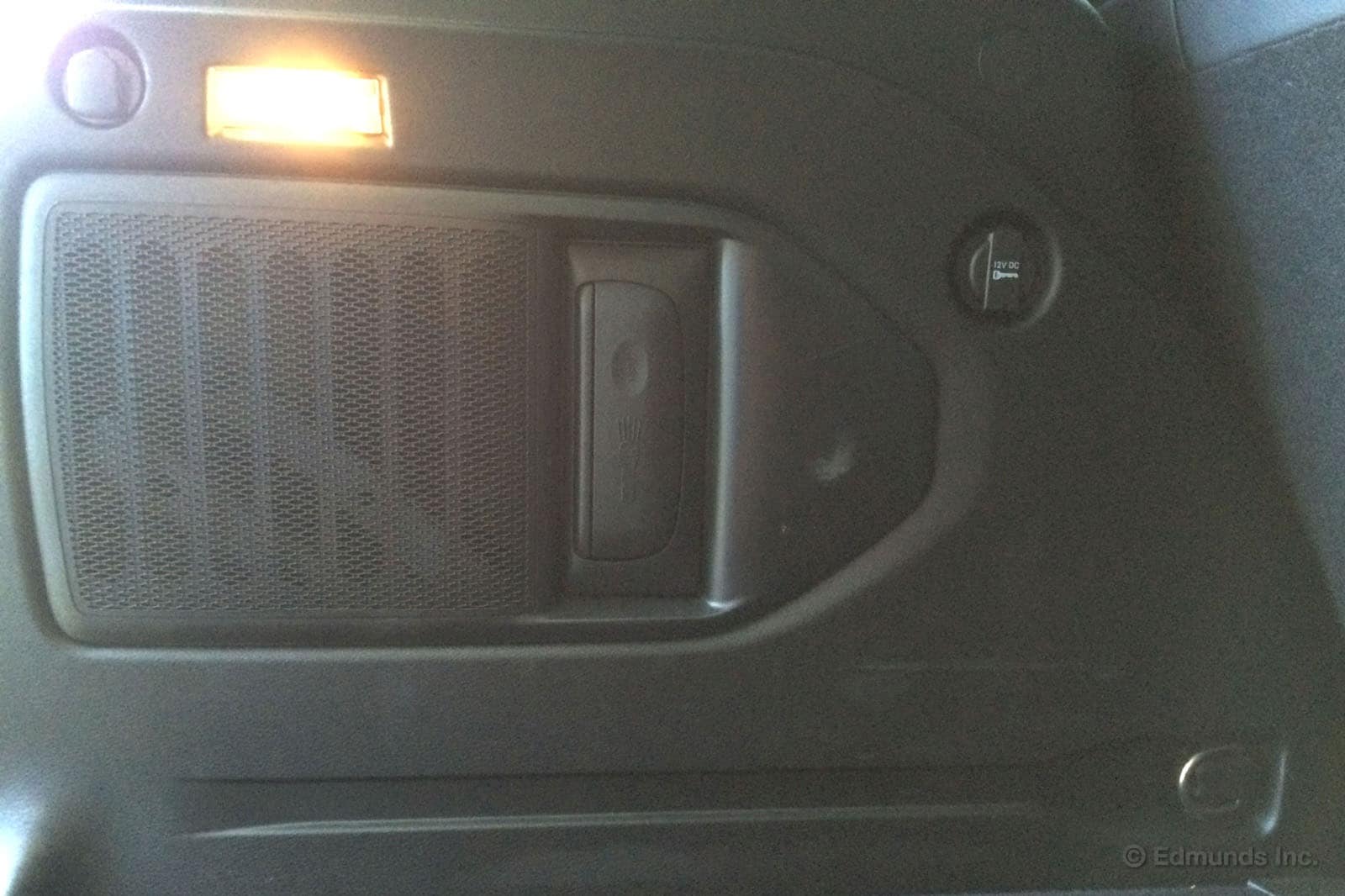
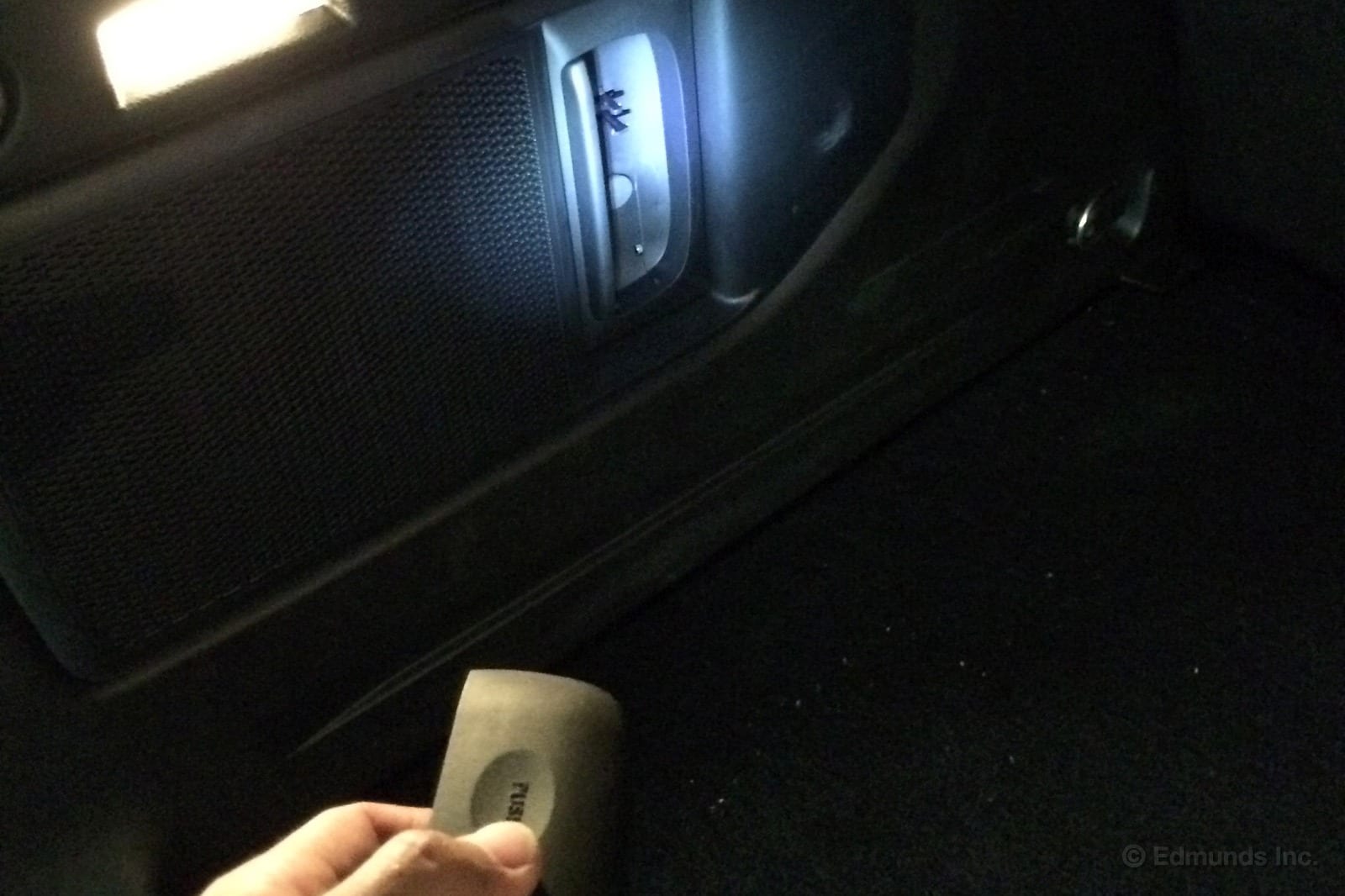
Hidden in the left side of the cargo area wall, a small LED flashlight stays charged until you need it — most likely when locating the spare tire and associated tools to change that flat in the dark.
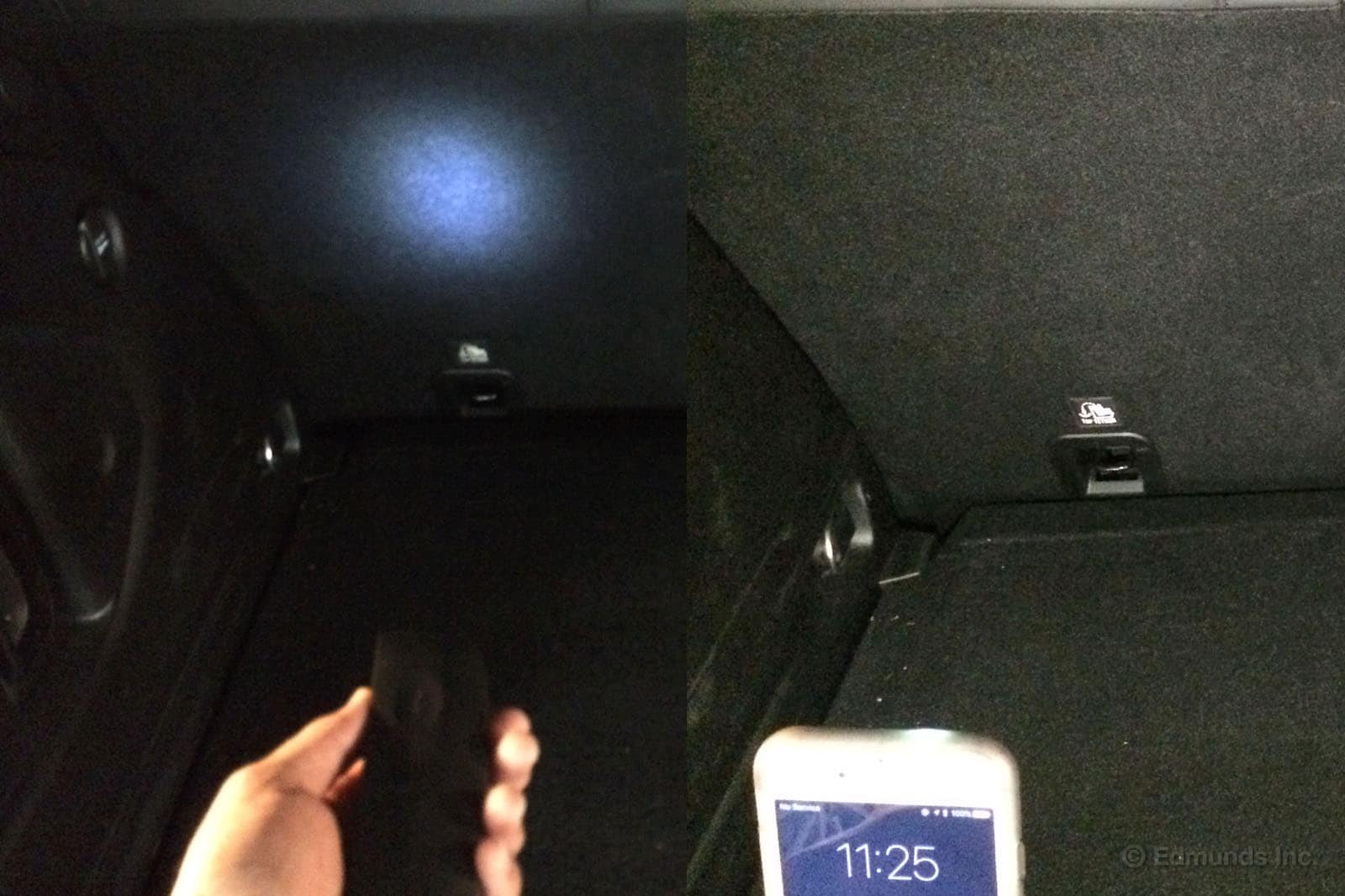
Caption: For comparison's sake - Renegade LED flashlight (left) iPhone 6 (right)
Although it doesn't boast the most impressive lumen output, it's a welcome courtesy provided by our long-term Renegade. And it's better than no light at all.
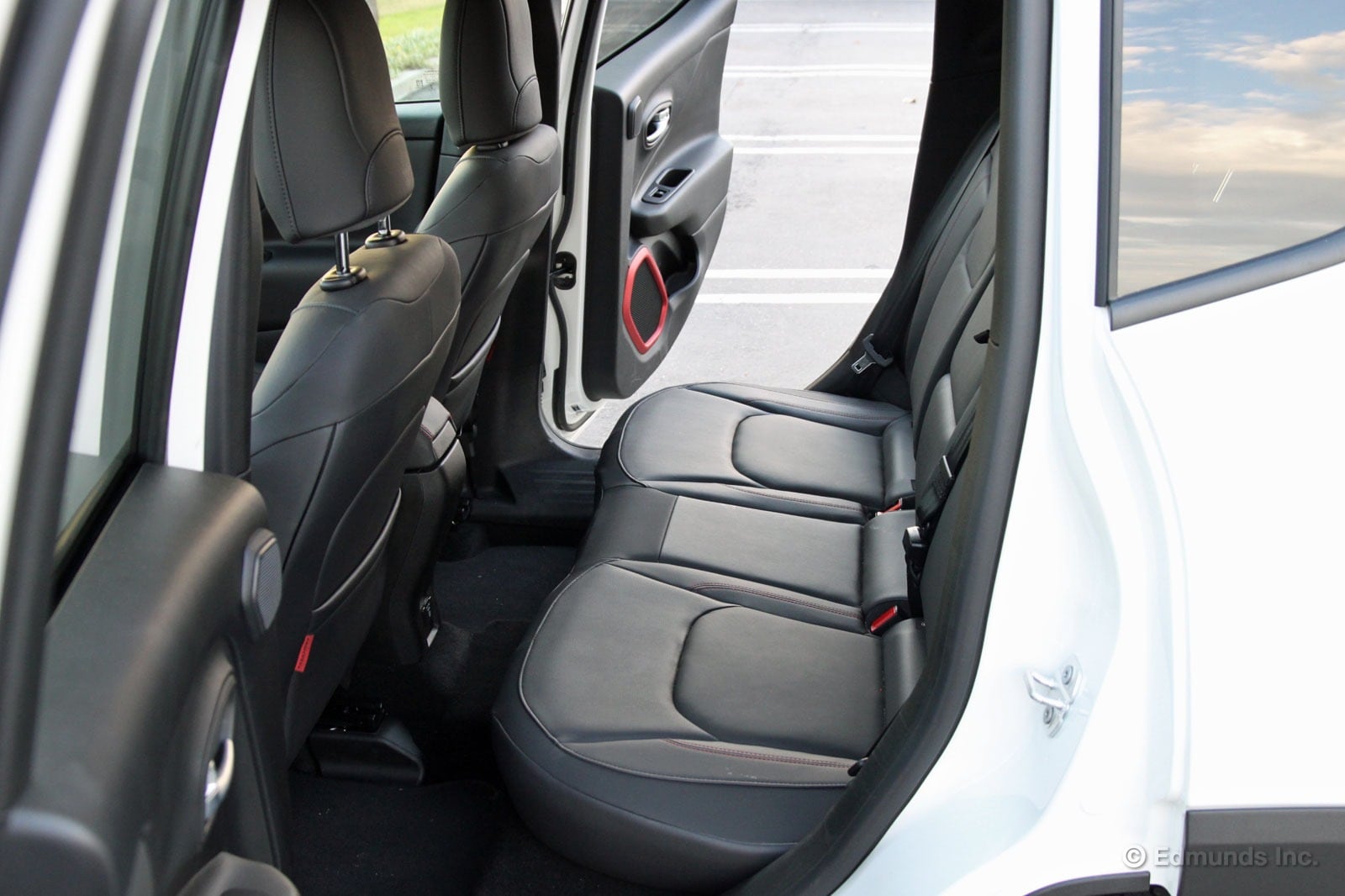
Our 2015 Jeep Renegade may not look like it has much rear seat room, but compared to other SUVs in its class, it's actually quite spacious. It has nearly two full inches of headroom compared to its next closest competitor, while its hip and shoulder room also top most other subcompact SUVs.
The one area where it falls short is legroom.
The Honda HR-V rules the category with an extra four inches of room to stretch out compared to the not only the Jeep, but most vehicles in this category.
The seats themselves have a reasonable amount of cushioning and a fold-down armrest with cupholders when no one's occupying the middle. You could put two people in back for a while without feeling guilty. That's more than I expected from an SUV of this size.
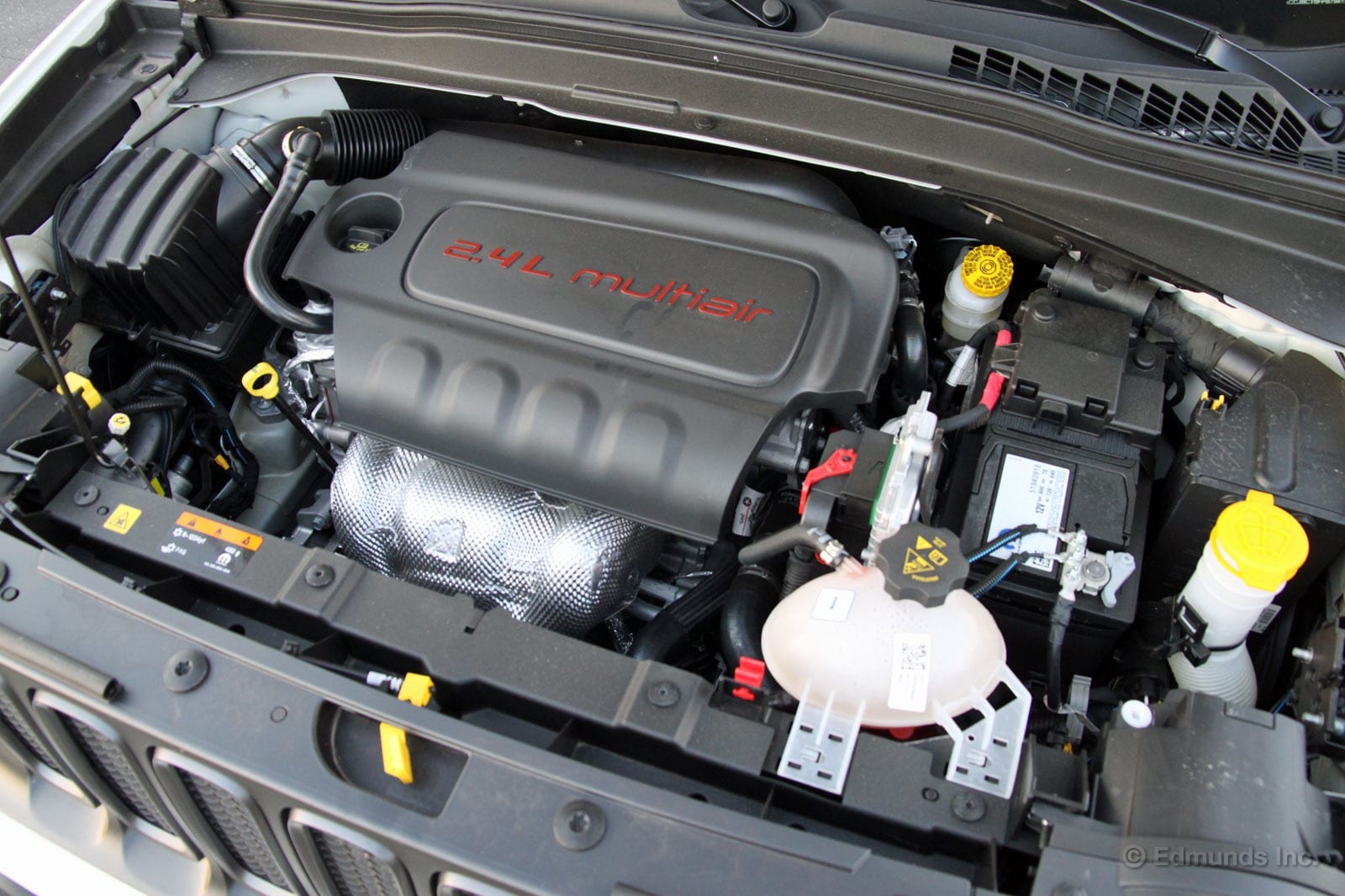
One of the benefits of going for the Trailhawk version of the 2015 Jeep Renegade is the upgraded engine. Instead of the base turbocharged 1.4-liter engine, all Trailhawk models come with the larger 2.4-liter four-cylinder. It's a solid powerplant, both in its refinement and ability to get the Renegade up to speed.
It's a shame that the standard nine-speed transmission isn't nearly as impressive. It shifts smoothly enough under most conditions, but all too often it's a couple gears too high when you need a little power. I find myself constantly prodding the gas pedal to get it to downshift to the right gear. I've even started digging into the gas a little early in anticipation of it sluggishness.
Others on our staff have expressed similar experiences with the Renegade's gearbox. I don't find it nearly as aggravating as they do, but it's still not an ideal setup.
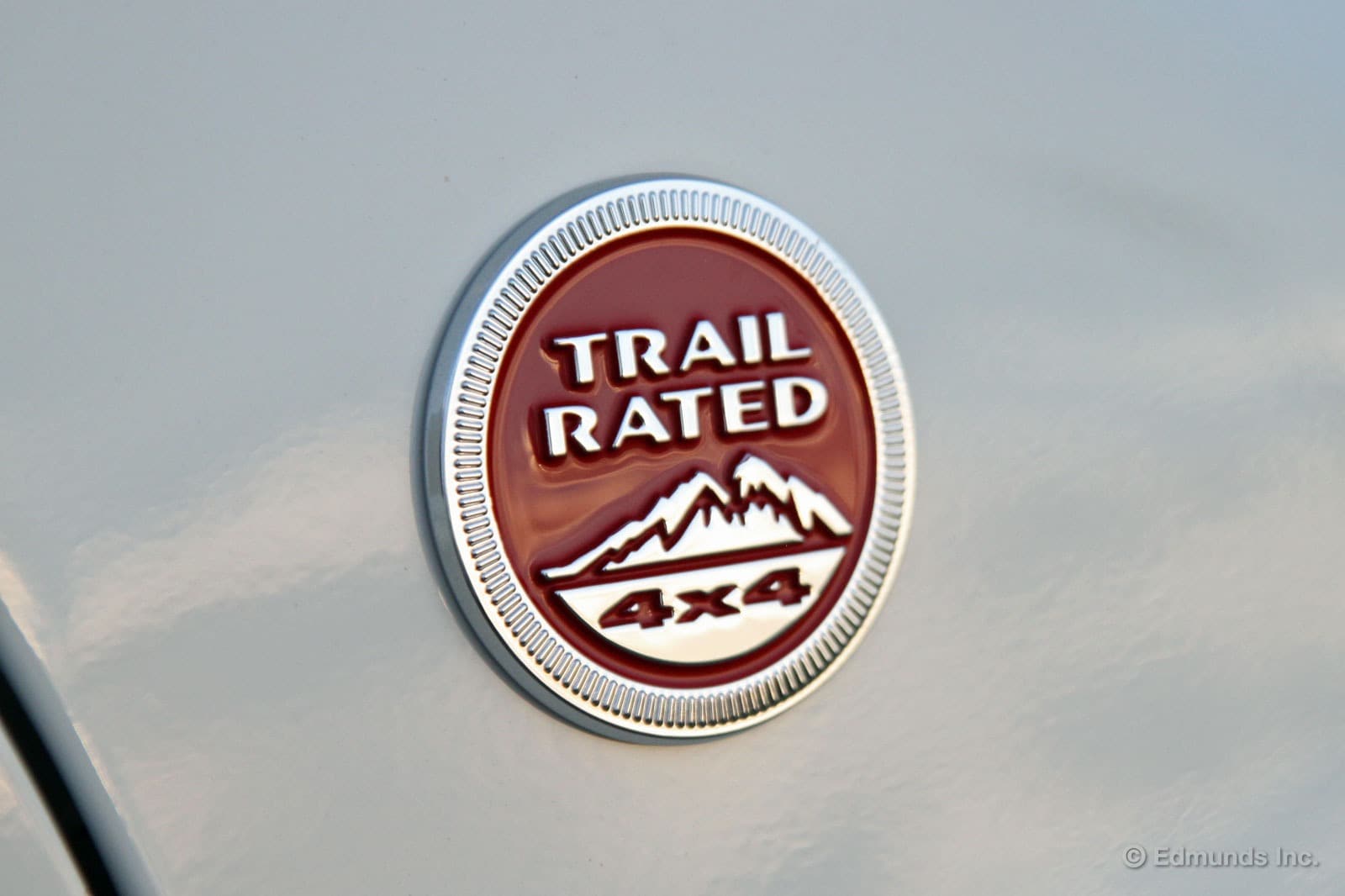
The "trail rated" badge on our 2015 Jeep Renegade Trailhawk used to mean something very specific. When it came out around 2004, it was given to certain Jeep vehicles that had the ability to tackle trails that most ordinary SUVs wouldn't dare. Since then, the requirements have changed a bit.
These days, the Trail Rated badge merely implies that the Jeep in question has a certain level of capability in five specific areas: water fording, suspension articulation, maneuverability, ground clearance and traction. What those levels are isn't exactly clear.
For instance, in the traction category, Jeep's website lists the overall crawl ratio as the measure of traction. Sure, a good crawl ratio helps, but it's hardly the only thing that comes into play when it comes to traction. In the articulation category, it lists the very relevant Ramp Travel Index, but also shows that the Renegade delivers the same number as the older Patriot and Compass models. It also seems a bit optimistic according to our tests.
I have no doubt that our Renegade is a surprisingly capable vehicle off-road. In the hands of a skilled driver, it can probably tackle trails that are far beyond what most owners expect. Does the Trail Rated badge mean the same thing that it does on a Wrangler? Not quite. But it does mean something.

We've added 5,000 miles to our 2015 Jeep Renegade Trailhawk. Considering the test began about three months ago, it's a promising start for attaining our goal of 20,000 miles in a year.
But so far, our various updates, and opinions, have been of mixed.
On the positive side of the ledger, we've commented favorably about our Renegade's red interior trim, roomy driving position and rear seating, reasonably agile handling and high RTI score.
We've been less enthusiastic about its key fob malfunction, odd rumbling interior noise, slow Bluetooth audio start-up connection and sluggish transmission shifts.
There's plenty more to come in the next nine months.
Crash-Tested
Yeah, so this happened.
Fortunately, our pint-sized 2015 Jeep Renegade shrugged off the impact and asked, "Is that all you got?"
As you can infer from the main photo, I stopped for a red light in our Renegade. The silver Toyota Celica didn't. I don't know the exact speed of the impact, but below 20 mph would be my guess.
Our Trailhawk-spec Renegade didn't suffer nearly as much damage as the Celica. At impact, the Celica went under the Renegade. A witness told me that the rear of our Renegade actually lifted off the ground, so some of that kinetic energy went in an upwards motion instead of being delivered as a straight shot. The Celica's low-slung nose and our Trailhawk's raised suspension were likely contributing factors.
There were no injuries, but the Celica was inoperable and had to be towed. After we exchanged information, I was able to drive off.
Based on visual inspection, the damage to our Renegrade seems contained to the bumper cover, which is scraped, punctured and dented in places. The rear tow hook is also a bit bent, and the opposite-side insert is dangling by a thread. It's possible/likely that there's some structural damage to the bumper, of course, and maybe the muffler or some underbody stuff took a minor hit.
But the liftgate opens fine and our Jeep drives just like it did before. (There's some minor wheel or steering wheel misalignment, but honestly it could have been like that before and I only noticed it because of the accident).
Our Renegade is off to the shop. We'll keep your updated on the state of repairs.
Immoderate Amount of Jeep Iconography
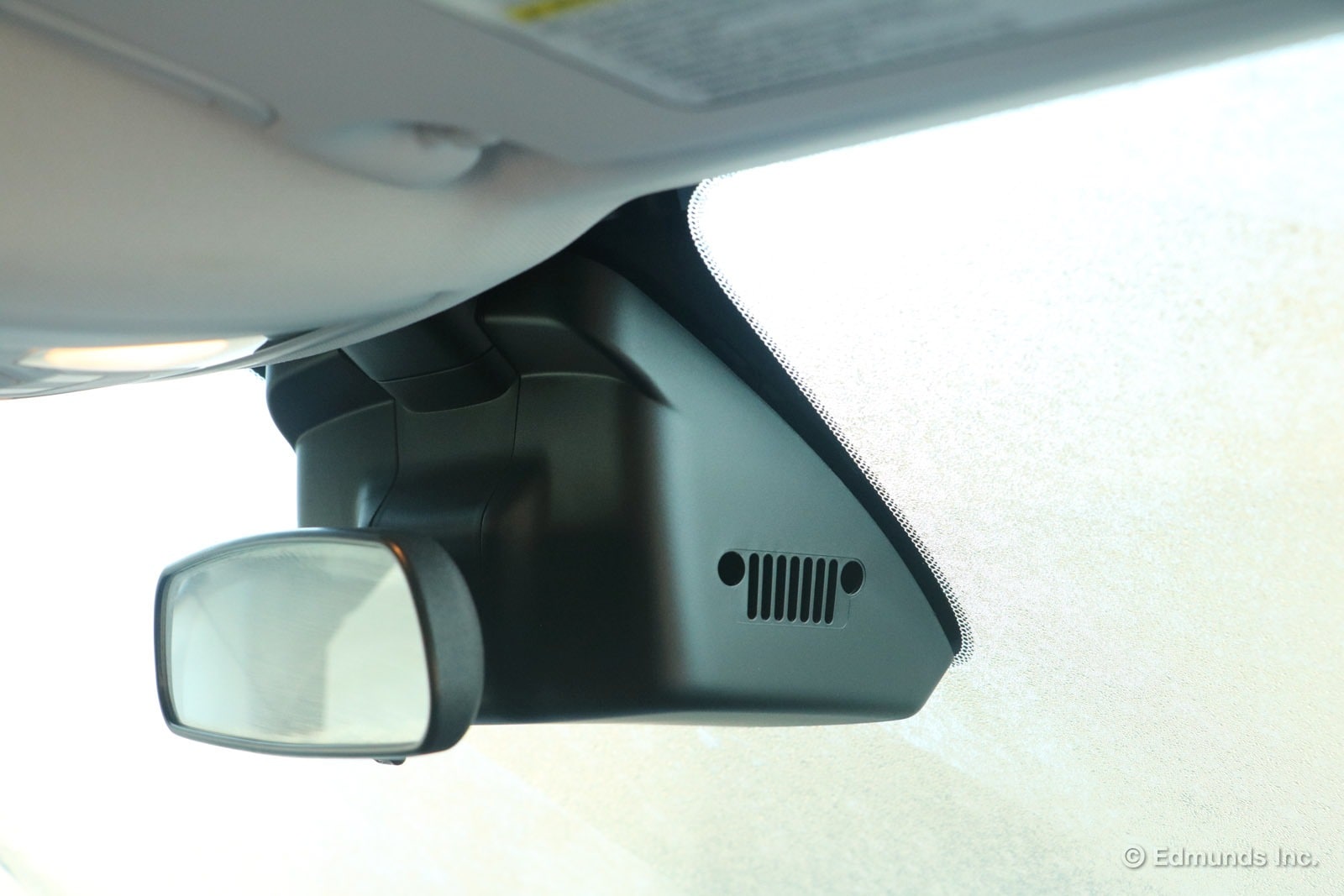
Our 2015 Jeep Renegade Trailhawk is currently under repair after getting rear-ended. But in the meantime, I'll comment on something I've noticed: there are Jeep logos and Wrangler grille icons everywhere on this thing.
It would seem that Jeep really wants to make sure you know that you're driving a Jeep product.
Besides the Wrangler grille icon on each side of the rearview mirror housing, each red door speaker trim surround piece features a little Wrangler grille.
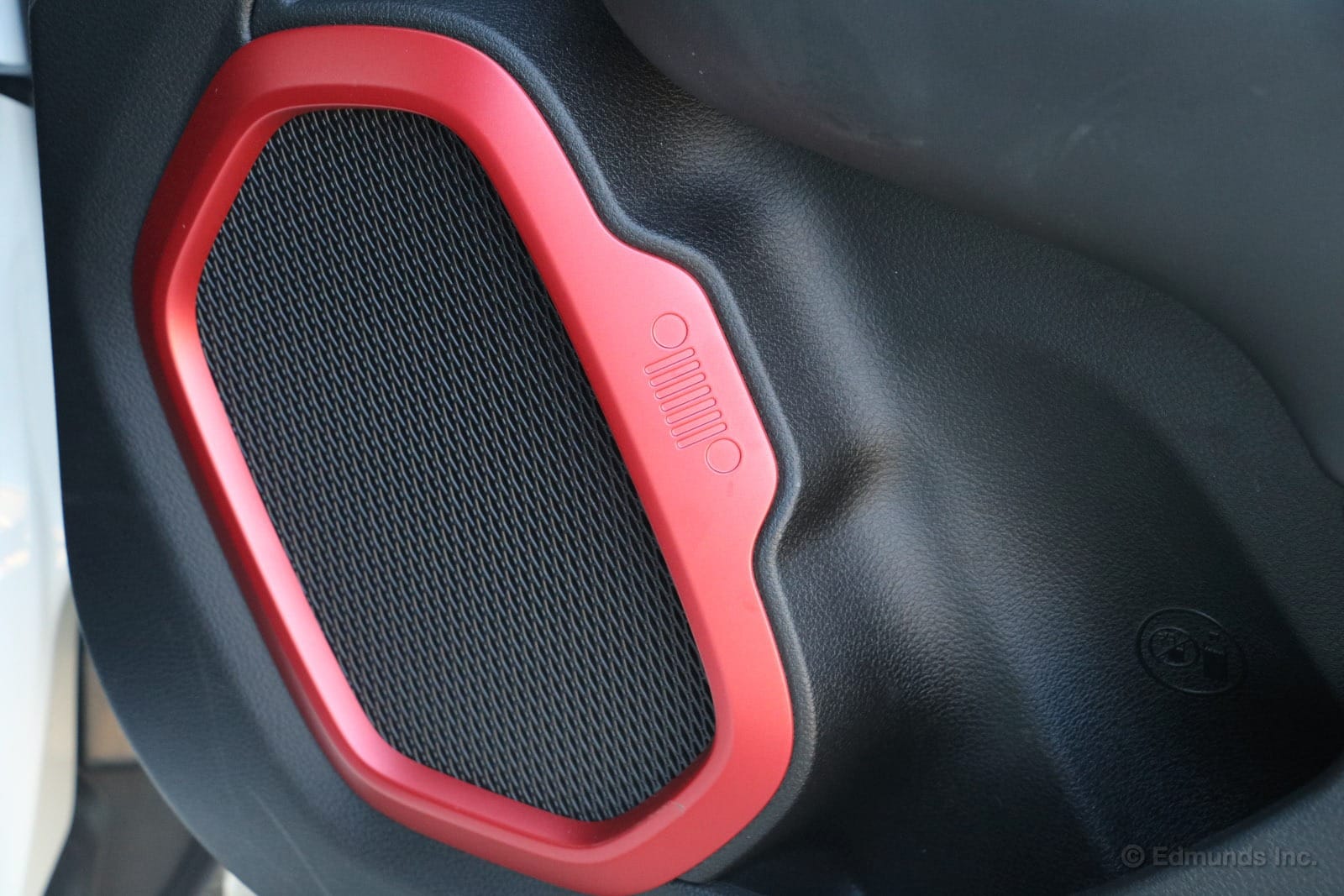
The center stack trim boldly reads "Since 1941," which Jeep uses to highlight its long-running heritage.
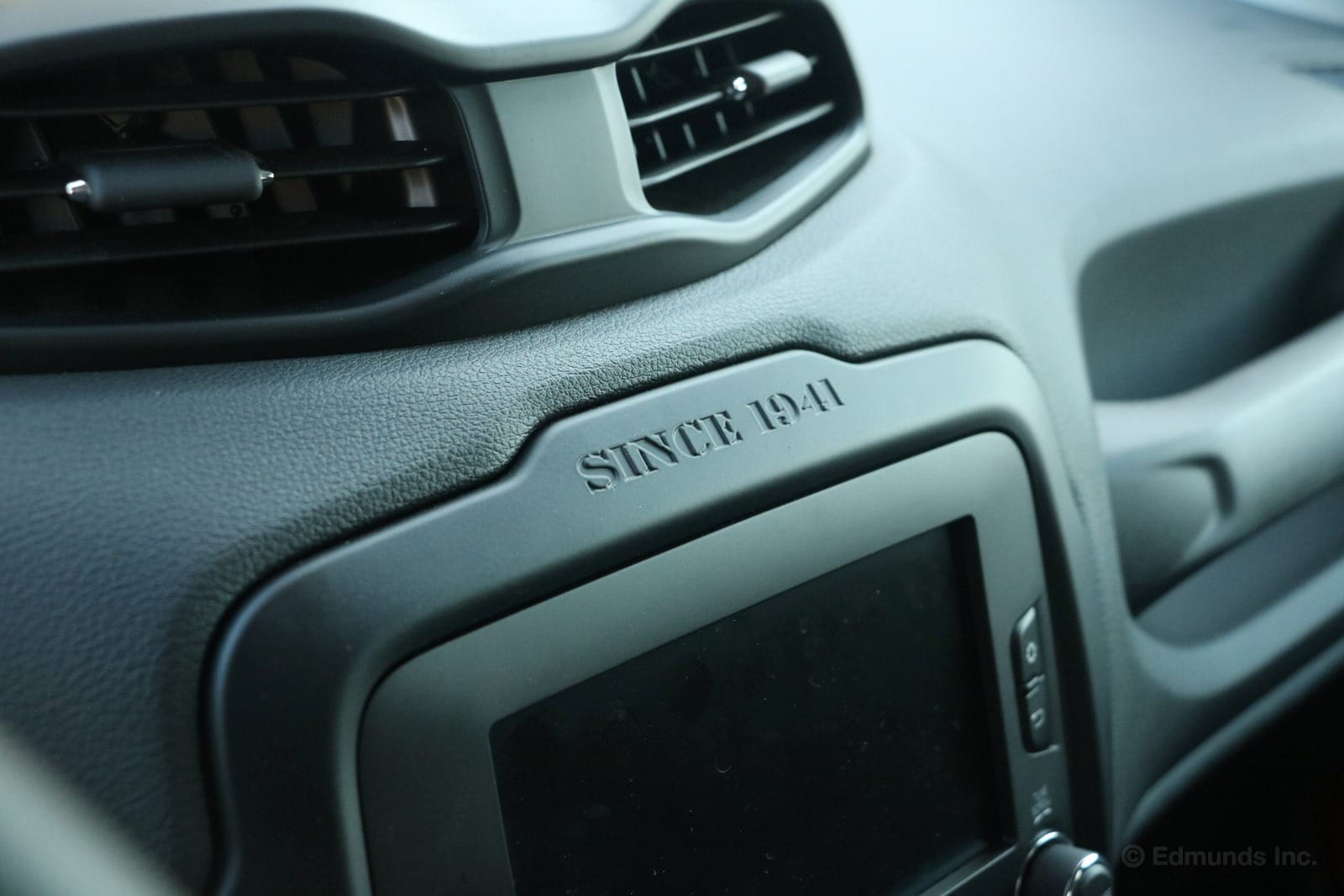
The rubber mat at the bottom of the front cubby ahead of the gear shifter is molded with a topographical map of Moab plus another Wrangler grille.

The liftgate's interior plastic panel has a Wrangler grille icon on it.
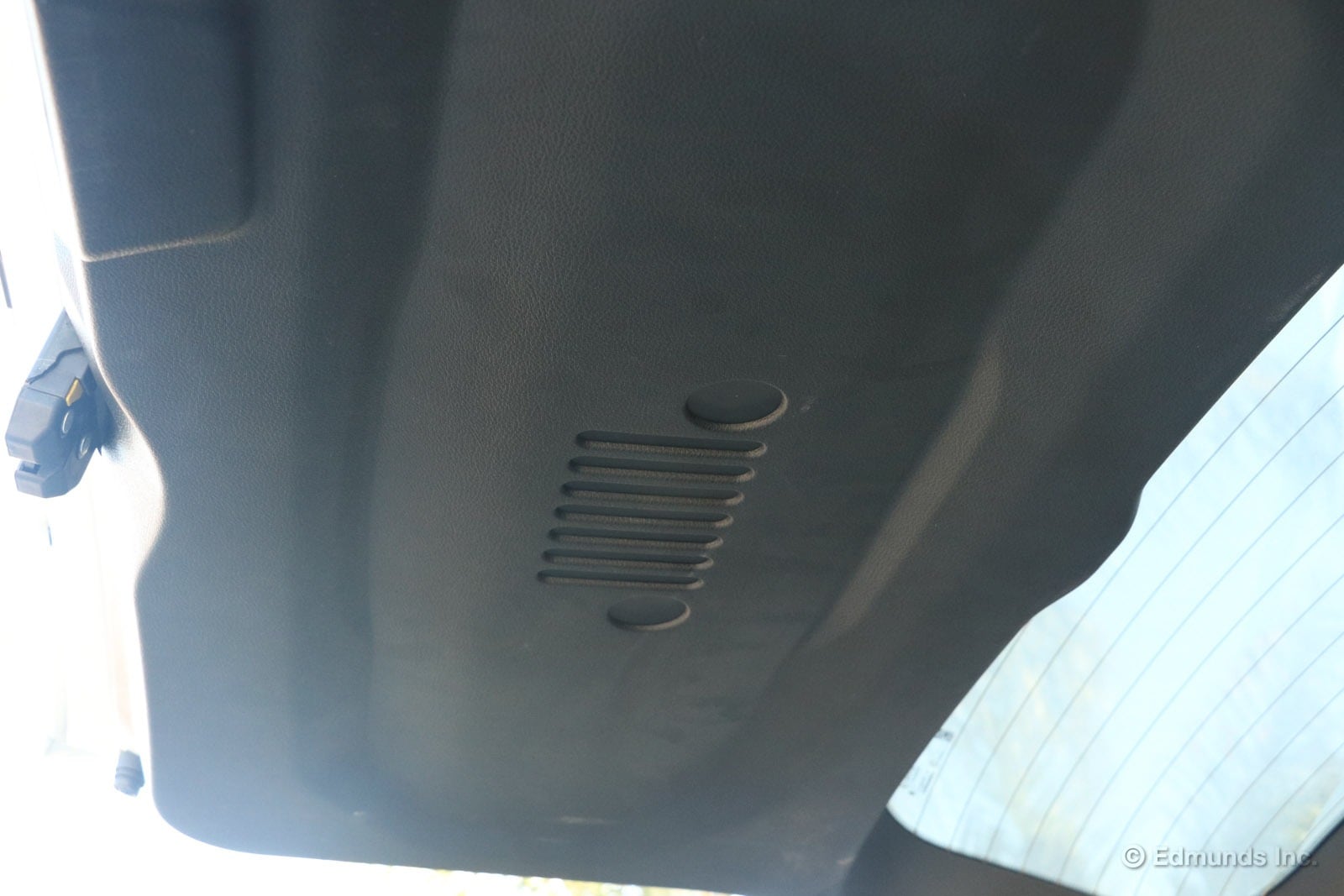
There is also a hidden Wrangler grille icon in each of the rear taillights.
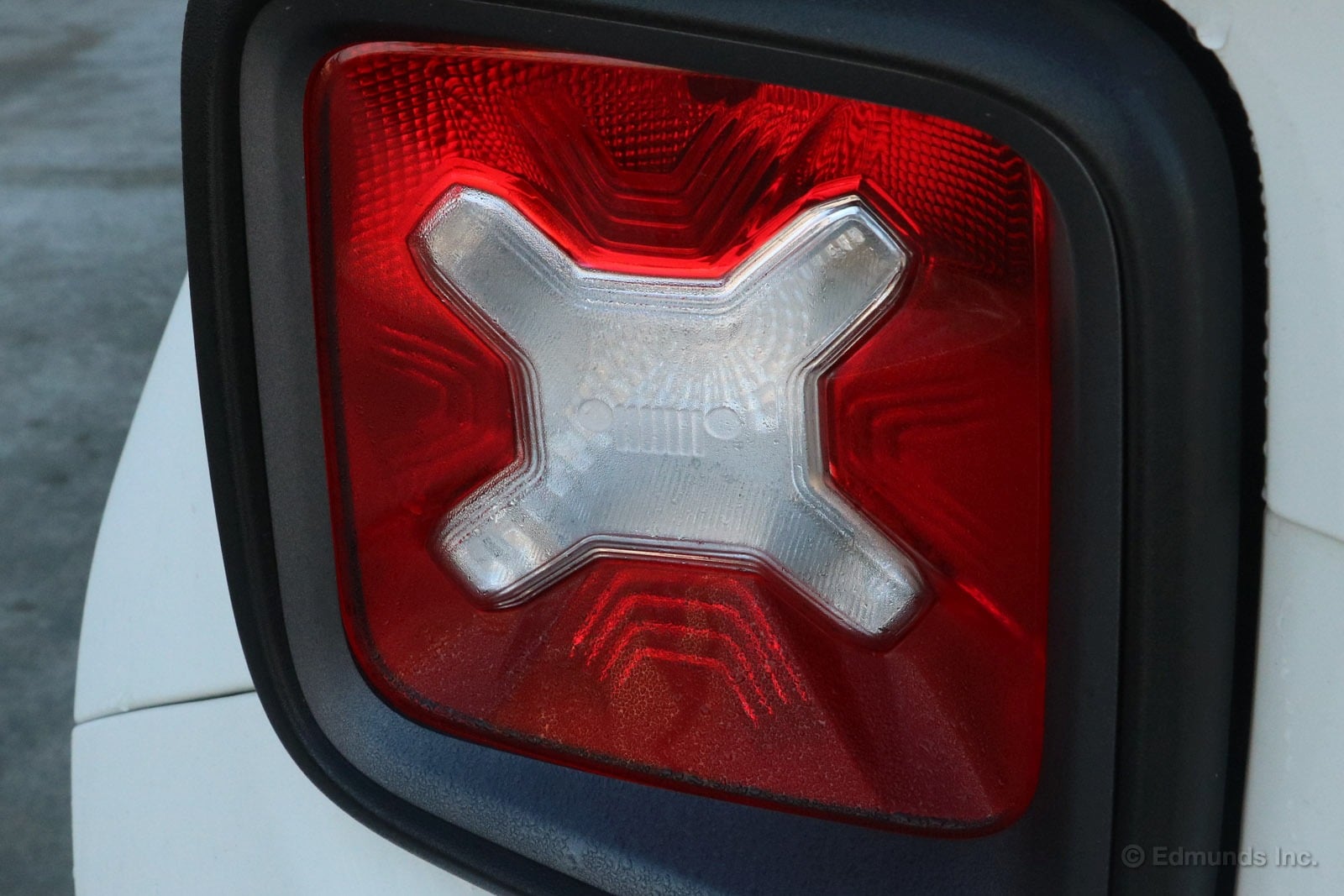
I neglected to take a picture of it, but "Jeep" is printed at the top of each side mirror glass. And while it's not a Jeep logo in the traditional sense, the tachometer's redline has been replaced with graphical mud splotch.
There could be others.
This much branding just turns me off. It comes off as overcompensation, as if Jeep is trying to make up for the fact that the Renegade is based on a Fiat. Every time I glance across one of these logos or icons it's like the Renegade is saying, "Jeep! Jeep! Jeep! Jeep! Jeep! Hey, did you know I'm a Jeep and Jeeps are cool?"
Yeah, I get it.
The interesting thing is that the Renegade has enough positive attributes to stand on its own merit. All it needs is a subtle nod to Jeep's heritage. Keeping the hidden Wrangler grilles in the taillights and Moab map and ditching everything else would have been a much more appealing approach.
Desperately Needs a Road Trip or Three
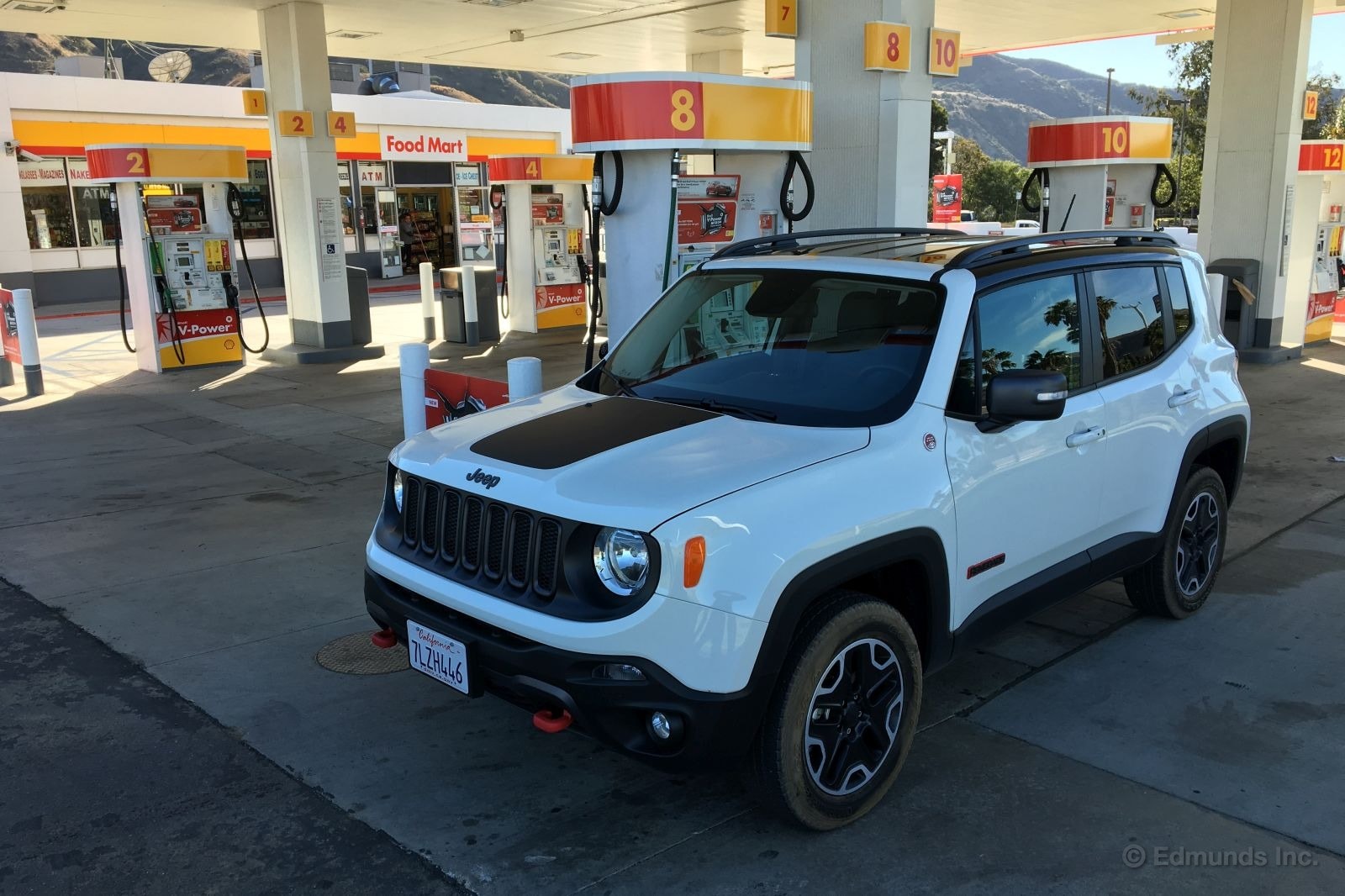
Our 2015 Jeep Renegade Trailhawk only got driven 1,022 miles this month. There was time spent idle in the body shop, of course, but it also did a lot of local commuting and errand-running on suburban roads and the notoriously gridlocked city streets of Westside Los Angeles. So much so that it recorded a new worst tank of 15.2 mpg. It needs to get out more and stretch its legs on the highway.
Northern correspondent Brent Romans was trying to oblige, but he got rear-ended before he could fully execute his plan. Still, this summary is unique in that he managed to record new best tank of 24.3 mpg and best range of 349.6 miles before he was pranged by a Civic. (**we've since noticed an error in our logbook entry that negates this best range result**).
The Renegade's relative lack of highway miles is reflected in its paltry 5,412-mile grand total and its 20.2-mpg lifetime average after almost five months in service. EPA combined is 24 mpg and EPA highway is 29 mpg, so even Brent's new "best tank" looks beatable.
Perhaps the Renegade's small trunk dissuades some of us from road-tripping this littlest Trailhawk. Methinks we need to figure out some way of 'suading them because we need to average 1,800 miles per month to end up at 20,000 miles when the Renegade leaves us next summer.
Worst Fill MPG: 15.2
Best Fill MPG: 24.3 (formerly 24.1)
Average Lifetime MPG: 20.2 (5.0 gallons per 100 miles)
EPA MPG Rating: 24 Combined (21 City/29 Highway)
Best Range: 349.6 miles 297.2 miles
Current Odometer: 5,412 miles
Behind the Scenes at the Body Shop
Soon after our 2015 Jeep Renegade Trailhawk was involved in this traffic collision, it went to the body shop. All costs were being paid by the at-fault party, so the choice of a repair location was up to us.
We drove the Jeep to a trusted local spot, Golden Hammer Auto Body, and left them to put it back together. The turnaround was expected to be quick. But there was a hiccup.
We waited longer than anticipated for parts. The muffler, specifically. Supply was limited for the all-new Renegade and it added three business days to our wait. Then we ran into the Thanksgiving holiday weekend. By the time we slid back behind the wheel, our Jeep had been out of service for 14 days.
Repairs totaled $1,614.02 and, as stated, were paid by the insurance company of the party that struck the Renegade. Big-ticket parts on the invoice included the muffler and tailpipe ($464) and the three-part rear bumper cover ($423).
Take a look at the damage and disassembly:
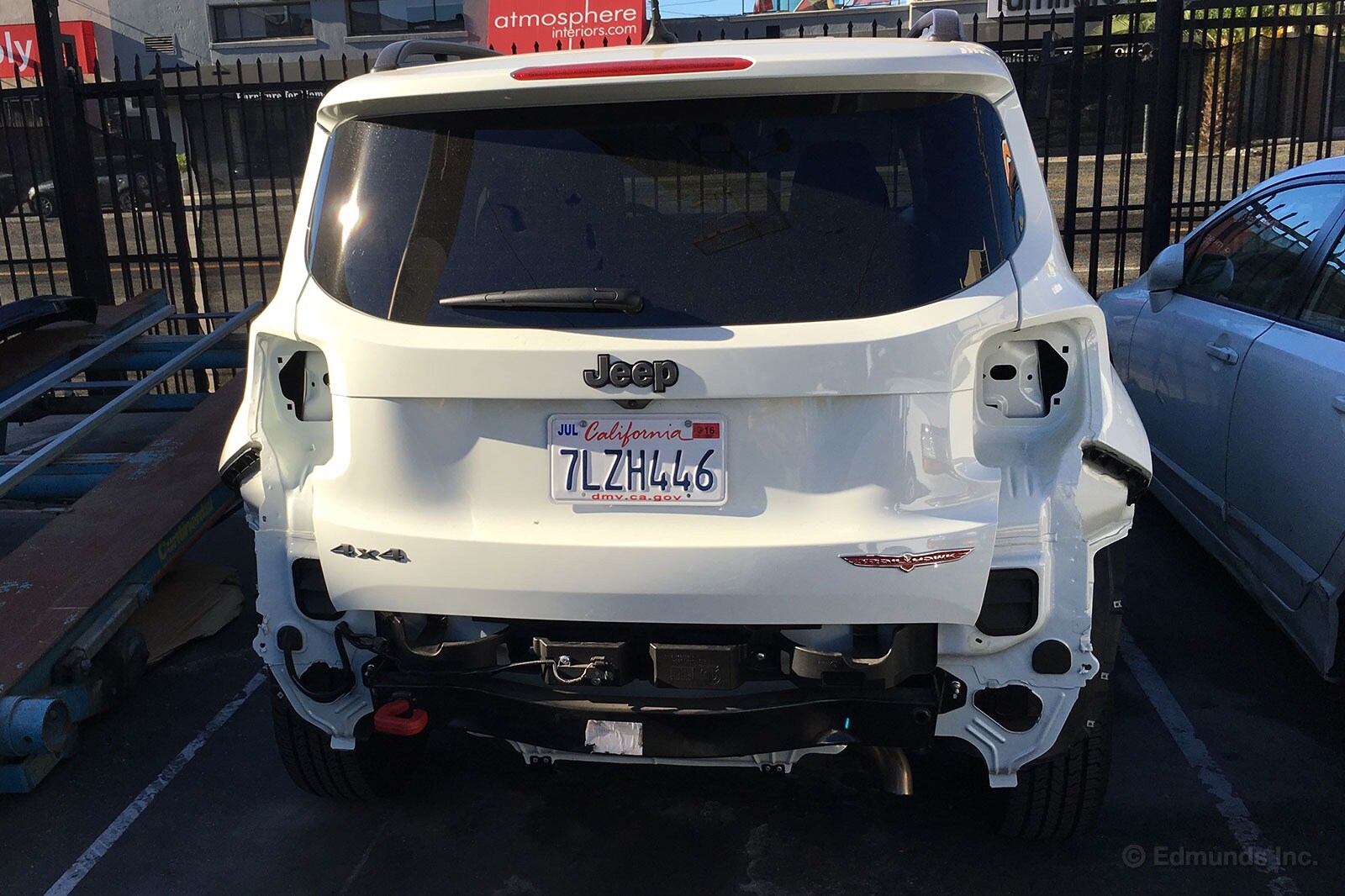
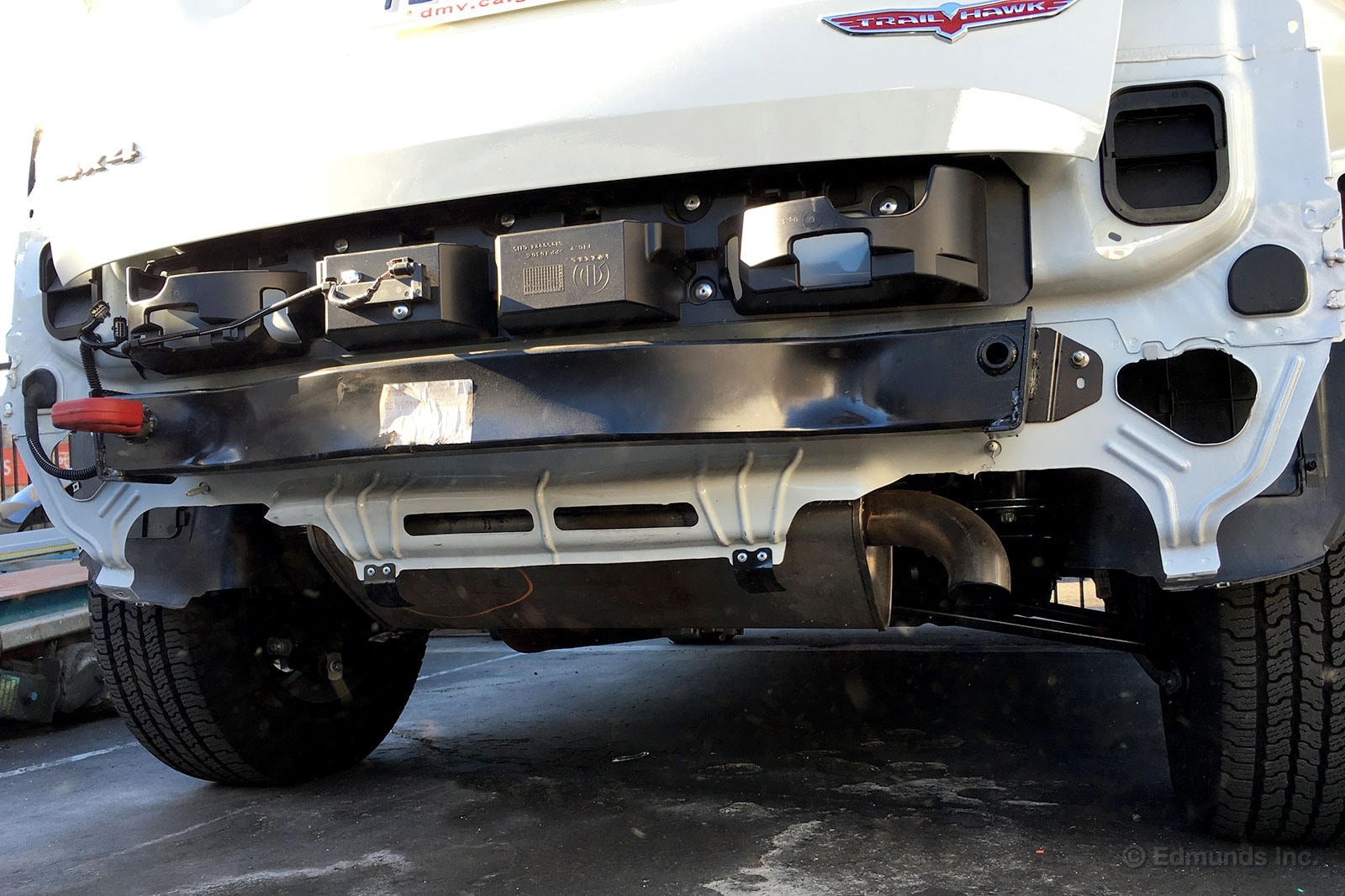
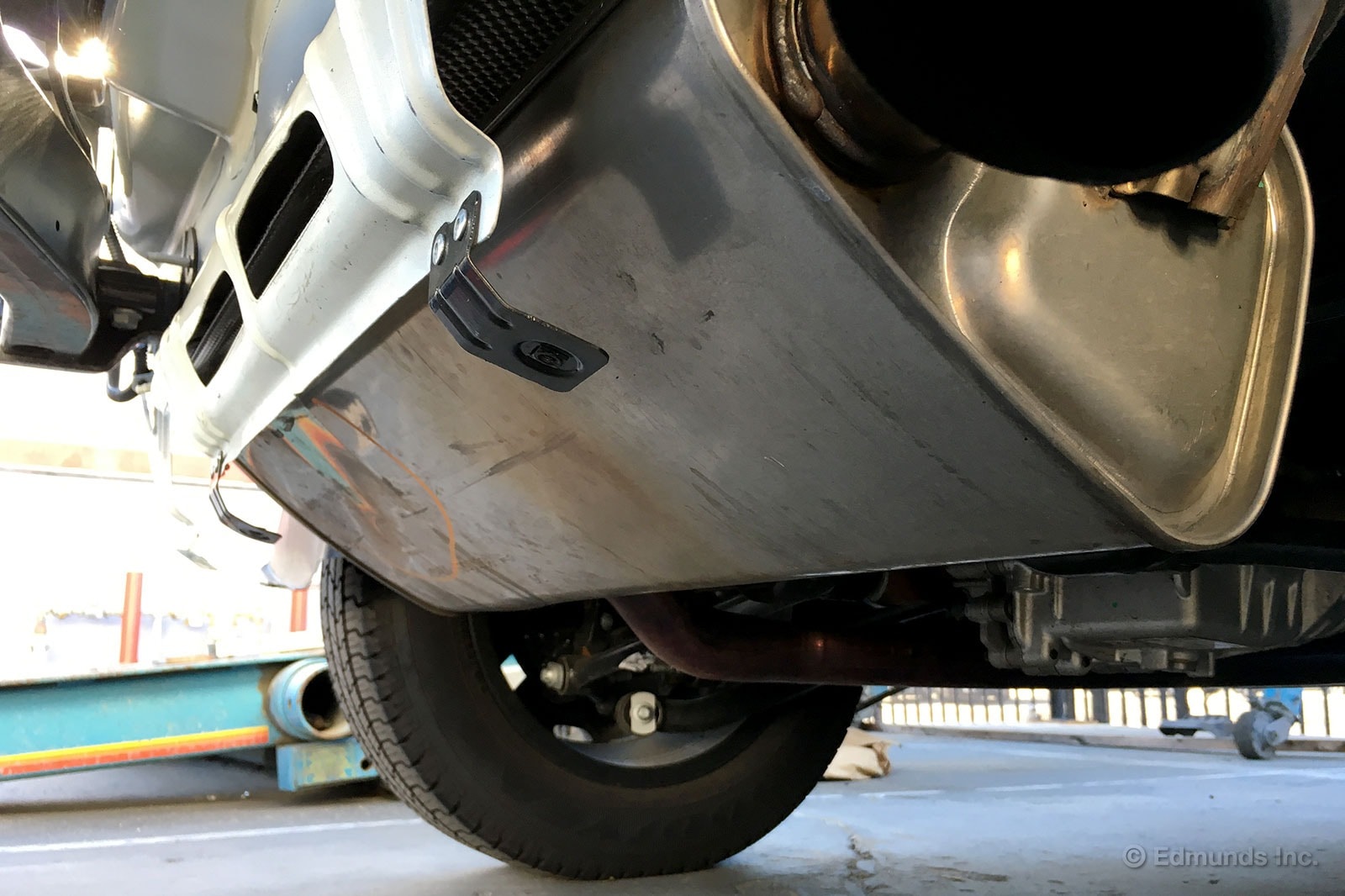
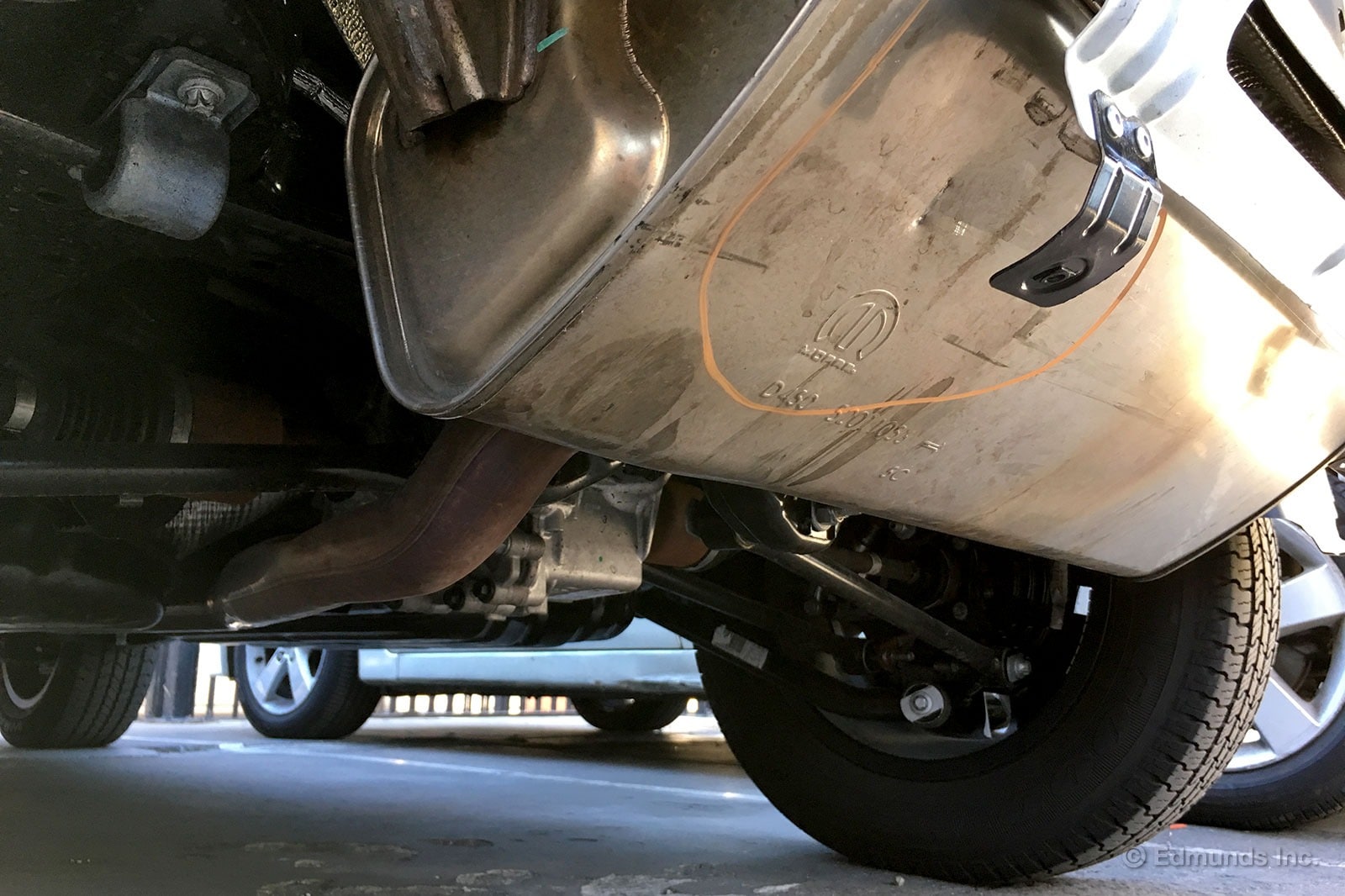
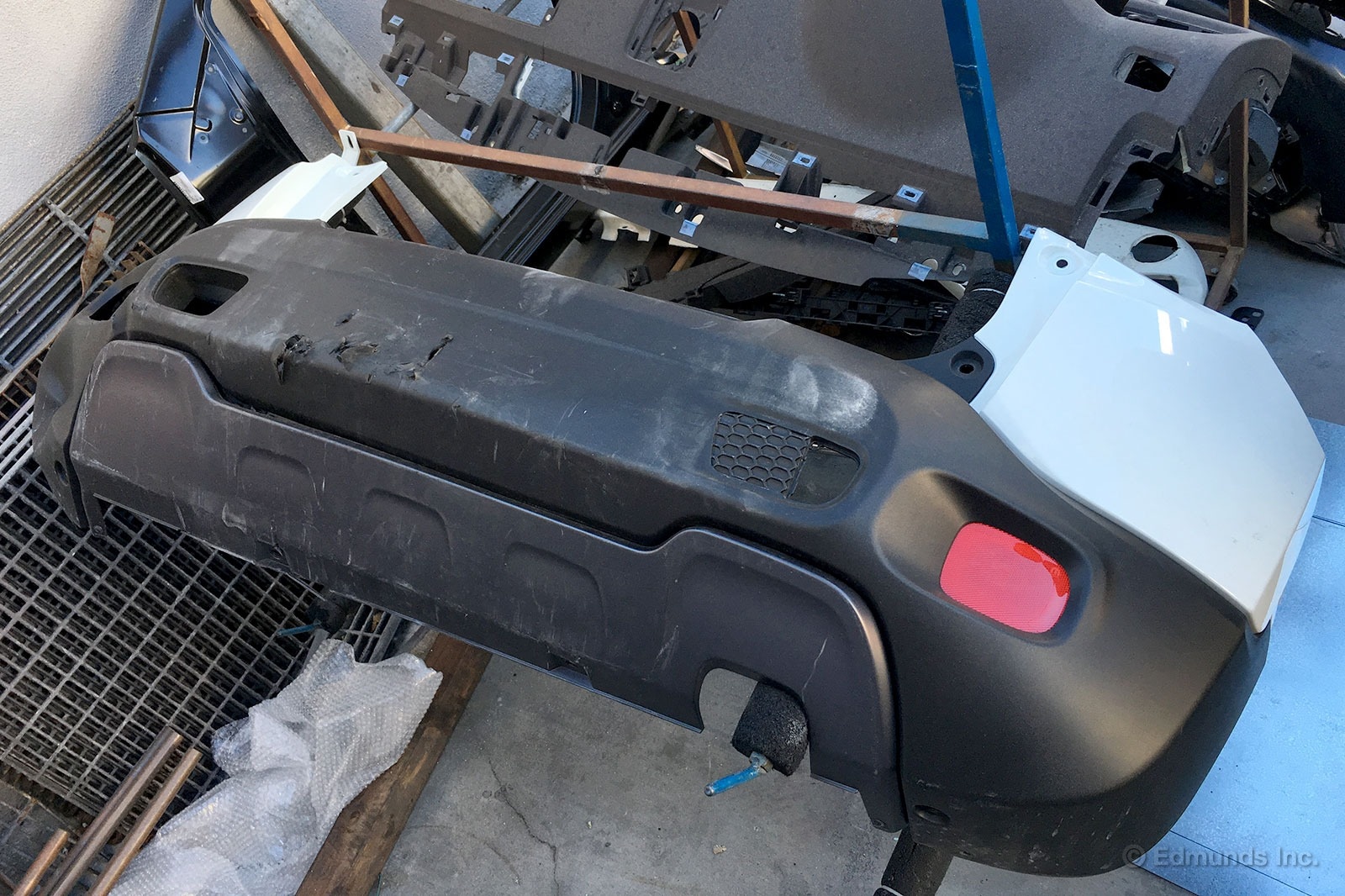
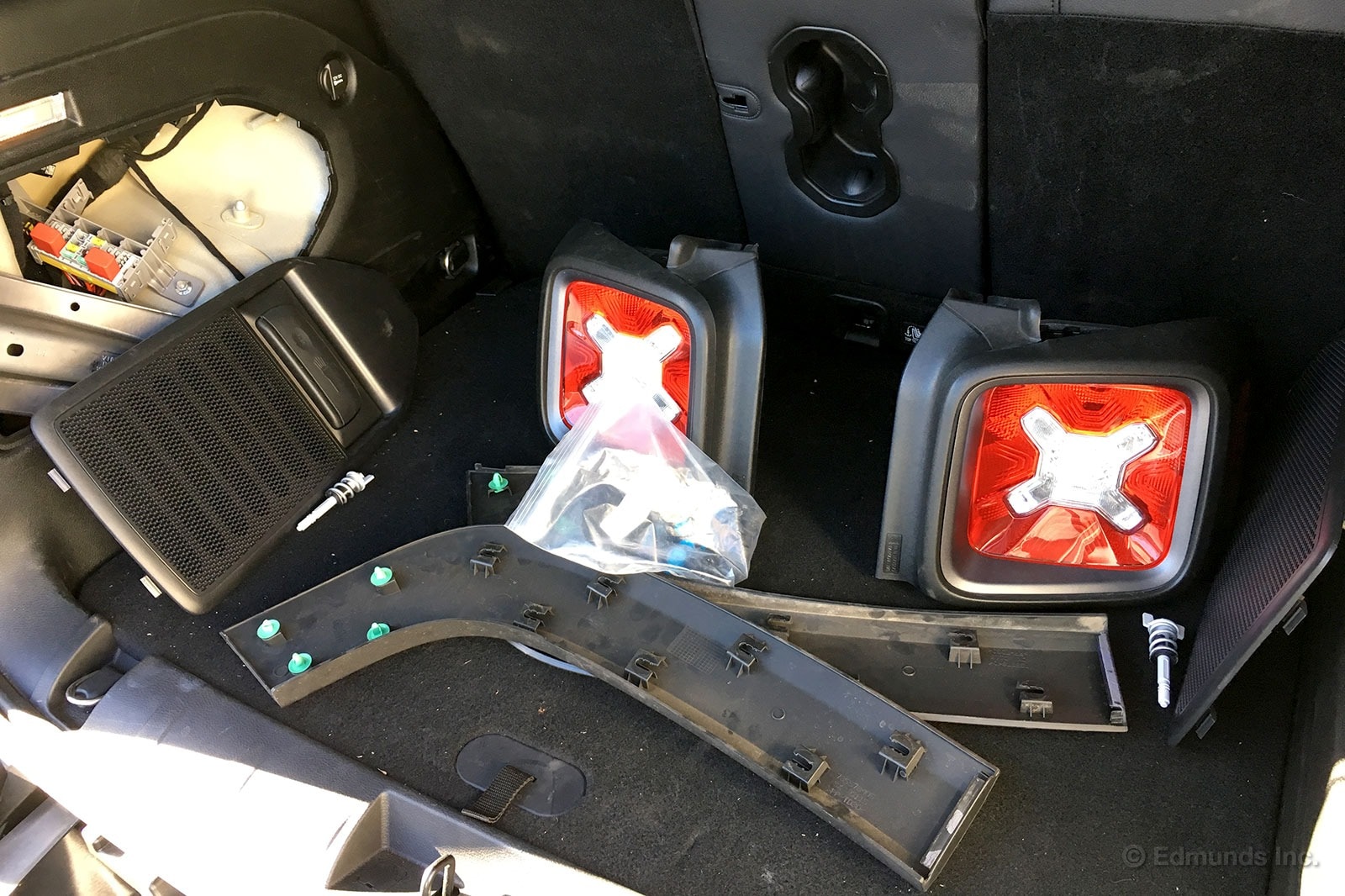
Auto Parking Brake Works Perfectly — Sometimes
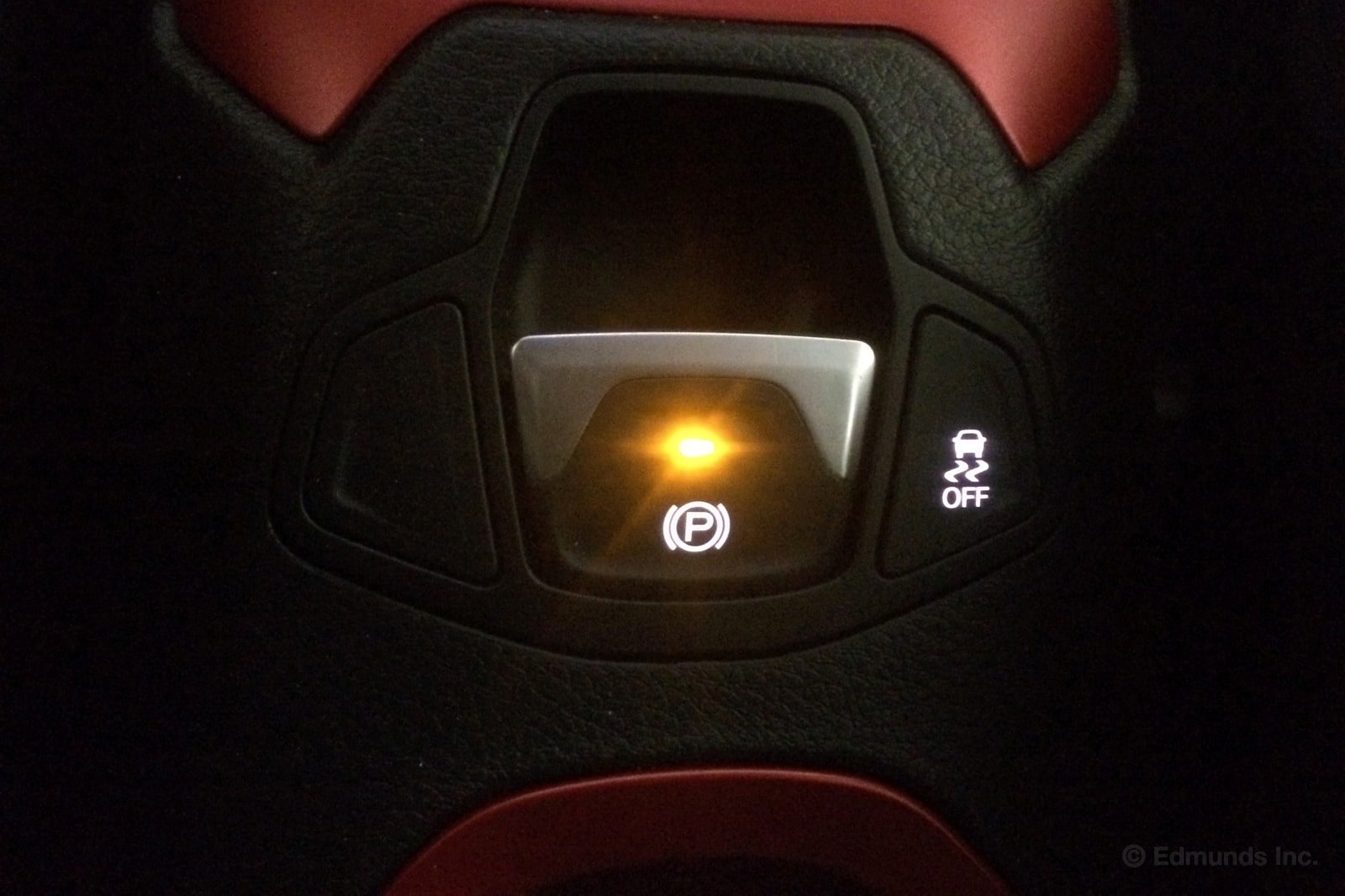
As Southern California morning temps plummet into the low 50s, seat heater utilization in the Edmunds editorial office skyrockets about 650 percent. Executive Editor Ed Hellwig was first to call out our 2015 Jeep Renegade Trailhawk's generous offerings in heat conduction. Toasty palms on a brisk morning drive are one of life's underrated luxuries.
Ed was keen to point out another neat feature in our Renegade, but one that has so far received mixed reviews. I was initially not a fan of this particular feature until stumbling upon some info in the owner's manual.
The Renegade's electronically-activated parking brake offers the option to have it automatically engage when you put the transmission in Park. A few editors, myself included, encountered some frustration with this because we'd have to manually disengage the parking brake every time we shifted to Park, even if just for a moment.
"Shouldn't the brake automatically disengage when you press the throttle?" we'd contend. Logic would think so.

Then one night as I was thumbing through the owner's manual for a direct path to shut the feature off, I found a section explaining how the parking brake function would automatically disengage with the driver going from the brake pedal to accelerator. So I tried it. And it worked. I tried it a second time. It worked again!
I felt ashamed for writing off the Renegade's parking brake feature so quickly, when it was I who wasn't pressing the brake pedal hard enough to trigger the throttle release sequence.
Later that day, leaving a grocery store parking lot with the evening's groceries, the auto disengage feature was nowhere to be found. I shifted from Reverse to Park multiple times and with deliberate pressure on the brake pedal. Nothing. I gave this up after about 15 seconds, then tried it again when I arrived at home. It worked. Of course it did.
The next morning my parking brake luck ran out again, but after the first failed attempt I went straight for the manual release. I'm not sure if it's machine or operator error at this point, but at least I know the struggle isn't entirely my own.
Into the Mountains for a Winter Hors d'Oeuvre
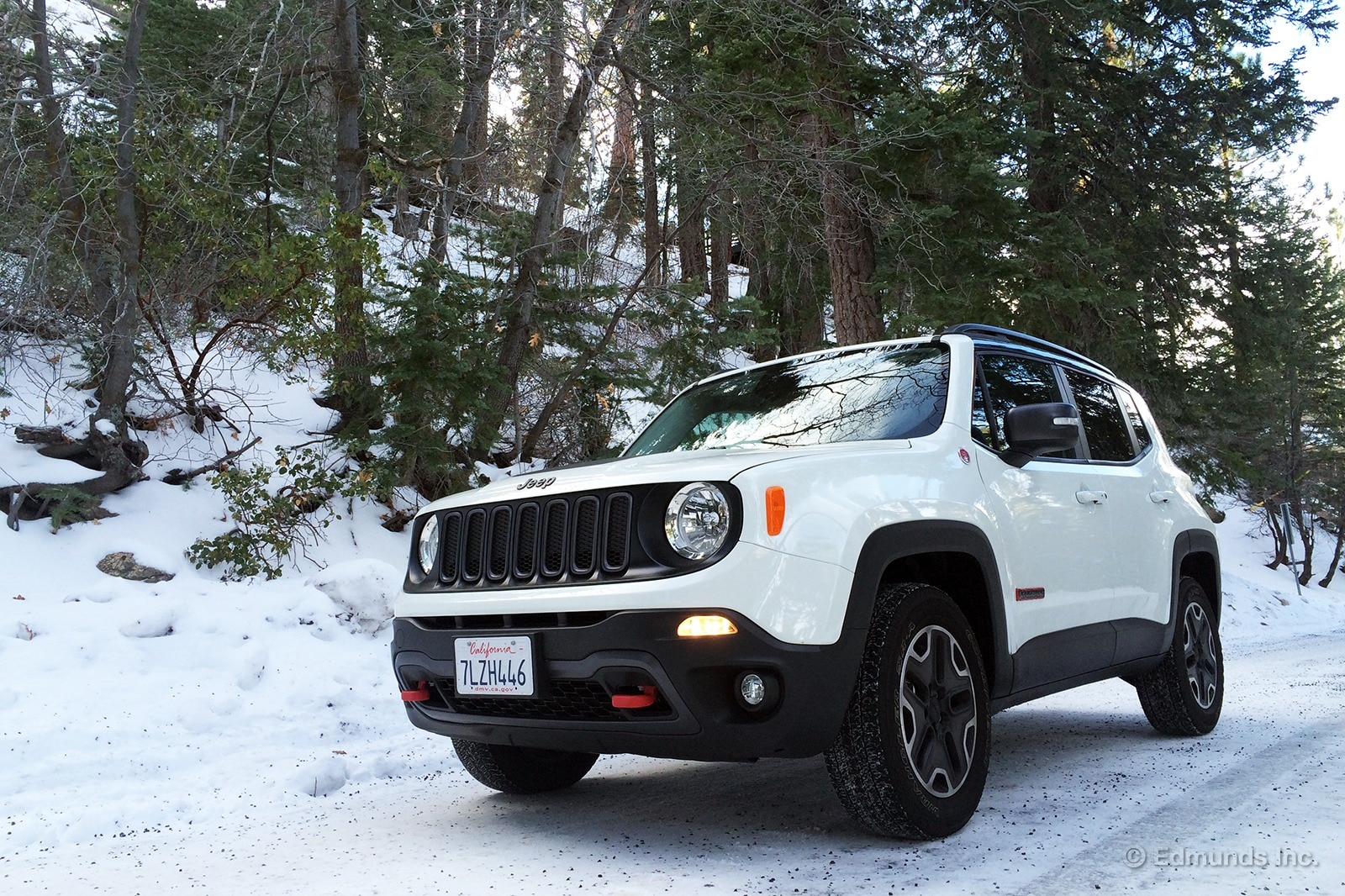
Winter in Southern California is an odd time for those who hail from more northern climes. You'll see a news report of a snow storm in Buffalo or Boston, look outside to see sunny weather in the 70's, and wonder just what the hell is going on. A quick glance at a calendar helps recall that, yep, winter still happens elsewhere. It's a bit of a man-out-of-time feeling.
Though 14 years around these parts has mostly alleviated this feeling for me, I still long for chilly temperatures and a spackling of snow during the winter (note that the preceding adjectives were not "frigid" and "grand dumping," thus explaining why I haven't returned to Toronto).
Luckily, Southern California provides an opportunity to experience a light hors d'oeuvre of winter. A mere two-hour drive from Los Angeles are the mountains around Big Bear Lake, which are cold and high enough to provide a taste of chillier places far yonder. Getting there requires a lengthy freeway drive and then a trip up the circuitous Rim of the World Highway, which can be quite entertaining should you free yourself from the inevitable people-filled Toyota Sienna or bro-dozed GMC Sierra ahead.
As such, it seemed like a pretty good test for our 2015 Jeep Renegade Trailhawk. I had already concluded that it made for a decent road trip vehicle for me, my wife and two dogs, and now we could try it out with temperatures a good 60 degrees cooler and the roads far more mountainous.
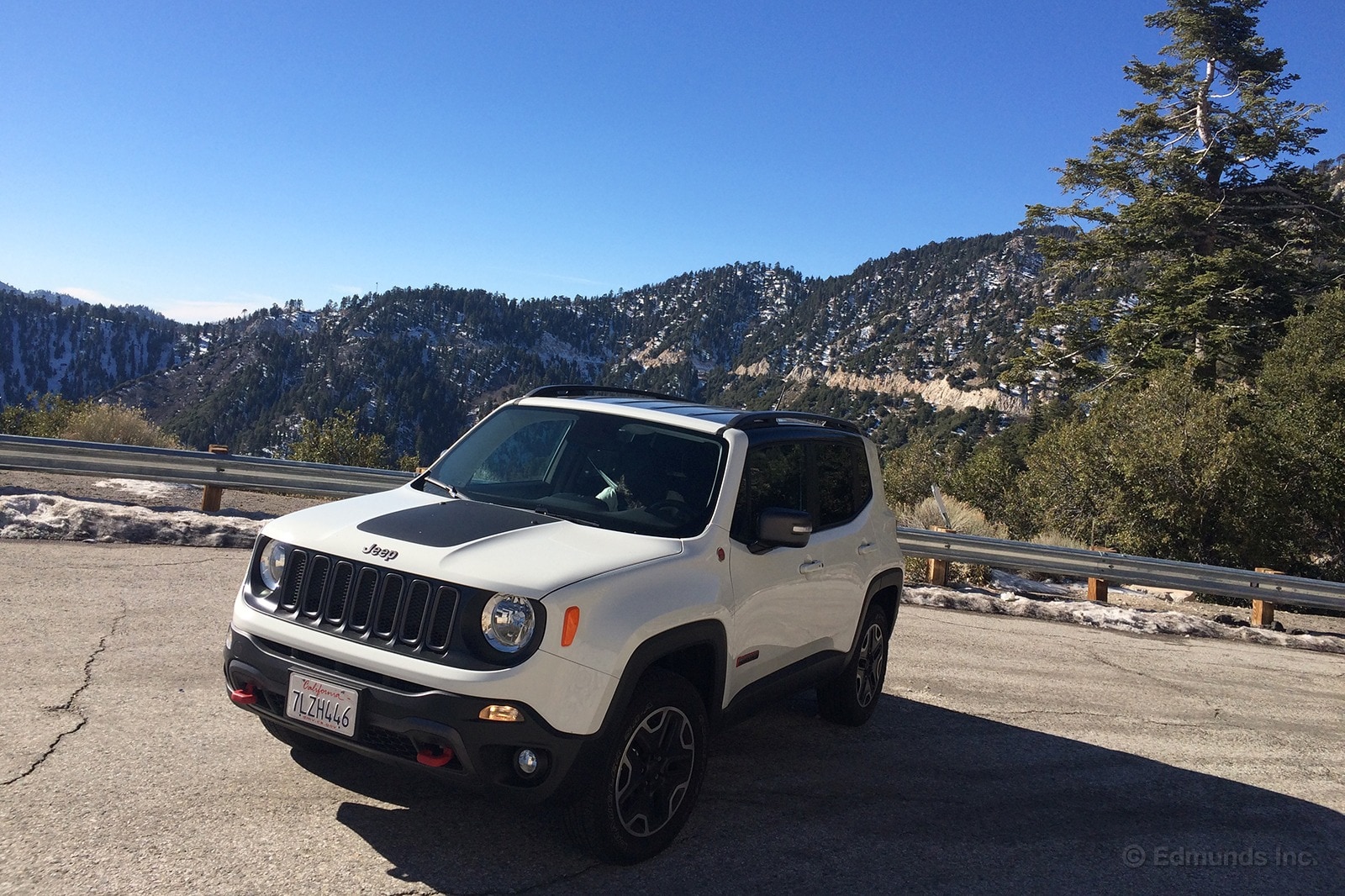
Caption: The 2016 Jeep Renegade Trailhawk on Rim of the World Highway.
On Rim of the World, the Renegade once again proved to be a surprisingly adept handler. The off-road-oriented tires are obviously ill-suited to such driving, but with precise steering and reasonable body control, I was able to keep up a rapid pace and even make mid-corner passes in the highway's few, too-short passing lanes.
Then again, doing so once again showed the limitations of the Renegade's powertrain. There's just not enough power and the nine-speed automatic doesn't do it any favors. Though it was at least smart enough to avoid the uppermost gears, the much-maligned auto nevertheless constantly up-shifted into fifth gear when third or fourth was needed. I found that the otherwise mechanically-related Fiat 500X's Sport mode corrected this problem in part.
As the Renegade is, however, it didn't take long to slap the shifter into manual mode and swap gears for myself. The shifter is thankfully oriented the right way (push for downshift, pull for upshift), but it has a mushy, unmechanical feel to it and doesn't respond to multiple downshift requests at a time. You have to wait for the gear to engage, then try again.
On the way down the mountain, it also refused to downshift into third gear for engine braking — fourth was as far as it would go despite only being at around 2,800 rpm in that gear. Multiple jabs at the shifter did nothing.
Unfortunately, snow was very light in the town of Big Bear, with only hard remnants of a small, past accumulation in some parking lots and lesser-traveled roads. That still gave me the opportunity to turn on Snow Mode, but really only because I could. It certainly wasn't needed like it was last winter when I drove the Jeep Cherokee to Oregon.
Snow Mode sets the all-wheel-drive system to behave optimally in perpetually slippery conditions, readying itself for possible sliding events and limiting an overzealous/inattentive driver's wheel-spinning throttle inputs. Included with every all-wheel-drive Renegade, Snow Mode should in theory give the littlest Jeep a leg-up on most sub-compact SUVs, but we'll have to wait for a real test another day.
If your wintery road trip includes trips up and down a mountain, the Jeep Renegade is probably not the way to go. Its engine and transmission quite simply are not ideally suited to the task. That's a pity, since its handling, size and all-weather capability make it otherwise rather appealing for a single person or a young couple in a frosty climate — or those in a warm one looking for a brief taste of home.
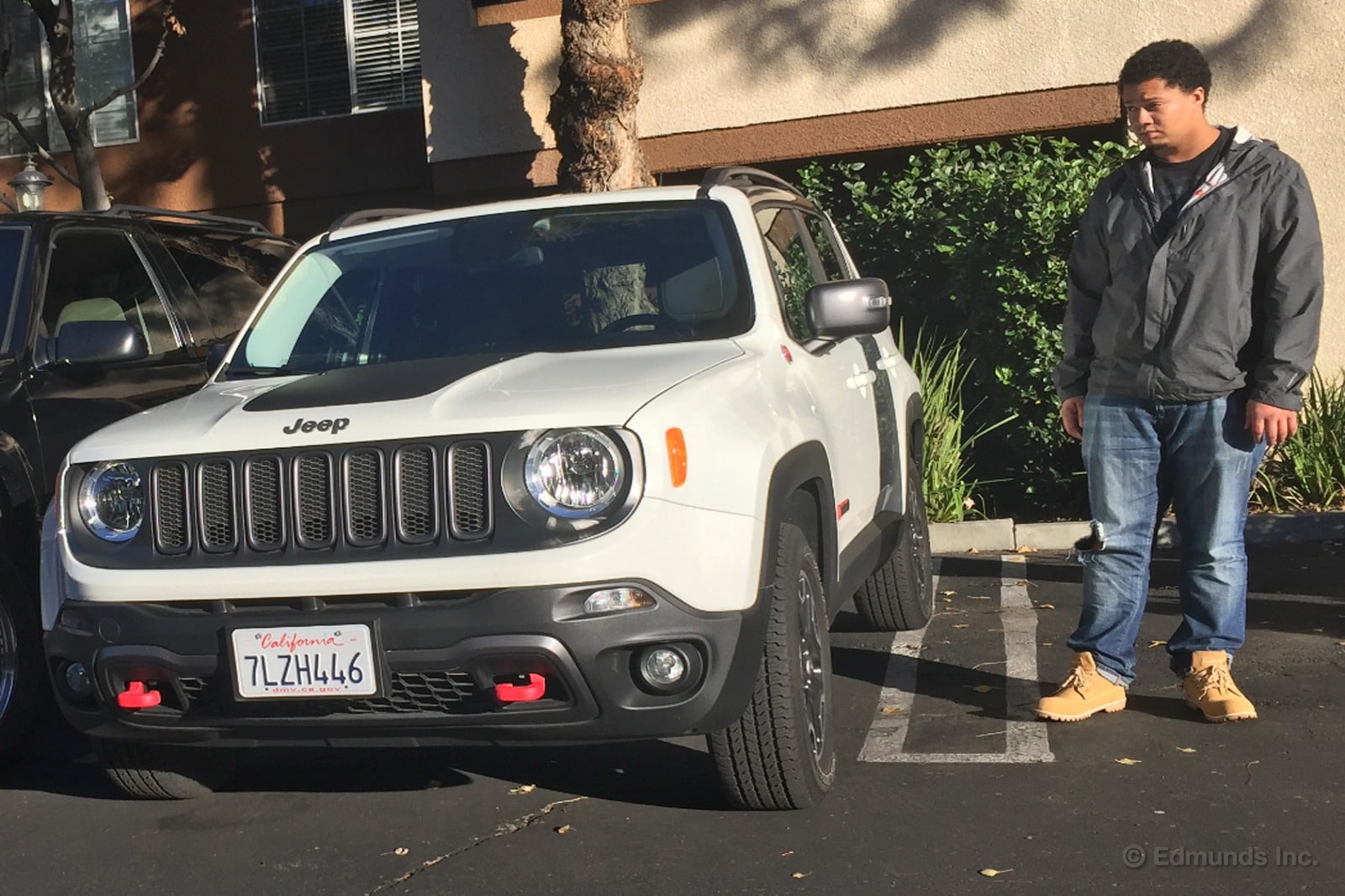
For my kid.
I just spent about 20 hours and 1,000 miles in our long term 2015 Jeep Renegade Trailhawk. And although I wouldn't get one for myself, I think it would be great for him.
Not just because my son has the frame of a 90's-era defensive end and the Renegade has gobs of room for a driver of his size, and not just because it's fun, funky, and fits in with the supposed lifestyle that ad agencies would have you believe kids his age lead — beach bonfires, tailgating with guitars, laying on the roof gazing at stars.
I'm sure the Renegade would excel in all such activities. Despite those wins, they aren't the reasons I'd like him to have this car. No, I'm more interested in the car's shortcomings.
Some of the other things that make this thing perfect for him, as a newish driver:
It moves, but it's far from fast. The 2.4-liter four-cylinder engine does just fine in getting the 3500 pounds up to speed, but there's no chance whatsoever he'd ever be tempted to race somebody in it. None.
It is loud. I don't mean AC/DC concert loud, you understand. But loud enough that wind noise wants to be part of the conversation anytime you get up past 65, 70 mph on the open road. It's easy to not notice how fast you're going in a whisper-quiet car. A little wind noise would keep him on his toes. And that’s okay. It's not made to be mausoleum quiet. I mean how silent would you expect a car to be that adds a splash of mud look to the tach?
Speaking of sound, here's another audible option that makes me like the Renegade for my son. Once you hop in the driver's seat, the Jeep is incredibly good at reminding the driver to click in the seatbelt. I'm not saying that the ding-ding alert is deafening, but it's unlikely anybody will ignore it. And it's insistent.
The Renegade rattles over bumps. The Bluetooth connection isn't the fastest. Sometimes the back-up camera lines work, sometimes they don’t. What other drivers may call quality flaws, I call character builders.
Before you think I'm "throwing shade" on the Jeep, let me say that I'm not. I actually like the Renegade a quite a bit. If I didn't, I wouldn't consider getting one — hypothetically of course — for my one and only offspring.
I like that it isn't pretentious. It doesn't try to elegant you with piano finish this, chrome that, or suede-feel this that or the other (although the heated steering wheel is certainly a welcome touch).
When driving the Renegade, I got the feeling that it wants nothing more than to be a smart, tough compact SUV, one that has a firm sense of its own identity. It's not perfect and it doesn't pretend to be. But it's useful, has durable interior materials, drives well (if not rocket fast) and is fun. I'm all over that.
Oh and Matt Jr., if you're reading this, don't get your hopes up. I'm not buying anybody anything.
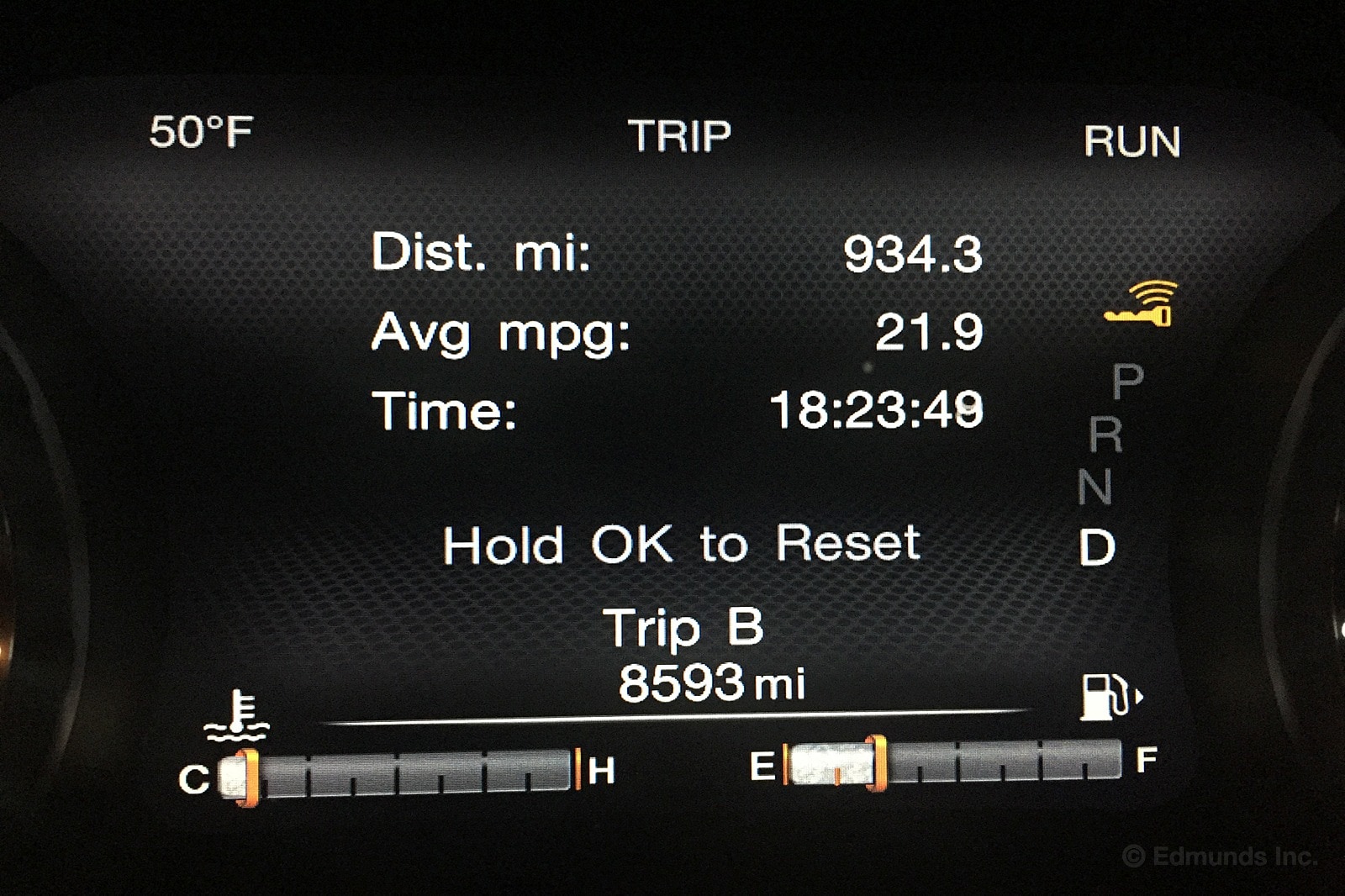
I drove our long term 2015 Jeep Renegade Trailhawk up to the Bay Area to hang out with my mom for Christmas. The trip there and back was roughly 930 miles. I'm not sure how many times I've made this trip, but if I had to guess, I'd say at least 30 times in the last 10 years.
I've never had to stop for gas as often as I did while driving the Renegade.
That's not just because I averaged less than 22 mpg. With its 12.7 gallon tank, I had to stop for a petro refill about every 230 miles. I'm sure there a great many reasons why this SUV's gas tank is smaller than a 2005 Toyota Corolla's, and I'm sure they all make sense. But if I were designing a vehicle that didn't get butt-kicking gas mileage, I'd try to incorporate a larger gas tank. Just saying.
On the plus side, if I was making the trip with somebody who needed a bathroom break every few hours, I guess this could be seen as less of a limitation and more of an road trip blessing in disguise.
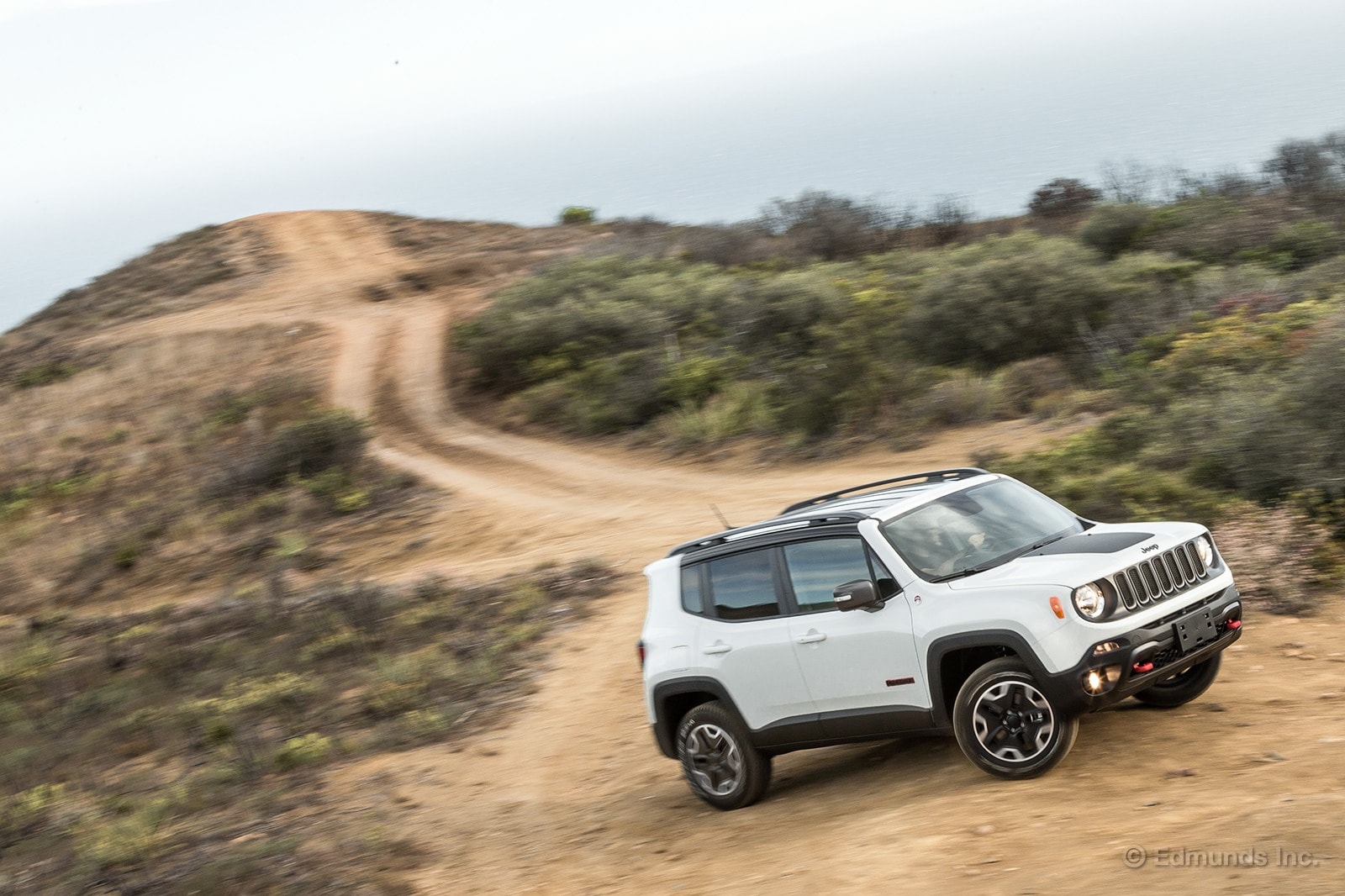
We've had it. Goodbye, city life.
It's time to blow this concrete jungle for a few days, take our 2015 Jeep Renegade Trailhawk somewhere it belongs, and see America the right way. By car. In winter.
If you've followed the blogs for any period of time, you know this game. We're strapping one of our editors (Travis Langness) into a car, making him drive to the Detroit Auto Show, and then chucking the keys at yours truly to drive it back.
But instead of a set-the-timer, dodge-the-tumbleweeds straight-shot across the Midwest, we're making a proper trip out of this.
We're going to hit the Grand Tetons, Mount Rushmore and more. Probably. Figure it'll be 5,000 miles over 10 days, maybe more of both depending how we feel. This trip isn't about planning, it's about getting outside.
Our Jeep's four-wheel drive is a plus. The sluggish-at-sea-level powerplant probably isn't. The heated seats and steering wheel will be used the whole time.
If you don't follow Edmunds on Twitter and Instagram, go do that to keep tabs on the trip in near-real time. We leave soon.
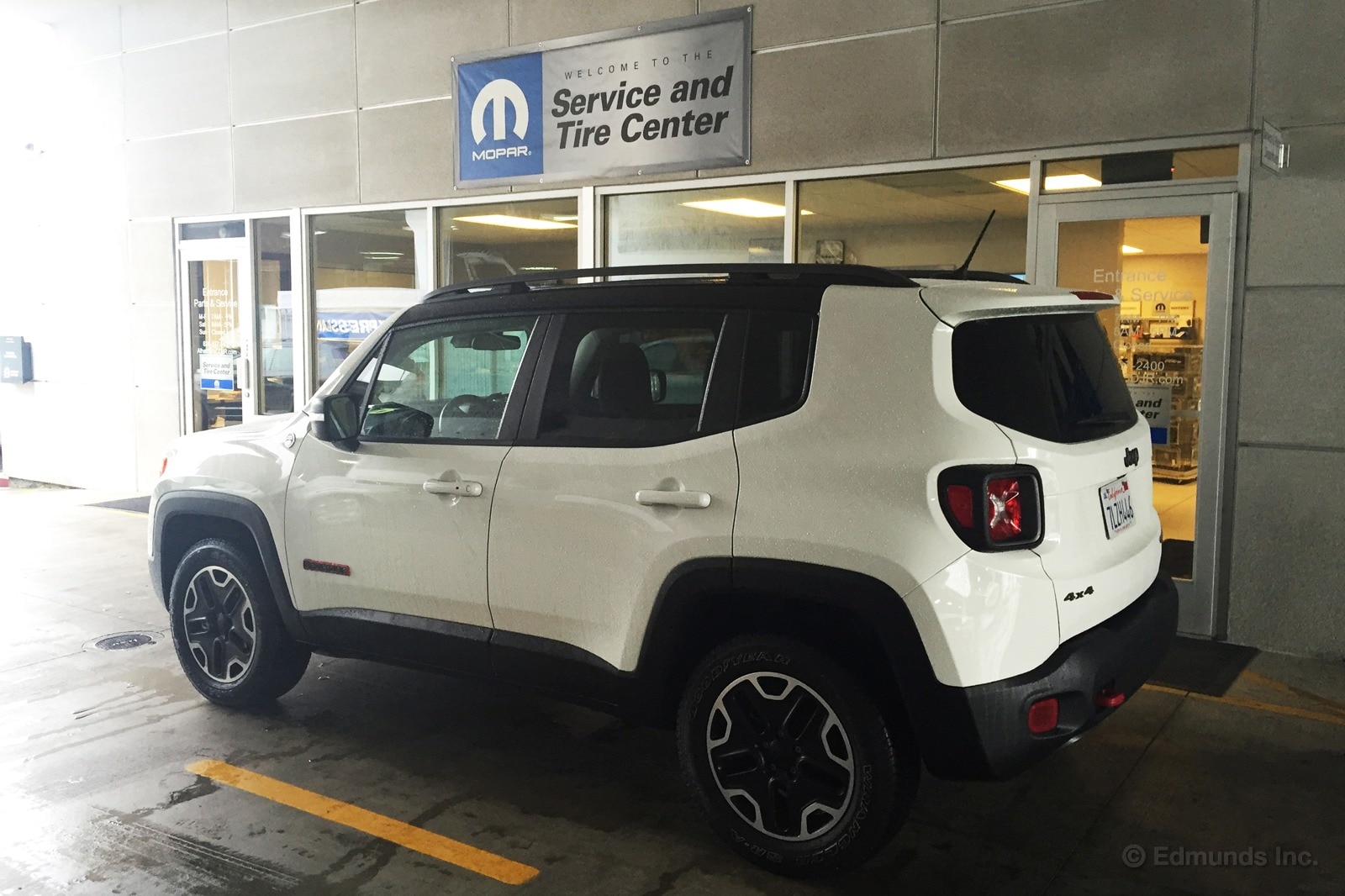
Just in time for the holidays, the Engine Oil Life Low notification appeared on our long-term 2015 Jeep Renegade Trailhawk. The notification appeared at around the 7,500-mile mark, and with the Jeep set to leave on road-trip duty, I only had a couple of days to get it in for its first service.
Initially, we tried to drop off the Renegade on the way into work. Unfortunately, the first dealer we tried was so busy that we couldn't get an appointment until after the New Year.
Defeated, I looked around for other dealers in the Los Angeles area. Alhambra Chrysler Dodge Jeep Ram, the dealer where we purchased our Renegade, is about five miles from my home. They also had an appointment available for 9:00 a.m. the next morning.
I dropped the Renegade and was given an estimate of two hours, a fairly typical duration for a first service, in my experience. Because we purchased the Renegade from this dealer, all of the car's info was already in their system and I only needed to provide my name and phone number.
This is also when the service advisor informed me that the 2.4-liter engine in our Trailhawk model required more expensive synthetic oil.
A little more than two hours later, I was back at the dealer. Unfortunately, the service advisor who called me 15 minutes earlier was nowhere to be found, causing about a 10-minute delay while another advisor had to pull up the file and close out the transaction.
All in all, it was a mostly painless experience.
Total Cost: $145.36
Total Days out of Service: None
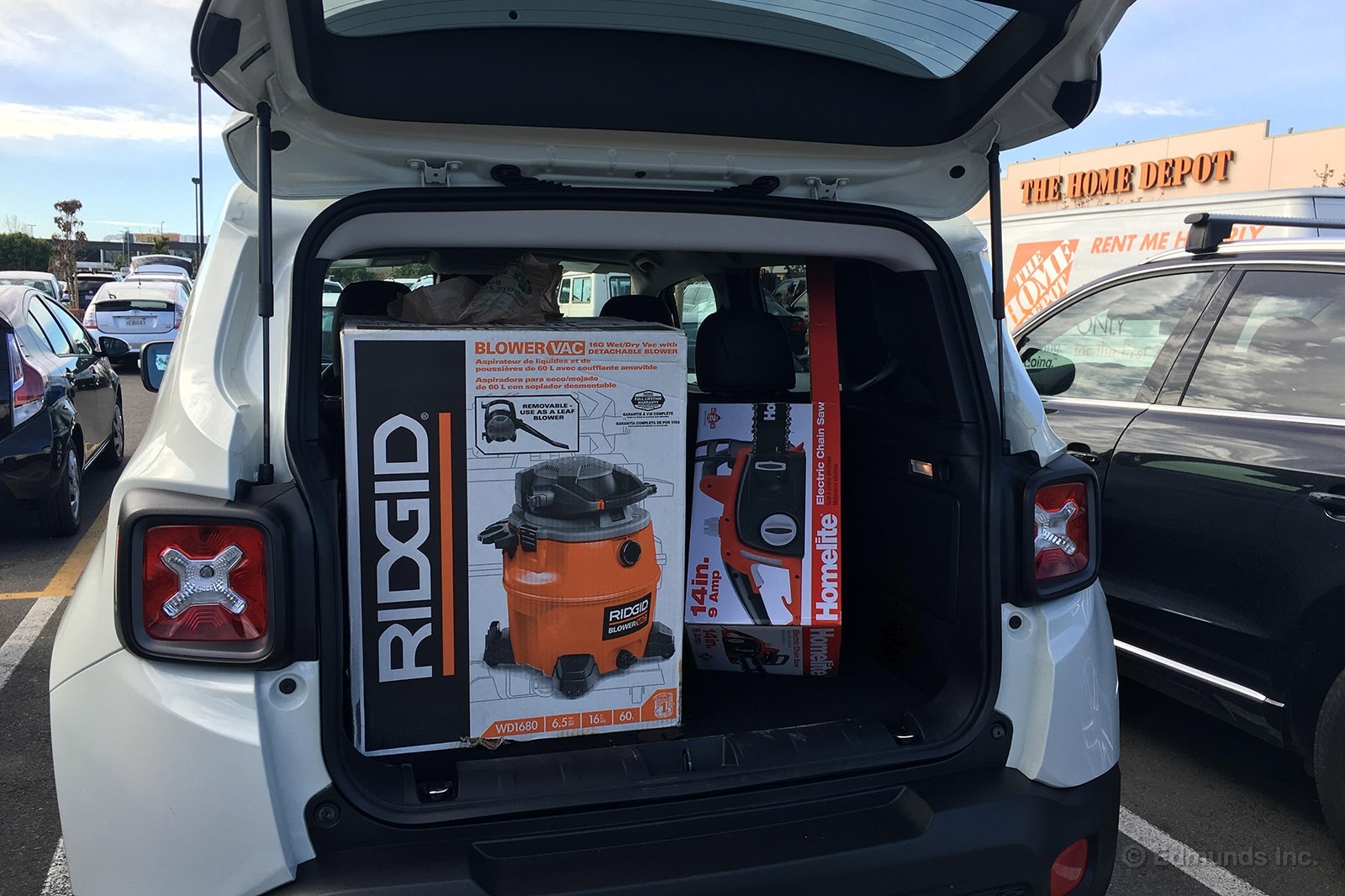
Today we take down the Christmas tree, but first, Home Depot here we come. Daddy needs a new chainsaw and a big ol' Shop-Vac, one with enough suck for the inevitable mountain of pine needles and the nasty spill of dirty stand water.
So we fire up our long-term 2015 Jeep Renegade Trailhawk with the hope that its 18.5 cubic feet of cargo space behind its split-folding rear seat will be enough.
I had my doubts.
But the Renegade got it done, and with room to spare.
And the tree? Well, let's just say that power tools are a wonderful thing.
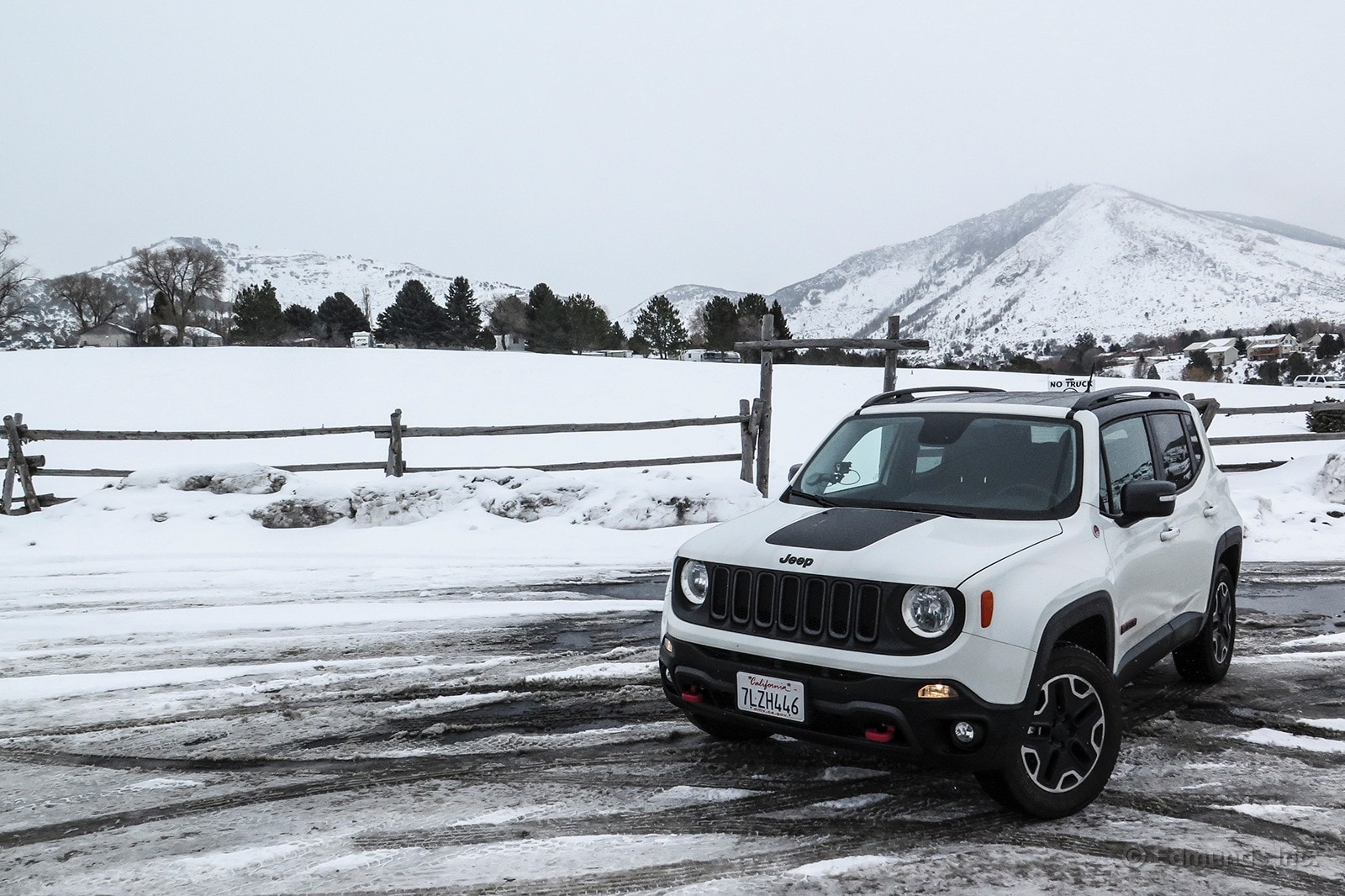
We may have been low on miles in our long-term 2015 Jeep Renegade Trailhawk a few days ago, but that's not the case anymore. I spent a few days driving the Renegade to the Detroit Auto Show (also known as NAIAS) and took the long route.
I traveled the northern route, which had the extra miles the Jeep needed. Two days into the trip, it crossed 10,000 miles somewhere in the Idaho backcountry. Before I go in to the details of the trip and how the Jeep performed, here's a recap of maintenance during the last few months.
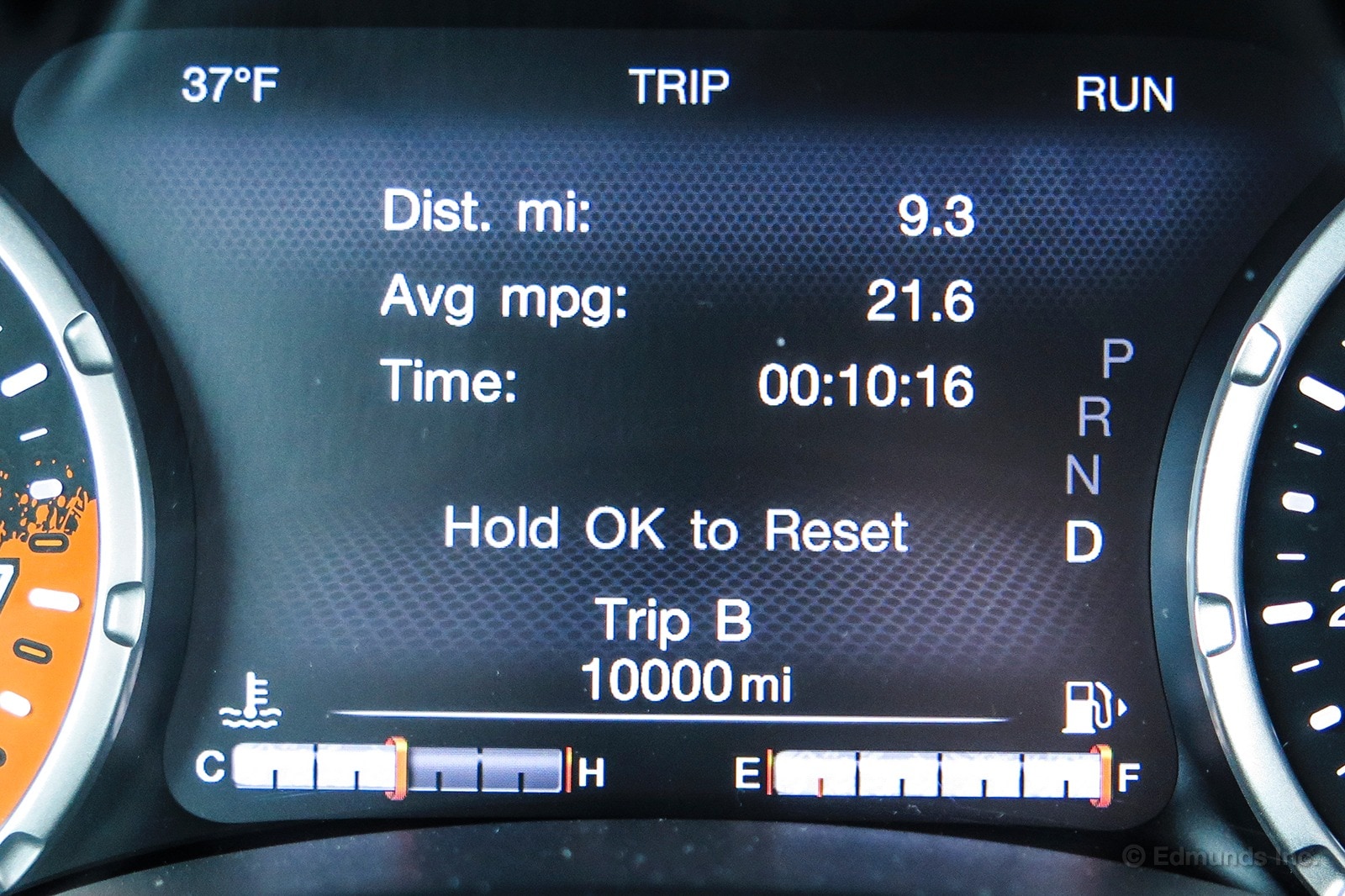
Early in the test, the Renegade developed a rattle in the rear. That one was fixed DIY-style by Editor Carlos Lago. A few weeks later, the Jeep got up-close-and-personal with a Toyota Celica. It wasn't really regular maintenance, but the Jeep was out of commission for awhile for repairs.
It was smooth sailing until recently, when the Jeep went in for an early (and pretty pricey) first service at a local dealership service center. Stay tuned for more impressions from the Renegade's cross-country-and-back road trip and all the snow-covered photos you can handle.
Fuel Economy Update for December - Catching Up

With time lost due to a fender-bender and some mileage-light months, our 2015 Jeep Renegade Trailhawk was behind our desired pace (20,000 miles in a year) for long-term vehicles.
It needed several road trips to catch up, so a few editors stepped up to the plate and took the Renegade out on the open road. By the end of the month we were much closer to approaching our odometer goals, but the mpg needle didn't move as much as we'd hoped for.
Thanks to hypermiling lightfoot, Scott Oldham, the Renegade got a new best-fill of 24.9 mpg. Combine that with a few road trips (courtesy of James Riswick and Matt Jones) and our Renegade's lifetime average went up by 0.8 mpg.
That puts us at 21.0 miles per gallon over the last five months though, three mpg shy of the EPA's combined estimate and our best tank is over 4 mpg shy of the highway estimate of 29 mpg.
There's hope on the horizon though. Our L.A.-Detroit road trip is wrapping up and the numbers starting to be crunched. Stay tuned.
Worst Fill MPG: 15.2
Best Fill MPG: 24.9
Average Lifetime MPG: 21.0
EPA MPG Rating: 24 Combined (21 City/29 Highway)
Best Range: 297.2 miles
Current Odometer: 8,910 miles

It's pitch black outside and I'm at the wheel of our long-term 2015 Jeep Renegade Trailhawk, crawling along behind a long line of truckers. We're in the only passable lane on the highway and visibility is abysmal. The few motorists that are brave (or stupid) enough to keep driving in these conditions are moving at a snail's pace, following taillights and snow-plow tracks with a blind faith that the road will continue to exist in front of them.
We pass another jack-knifed semi and a late model Ford Ranger stuck in the center median. The driver is spinning all four tires in what looks to be three feet of snow. I feel like it's a sign.
My friend Liam and I have been on the road for eight hours, but we're still at 100 miles from our destination of Keystone, South Dakota and the weather isn't letting up.
"We could just turn around and get a hotel for the night," he says. We're both worried, but I resist the urge to indulge his perfectly reasonable suggestion.
"Yeah, but then we'd have to go back in these conditions too, right?" I'm trying to convince both of us at the same time. "I'm okay to keep going if you are," I say. He trusts me and I reward his loyalty with Red Bull for both of us, beef jerky and an extended break while I fill up the tank.
The Renegade is small, so when a big gust of wind hits the highway, it shimmies, shakes, and feels like it moves all four wheels at once. I see three more semis tipped over on the side of the highway and consciously attempt to take deep, purposeful breaths.
Then, by some wild stroke of luck, our perseverance is rewarded. The weather clears up.
Snow plows clear and prep the highway, the snow becomes a light flurry and we're suddenly in the clear. The brutal weather system passes and within 90 minutes, we make it to Keystone intact. From the looks of it, our arrival doubles the town's population that night.
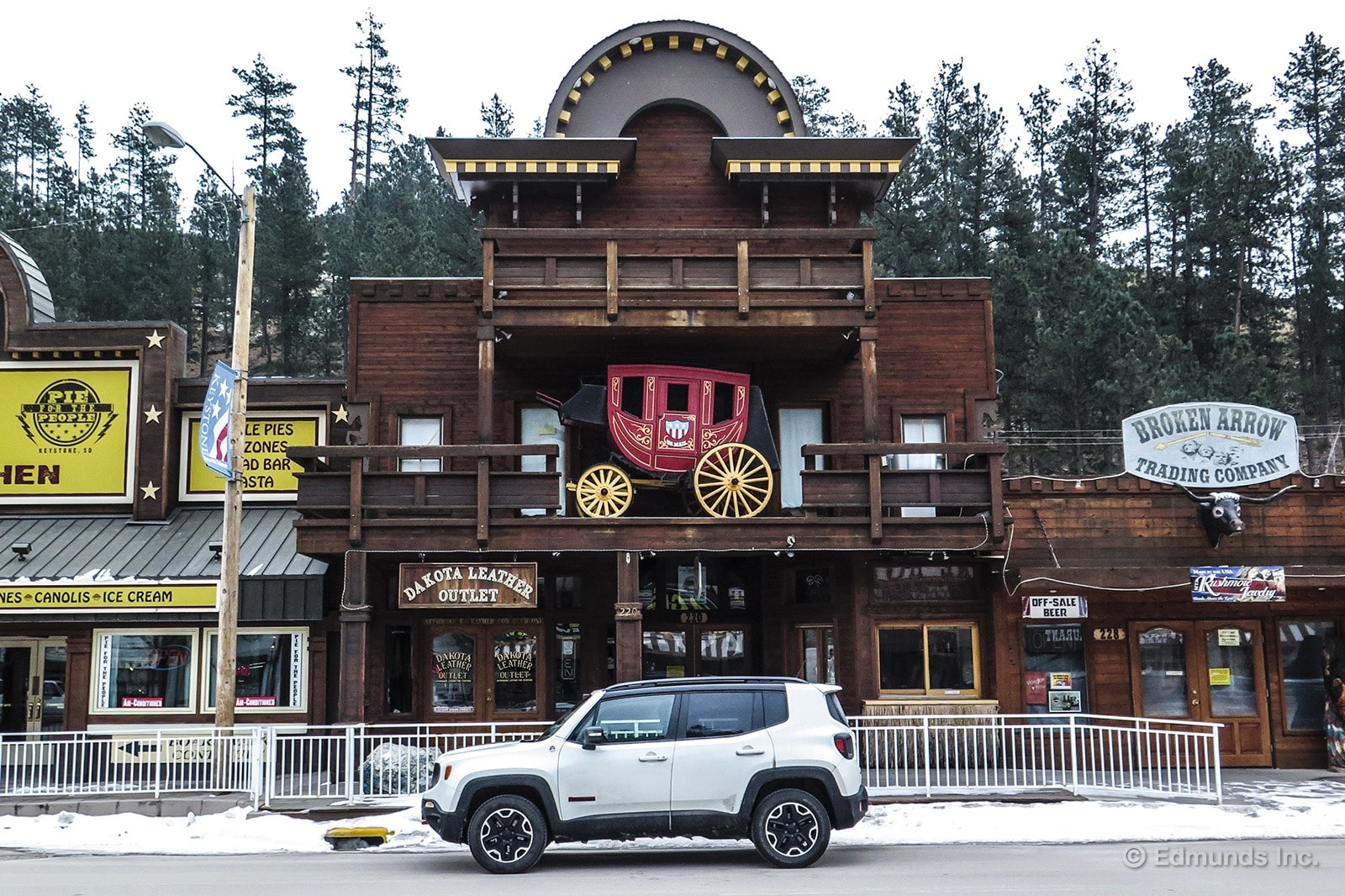
Keystone was the halfway point for my drive to the Detroit Auto Show; 1,400 miles from Los Angeles and 1,400 miles from Detroit. It's a veritable ghost town in winter but it's also home to the Black Hills Mountains and Mount Rushmore, the second stop on our trip. The next morning, we drove up the hill to see some big presidential faces, then shivered back into the Renegade, seat warmers on high.
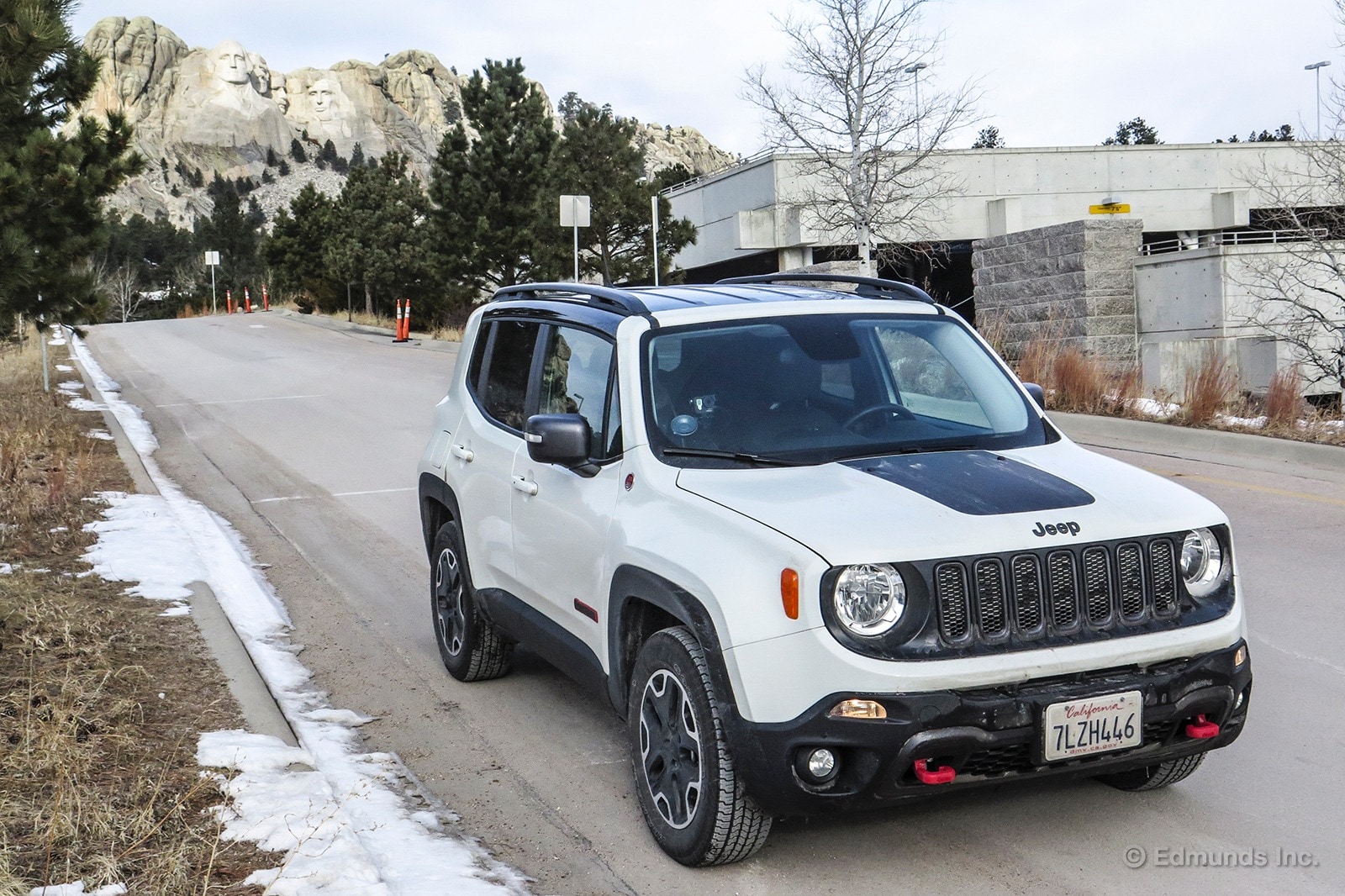
Rain accompanied us out of California, then light snow through Nevada, Utah, Idaho and Wyoming, but Day Three was the worst. From Mt. Rushmore to Detroit, there was still plenty to deal with, but stress levels were much lower. Along the more relaxing legs of the trip, where I had time to poke around and settle in to the Jeep, I added to my long list of lasting impressions.
I learned what it takes to best the EPA highway fuel economy rating (more on that later), I figured out that it's way too easy to hit the "4WD LOCK" button when you're digging around in the front storage bin, and I know that I'd pay double the asking price for the remote-start system. It's worth every penny, especially when it's eight degrees outside.
The Uconnect system that powers the radio, navigation and Bluetooth, is one of the best on the market. For the Renegade, it's also a must-have.
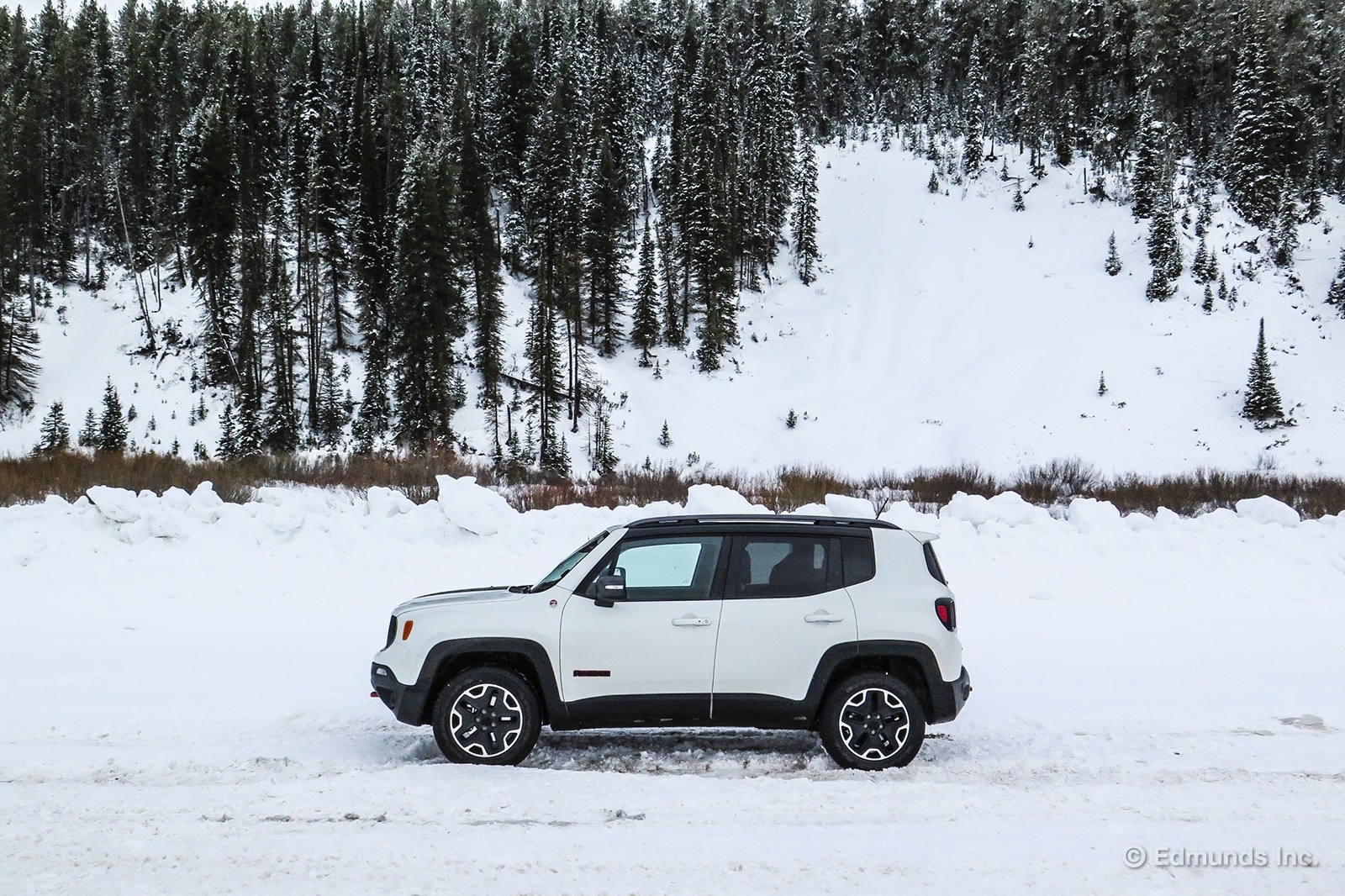
The Jeep was big enough for the two of us, but not much else. We carried winter clothes, camera bags, some food and other essentials, but there wasn't much room left in the trunk and no one in the back seat would've been happy.
Ride quality was choppy and stiffly-sprung in the city, but on long-haul highway stretches, the Renegade Trailhawk was surprisingly comfortable. It settled down and cruised like a champ.
For power, the Jeep was, simply put, not powerful enough. The 180-horspower, 2.4-liter four-cylinder and nine-speed automatic transmission have trouble, especially on mountain passes and long grades. It's got personality, but this is a slow car.

When I handed off the keys in Detroit (Features Editor Mike Magrath is driving it back from Detroit as I write this from my cushy, heated apartment in L.A.), I realized I wasn't worried about the Jeep. I wasn't looking over my shoulder with nostalgia or fond memories about the car.
I typically use long road trips like this to bond with our long-term cars, especially the good ones, but after six days there just wasn't any connection. I had a blast, saw amazing things, explored breathtaking landscapes and in the end I had respect for the Renegade. But I didn't love it.
Six Days on the Road — LA to Detroit in Numbers
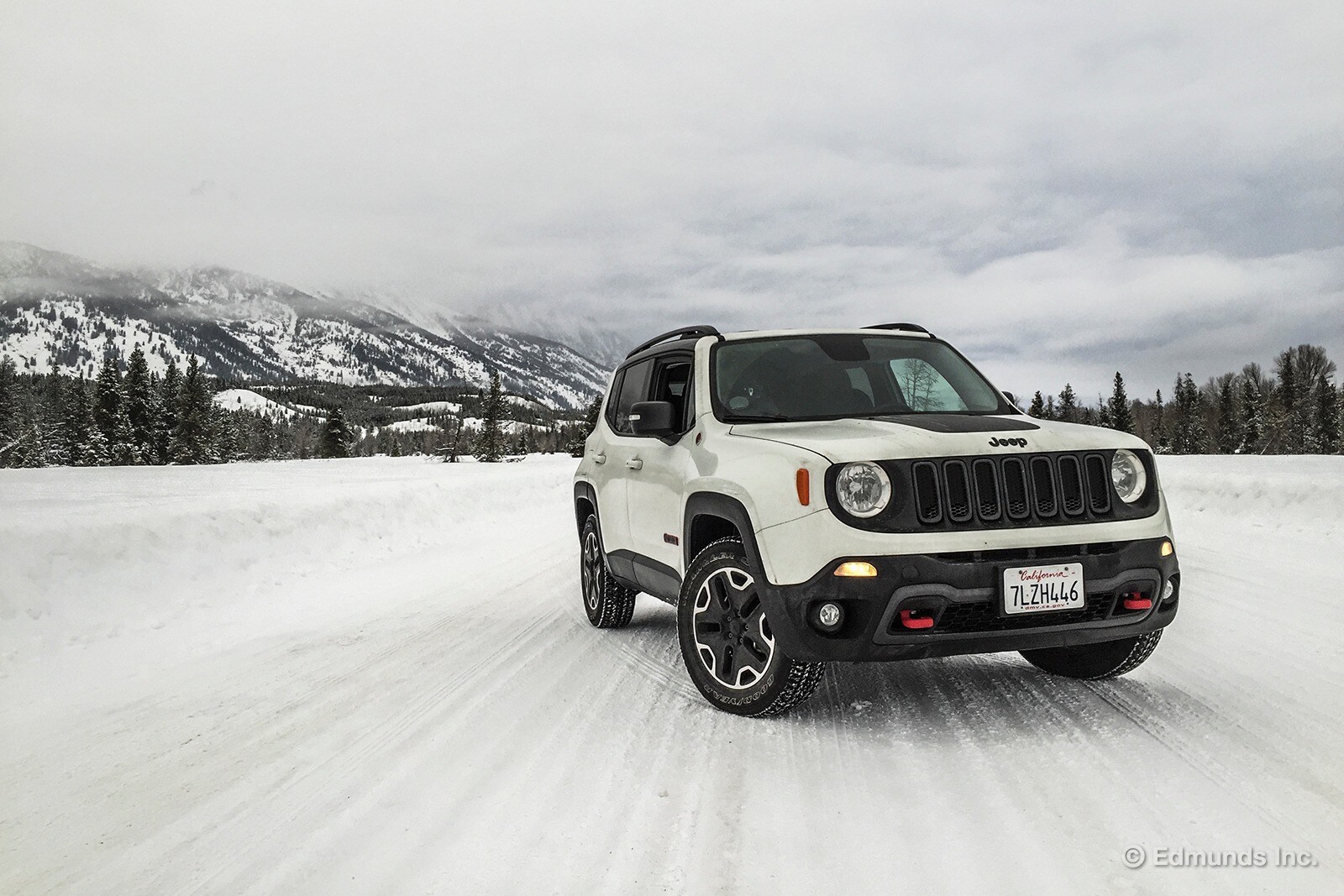
If you missed it, I drove our long-term 2015 Jeep Renegade Trailhawk to Detroit. I wrote about the ins-and-outs of the experience and the Jeep's performance, but the purpose of this update is to recap the numbers: Miles covered, mileage, records and all variety of digits.
Here's what the big picture looked like:
Total Distance: 2,865 miles
Days on the Road: 6
Number of Fills: 12
Total Gallons of Fuel: 115.940
Worst Fill MPG: 20.2
Best Fill MPG: 29.9
Trip-Average MPG: 24.7
EPA MPG Rating: 24 Combined (21 City/29 Highway)
Best Range: 361.9
Aside from a heavy snowstorm on Day Three, almost all of the miles on the trip were highway miles. Depending on conditions and limits, speeds were kept between 65 and 80 mph. The Jeep was great at cruising on the highway, but with such a small gas tank and disappointing fuel economy, there were way too many stops.
The best range and best fuel economy were achieved with the same tank, in the rolling hills and mountain roads exiting the Grand Tetons. It wasn't flat terrain, but there weren't super dramatic grades either.
Speed limits in the area varied between 45 and 65 mph and I made sure to never exceed the limit. This made things boring, but I was determined to beat the EPA highway estimate and finally travel more than 300 miles on a single tank of gas. We hadn't achieved either milestone before the road trip, and I was relieved to check them both off the list.
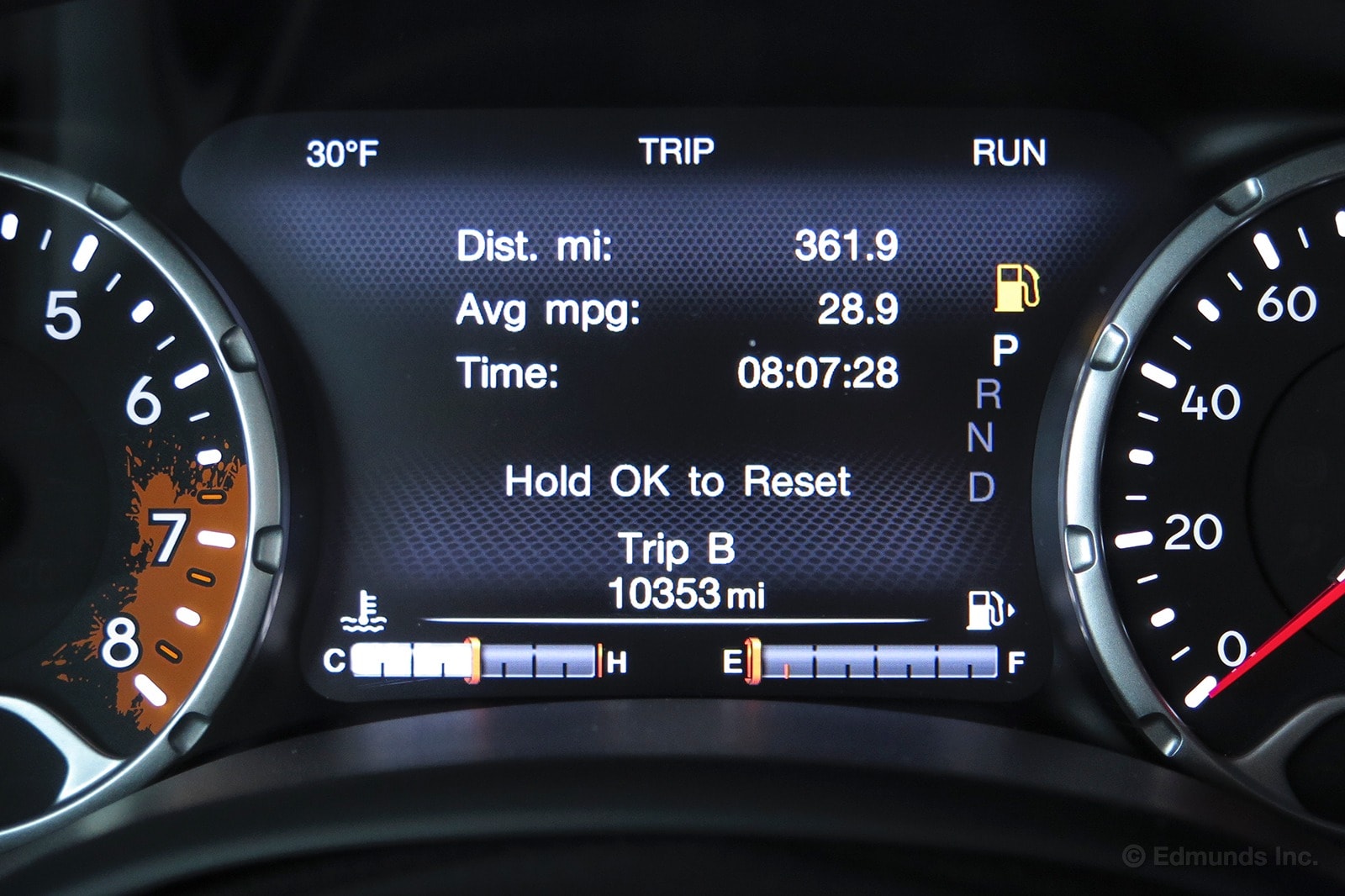
To put those numbers in context, I turned to the records for our former 2014 Jeep Cherokee long-termer. The Cherokee was a Limited model (not the off-road oriented Trailhawk like our Renegade) so they aren't perfect comparisons, but it provided some good perspective.
The Cherokee's best range was 438 miles on a single tank of gas, with a lifetime average of 257 miles between fill-ups from a 15.8 gallon tank. About that 438-mile range, though: The Cherokee only took 12.3 gallons of fuel (35.5 mpg), which meant it probably had another 100 miles of range left in it.
By contrast, our long-term Renegade currently has a best range of 361 miles on a single tank of gas, with a lifetime average of 209 miles between fill-ups from its tiny 12.7-gallon tank. And that 361-mile range? It required 12.1 gallons of fuel, which is much closer to the Renegade's theoretical limit.
These factors pretty much disqualify the Renegade as a road-trip vehicle in my book, which is a shame because its best quality is highway comfort. This thing is a great cruiser with comfortable seats and good ergonomics. You just have to pull over every three hours to keep it moving. No thanks.
Stay tuned for a few dozen photos from the trip and a time-lapse video of the journey as well.
Los Angeles to Detroit in Photos
There are millions of miles of road between Los Angeles and Detroit. Sure, you can take the shortest driving route between the two cities and you'll spend a lot of time on the Interstate. But the interstate highway system is boring. It's full of horrible chain restaurants, carbon-copy strip malls and miles of uninterrupted monotony.
So instead of the path of least resistance, I took our long-term 2015 Jeep Renegade Trailhawk across the country via the scenic route.
The northern route took me through California, Nevada, Idaho, Wyoming, South Dakota, Minnesota, Wisconsin, Illinois, Indiana and Michigan. The route was about 2,800 miles long and most of it was covered in snow. That meant plenty of photo-ops along the mountain terrain and snow-swept plains of America.
Flip through the photo player above to see them all.

First it was the driving, then we broke down the numbers, third was the photos, and here for the final post on my road trip to Detroit in our long-term 2015 Jeep Renegade Trailhawk, is the time lapse video.
Basically, I liked the GoPro time-lapse video that editors Carlos Lago and Jay Kavanagh put together from their cross-country trip in our long-term Viper, so I stole the idea. I borrowed a GoPro Hero 3+ from our video team and handed if off to my friend Liam who went along with me for the road trip.
He set the camera up on the passenger side of the windshield, synced it up to the GoPro app and set the camera to take a photo every 10 seconds. That made for about 8 minutes of video over 2,800 miles. Liam put all the titles, music and color correction together himself and I did my small part by uploading the thing to YouTube.
Keep an eye out for the one time we get stuck in a snow berm (my fault, not the Jeep's) and some of the many excellent sites this country has to offer, even in the dead of winter. Please forgive the momentary pauses at rest stops and the one McDonalds break I took for breakfast just outside of Detroit. Even the most well-intentioned travelers have moments of weakness. #McGriddle.
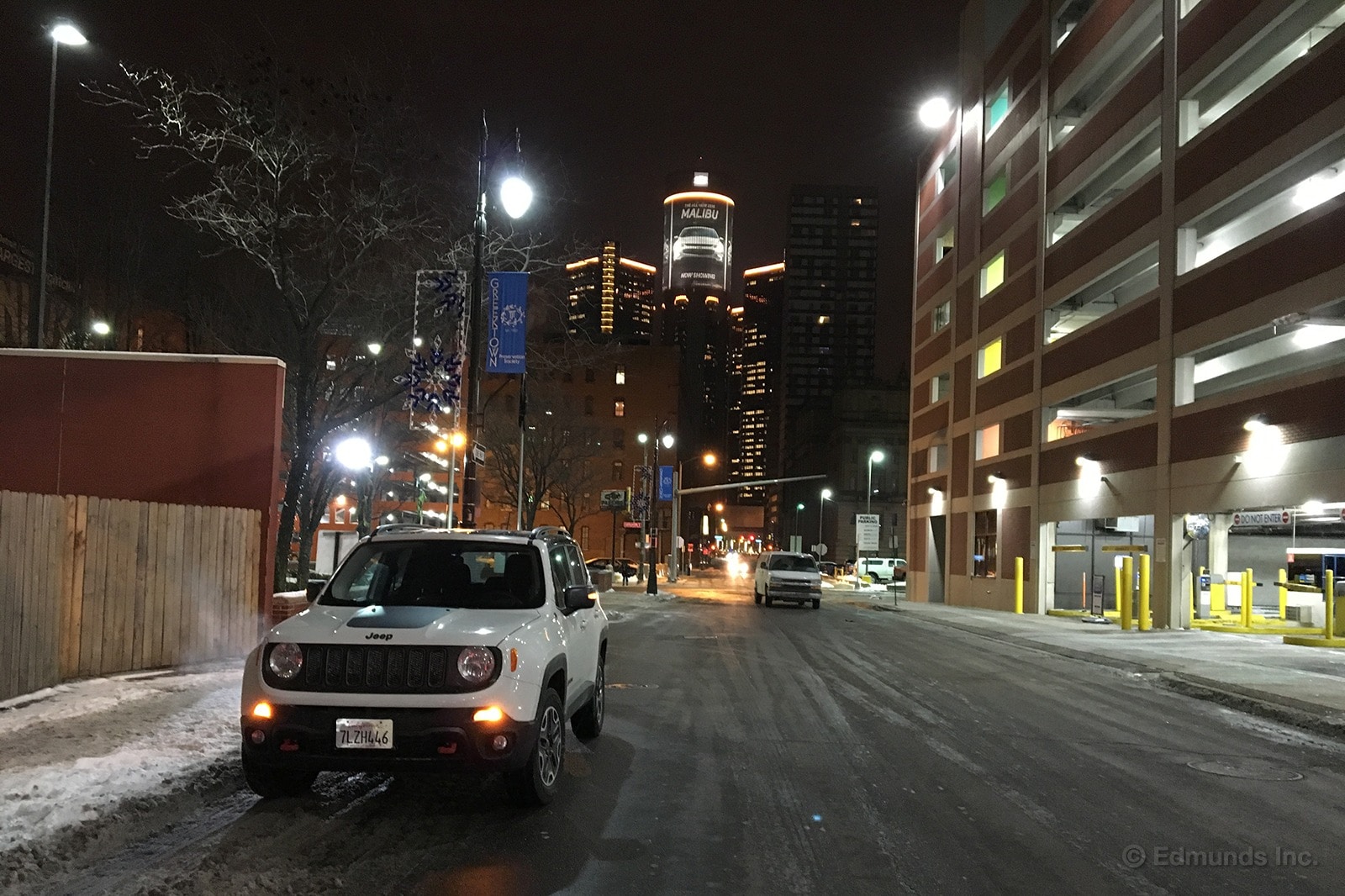
I briefly considered abandoning our 2015 Jeep Renegade Trailhawk in Detroit. It was 11 degrees when I stepped out of the hotel where the Jeep was waiting. The last time I'd driven the Renegade, I vowed never to drive it again, yet here I was, about to spend 2,200-ish miles with it. Tipping the valet $50 to dump it in a river and then jumping the first flight out sounded appealing.
I manned-up, hopped in to find that the seat heaters and steering wheel heater were already cranking. My phone paired automatically. Not bad. Maybe I won't leave it.
Travis took the fun route. He went places and saw things. I've done that in the past so this time, I'm just straight-lining it. This wouldn't be a road trip as much as a beeline home. Some road trips are about the road, this one would be about the car.
The route from Detroit to somewhere past Chicago was annoying. Speed was low. Roads were sporadically icy. The only notable thing was that despite having a full tank leaving Detroit, I didn't make it anywhere near Chicago when I had to make the first fuel stop.
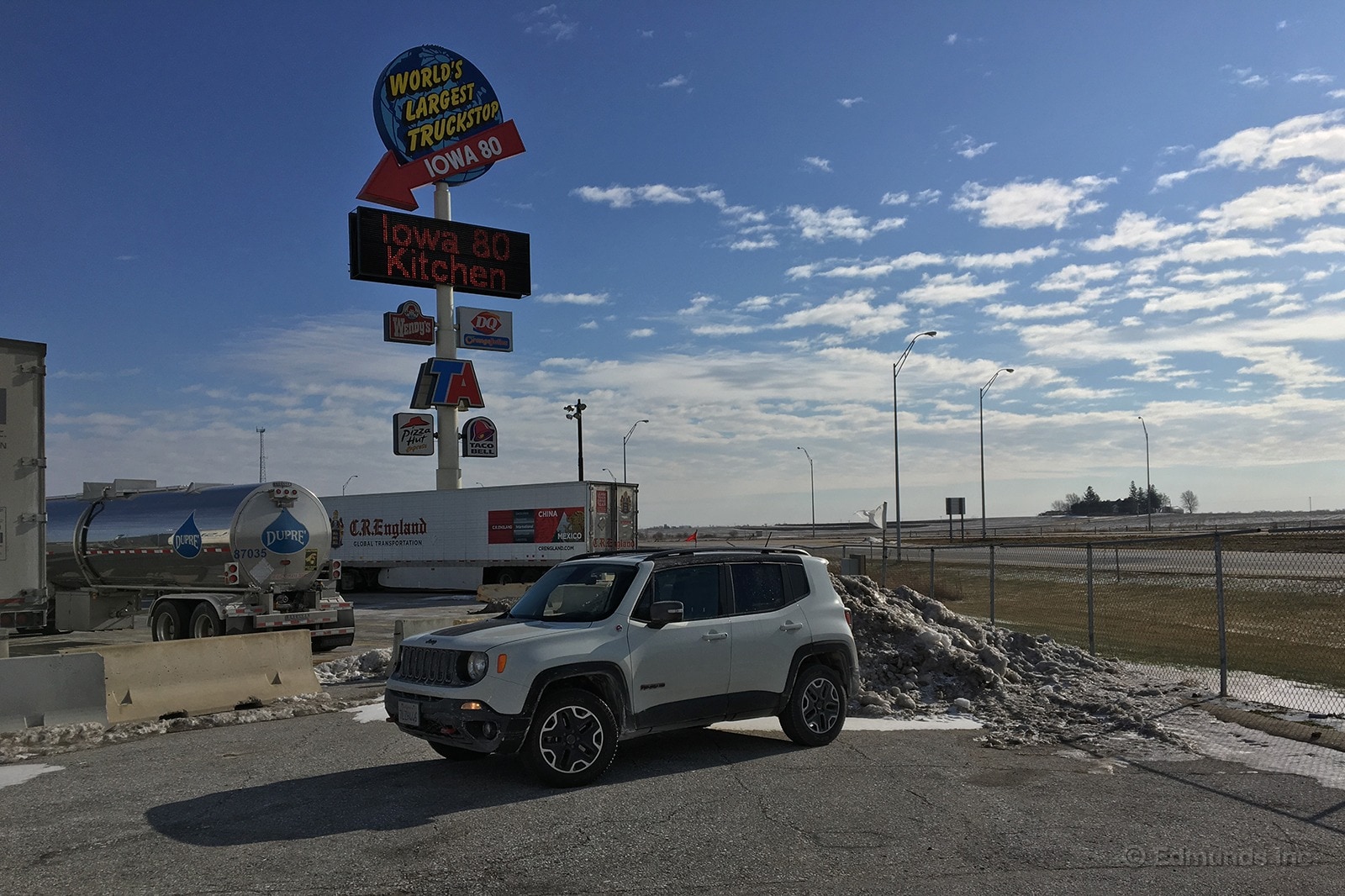
Illinois goes by quick in much the same way that Iowa doesn't. The most notable thing that happens along Interstate 80 is that the Renegade, despite its boxiness, doesn't care about wind. The crosswind was sharp and the semis were swaying. Litter flew across the highway at breakneck pace while the little Jeep remained steady. Wind noise crept in from the sideview mirrors and the top of the windshield, as happens when you've got a 75-mph speed limit and 30-mph side winds, but the Jeep was stable.
The only thing that disrupted the Renegade was a high-speed pass of a semi. I learned my lesson, slowed down, and stayed about 5 mph faster than the truck for the rest of the trip.
By Nebraska, I'd already filled the tank four times, averaging about 250 miles per fill-up. Just over 1,000 miles from where I left, more annoyed than tired, I stopped for the night.
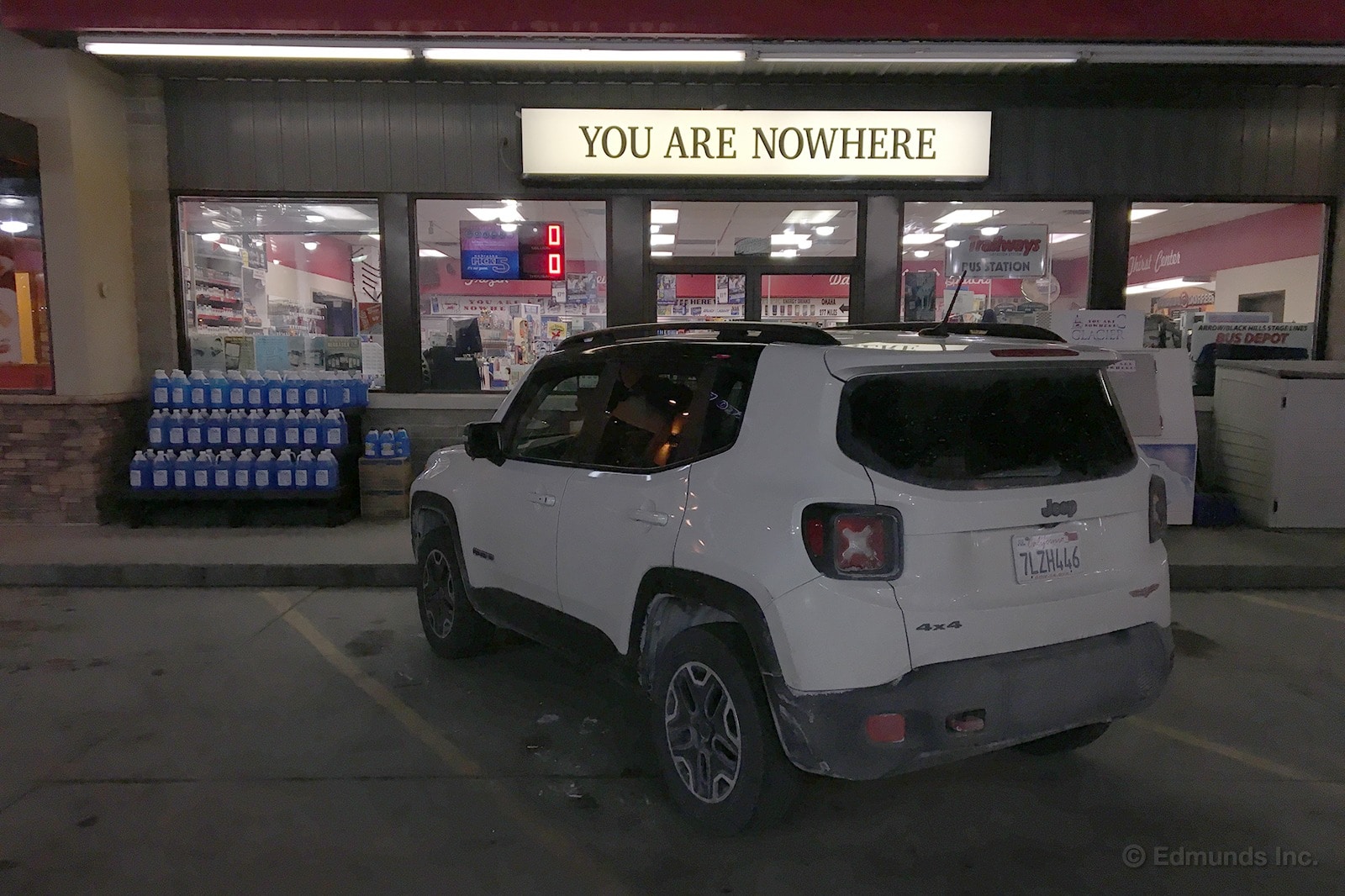
Please re-read that last bit. After 1,000 miles in a tiny, four-cylinder Jeep, I only stopped because I couldn't mentally deal with another fuel stop. The Jeep's exceptional seating position and seats, great visibility and relative quietness kept me happy for hours. If the Renegade had a tolerable-size fuel tank, I'd have made Denver easy.
At the end of the first leg, I was impressed. But the next section of the trip was built to challenge the Renegade. The speed limit rises to 80 mph and the endless plains turn into steep grades.
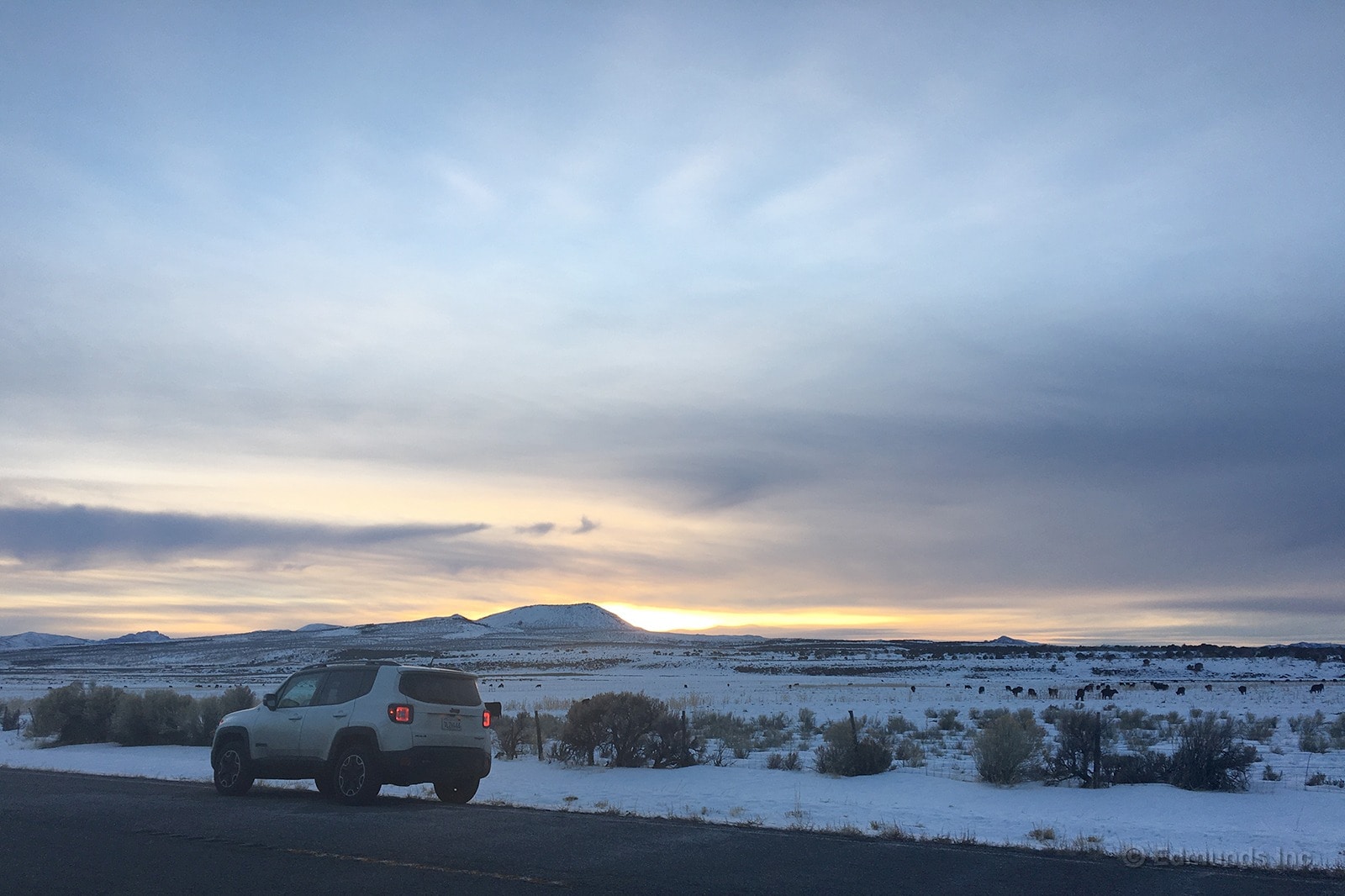
Day Two of my road trip from Detroit to L.A. started off on a good note. Looking out the hotel window, you could almost see the cold. I flicked the button on our 2015 Jeep Renegade Trailhawk's key fob triggering the remote start and let it warm up while I hit the showers. This move wouldn't be kind on range, but would prevent me from freezing to death. Fair trade.
This section of the trip wasn't going to be kind to the Jeep anyways. The past few states had been boring and flat, letting the Renegade settle into ninth-gear and relax. Colorado has hills. Utah has an 80 mph speed limit and hills.
The first stop for fuel took place before any of the hills and Colorado's slight changes in elevation and speed limits had already taken a toll on the Jeep. I got 22.7 mpg driving in a straight line with no stops.
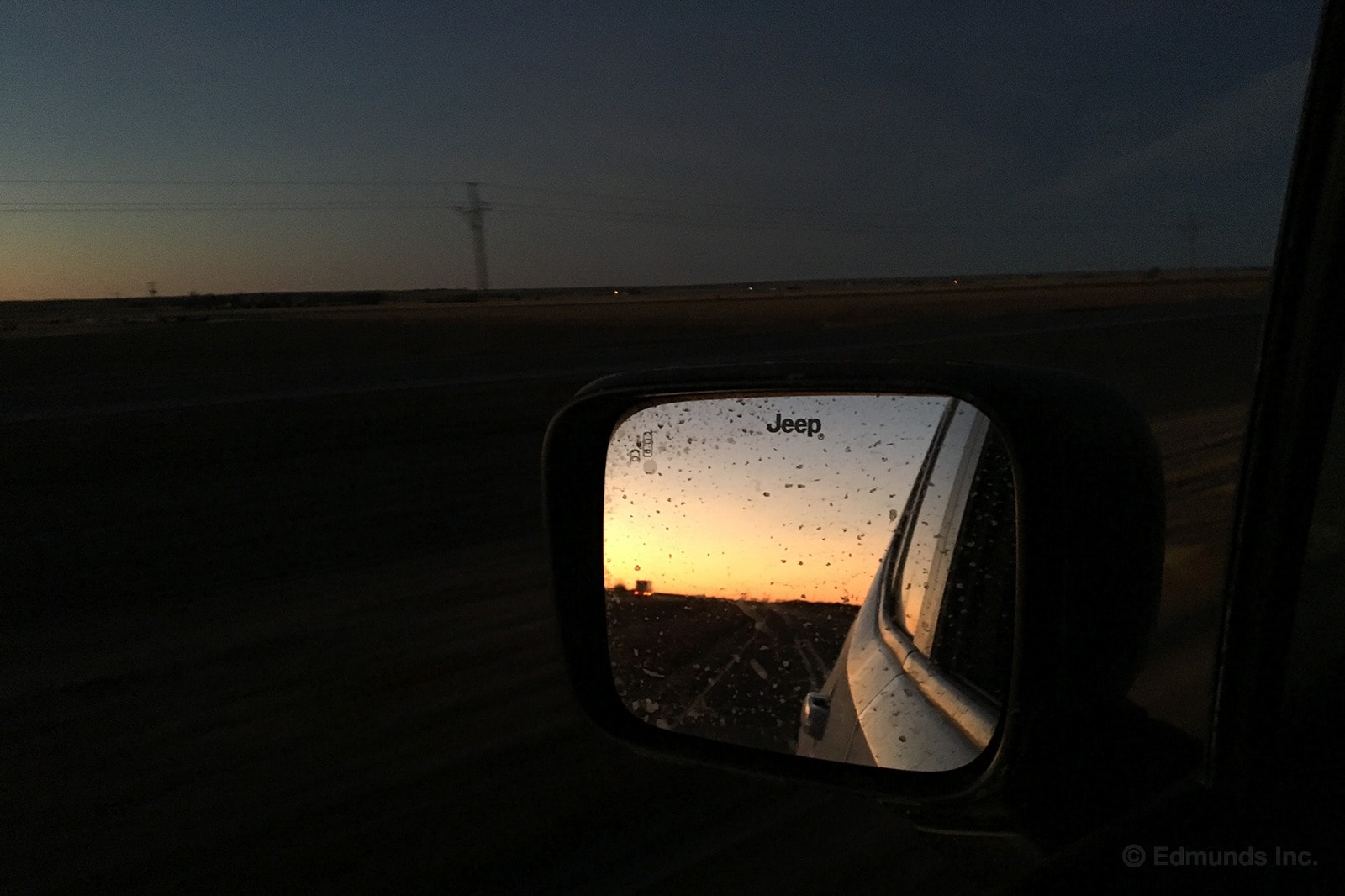
During that stop I got an email from someone in the office.
"How's it going?"
"Cold and clear," I replied. "Almost boring."
Within 10 minutes, two of those three things changed.
As I climbed towards the Eisenhower Tunnel, there was a sudden wall of weather. The world went from cool and clear to dark and snowy. The roads were clean and then there was 4" of snow. Everyone was going 75-ish and then everyone was going 7.5-ish. All I could think of was Oldham's experience in the Corvette: Same road, different direction, far different vehicle.
I grew up around snow and knew that there were two things I didn't want to do. One, go too fast. Two, go too slow. Do either of those things and you're stuck. I flicked the Renegade's Selec-Terrain dial to Snow and kept moving.
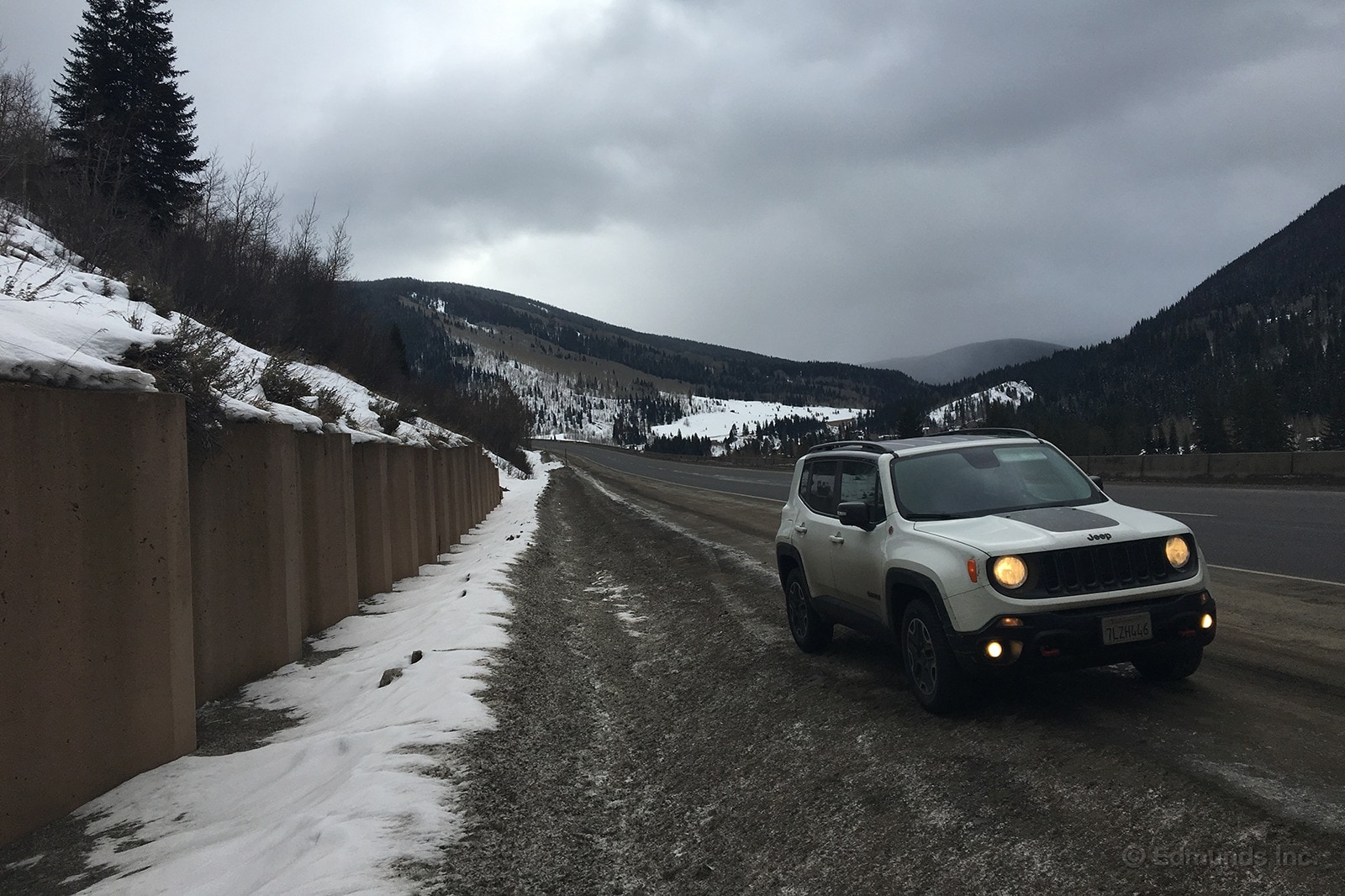
Unfortunately, the 9-speed automatic doesn't play well with snow. If you try to maintain a speed, the 9-speed wants to get into as high a gear as possible, even in Snow mode. This means that during times when you want control and consistency, the transmission keeps changing things while prioritizing fuel economy. Manual mode is a lifesaver in this situation.
Even when the snow had subsided, the Renegade wasn't truly happy in these conditions. 80 mph was doable. The Renegade turns around 3,000 rpm at that speed and the on-demand fuel economy meter claims 26 mpg. But then the hills come.
Unlike driving in the city, driving in Utah doesn't have any actual speed changes. You get up to 80 and then stay there until you run out of gas and then repeat the process. Still, even minor elevation changes here make the transmission hunt around more than I'm happy with.
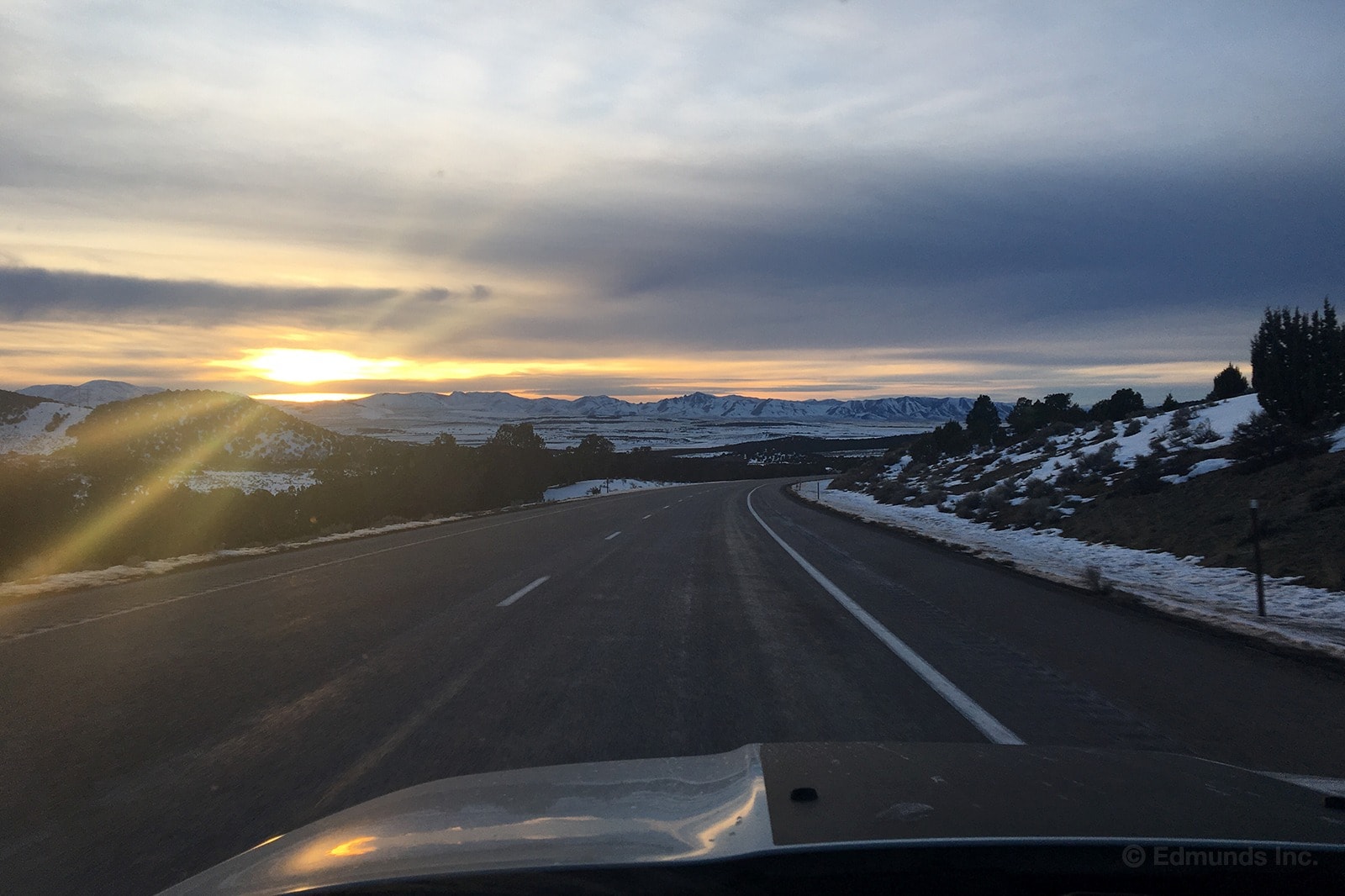
When confronted with a real hill, the number of gears is irrelevant. The Renegade falls well below the speed limit with cruise control on and, again, you've got to revert to manual mode. If you don't, the car drops a few gears to get up to speed and then, once holding a decent highway pace, shifts back up to ninth, causing the whole thing to slow down again. On one grade, a Subaru Crosstrek passed me. Sigh.
Utah turns into Arizona turns into Nevada and suddenly I'm in Vegas for way off-Strip pho before I even realize it. With a belly full of noodles, I make California without a problem. I stop at a hotel about 100 miles from home just to be safe. Once again, the frequent fuel stops ate into time I could've spent on the road. The furthest I managed on a tank was 285 miles this leg. Like Aspade said in the comments on Part 1, running a tank to fumes in winter in no man's land isn't a good idea.
Still, 1,100 miles in a day is further than I made it in our 911, which was capable of 500 miles on a tank.
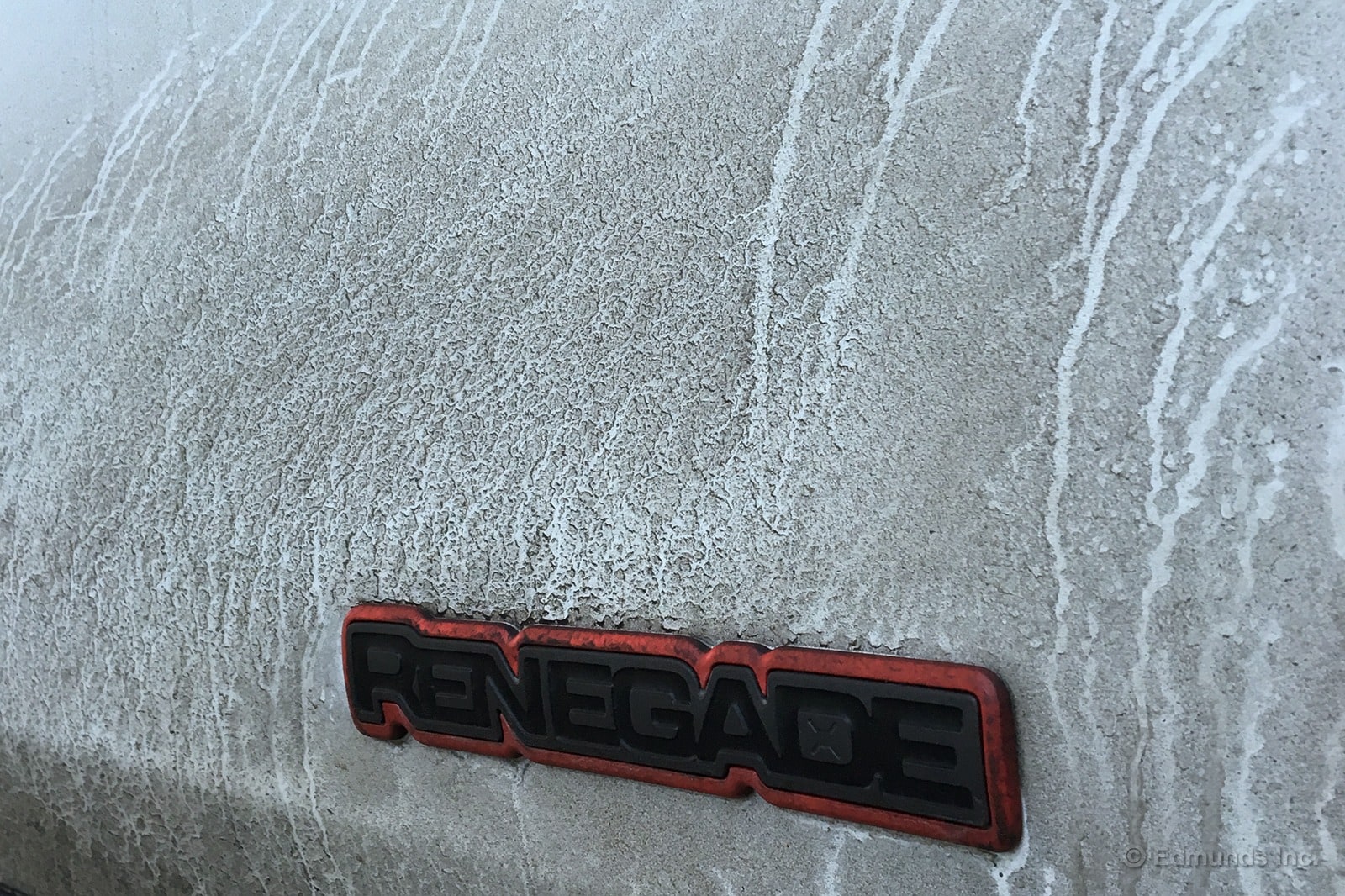
Detroit to L.A. in three days in our 2015 Jeep Renegade Trailhawk was easier than it sounds. Sure, the engine and transmission are a mess when presented with anything other than a straight line, but the seats and driving position are great, the infotainment system is tolerable, and it's darned stable. I'd take it again.
Besides the transmission, my most frequent complaint was that of range and MPG. Let's take peek at the numbers.
Total mileage: 2,279 miles
Day 1
| 12,223 | 245.3 |
11.384 |
21.5 |
12,425 |
202.3 |
9.528 |
21.2 |
12,700 |
275.1 |
12.262 |
22.3 |
12,984 |
283.8 |
12.324 |
23 |
Day 2
| 13,249 | 264.6 |
11.648 |
22.7 |
13,480 |
231.0 |
8.996 |
25.7 |
13,700 |
219.8 |
10.628 |
20.7 |
13,985 |
285.6 |
11.776 |
24.2 |
14,141 |
154 |
5.749 |
26.8 |
Day 3
| 14,259 | 118.2 |
4.810 |
24.6 |
My Totals
Days: 3.1-ish
Miles: 2,279
Gallons of fuel: 99.105
Average MPG: 23.27
EPA Fuel Economy Rating: 24 Combined (21 City/29 Highway)
Best fill: 26.8 (downhill from Utah to Nevada)
Worst fill: 20.7 (Colorado/Utah)
Best Range: 285.6
Road Trip Totals
Days: 9
Miles: 5,144
Average MPG: 24
Average MPG as shown by trip computer: 23.8
Best Range: 361.9
Best MPG: 29.9
After nine days and more than 5,000 miles on the open highway, we tied the EPA combined highway number and hit the highway number once.
If you've followed this blog for any period of time, you'll know I did virtually this exact route two years ago in our former 2014 Corvette Stingray. On that drive, I managed 401 miles per tank and an overall average of 26.3 mpg versus the EPA's estimate of 29 highway and 21 combined.
The takeaways from that nugget of information? This route rarely matches EPA highway numbers (high speeds, mountains), and the Renegade needs a 6.2-liter V8 and a manual.

As lukewarm as I am toward the engine and transmission of our 2015 Jeep Renegade Trailhawk, I appreciate the little crossover's spacious cabin. Its boxy body may have been designed with little consideration to aerodynamics, but the high roof provides ample headroom. I'm 6-feet, 4 inches, and there are several inches between the top of my head and the headliner.
There's also enough legroom for me to sit comfortably in the driver seat. But most unusual is the ability to sit behind myself, a feat not often achieved in a vehicle with the Renegade's dimensions.
Getting into the back with the front seat in my optimal driving position requires a little squeezing, but not a prohibitive amount. Once I'm in, my knees are buried in the front seatback. Thanks to its flexible cushioning, my knees sink in with little hesitation and no discomfort.
As for headroom, the roofline barely falls from the driver to rear passenger, so no worries there. Plenty of shoulder room will keep two adults from feeling claustrophobic. The only thing I would change is the ability of the rear seatbacks to recline a few more degrees. They're still pretty upright, even when tilted back as far as they'll go.
Even with the subpar rear seatback tilt, I don't think I'd be uncomfortable on an easy road trip. Vegas would probably be doable. I can imagine the upright seating position and constant light pressure on my knees would be irritating as a passenger on a trip as long as Los Angeles to Detroit (trips that Travis and Magrath made). But for around town and close destinations, the Renegade should be an amicable road trip companion for four adults of my stature.
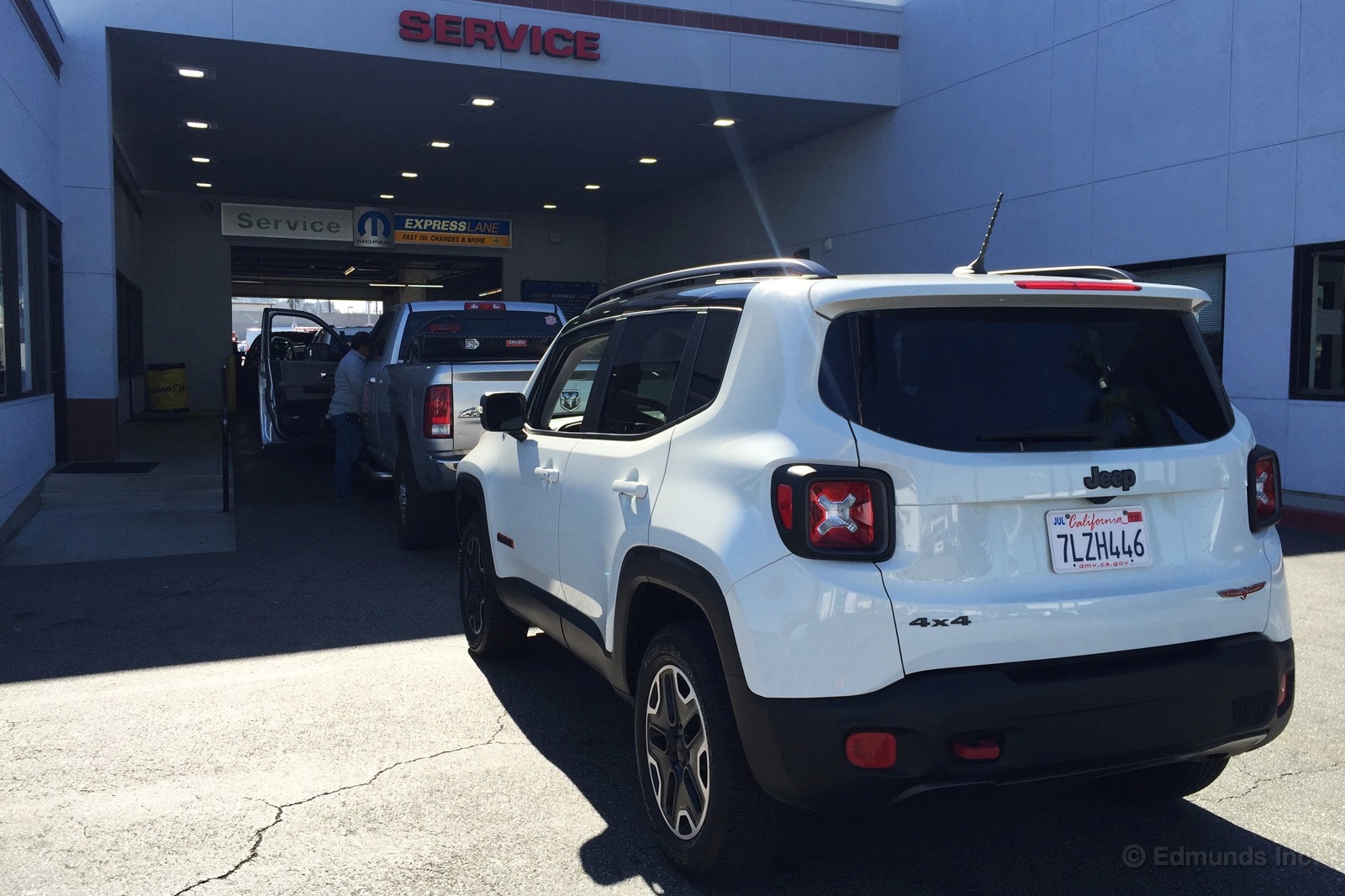
"It's been three days. Let's just go in and demand the key."
This was Mike Schmidt's suggestion regarding our long-term 2015 Jeep Renegade Trailhawk and its visit to Glenn E Thomas Jeep in Long Beach. By this point, the Renegade had been in the shop three days and it was still unclear how much longer things would take. We weren't going to wait any longer.
We agreed to meet at the dealership within the hour.
This all started when the Jeep returned from Detroit. Social Media Editor Travis Langness drove from Los Angeles to Detroit for the North American International Auto Show. Features Editor Mike Magrath took up the reins for the return journey.
While he was on the road, Magrath sent an email that read, "The Jeep needs a trip to the shop sooner rather than later." This was followed by a list of the Renegade's issues.
The most notable concerns were a hard pull to the left, noisy brakes and a hard shift from park to drive when the transmission was cold. We didn't know how deep these problems might run, so we agreed to just take it to a dealer and have them look it over.
On Monday morning, I took the Renegade to the Jeep dealer just a mile or so from our office. The service advisor told me he wouldn't be able to look at it until Thursday. I returned to the office and started looking at other options.
We didn't want anyone driving the Jeep until these issues were fixed, so finding a dealer that could see us immediately was a priority. Schmidt suggested I call Glenn E. Thomas Jeep and see if I could get an appointment that day. This dealer is located about 30 miles south of the office, but, conveniently, right off the freeway. We'd previously serviced our 2015 Dodge Viper GT here. I called the dealer and asked to be transferred to the service department. I was on hold for so long that the system routed my call back to the main number.
This happened three times.
Frustrated, I hung up the phone and went to the dealer's website to see if I could make an online appointment. They had a number of available spots, starting around 11:00 a.m., so I made the appointment and headed to Long Beach.
The service center was busy when I arrived, so I waited about 20 minutes before I managed to talk to someone. I explained the issues to the advisor and handed over the keys. She told me there were a number of ECU updates that would be taken care of while the Renegade was there.
I didn't expect the whole thing to be resolved that day, but 24 hours later, I still hadn't received any updates. I called the dealer after lunch on Tuesday and again waited and waited for someone to pick up. Finally, I managed to leave a voicemail for my service advisor asking for an update. I heard back an hour later.
The front brake pads and rotors were being replaced under warranty. There is a known issue involving noisy front brakes. The parts wouldn't be in until Wednesday. I asked about the other issues and was told that they were still working on it.
Another 24 hours later, there was still no word.
It was Wednesday around noon and I was less than pleased. It had been two days and the only update I'd received was a reply to a voicemail. Other than that, I didn't know where we stood. The service advisor had given me her direct line, so I dialed that number to avoid being lost on the telephone loop.
Instead, I got voicemail.
Thirty minutes later, she called back. I asked her to finish the brakes and not to worry about the transmission or the alignment. I just wanted the Renegade back in our hands. She said it would be ready to go by the time the service center closed.
I called Stokes Tire Service in Santa Monica and made an appointment for an alignment at 8:00 a.m. the next day. I missed the appointment; the Renegade still wasn't ready.
I got a ride to the dealer around 4:30 p.m., found my advisor, and asked when the Renegade would be ready. She told me that they were performing the software updates and that it might be a little while. I asked if it was going to be ready tonight, but she seemed doubtful.
So here I was stuck at the dealer. I called Schmidt to give him an update. I also called my wife to let her know I may need a ride home. Both of them shared my displeasure with the state of things. I pulled out my computer, got a Pepsi from the vending machine and tried to work.
An hour later, I was informed the Renegade wouldn't be ready tonight.
Left without a ride, the dealer offered me a rental from Hertz. I accepted and headed home in a white Dodge Charger (I turned down a Jeep Patriot 4x4 that was originally offered).
By 10:30 the next morning there were still no updates. I called the dealer and was told my advisor wouldn't be in until 2:00 p.m. This is point where I called Schmidt and he suggested we just show up. He said he would be willing to sit and wait until the key was back in our possession.
We both arrived at the dealer within a minute of each other. I had just dropped off my rental and received a ride back to the dealer while Schmidt was coming from his house. We waited for the first available advisor and asked if the Renegade was ready. He went to check and returned with good news.
The new brakes were installed and the pull to the left was fixed by rotating the tires back to where they were before the service in December. A tech looked at the transmission but couldn't replicate the problem. Two ECU updates were performed. Everything was covered under warranty. With the key in hand, Schmidt and I left the dealer.
I was frustrated by the lack of communication. The only calls I received were replies to my voicemails. If my vehicle is in the shop for three days, I would like to know what's going on.
Total Cost: None (covered under warranty).
Total Days out of Service: Three
Fuel Economy Update for January - After 498 Gas Stops in January

Turns out there's another downside to our 2015 Jeep Renegade Trailhawk's dismal fuel range. Beyond stopping constantly on lengthy road trips, I discovered that updating our fuel log spreadsheet is a lengthy, irritating exercise in repetitive data entry. Any more number inputs and I'd need one of those old-timey green accountant visors.
Anyway, the January miles and the Langness/Magrath Detroit road trip managed to bump up our Renegade's lifetime fuel economy by one whole mpg. Travis also managed a new best tank and best range. Sure, he was driving slowly but humdinger!
Worst Fill MPG: 15.2
Best Fill MPG: 29.9
Average Lifetime MPG: 21.0
EPA MPG Rating: 24 Combined (21 City/29 Highway)
Best Range: 361.9 miles
Current Odometer: 15,823
2015 Jeep Renegade Trailhawk vs CPO Jeep Grand Cherokee
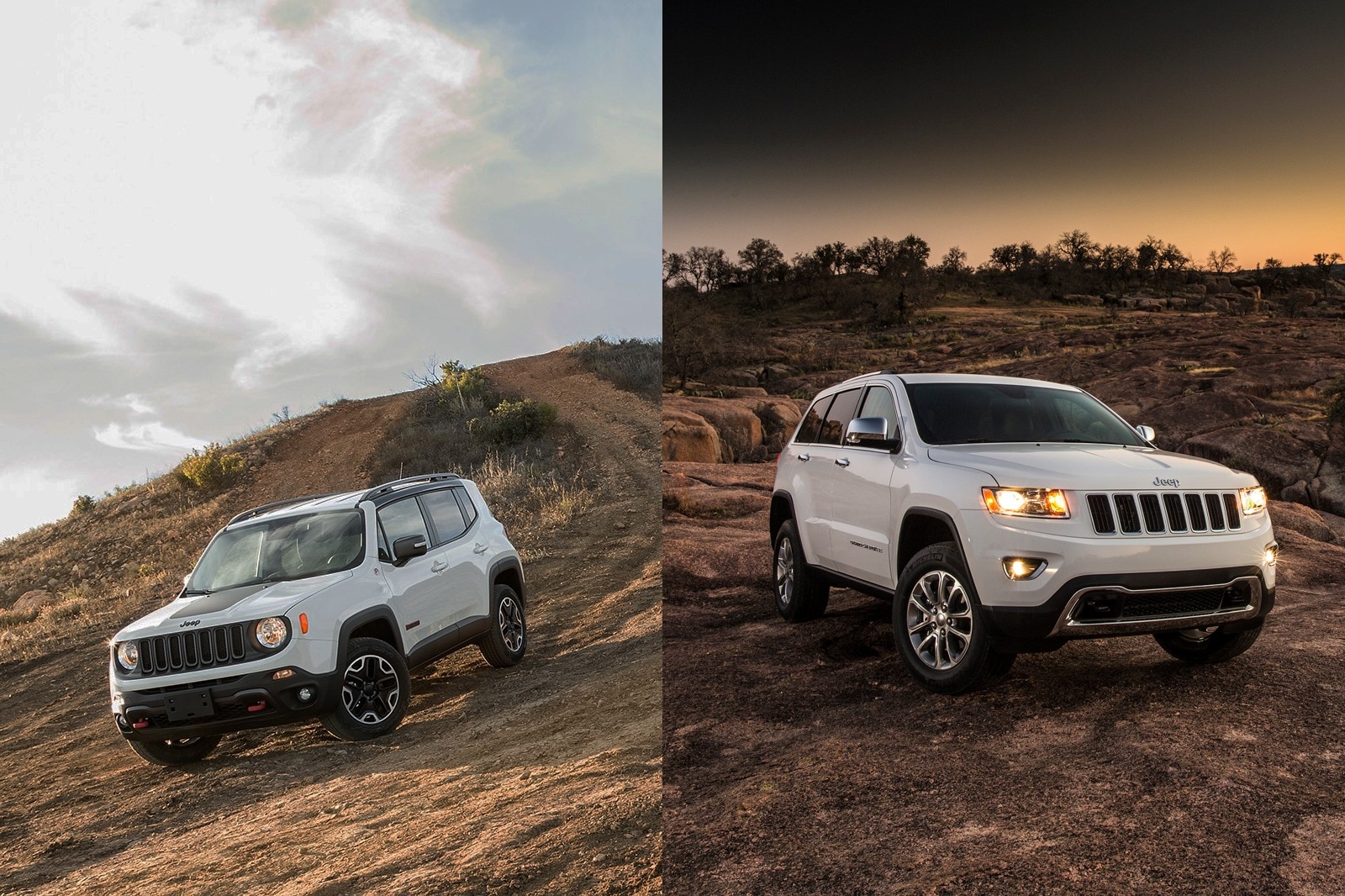
"Hey Josh," I ask, peering over my computer screen and desk partition to Senior Editor Josh Sadlier.
"Yes, sir," he responds, his bearded face eagerly anticipating whatever fascinating query I'm about to throw his way.
"For $30,000, would you rather have our 2015 Jeep Renegade Trailhawk," I begin, making sure to say the car's complete year/make/model/trim name in order to properly hyperlink when later describing the scenario. "Or a used Jeep Grand Cherokee?"
"Grand Cherokee," he responds reflexively, as if option number two was going to be the choice regardless of what it was. "CPO?"
"Yes."
"Oh, then yeah, no question at all."
Indeed, you can buy a used, certified pre-owned Jeep Grand Cherokee for around the same price as our new Renegade. A quick search revealed plenty of JGC's from 2012 to even 2015, with mileage around 25,000 to 40,000 miles and trim levels ranging from simple Laredo to high-zoot Overland. I stuck with 4WD models because it's a Jeep, which should be reason enough.
For that, you get a vehicle that is superior in virtually every way to the little Renegade apart from fuel economy and parking ease. Now, I actually like said little Renegade, but when perched in its driver's seat, I find myself looking longingly at every JGC that drives by. The power, the refinement, the looks, the capability — I could go on. Plus, if you get one from 2013 or later, chances are you can get the same tech and comfort features that jack the price up on our top-dollar Renegade.
Now, Grand Cherokees don't have the best reliability ratings. It improved massively after the current generation's first year on the market (2011), but engine and particularly transmission problems are common. Then again, the alternative here is another Jeep. Built by Fiat. In Italy.
Either way, getting a CPO Grand Cherokee seems especially important. Chrysler Group's CPO program includes a 7-year/100,000 powertrain warranty from the original date of purchase along with a 3-month/3,000-mile bumper-to-bumper plan tacked onto the remaining 3-year/36,000-mile coverage or by itself.
Truth be told, that's one of the least desirable programs (here are the best ones!) and is obviously not as good as what's offered by a new Jeep. But hey, it's better than nothing and probably better than living with the Renegade's regrettable powertrain every day.
So would I get a CPO Grand Cherokee instead of a new Renegade? Yes I would.
Would you?

My relationship with our long-term 2015 Jeep Renegade Trailhawk crossed over from like to love a long time ago. This vehicle does exactly what it's supposed to do, it does it all extremely well, and it is fun to drive.
Plus it brings a cool factor, real off-road capability and interesting design to a segment that has had very little of each. But there is one thing about our Renegade that annoys me.
Fuel range readouts that don't count you down to zero are a pet peeve of mine, right alongside ketchup on a hot dog and environmentalists that fly private.
And the Jeep's does not.
And why not? The technology exists. Instead, at 34 miles of range, the Jeep's readout takes the rest of the day off and displays only the words "Low Range." Which isn’t really information at all. The gauges have ceased being useful. I already know I have low range. And I've known it for a while.
What if all of your gauges worked this way? What if your speedometer stopped working above 50 mph and after that it just told you "You're Going Fast"? Or your tachometer clicks off above 3,000 rpm and informs you only "Engine Speed High"?
It's ridiculous. The only time a digital fuel range feature is truly useful is when the fuel supply is near depletion. Otherwise a traditional fuel gauge with an E and an F kinda gets the job done just fine. Plus, other car companies get this right.
It's a minor flaw in an otherwise well-thought out and designed vehicle.
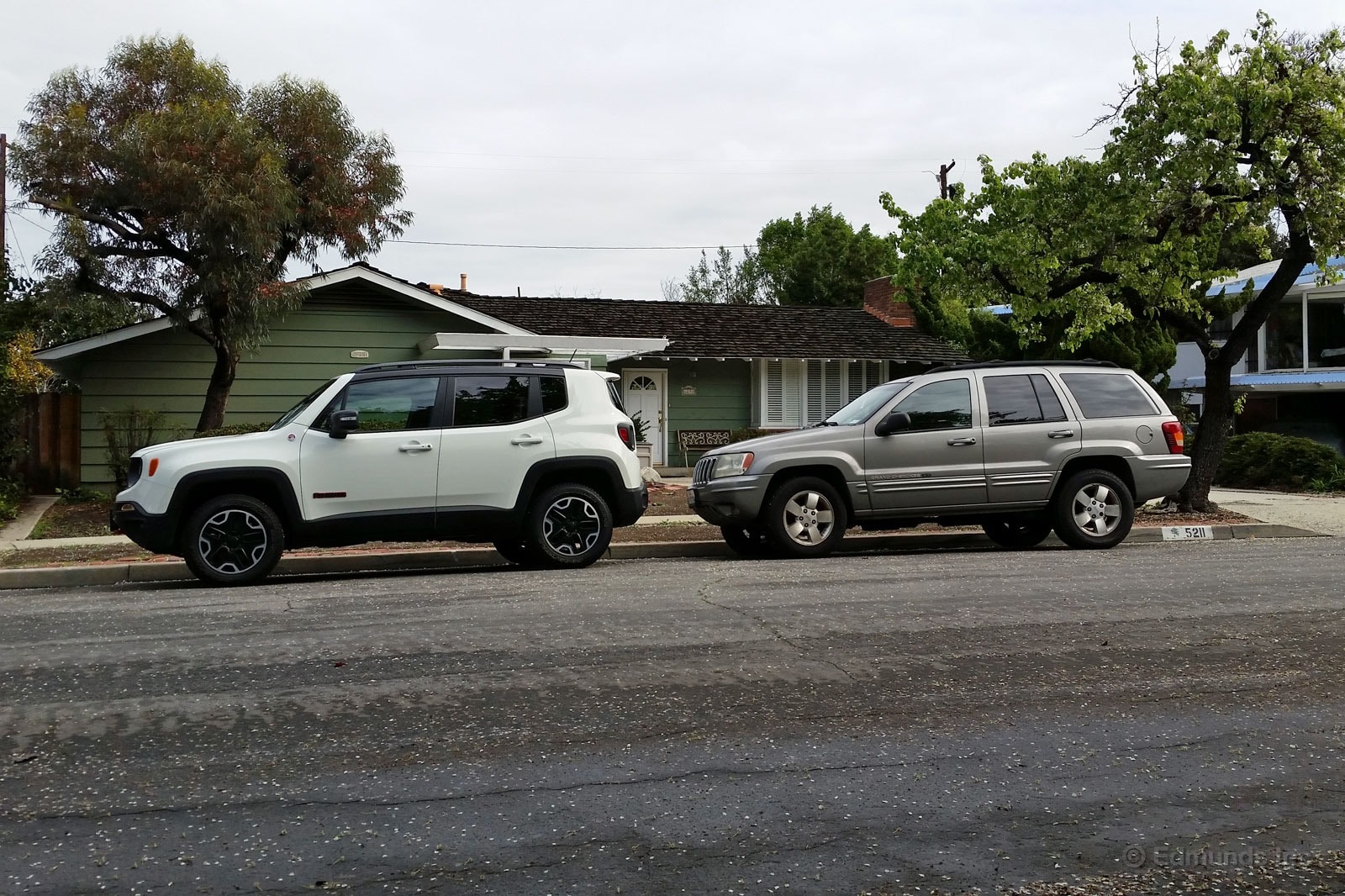
Recently, our intrepid New & Used Car Editor James Riswick compared the potential purchase of a 2015 Jeep Renegade Trailhawk to a CPO Jeep Grand Cherokee. James' post was very thorough and well-researched.
I, too, recently had the occasion to consider the Renegade against other SUVs. My comparison, however, was far less scientific, as it was solely based on the reoccurring theme that the Renegade is "soooo cute."
Three of my momma friends have now commented on the Renegade's cuteness.
"That's a Jeep?" Heidi asked. "It's so much cuter than my Grand Cherokee!"
"Ooooo, how long do you get to drive that cute Jeep?" Danica asked. "It looks like fun!"
"I wish I had a cute car!" said Lori as she climbed into her Chevy Tahoe.
Really? VW Beetle's might be considered cute. Maybe even the Smart Fortwo.
But our off-road-focused Renegade Trailhawk, with its Active Drive Low four-wheel drive and beefed-up suspension, is capable first and cute, second.
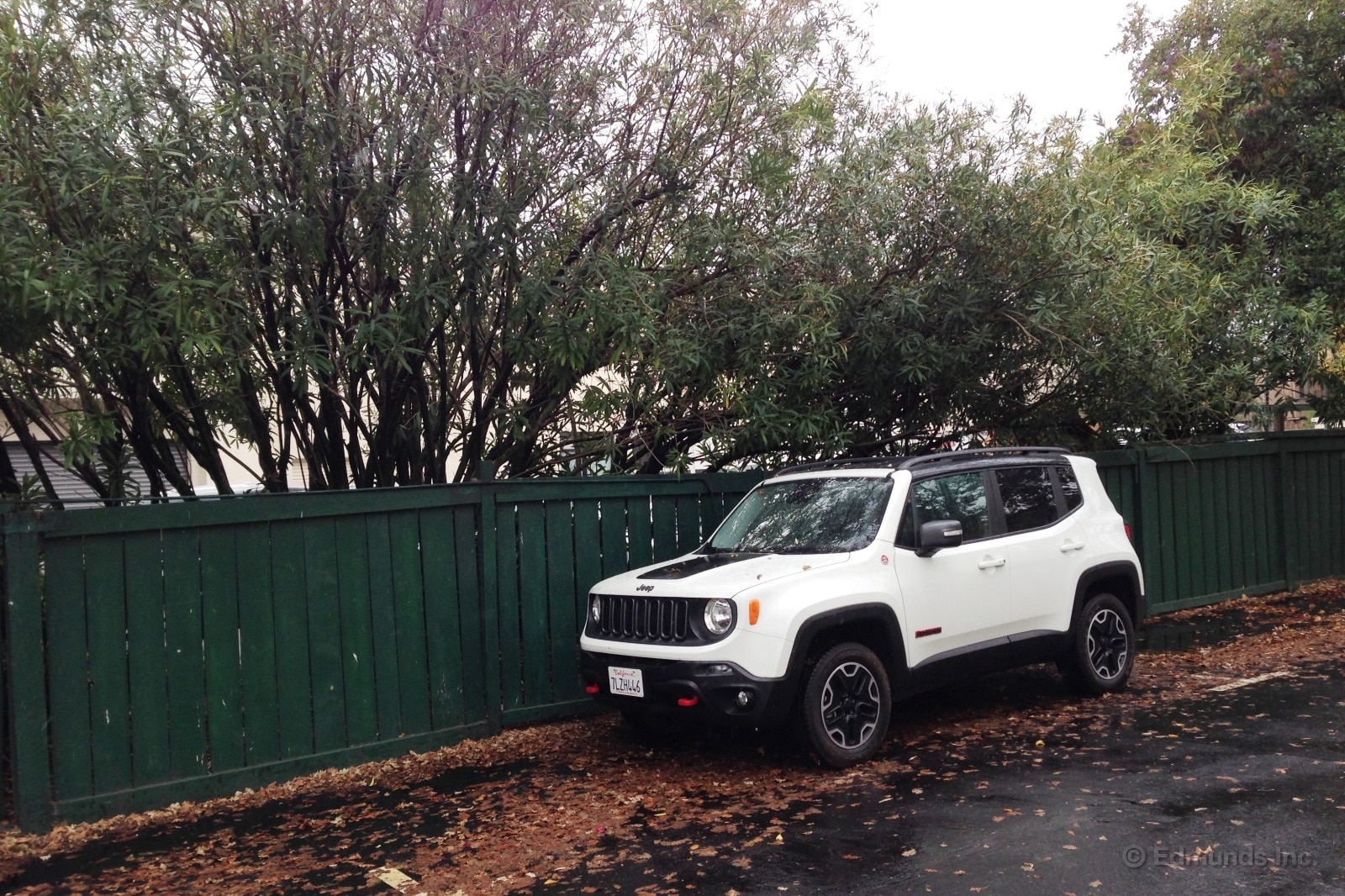
It's official. The ZF 9-speed transmission is a dud.
It's in our long-term 2015 Jeep Renegade Trailhawk, Honda Pilot, Acura TLX, and it was in our Jeep Cherokee. I know a lowest common denominator when I see one.
Does the ZF 9-speed ruin every car it's in? Easy, now. That's strong language. Let's not get carried awa- well, okay, you talked me into it. It does kind of ruin every car it's in.
The ZF 9-speed transmission is slow-witted and has inconsistent gearchange speed. This combination makes for a rather unlikeable gearbox. There are technical reasons among its inner workings that are responsible, but for brevity let's just say that both its hardware and calibration share the blame. That is, it's possible that running changes to its calibration will improve its temperament, but the fundamentals of its guts will make a total transformation unlikely.
What's worse is, in the Renegade, popping the gearstick into the manual gate doesn't help. You desperately want to be the shot-caller and take the reins away from the electronic overlords, but you can tap the lever dozens of times and get maybe one downshift. Maybe. Manual mode is hilariously useless in this trucklet. Well, it'd be hilarious if it wasn't so infuriating.
It seems as though the more proactive a driver you are, the less this 9-speed cooperates. That is, if you're passive and drive sedately and don't throw it any curveballs or ask much of it, the transmission will probably be just fine. If you start wanting responsive downshifts and an alert nature, you'll be disappointed.
At first I thought: "Perhaps all 9-speeds will be this way. Perhaps we are all doomed as a civilization." Then I drove Mercedes-Benz's homegrown 9-speed transmission (which is longitudinal and not transverse like the ZF niner). Turns out, not all 9-speeds are alike. The Benz box is very good indeed, and has none of the muddy characteristics of the ZF unit.
Doom averted.
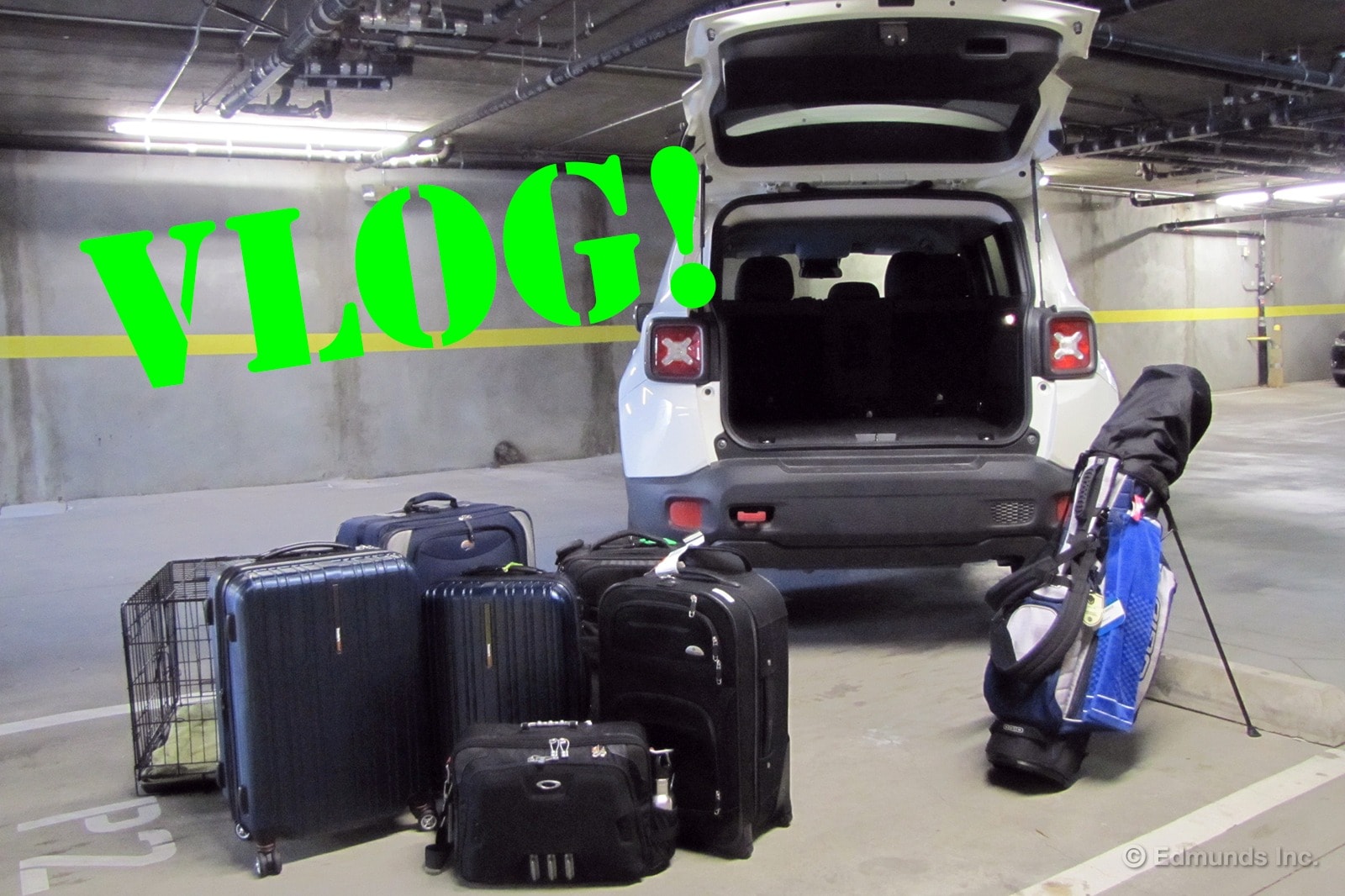
The 2015 Jeep Renegade Trailhawk has been criticized for not being able to carry much stuff. But exactly how much is "not much?"
To find out, I emptied my luggage closet and grabbed my trusty cameraman (aka a ladder and mini tripod). Video after the jump.
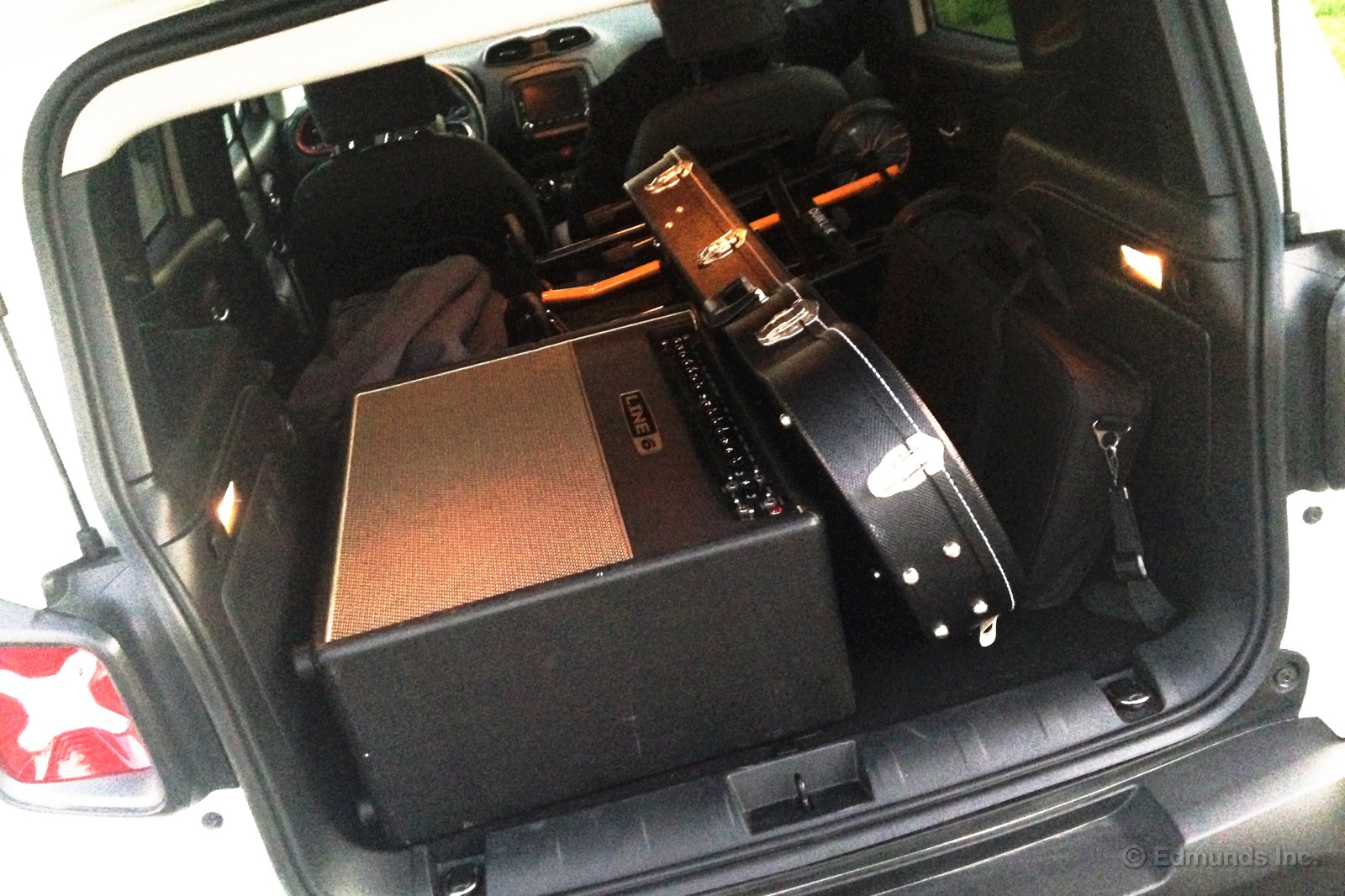
Almost any car that I would consider owning needs to accommodate a set of drums. That includes the Cayman S I will buy once all that stock I've purchased in solar companies hits big.
This is not such an impossible criteria, as I've gotten pretty good at shrinking drum sets into configurations that work in almost any car, whatever the gig, rehearsal or free jazz odyssey I'm heading off to play.
It shouldn't surprise anyone that our 2015 Jeep Renegade Trailhawk can hold a set of drums, and then some.
But wait, you say: I don't see any drums. No, no you don't. If you looked around the corner behind the driver's seat, you'd see just a soft case of cymbals and a snare drum case. In this situation, I was off to a rehearsal space that already includes a set of drums, stands and seat.
Instead, I'd picked up a guitarist friend and we loaded his rig — cased Les Paul, amplifier, pedal board, and gear cart — into the Trailhawk. But as seen in the photo above, a ton of room remained, both vertical and on the cargo floor. The Renegade could've easily still inhaled a kick drum, two tom-toms, stands, a seat, even a roadie. This actually feels like the same amount of room that my old XJ Cherokee offers with the rear seat folded, perhaps even more because of the Renegade's lower load floor.
Your average four-piece band could buy two of these and travel in better style than in a stanky, used communal Ford E-Series van.
Unfortunately, the Renegade won't be making my list of personal considerations. The transmission is just all kinds of wacky and wrong. But once again, its small size still impresses with considerable cargo capacity.
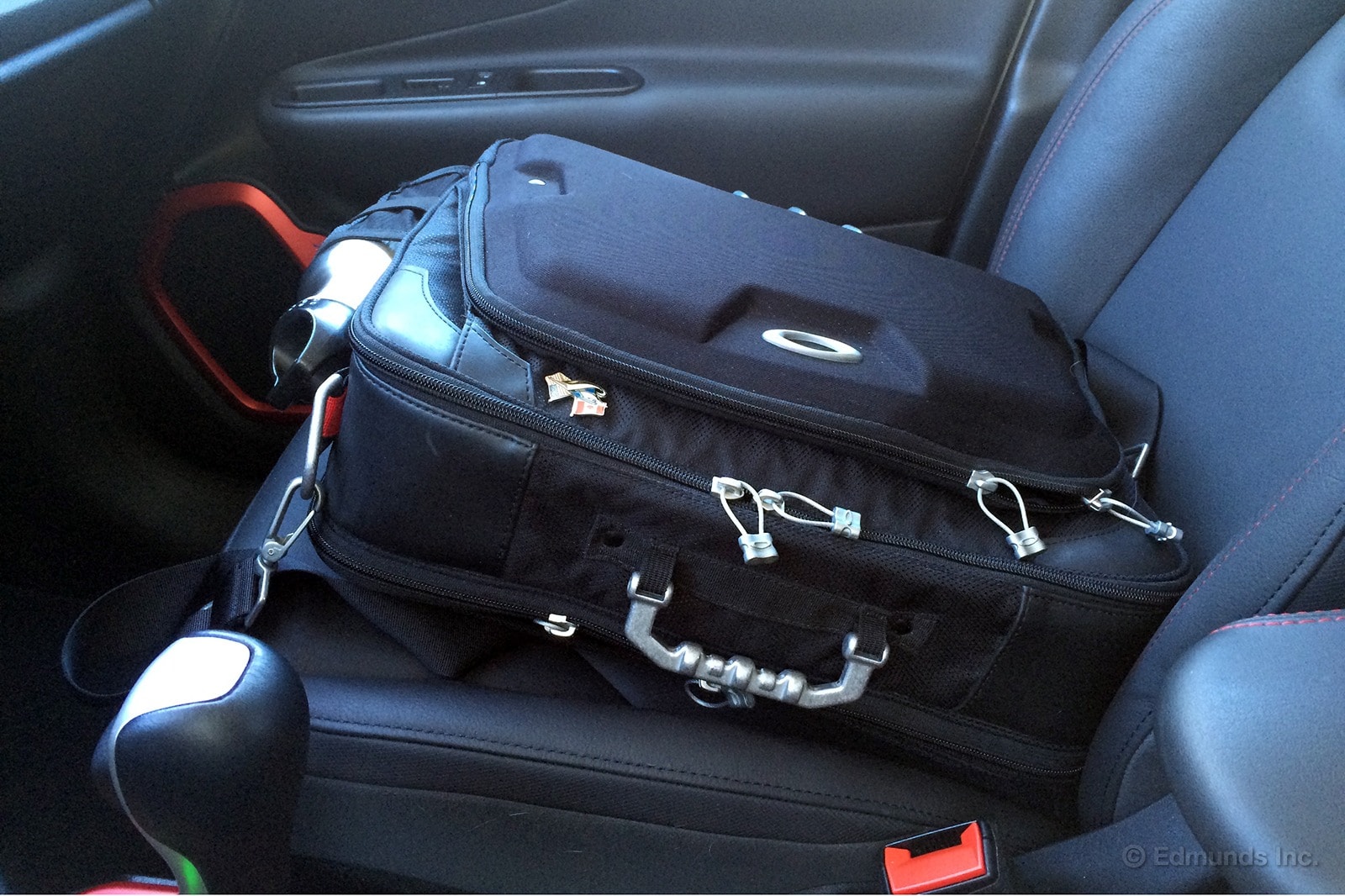
Dear 2015 Jeep Renegade Trailhawk,
I am writing to inform you that my briefcase is not a person. Every other car I drive rightly identifies it as an inanimate object, and yet you, and specifically your passenger seat seatbelt warning chime, seem to think that it is. Although I am open to non-humans being considered sentient beings, I am quite certain the "Oakley Home Office" is not the next Data or Number Six.
So please, the next time I drive you, don't make me buckle up my briefcase in order to silence the infernal chime and flashing seatbelt icon. It's not a person. Or a dog. Or even an Exocomp.
Thank you.
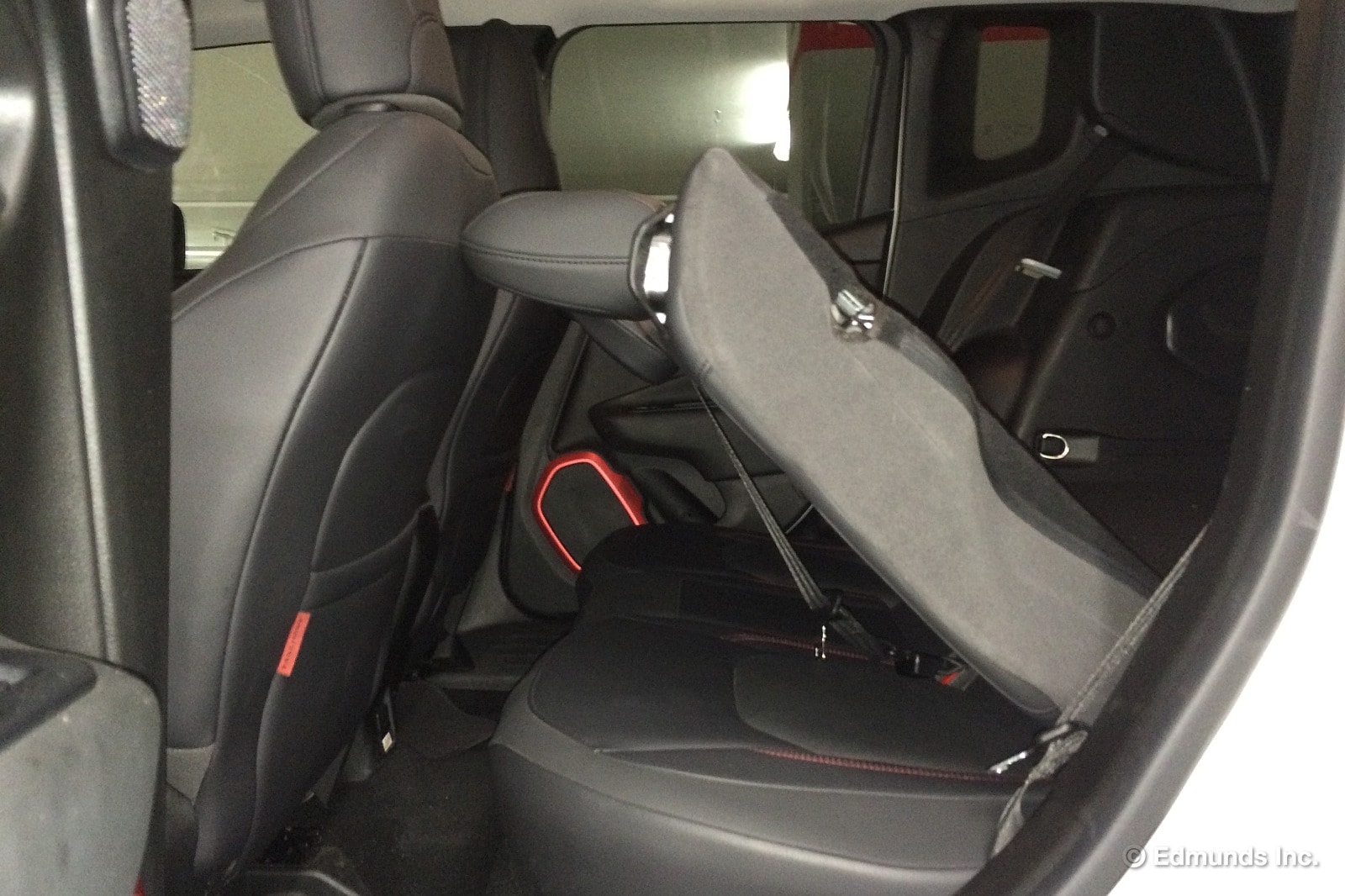
Headrests, or "head restraints" in automotive technical parlance, are great things, providing both recumbent comfort and mitigating whiplash injuries in rear-end collisions. And in this golden age of mobile distraction, they are no less important to have in place than a seatbelt needs to be buckled.
With that said, in vehicles like our 2015 Jeep Renegade Trailhawk, I fail to see the logic in making them a pain in the ass to remove when no "head-restraining" is required.
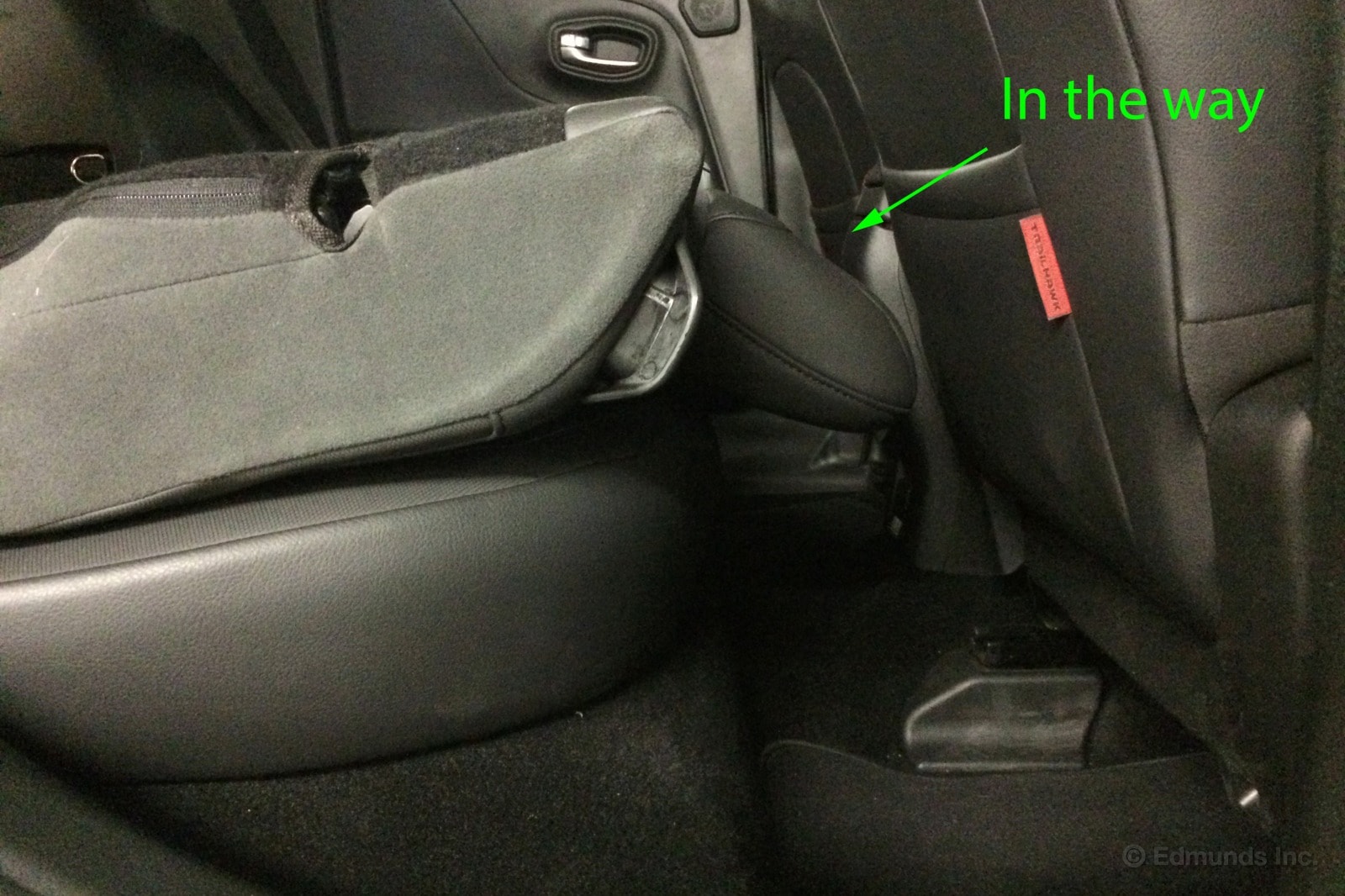
There's no doubt the Renegade's boxy greenhouse earns it some cargo-carrying street cred, as evidenced by both Frio's and Riswick's recent blogs. But there are still many instances where removing the headrests is useful and/or needed. For example, it avoids needing to shuffle the front seats around when folding down the rear seat backs (see Riswick's video at the 2:40 mark), it opens up additional storage space in the rear foot well area (see photo above), and it allows you to accommodate longer items like surfboards and boxes of unassembled IKEA furniture.
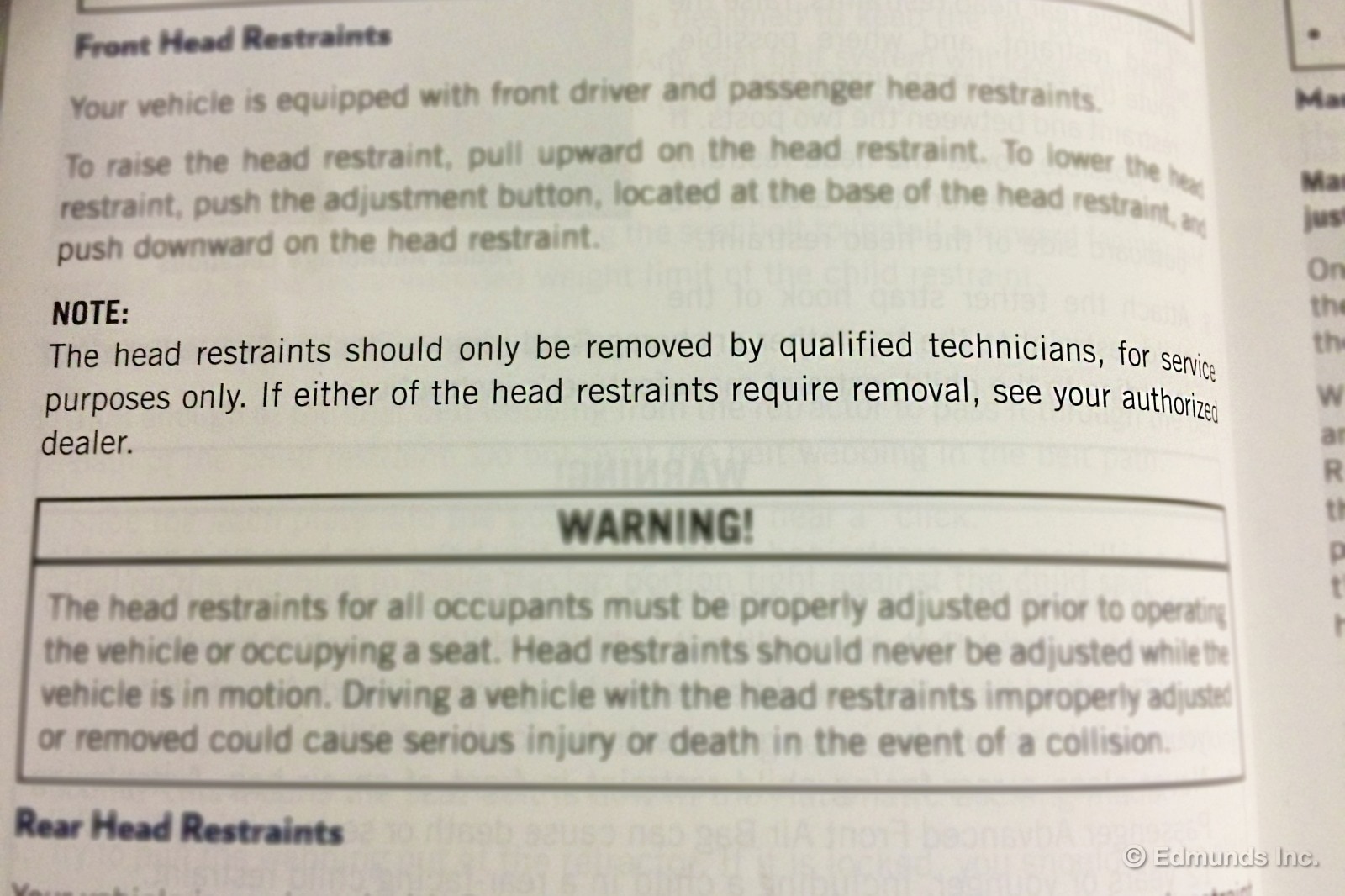
So why then must these headrests now "only be removed by qualified technicians, for service purposes only"? We're responsible enough to own and drive these vehicles, and buckle our own seatbelts, but are we so ill-equipped to manage the headrest situation? Since when has the spring-loaded pin and notch system become insufficient?
For those of you that share this frustration, there is a workaround which can be found on many forums and doesn't require the assistance of a "qualified technician." On the side of the headrest post that doesn't have the spring-loaded button, there is a square release that can be accessed with a pen or small screwdriver. Push this in as you pull the headrest up and voila — headrest freedom!
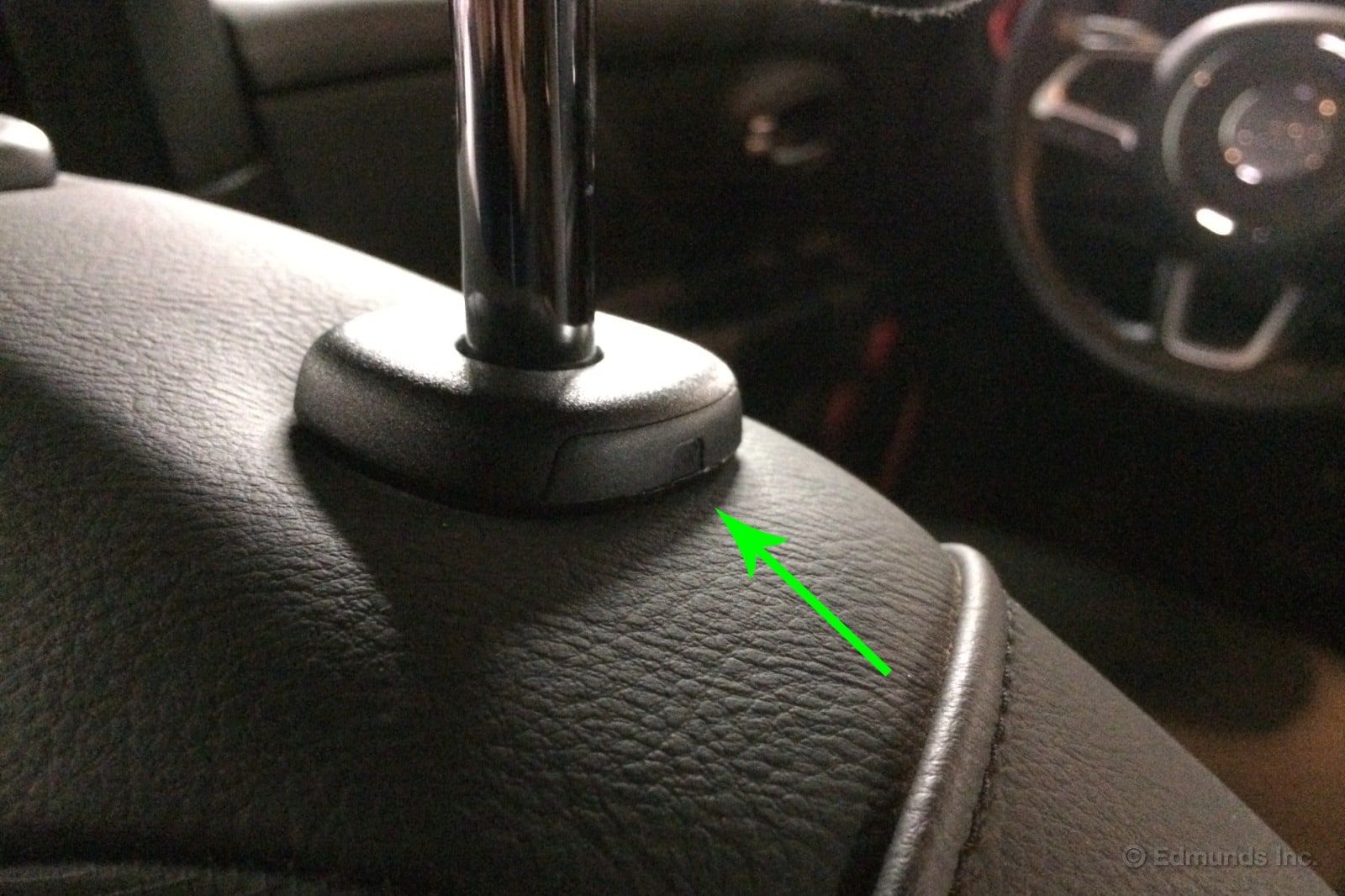

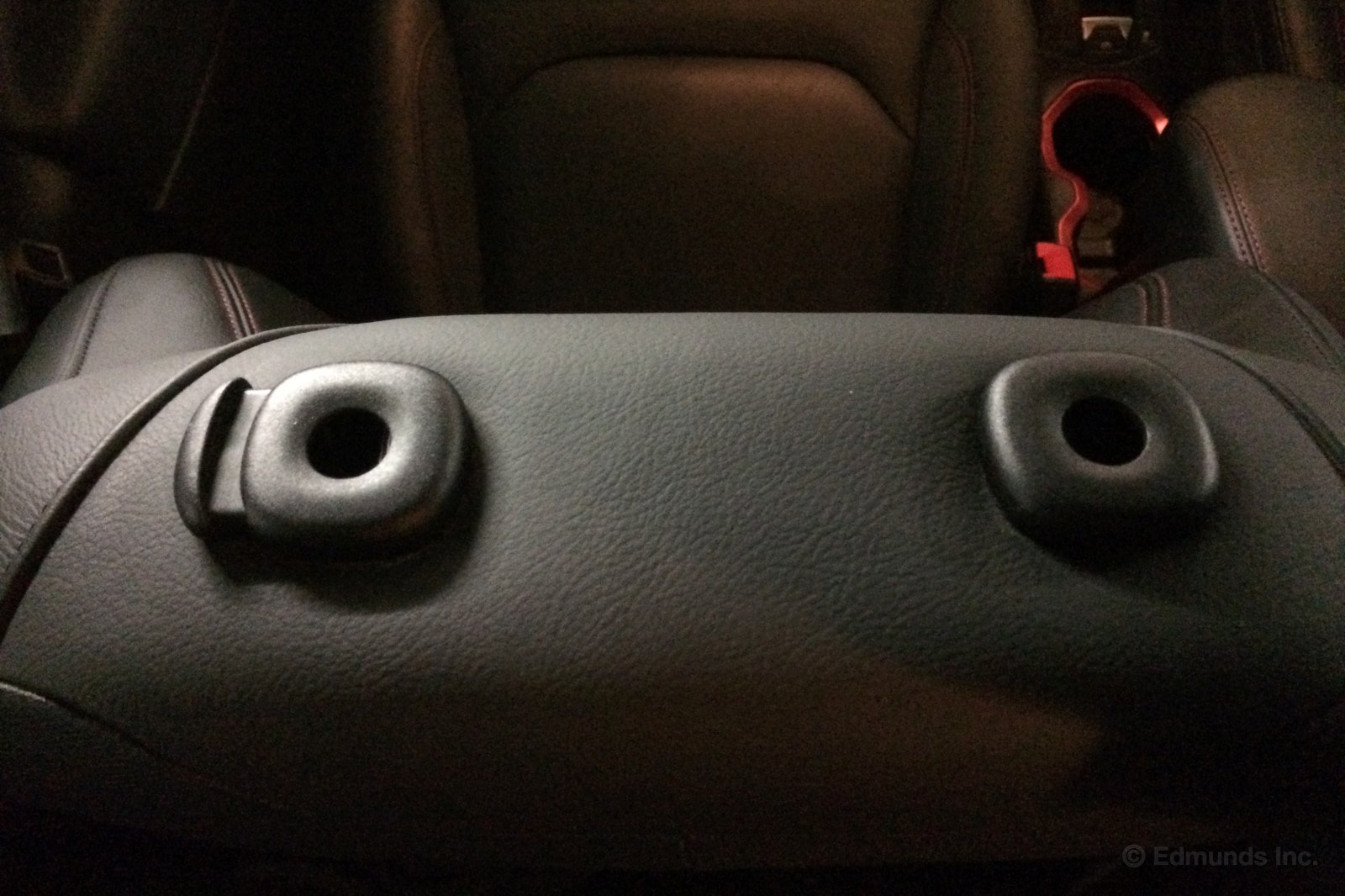
And because you're all responsible people, we know we don't even have to remind you to reinstall these critical safety items when you plan to carry passengers again.
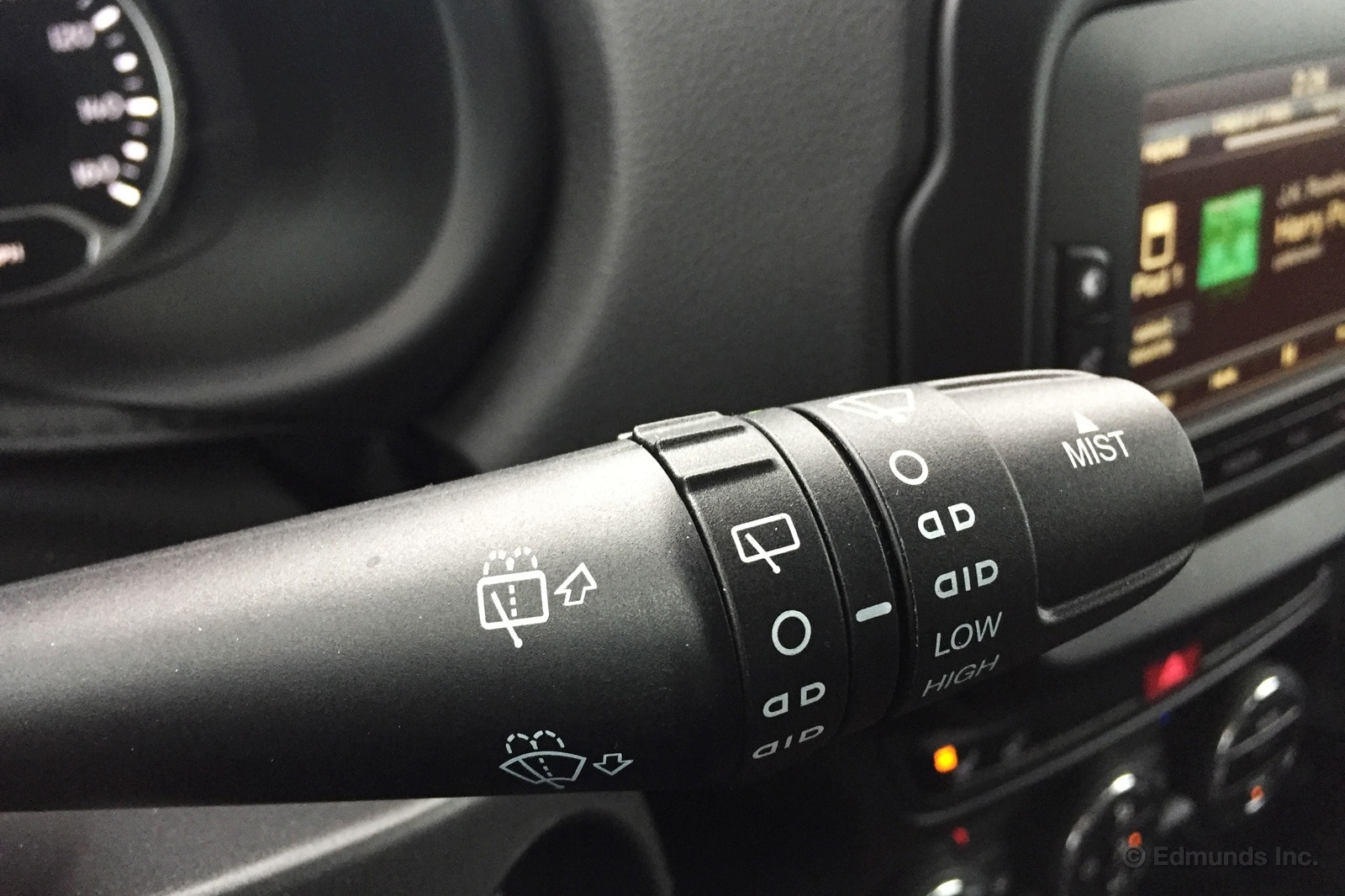
Los Angeles doesn't get much rain, meaning there are few opportunities to test out a vehicle's windshield wipers. Last week, I was commuting home in our 2015 Jeep Renegade Trailhawk through an afternoon rainstorm. I quickly became annoyed by the pace of the wipers.
The Renegade only has four settings for the windshield wipers, fewer than other vehicles in our fleet. The rain was falling just quickly enough to warrant turning the wipers on, but too slowly for the lowest setting. This meant either constantly hitting the mist setting or listening to the wipers squeak against a dry windshield.
This is a really minor thing, but after more than an hour of dealing with it in traffic, I was tired of constantly having to tap the stalk.
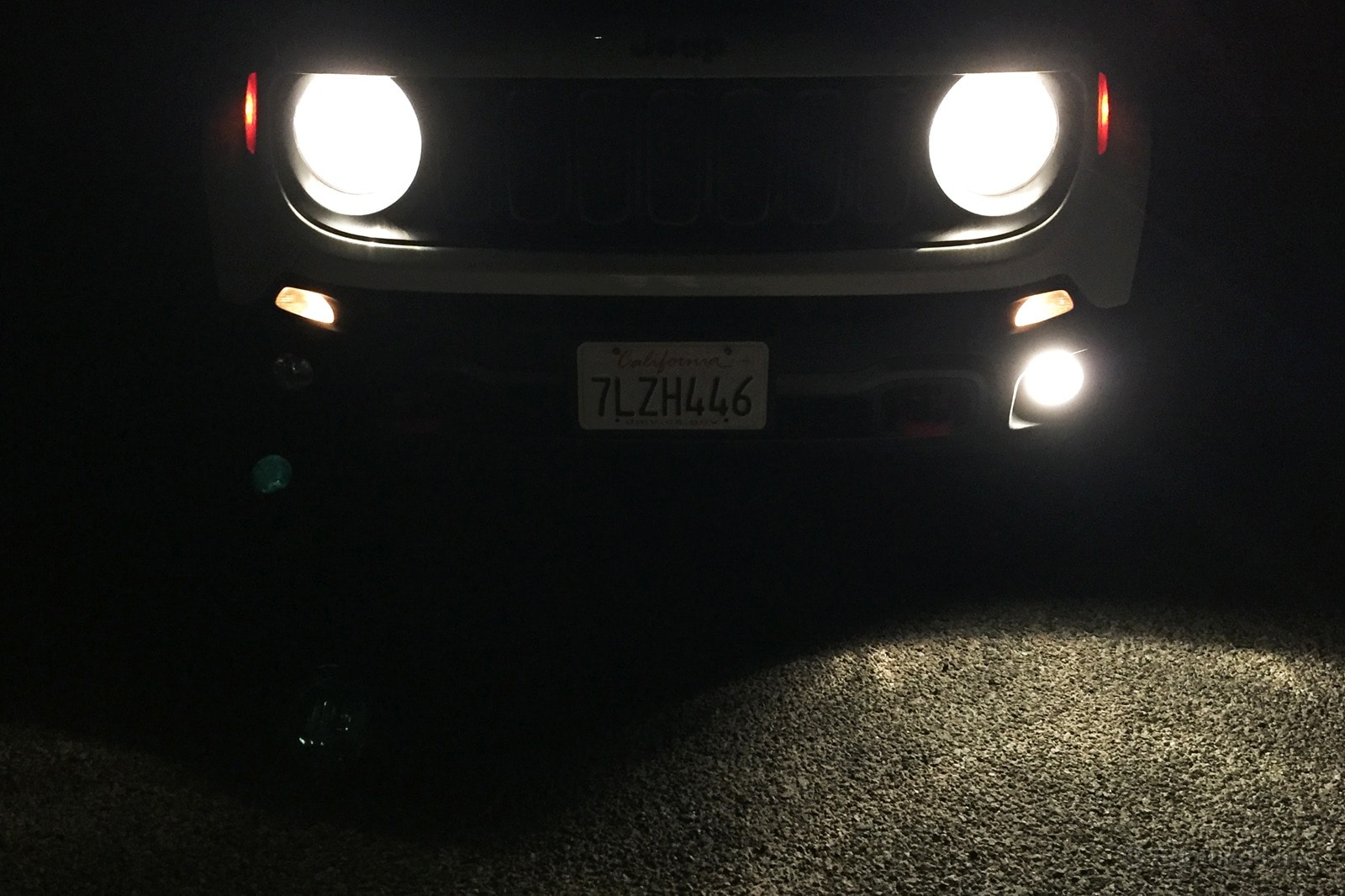
I was driving our long-term 2015 Jeep Renegade Trailhawk through Joshua Tree National Park about an hour after sunset when I noticed something new about the Renegade. Whenever I turned the wheel left or right, the corresponding fog light would illuminate, providing a little extra illumination in the direction I was heading.
I've put a number of miles on our Renegade, but this is something I've never noticed. It's a welcome bit of help. The headlights on our Jeep are traditional halogens and, though not bad, can't come close to matching the light provided from modern Xenon or LED headlights.
Those Xenon and LED headlights are also able to swivel, something a halogen can't accomplish as easily. Illuminating the fog lights is a simple solution.
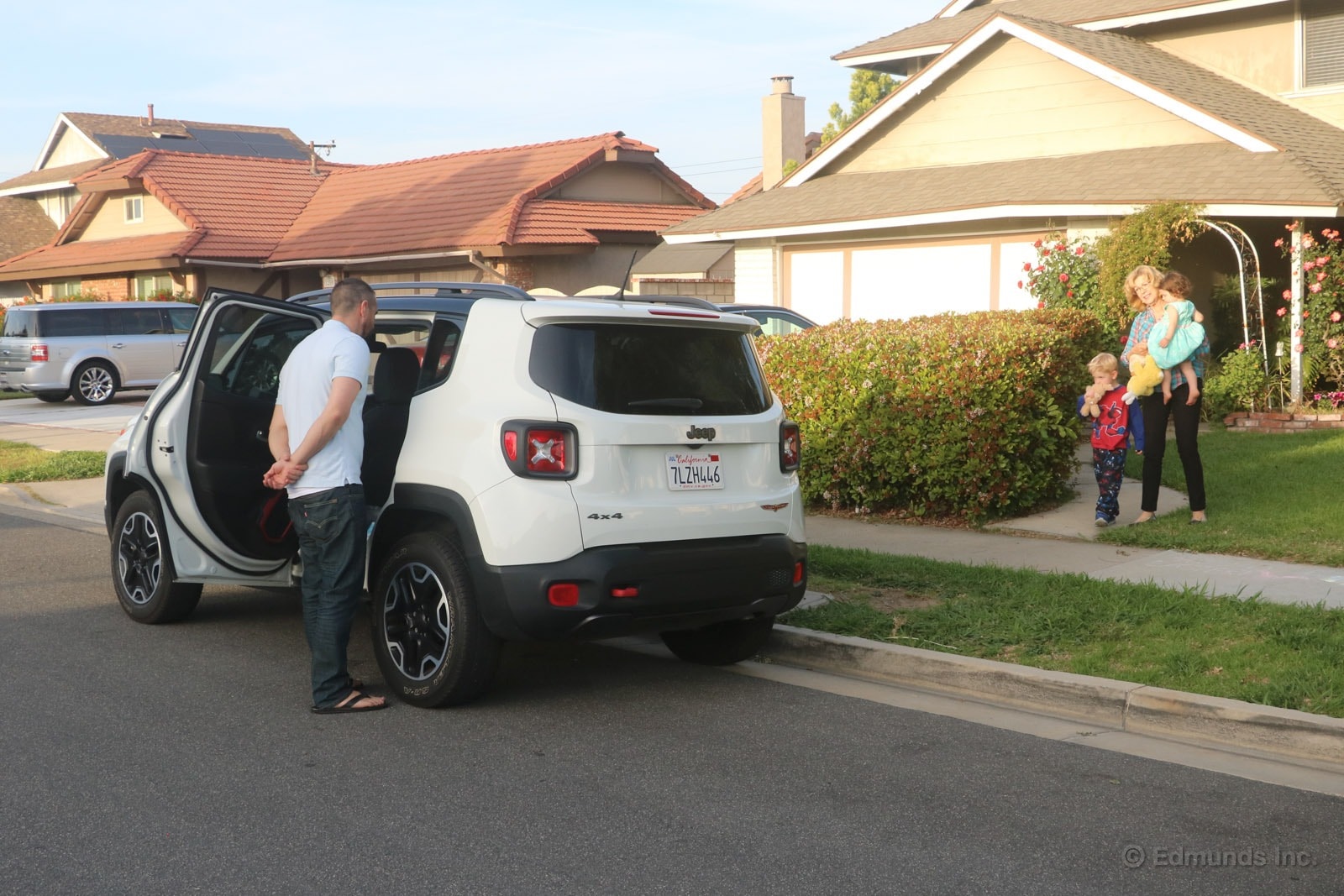
We drove our 2015 Jeep Renegade Trailhawk to Detroit and back earlier this year, racking up plenty of miles. More recently, I added an extra 250-mile leg to a road trip I made in our long-term Kia Optima and, because of some logistical reasons, swapped out the Optima for the Renegade to do it. This presented an opportunity for additional observations, this time with my family (wife, two small children) in tow.
I had to transfer much of what I loaded up in the Optima's trunk to the Renegade. Based on the specs, that wouldn't be a problem. The Optima's trunk holds 15.8 cubic feet of stuff. In the Renegade, you've got 18.5 cubic feet to work with behind the second-row seats.
But the Renegade's figure assumes you're loading up to the roof.
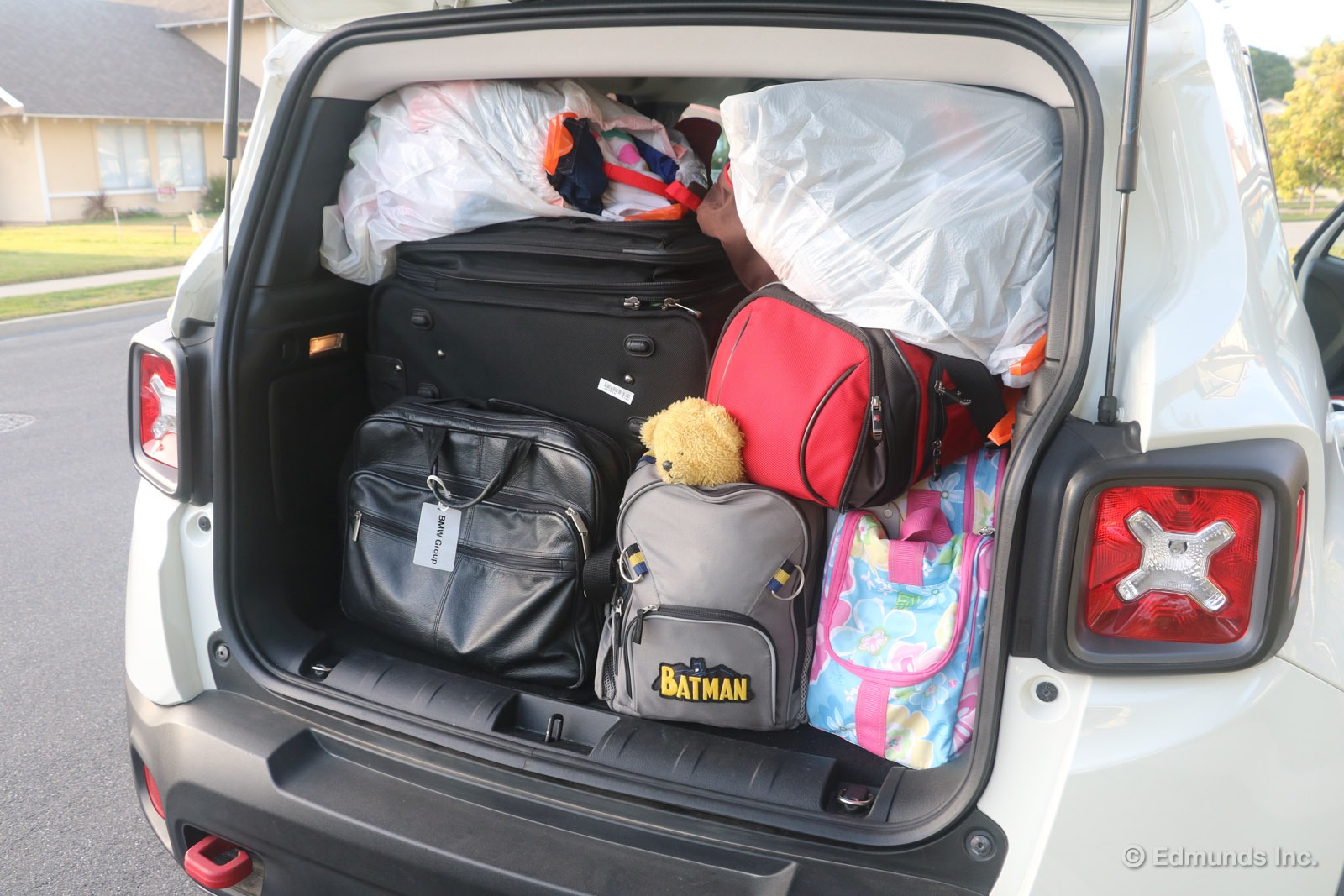
I've never been fond of stacking to the brim since it blocks rear visibility and places potentially loose items right behind your rear occupants' heads. But sometimes you've just got to do it. And to the Renegade's credit, its boxy shape allowed me to make the most of that space.
As for passenger space, the Renegade has plenty of rear headroom and a decent amount of rear legroom. With my wife and I sitting up front, my kids seemed content in back. I got a vibe of compactness from the Renegade — we were also sitting closer together than we were in the Optima — but it's not a claustrophobic setting, either. It reminded me a lot of what it's like driving a compact hatchback, actually.
I also like the Renegade's driver seat comfort and driving position. Although this pint-sized Jeep can ride a bit rough over broken highway pavement and isn't terribly quiet, I really felt just fine even after multiple hours at the wheel.
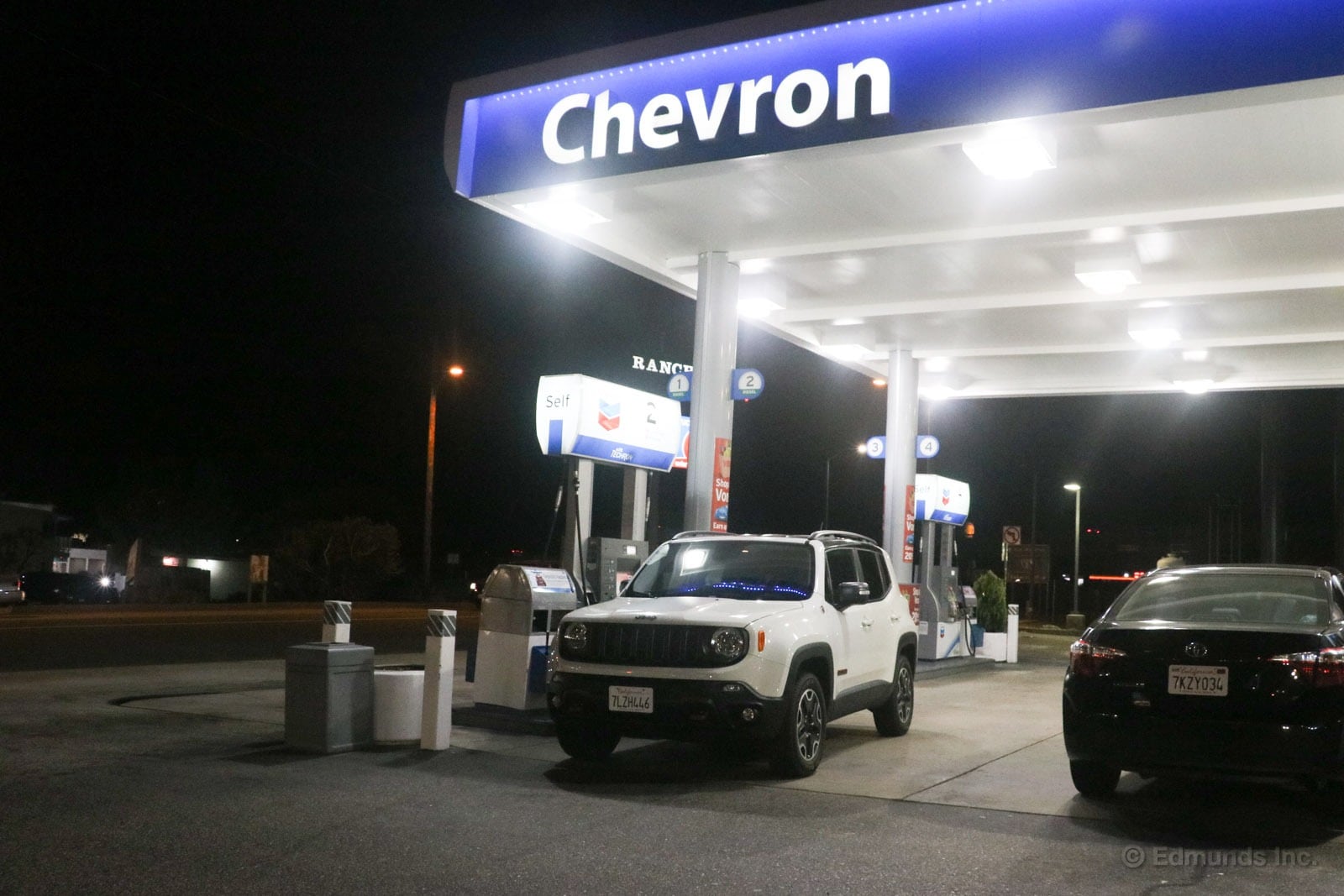
Since I was only driving about 250 miles, I didn't have to worry about the Renegade's modest fuel range, as Travis and Mike did on their LA-Detroit drives. With some traffic-clogged city driving mixed in, fuel economy ended up being 22.8 mpg.
Ultimately, our Renegade Trailhawk struck me as a vehicle I'd rather keep in town rather than constantly heading out for long family trips in. But Jeep didn't design it for that anyway. For the occasional weekend drive to the mountains or the lake, a Renegade should be just fine.
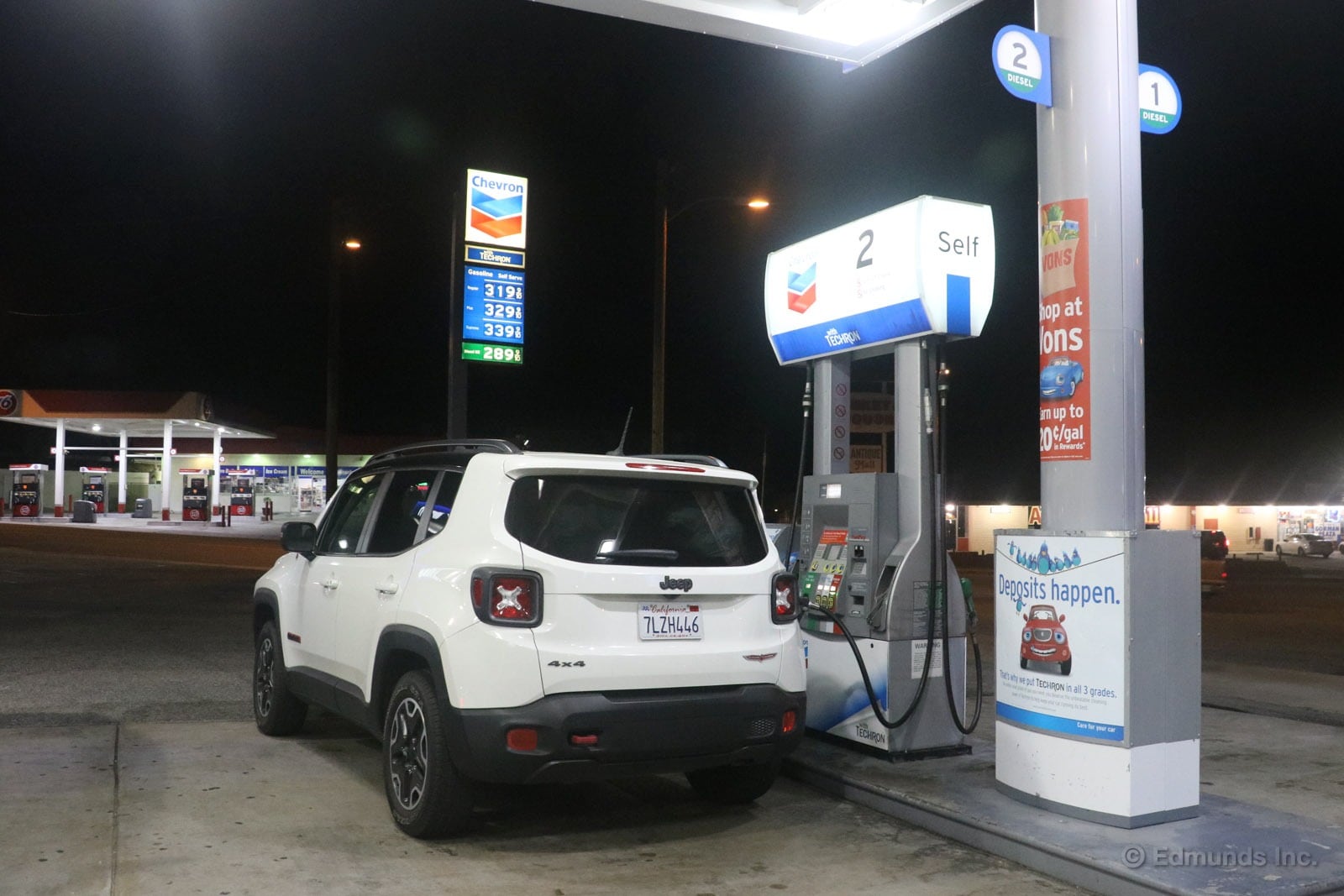
We neglected to report on the fuel economy of our 2015 Jeep Renegade Trailhawk for February. But I'm here to amend for past sins. We added about a thousand miles and averaged 20.9 mpg.
This is right at our current lifetime average of 21 mpg. Our records for best and worst fuel economy and max range stayed the same, too.
Steady as she goes, friend.
Worst Fill MPG: 15.2
Best Fill MPG: 29.9
Average Lifetime MPG: 21.0
EPA MPG Rating: 24 Combined (21 City/29 Highway)
Best Range: 361.9 miles
Current Odometer: 20,1265
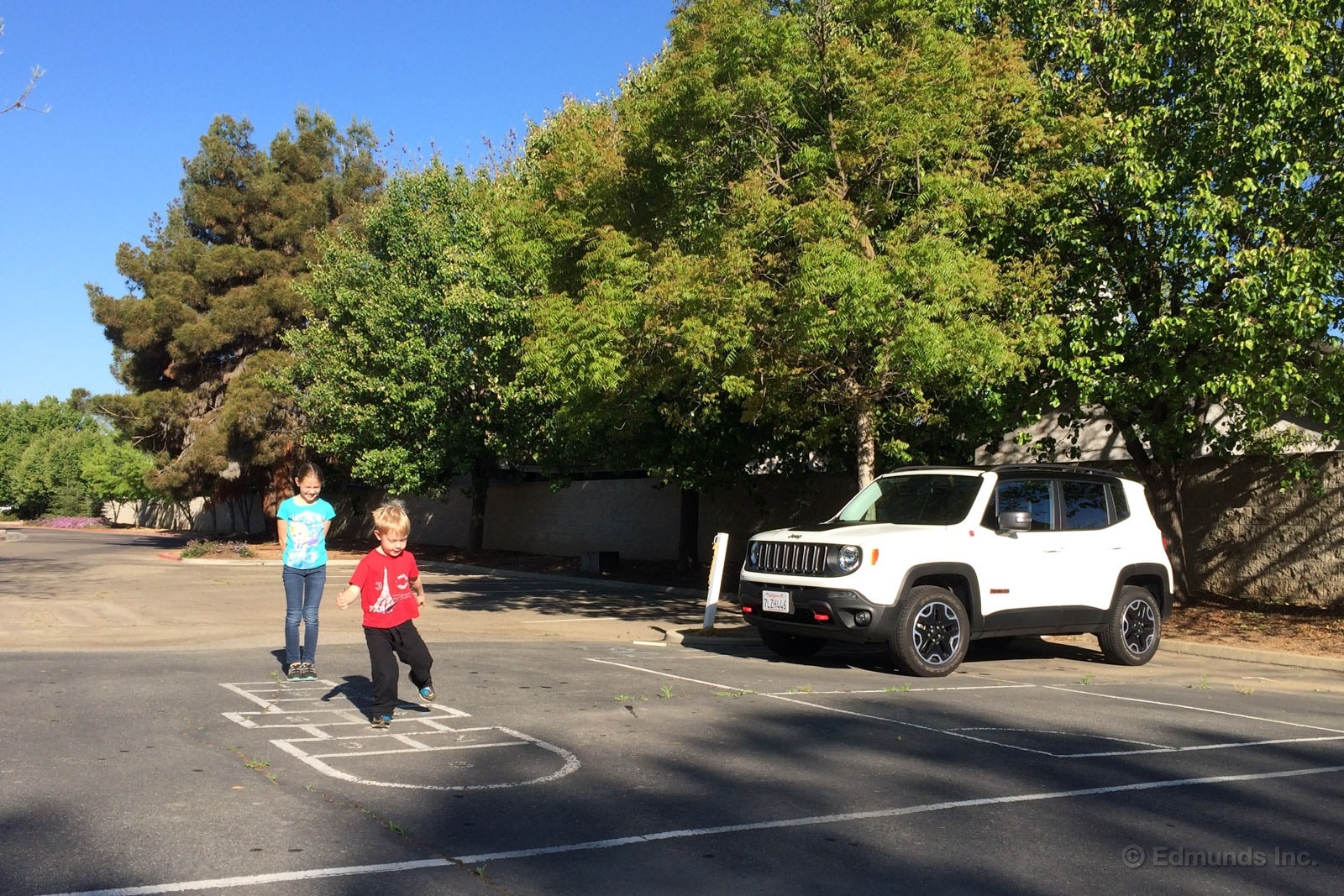
We're now at 20,000 miles on our 2015 Jeep Renegade Trailhawk. Achieving 20,000 miles is a common goal for our one-year long-term tests and we managed to do it here in just eight months. Of course, driving from Los Angeles to Detroit and back a few months ago certainly helped boost our accumulated mileage. But that also means we've got plenty of time to drive it even further. So far, our opinion of our little Jeep has been mixed.
It would seem that we're fond of the Renegade's cargo carrying abilities. It's small, sure, but you can still fit plenty of stuff with the rear seats down, such as bikes or big boxes. It's also entertaining to drive around town since it's small/nimble and distinctively styled.
Less appealing are the engine and transmission. Nobody seems to like the nine-speed automatic transmission, and fuel economy has been underwhelming so far.
As for maintenance, we've had to deal with a few unscheduled issues, including a key fob problem and some new brakes.
We're due for service again as the Renegade's intervals are every 10,000 miles. I've already got our appointment booked.
Fuel Economy Update for March - Road Trips Boost MPG Average
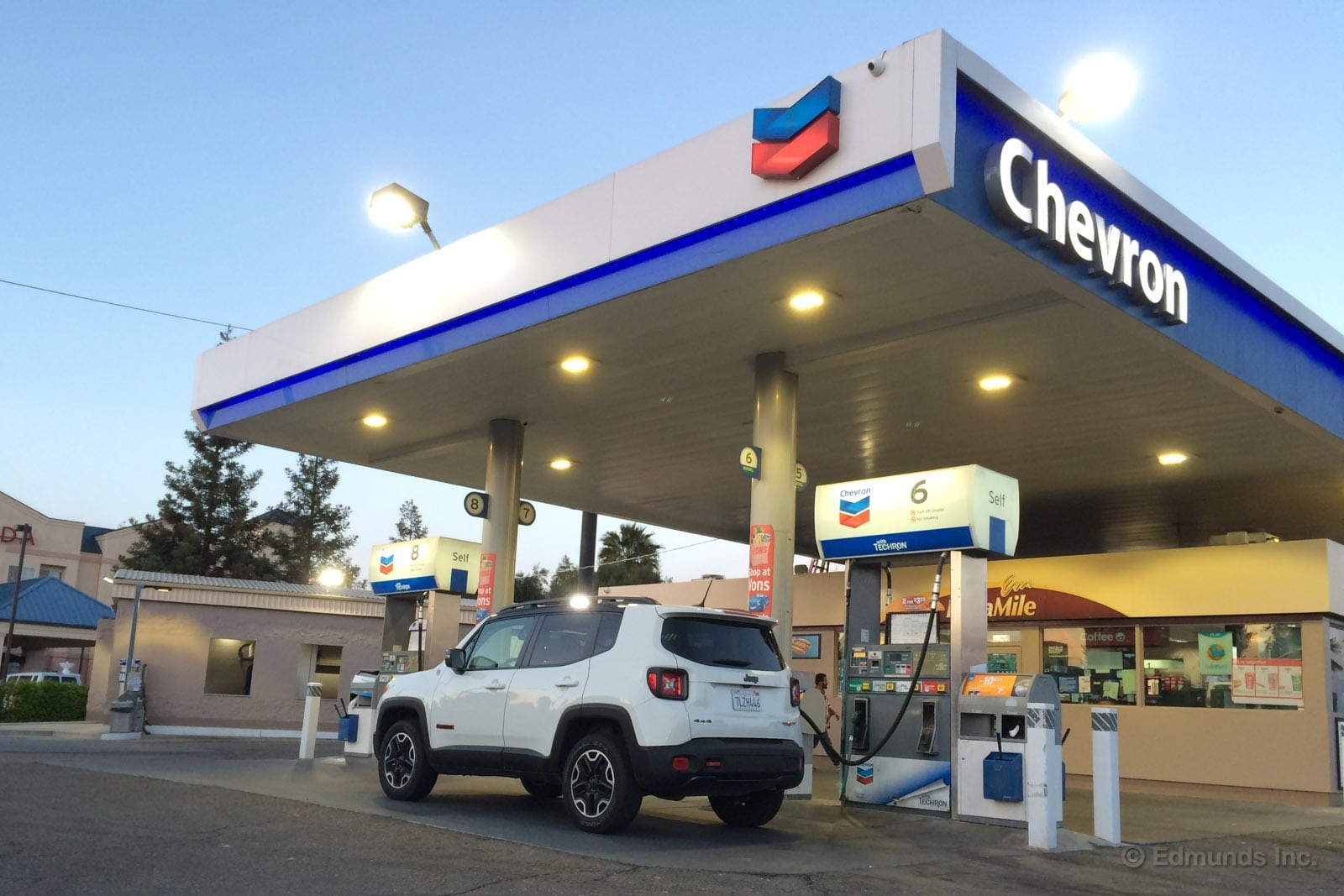
March was a big month for our 2015 Jeep Renegade Trailhawk. We hit the road for a total of 3,224 miles. Much of that was on the highway, and that further helped our lifetime average. But even after the significant amount of highway driving we've done with our Renegade, we're still below what the EPA estimates for combined city/highway driving.
For the month, we averaged 23.9 mpg. That helped push our lifetime average up a notch to 22.1 mpg (compared to 21 mpg previously) and moved us closer to 24 mpg EPA combined.
For reference, though, I'll point out a few highway-heavy tanks: 25.9, 26.2, 25.5, 26.1, 27.5 and 26.1. That seems to be the typical mpg our Renegade gets while driving on California highways. (In a recent update, I noted a short road trip resulted in 22.8 mpg. My city driving must have factored in more heavily than I thought.)
We've also not yet beat our current 29.9 mpg record set by Travis on his drive to Detroit back in January.
Worst Fill MPG: 15.2
Best Fill MPG: 29.9
Average Lifetime MPG: 22.1
EPA MPG Rating: 24 Combined (21 City/29 Highway)
Best Range: 361.9 miles
Current Odometer: 20,154 miles
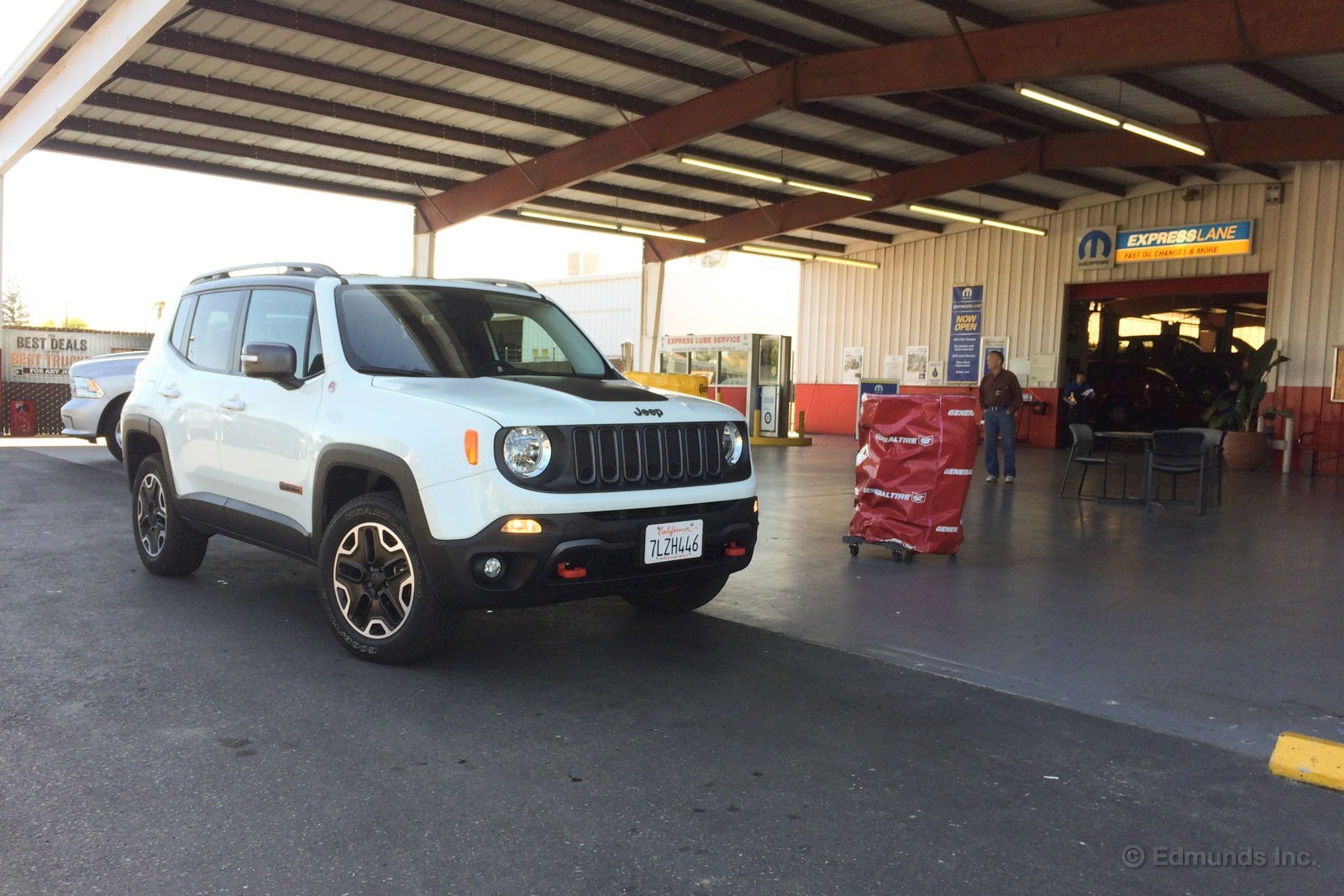
As we wrote recently, our 2015 Jeep Renegade Trailhawk has cruised past 20,000 miles on its odometer. Around the same time, the Renegade's driver information display posted a notification that we were due for an oil change (the Renegade's service interval is every 10,000 miles).
I therefore dutifully booked an appointment at my local Jeep dealer.
When I arrived at Fresno Chrysler Dodge Jeep Ram (there's a mouthful for you), I met up with my service advisor. The interaction was pleasant enough. From briefly glancing at the owner's manual, I couldn't tell if more than an oil change was required. Specifically, I was wondering about a tire rotation.
Our Renegade's service advisor recommended a rotation every other service interval. Since I didn't know what happened at the 10,000-mile service, we checked out our Renegade's tires. The fronts had more wear than the rears, so it seemed prudent enough to have a rotation done at this 20K service.
The service took about an hour and a half and then I was on my way. Everything checked out fine on the included vehicle inspection, too. Overall, it was certainly a more pleasant experience than the last time we were at a Jeep dealer.
Total Cost: $97.35 ($27.17 labor, $64.85 parts)
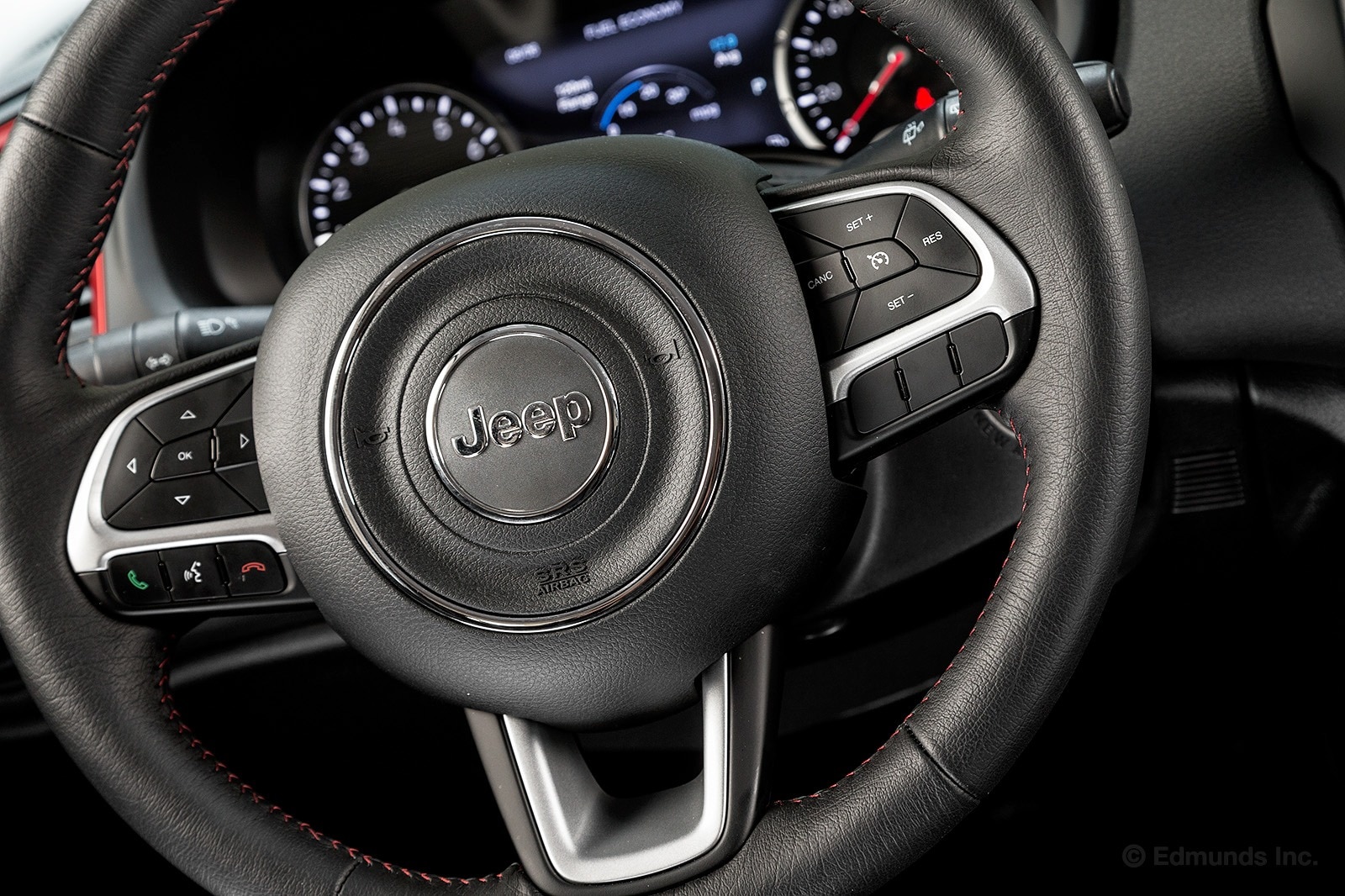
No, our 2015 Jeep Renegade has not shown any desire to support the Trump campaign. I'm talking about its steering. It's pulling to the right.
I hadn't been in the Renegade lately, so maybe this isn't new. Then again, it was just in for its 20K service and the tires were rotated front to back. Maybe that's the culprit.
Whatever the reason, it's enough to make it annoying on the highway. And it pulled that way consistently enough that I'm sure that it wasn't just the crown of the road pushing me toward the shoulder. The 405 freeway here in L.A. is quite wide, sometimes six to eight lanes on each side, so I had plenty of chances to try different pieces of pavement. They all produced the same result.
I'll check with some other staff members to see if they notice the same thing. If so, we'll get it in for an alignment to see if everything is pointing in the right direction.
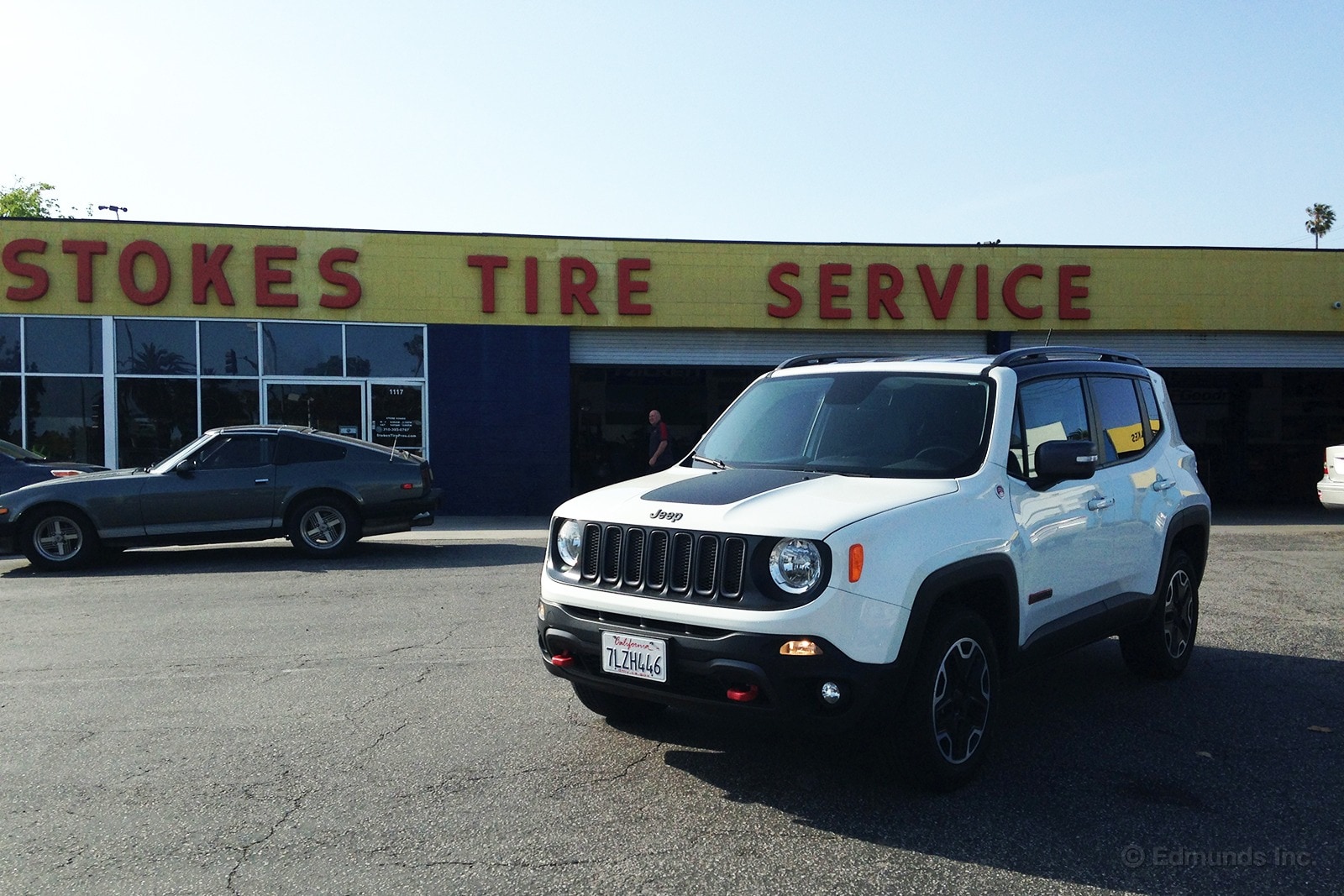
Ed already told you about our 2015 Jeep Renegade Trailhawk pulling to the right. This started following the Renegade's recent 20,000-mile service and tire rotation. Readers suggested various diagnoses and fixes, and we kicked the problem around the office a little bit. Alignment seemed like an obvious place to start, but a few voices felt strongly that it was more of a wheel/tire issue.
We opted to start with a road force balance from our preferred local tire spot, Stokes Tires Service. A road force balance typically seeks to alleviate up/down or fore/aft shake, but but we thought it was worth ruling out whether our problems stemmed from lateral movement.
Sure enough, they were not. Both right front and right rear tires were noticeably out of spec, by 1.0 ounces in the front, 3.0 ounces in the rear. The tire service industry standard apparently shouldn't exceed 0.30 oz. imbalance for average size wheels.
The road force balance seemed to do the trick. Back on the road, the pull was absent. We'll still need to pile on some miles to see if the fix holds, if that was the source problem. So far the signs are good.
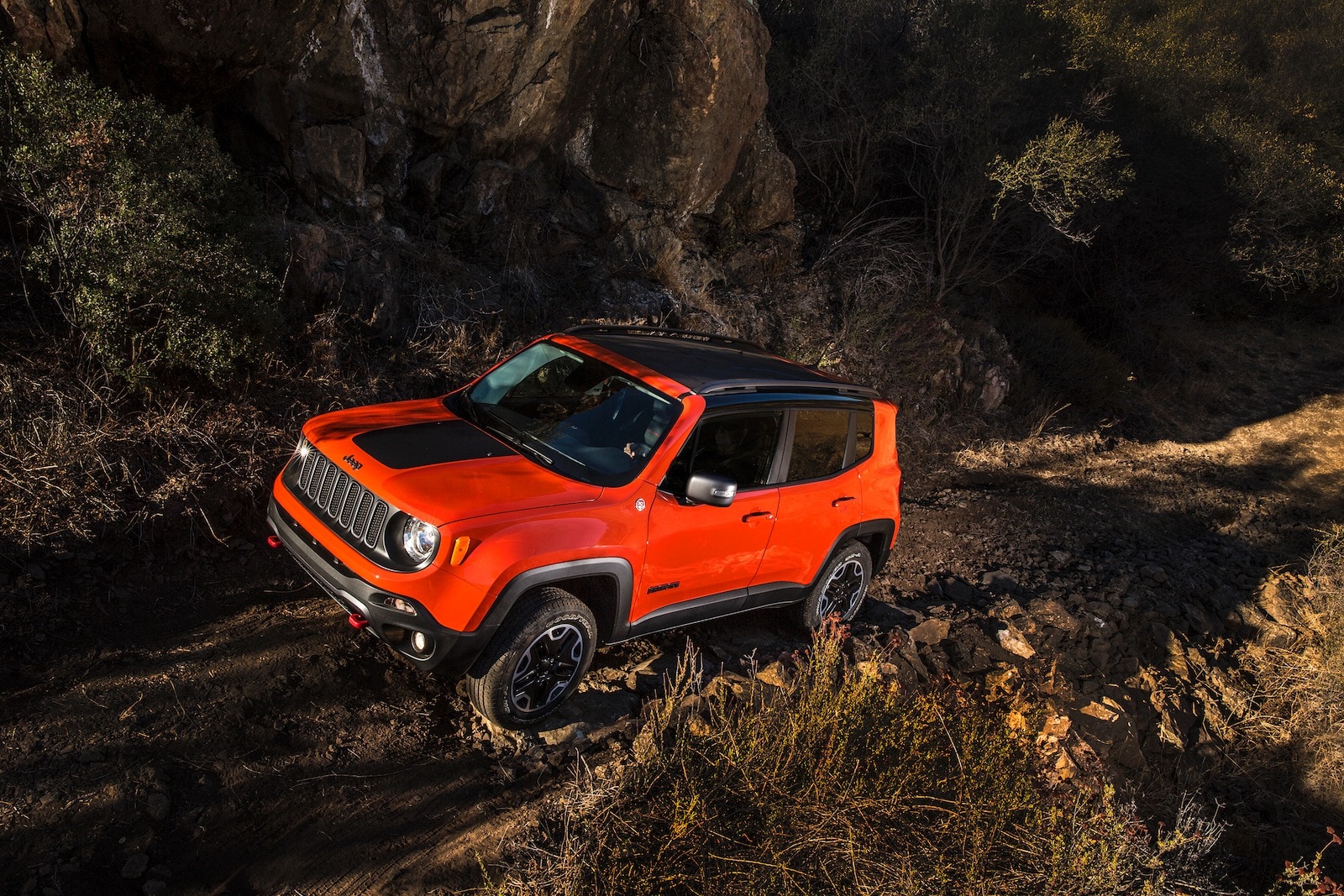
So the novelty of our 2015 Jeep Renegade Trailhawk has worn off. Before it arrived, we wondered if the all-new Jeep was really a Jeep.Could it do X? Could it do Y? Could it handle itself in the off-road? We've answered most of our questions in the 20,000-plus miles we've driven it.
We all pretty much love its space and utility. For a cute ute, it's roomy, even for back seat passengers. And yes, it can handle itself off pavement thanks to a surprisingly agile suspension (granted we did get the Trailhawk version, which should excel in this kind of work).
So what's new for the Renegade's second year of production? Automatic wipers now come standard on Limited and Trailhawk trims, and optional for the Latitude trim level. Does the Renegade need auto wipers? I don't know, but I do know that they should include a few more speed intervals than what's currently offered.
The premium nine-speaker audio system is now supplied by Beats Audio, they of the $300-headphone variety. Beats Audio systems have been available in Chrysler and Fiat models for awhile now, so this isn't an unusual move. I'd still take the Alpine or Harman systems.
Finally for 2016, they got rid of the flashlight. The nine-speed transmission, however, lives on.
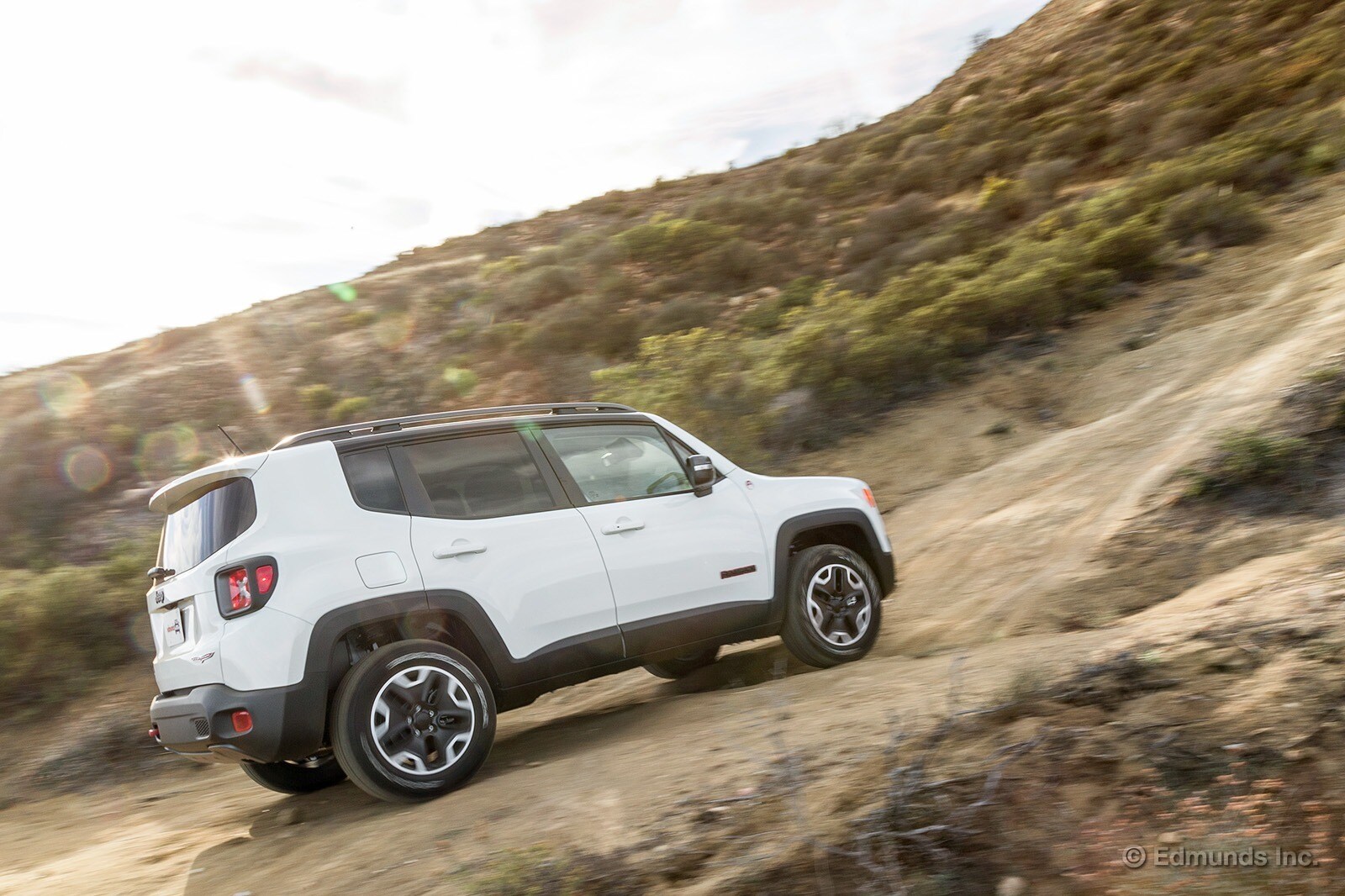
It's still doing it. Our 2015 Jeep Renegade Trailhawk is still pulling to the right.
We thought a road-force balance might do the trick, so we took it to our preferred local shop, Stokes Tire Service. With two of the wheels well out of spec, Stokes re-balanced all four corners and we left with what felt like a Renegade that tracked straight and true. Or at least that's how it seemed on the drive back to the office on relatively smooth asphalt between Stokes and our office.
The problem re-surfaced soon enough, though. Same effect: Lift your hands from the wheel and the Renegade starts drifting into the lane to its right like it's setting up a late apex. We knew the road-force balance might not be the answer to our problems, and it appears that it wasn't.
Time to get a few other staffers in the Jeep, gather impressions, and start the troubleshooting anew.
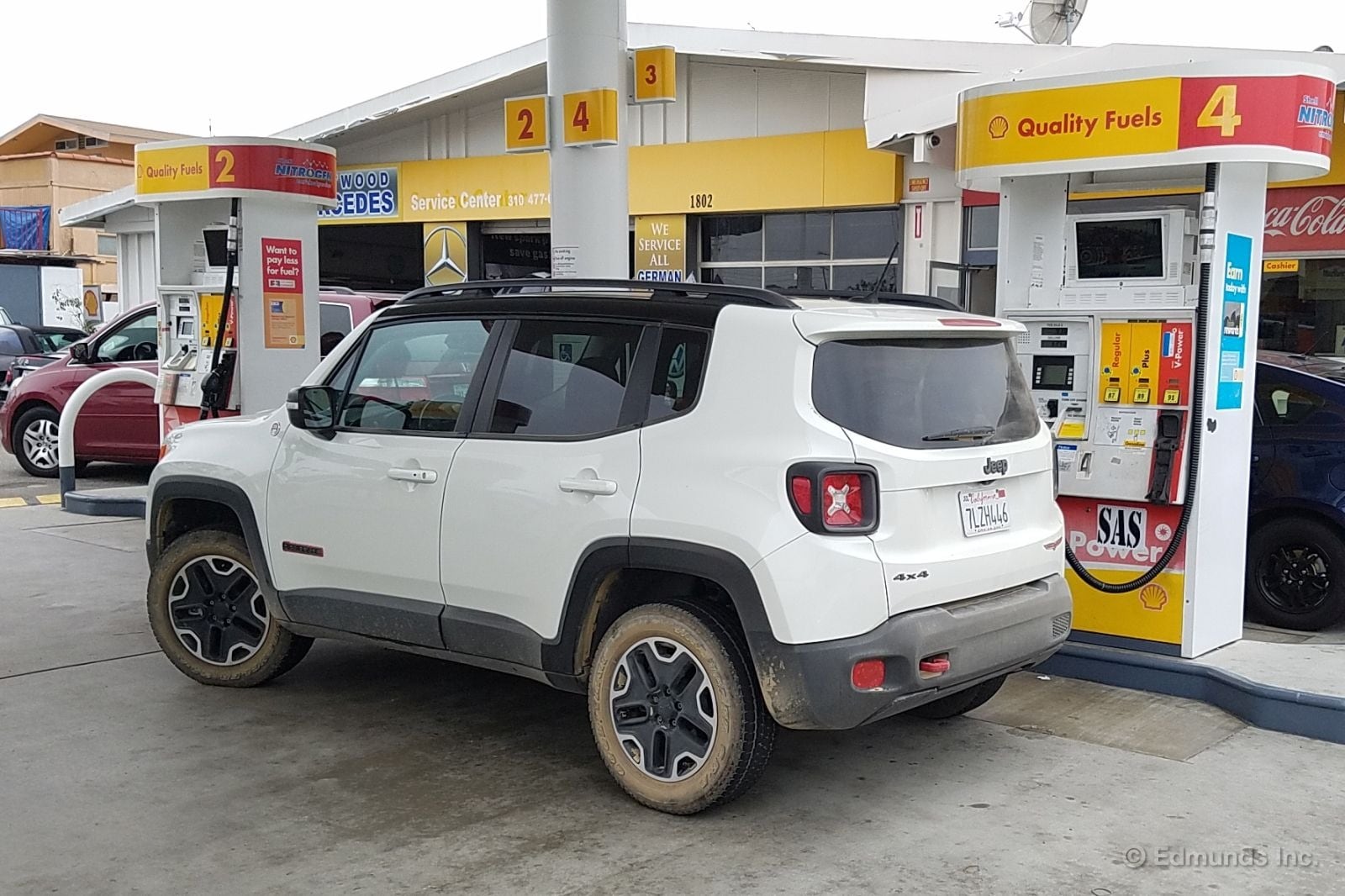
At this point it doesn't much matter how many additional miles we put on our 2015 Jeep Renegade Trailhawk. Time expires in seven or eight weeks, and the 22,243 miles on its odometer means it has already achieved its 20,000-mile long-term test goal.
Over that distance its overall average fuel economy has settled at 22.1 mpg, a figure that's not liable to move much from here on out. It appears that it's going to pull up short of the 24-mpg EPA combined rating that applies to all 2015 Jeep Renegade 4x4s with the 2.4-liter four-cylinder and nine-speed automatic.
Of course we're happiest when our test cars nail their EPA Combined rating at the end of a long-term test — or at least round up to it. Failing that, we usually part on good terms if a car comes in within a single mpg of its combined rating.
But our Renegade Trailhawk stands 1.9 mpg shy of the mark. That feels like a miss.
Or does it?
EPA window sticker rules are many and convoluted. Special models like the Trailhawk with its jacked-up stance, knobby tires and Trail-Rated extras almost never undergo separate testing. So long as the engine and transmission are the same, such vehicles get to wear the volume model's window sticker without ever casting the merest shadow on the test dyno.
The catch: Renegade Trailhawk sales cannot be allowed to represent more than 33 percent of all 2.4-liter nine-speed automatic Renegade 4x4 sales. Jeep has many ways to ensure this is the case, but the Trailhawk gear represents extra cost that probably makes it occur naturally.
Our Renegade Trailhawk's window sticker mpg owes everything to the more street-oriented 2.4-liter 4x4 Sport, Latitude and Limited, the volume models that hunker down at a more aerodynamically advantageous height, cheat a little more wind thanks to smoother front and rear bumper contours, roll more easily on smooth-rolling crossover tires and weigh less because they don't have Trailhawk goodies like tow hooks, skid plates and a full-size matching spare tire.
Considering this, I think our Renegade Trailhawk is doing quite well to be coming up only 1.9 mpg shy of a window sticker it doesn't really deserve but can legally wear on a technicality. Frankly, I expected worse, especially since more than a few of us have taken the Renegade into the mountains and the local desert for some off-roading, high-consumption use cases that aren't included in the official mpg rating process one little bit.
The fact that it's not missing by a mile bodes well for those who bought a 2.4-liter Renegade Sport, Latitude and Limited 4x4, the vehicles that are more directly represented in the window sticker math. If we're missing by less than 2 mpg, those vehicles stand a good chance of nailing it.
Worst Fill MPG: 15.2
Best Fill MPG: 29.9
Average Lifetime MPG: 22.1 (4.5 gallons per 100 miles)
EPA MPG Rating: 24 Combined (21 City/29 Highway)
Best Range: 361.9 miles
Current Odometer: 22,243 miles
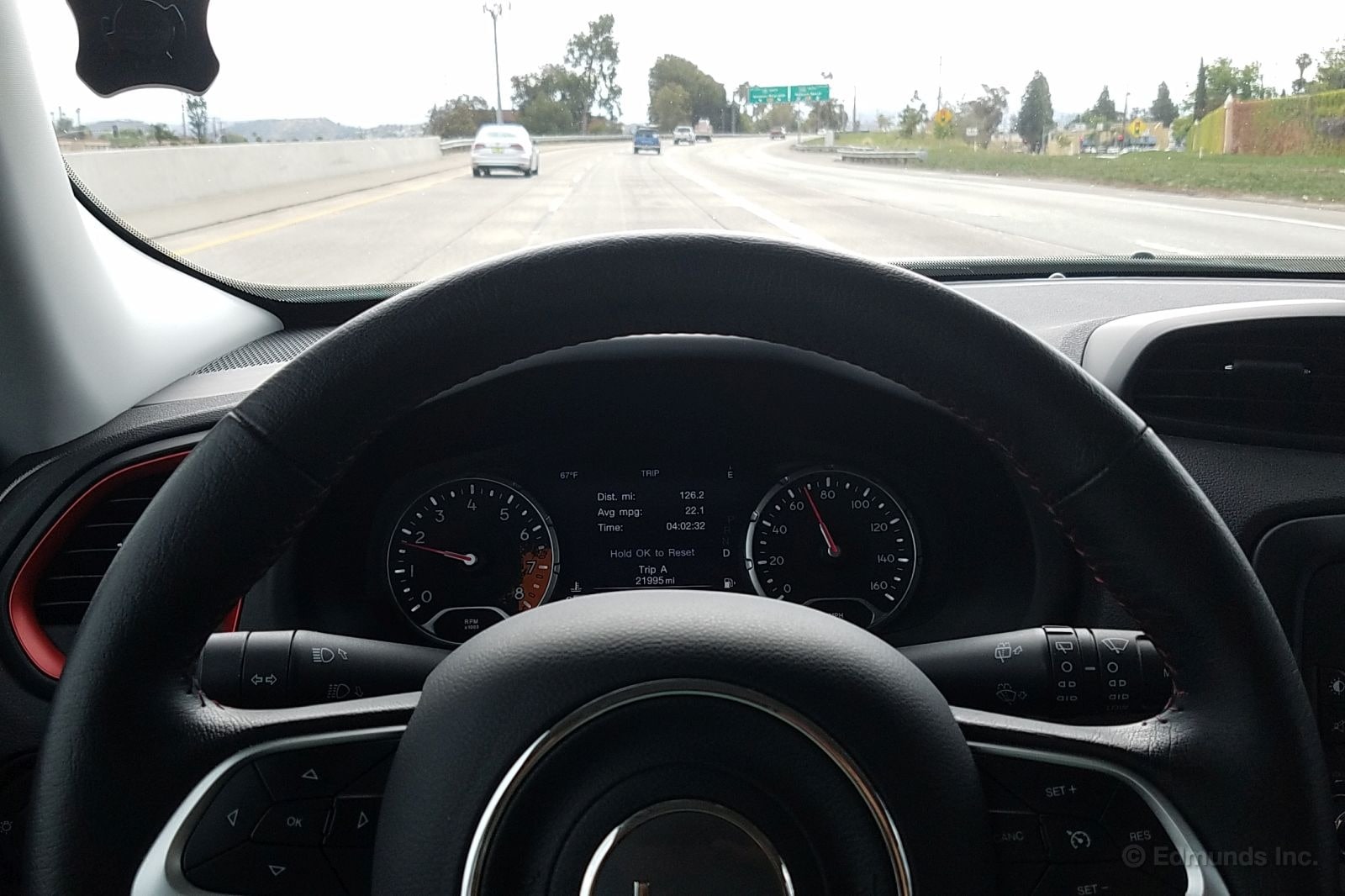
Our 2015 Jeep Renegade Trailhawk is no longer pulling to the right. But the path to getting it sorted out wasn't entirely smooth. That's fairly typical with this kind of thing.
That's because drift/pull is often confused with a different issue: an off-center steering wheel. A proper diagnosis starts with understanding the difference so it can be clearly articulated to the service technician.
An off-center steering wheel is just what it sounds like. The steering wheel is visibly cocked to one side when driving straight on a typically-crowned road, which is defined as two percent down to the right. You don't feel any unusual resistance, the car will continue on a reasonably straight course if you momentarily release the wheel. The steering wheel is crooked, is all, probably due to a minor alignment problem.
Drift/pull is different and isn't — pardon the pun — as straightforward, possibly because those two words describe the same thing two ways. Pull is what you feel if you find you must apply steering torque to go straight ahead on a normally-crowned road. Drift is the subsequent vehicle movement you see if you stop applying that correctional torque and let go.
But here it gets tricky. When you release the wheel to observe the drift, the wheel may well rotate to that side. But this is not necessarily indicative of an underlying alignment problem unless the wheel is also off-center when you guide the car straight with your hands on the wheel.
It is possible to have both problems at the same time, and that's exactly what was going on with our Jeep Renegade. It had an off-center steering wheel and a pull to the right.
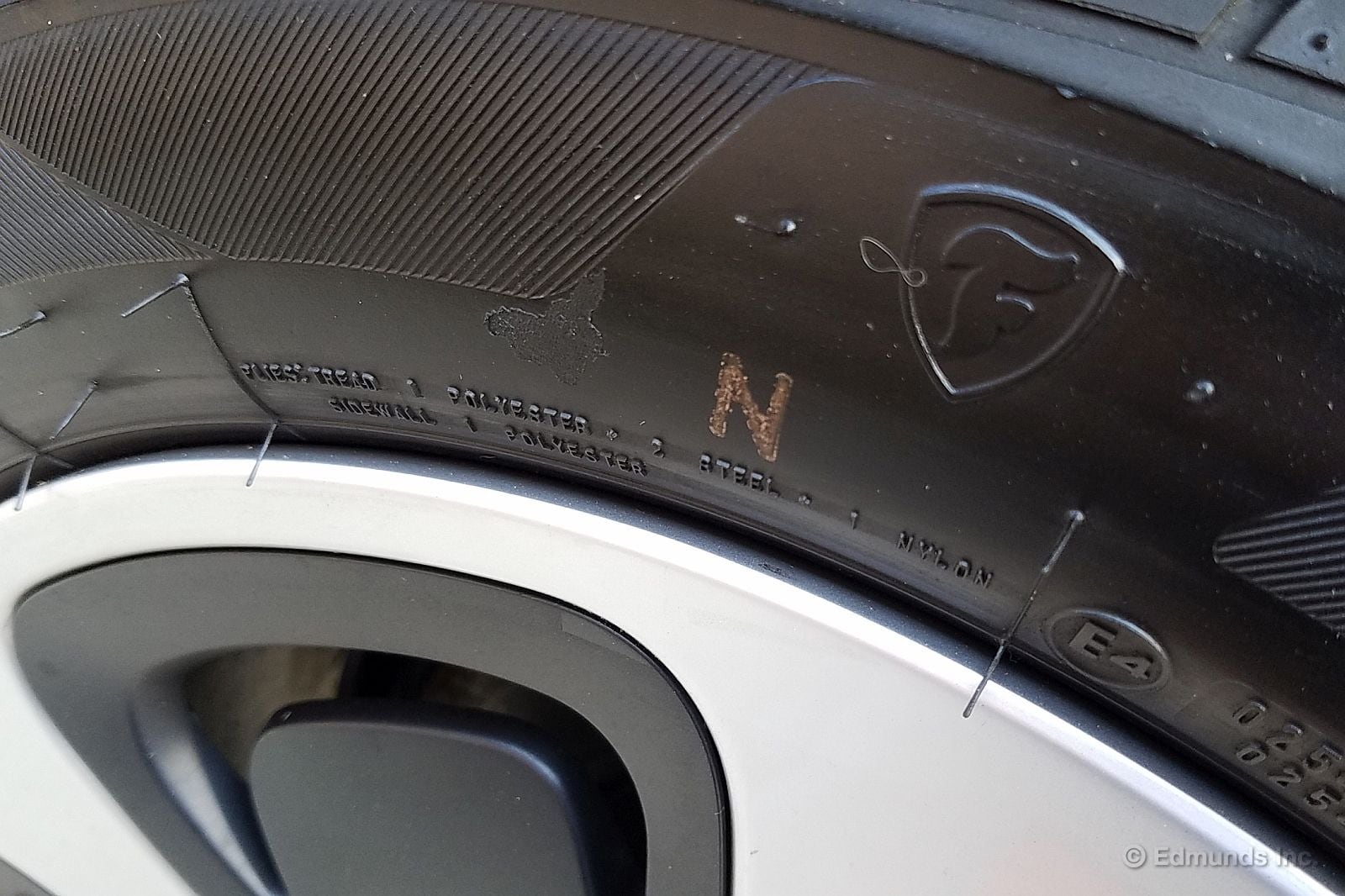
Typical strut-based front-drive based machines like the Renegade don't have much in the way of front suspension adjustments, so pull almost always boils down to a tire issue.
Some might point to stagger, the diameter difference between left and right tires. But that only looms large in oval-track racing where the racecars use a locked or welded "spool" differential and have wildly asymmetrical suspension alignments. Conicity is a far bigger factor on street machines.
Tires are supposed to be absolutely barrel shaped, with zero taper. But like everything else there's build variation and a production tolerance. The tolerance is tiny, and a single upper-limit tire won't have enough conicity to cause a pull by itself. But a pair of max-tolerance tires might if they both wound up on the front axle of the same vehicle and were mounted on their rims in such a way that the effects were additive.
Some assembly plants go to the trouble of sorting their incoming tire assemblies for conicity, marking them with N for negative and P for positive. Put four Ns or four Ps on the same car and the net conicity across a given axle will be near zero as the left and right sides cancel each other out.
I have no idea if the Renegade Trailhawk employs that tactic. Such marks would have rubbed off by now. This picture of conicity-sorted tires on my daughter's Fiat 500E shows what it looks like.
This is all well and good, but our Renegade didn't pull when we first got it. Our drift/pull issue developed over time. And now I think I know how.
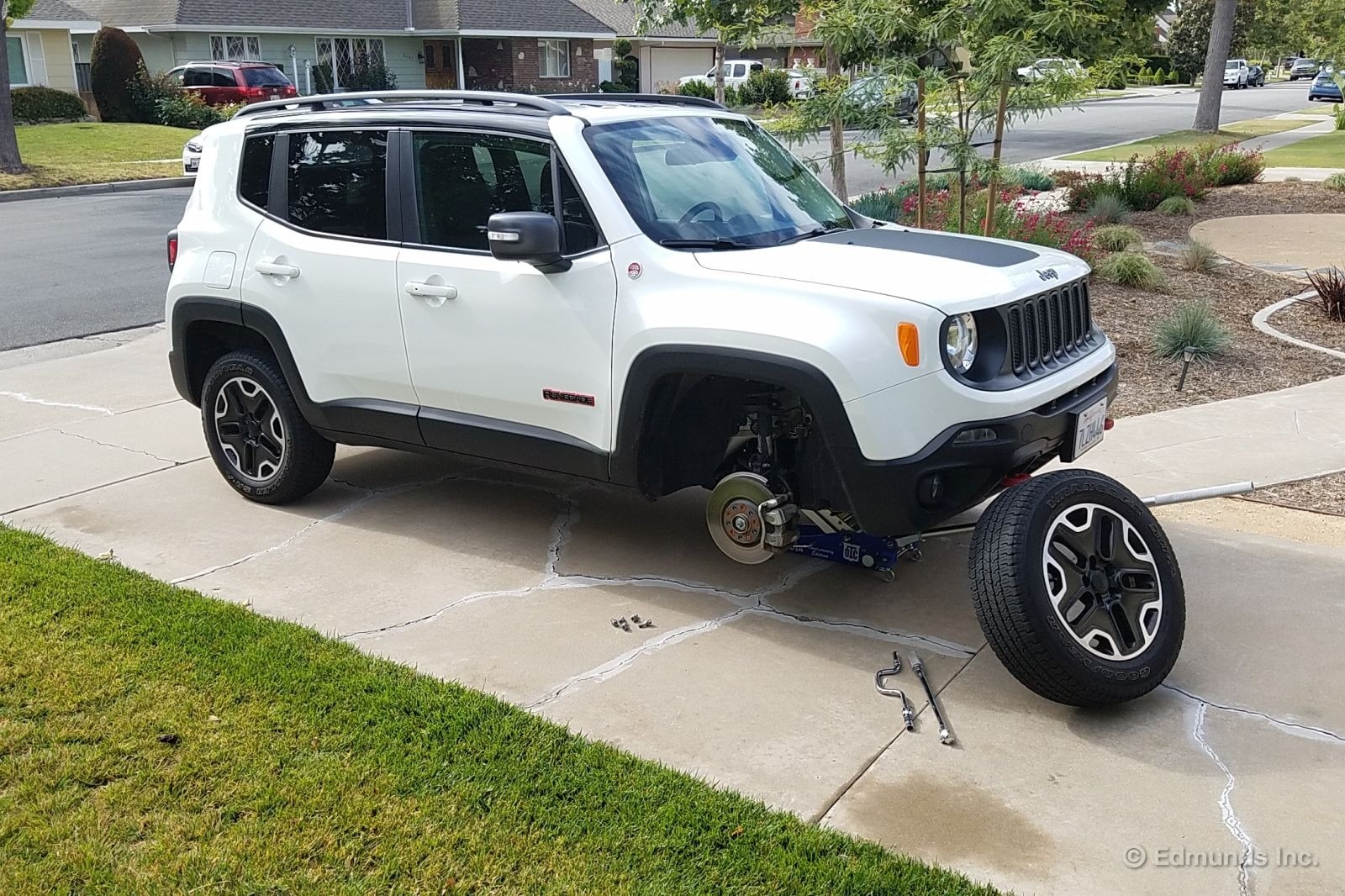
As I drove it home I verified that the pull was indeed there. But I also noticed that the steering wheel was canted to the right when I drove it straight. An alignment seemed in order.
But first I went home and tried a simple diagnostic test. Swapping the left and right front tires is an easy first step that reverses the conicity force on the steered axle. Such a swap will reverse the direction of the pull if conicity is indeed part of the trouble. In moderate cases it may even eliminate it entirely because road crown works in your favor when conicity points to the left.
Imagine it like this. Before: > --- >; After: < --- <
But what happens if the swap reverses the direction of the pull, but it's still objectionable? As long as they're symmetrical you can have someone dismount one of the front tires — it doesn't matter which — and flip it around on its rim.
Then you get this: < --- > or this; > --- <
This is essentially an after-the-fact version of conicity sorting. But we can't do that with our Trailhawk. It has white-letter tires, and white-letter tires only have white letters on one sidewall. The sidewall decorations are not symmetrical.
Thankfully, it didn't come to that. The drift just about went away when I swapped left for right, with just a minor whiff of residual leftward movement that I found easy to disregard. But the steering wheel was still rotated off to the right when driving straight. Yep. It really was time to go to the alignment shop.
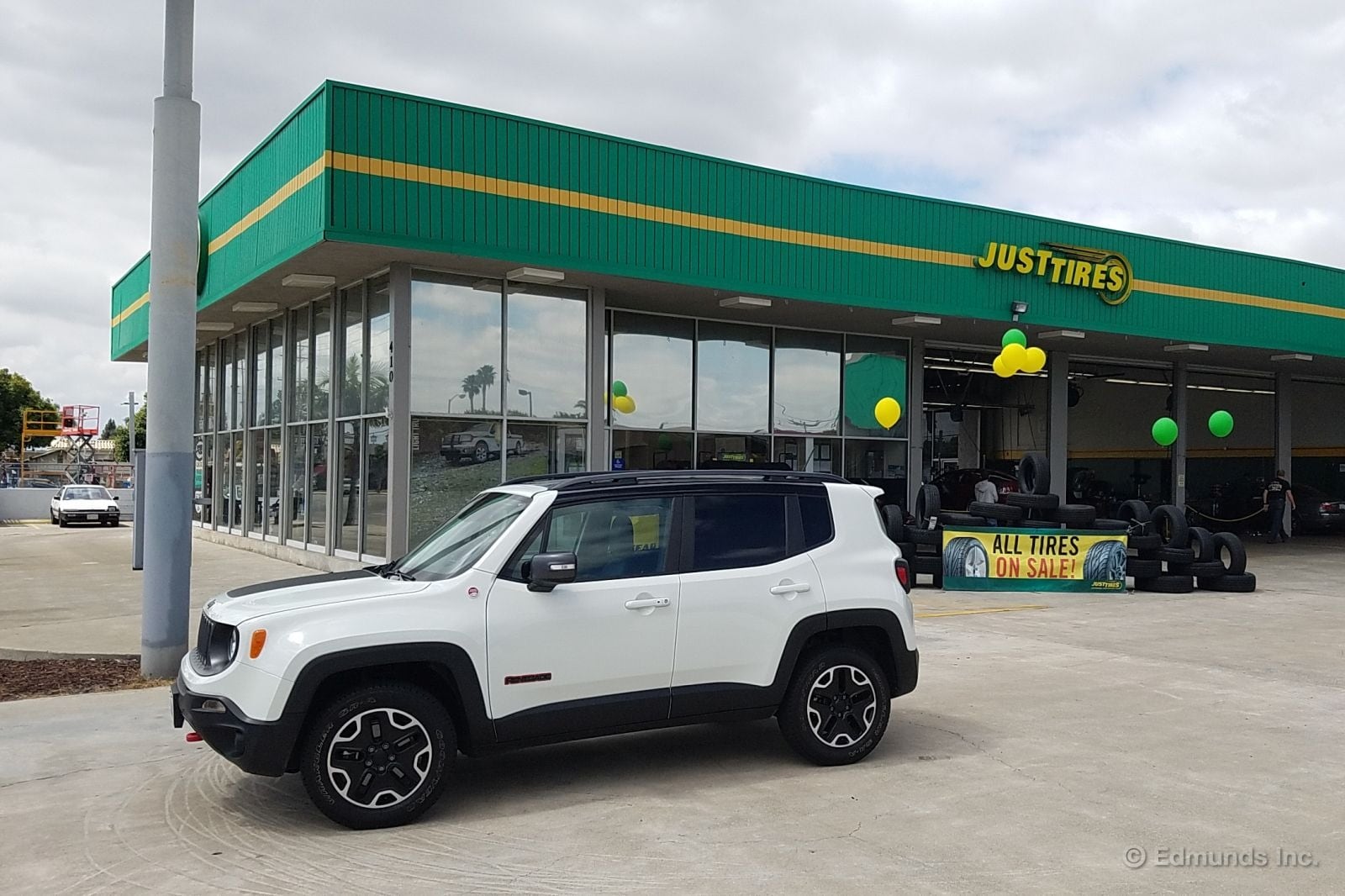
It all made sense when I saw the printout. The front was square enough, the rear camber was fine, the right-rear toe was perfect. But the left rear was toed-in much more than it should have been. The result was a decent-sized thrust angle that induced a rear dog track that explained the right-hand steering offset when driving straight.
Depending on how long this had gone on, this probably created our pull, too. The extra toe was enough to wear the tire unevenly, possibly grinding in some extra conicity. Not enough to see, but a little conicity goes a long way.
This tire was subsequently moved up front during the last routine tire rotation, and that's when the pull complaints amped up.
Our rear toe alignment issue has probably been going on for some time, and that probably explains some earlier off-center steering comments. But the persistent pull is more recent and didn't likely start until the tire in question came to the front axle.
I don't have a time machine, so some of this is speculation. All I know is the cross-rotation helped and the squared-up alignment did the rest. The pull has subsided and our Renegade's steering wheel is centered when it's going straight ahead.

Our 2015 Jeep Renegade has over 22,000 miles on the clock. It has held together well, with only a few hiccups along the way. After some recent seat time I remembered why I like driving it so much. And a few of the things I don't like.
The biggest reason I find it so agreeable is the overall ride quality. For a vehicle with a relatively simple suspension and modest tires, it rides smoothly on just about any kind of pavement. My commute travels over some pretty harsh concrete highways in various states of disrepair. The Renegade generates the occasional "thump" but is otherwise comfortable and controlled.
Finding a comfortable driving position is also easy in the Renegade. I'm 6-foot 2-inches tall, but in most vehicles I sit closer to the wheel than most. It's an odd seating position that often leaves me feeling cramped. In the Renegade, it only takes me a few seconds to find a comfortable position. And after an hour behind the wheel it still feels right.
On the downside, I dislike how deep you have to dig into the gas pedal to get the Renegade moving. I've grown used to it for the most part, but a more responsive transmission would make it feel considerably quicker around town.
I've also noticed a few squeaks and rattles when going over speed bumps. Nothing major, but a little disconcerting for a car with only 22,000 miles on it. They're probably fixable and if it was my own Jeep I would hunt them down and make them stop. In this case, the car will go on sale soon and it'll be up to the next owner to determine if they're too much to deal with.
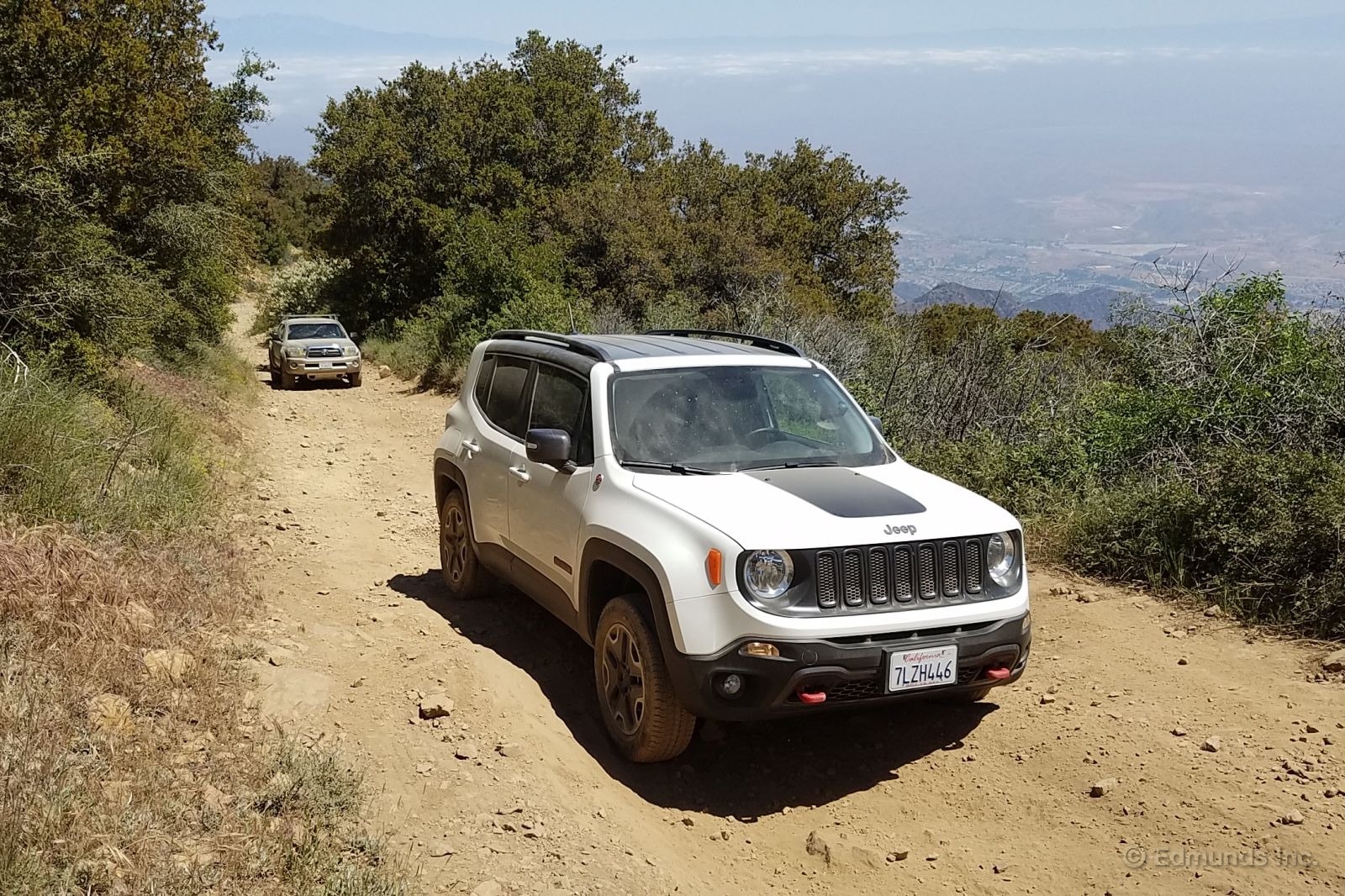
Saddleback is the common name for a distinctive mountain that hovers over Orange County, California. It really does look like the back of a horse, but in reality it comprises two distinct summits that are about a mile apart: Modjeska Peak and Santiago Peak.
It all resides within the Cleveland National Forest, and there's a network of roads and trails that serve the area. Four of the entry points are available to street-legal motor vehicles. A couple weekends ago I drove our 2015 Jeep Renegade Trailhawk up Indian Truck Trail, along Main Divide to the Santiago summit and back down and out via Bedford Motorway.
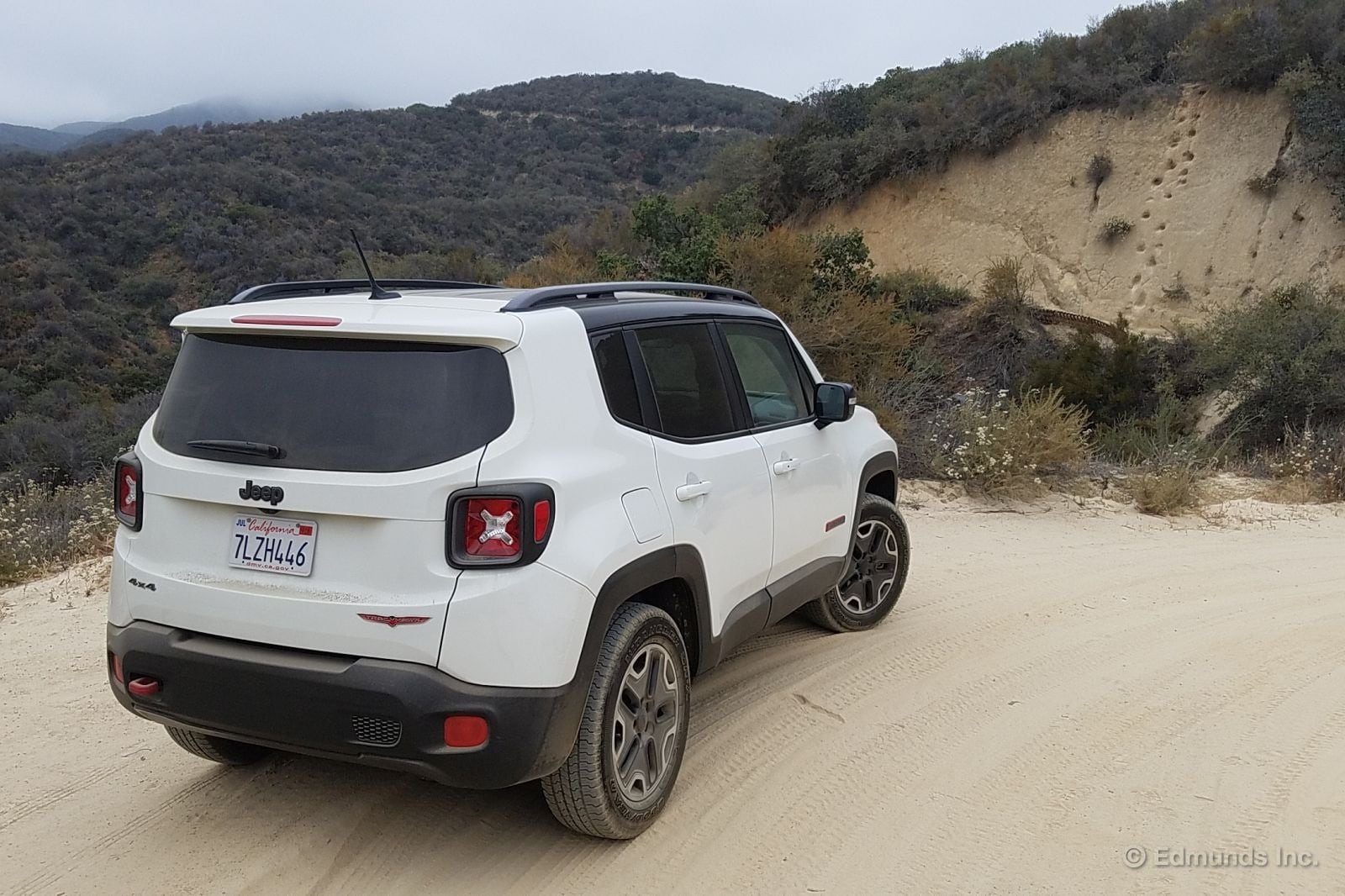
These are Forest service fire roads, and for the most part they're fairly tame. But, like all such roads, they have their difficult spots. Here I find that three specific off-road characteristics come into play: clearance, traction management and suspension articulation. Vehicles that possess competency in any two of these areas can literally make the grade up here.
It's a good place to separate the poser crossovers that are mainly focused on winter roads from the competent ones that have a more broad-based talent set, in other words.
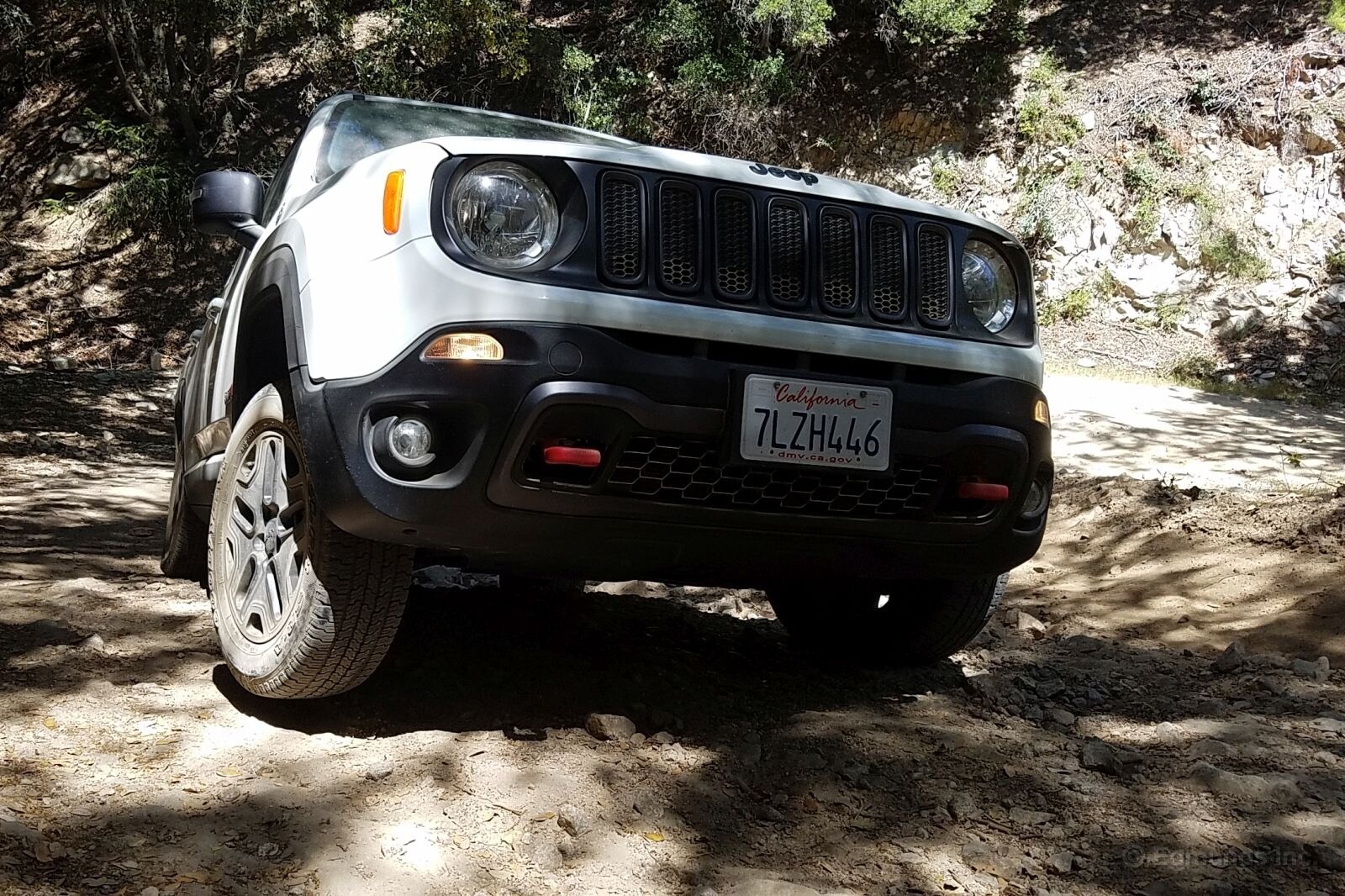
Like many of its ilk, our Renegade has a modest suspension articulation limit. I exceeded that point in at least two spots along the trail. But because it's a Trailhawk it had enough of the other two to make it through without drama.
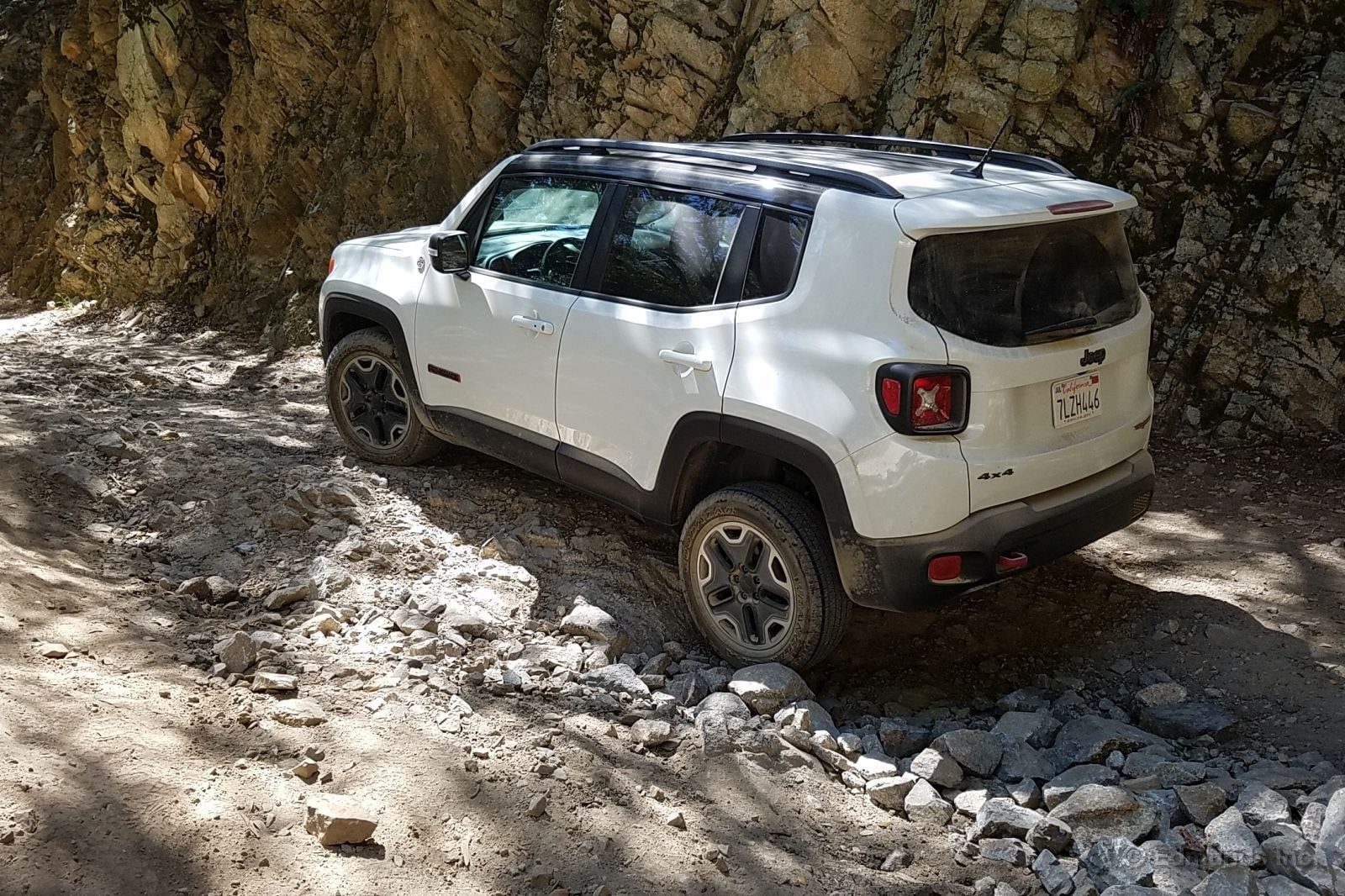
Reasonable ground clearance and those remarkably stubby overhangs kept its nose and underside from getting hung up on anything. And its knobby tires and four-wheel-drive system with multiple terrain settings kept the party going when it the uneven surface set it teetering on three wheels.
It was a fairly effortless trip, in other words. This place does not begin to define the limits of what it can handle.
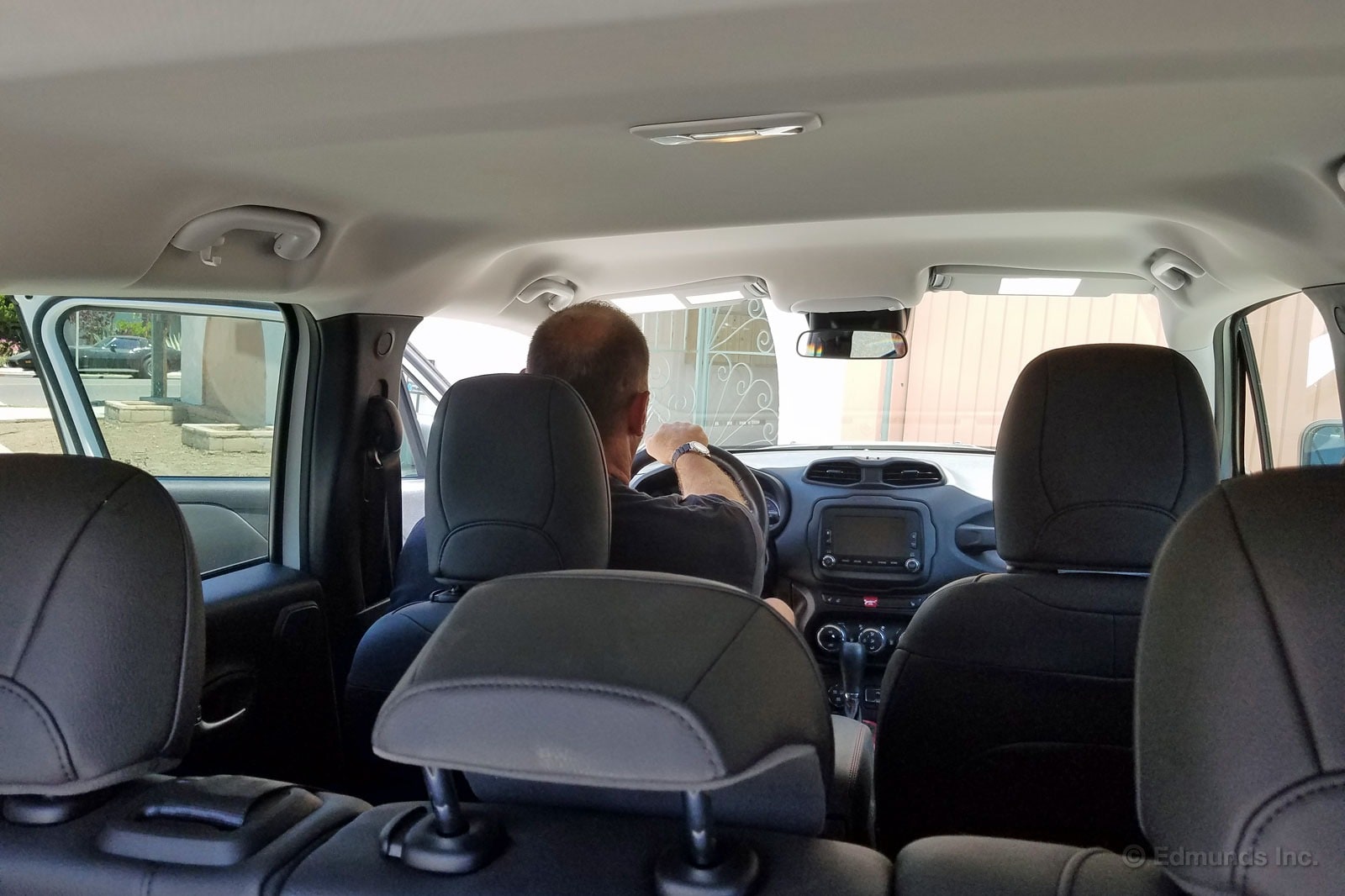
Big guys will tell you, the whole "Fat Guy in a Little Coat" routine can get a little too real when shopping for clothes. Or cars. Big & Tall men can't just squeeze into any average jacket — or SUV.
Driving home today, I contemplated the generous 41.1 inches of headroom offered in our 2015 Jeep Renegade Trailhawk long-term tester. Would that make the Jeep a good choice for tall people? I decided to stop by a Big Guy's house to find out.
At 6-foot 5-inches tall, the Big Guy still has plenty of headroom to wear a hat. Cowboy, even.
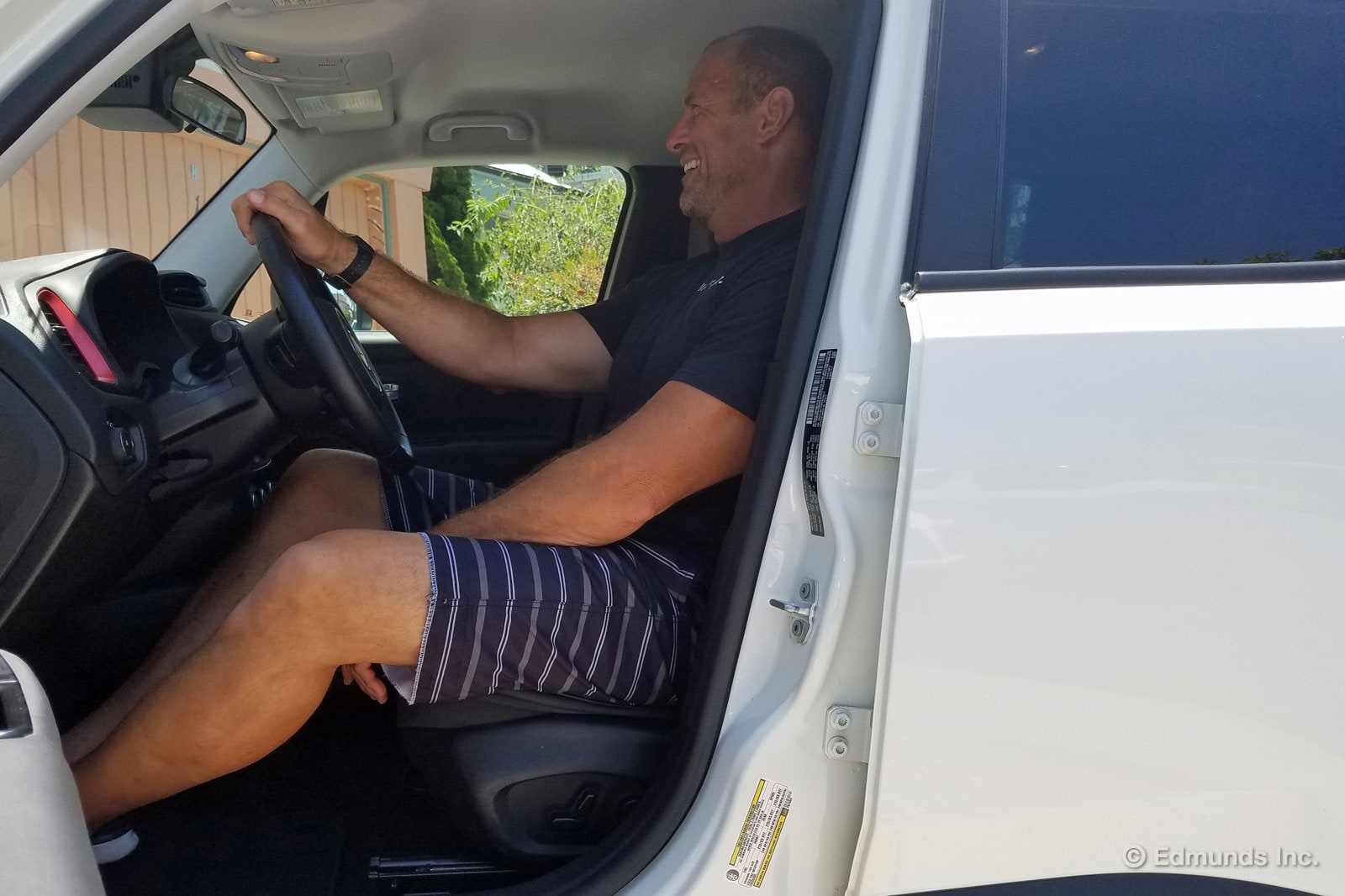
But his 280-pound frame doesn't fare as well when it comes to driving position. Even with the seat pushed all the way back, he'll still suffer from knee-dash syndrome within the Renegade's 41.2 inches of front legroom.
For the record, his personal vehicle is a Ford Expedition — 39.6 inches of headroom, 43 inches of legroom. In his case, the 2-inch loss in vertical comfort is much appreciated by his knees.
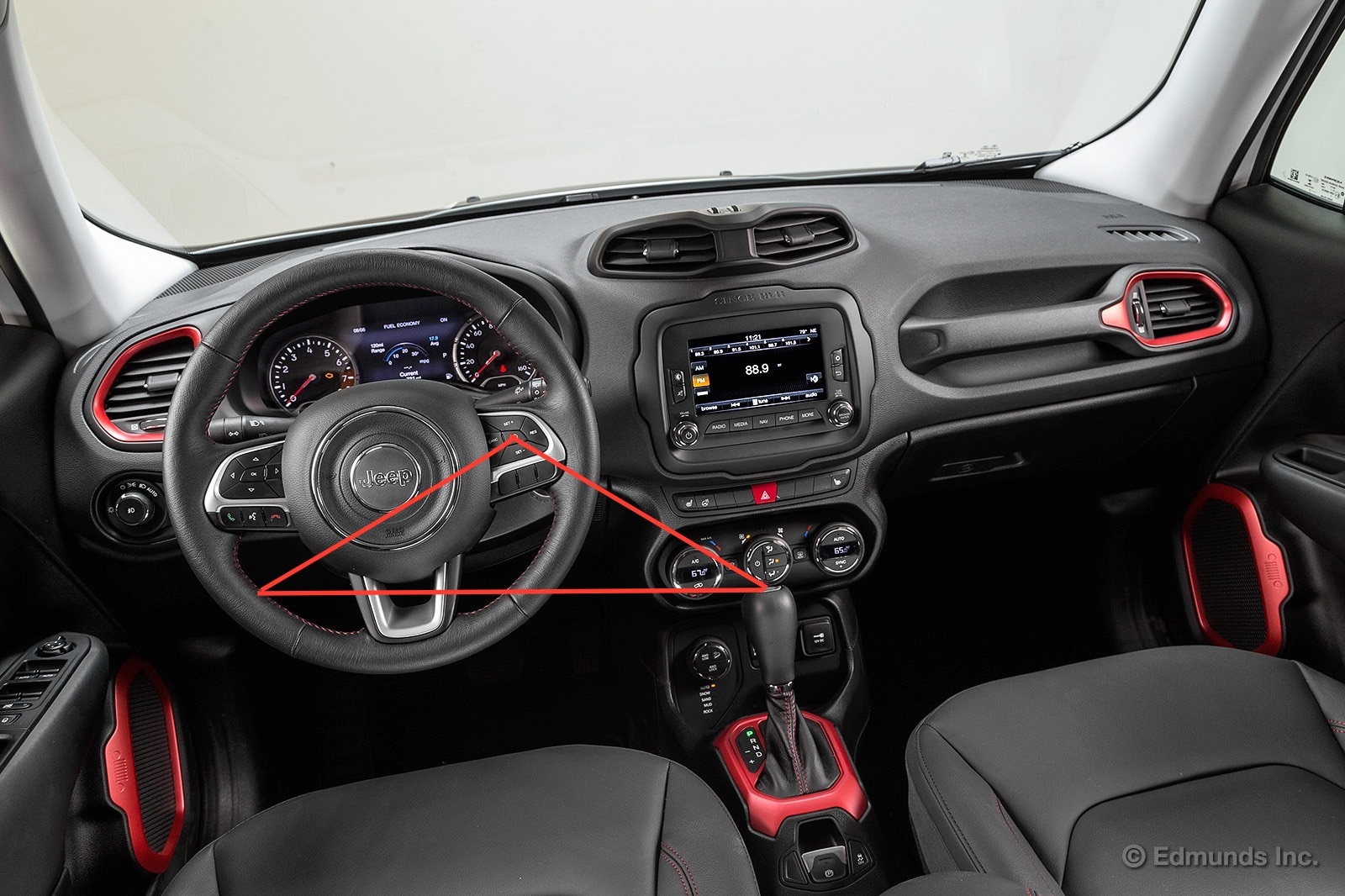
Remember the triangle offense, the innovative basketball scheme that coach Phil Jackson refined to lead the Chicago Bulls and Los Angeles Lakers to NBA championships? (For that matter, do you remember when the Lakers competed for championships?)
Our 2015 Jeep Renegade Trailhawk has its own kind of triangle strategy that connects the left and right sides of the steering wheel and the shift lever.
Here's why this is important: The transmission.
It's a dead horse and we've beaten it well. But I've found the transmission reasonably livable if you're willing to control your own gearchanges and keep the Renegade out of its mostly useless 8th and 9th gears (8th gear does offer some quiet to an overstressed engine when out on the highway, however).
So you keep the left hand anchored on the wheel, say around 8 or 9 o'clock, while the right hand is free to float between the wheel, the cruise control buttons, and the shift lever. If you're driving around town or in swift, high-volume traffic, you'll be floating between those points on the triangle often, trying to keep the Renegade in its sweet spot. You can't trust the transmission computer to do this for you. Well you can, of course, but you may soon want to disembowel yourself.
Bonus points go to Fiat/Chrysler's steering wheel audio controls. While you're steadying the wheel with both hands, you can adjust volume with a rocker switch on the backside of the wheel on the right side using an index or middle finger.
There's a rocker on the left side too, which controls next/previous track. Fiat/Chrysler cars have used this design for awhile and it's genius. Your fingers are already there. Why not use them?
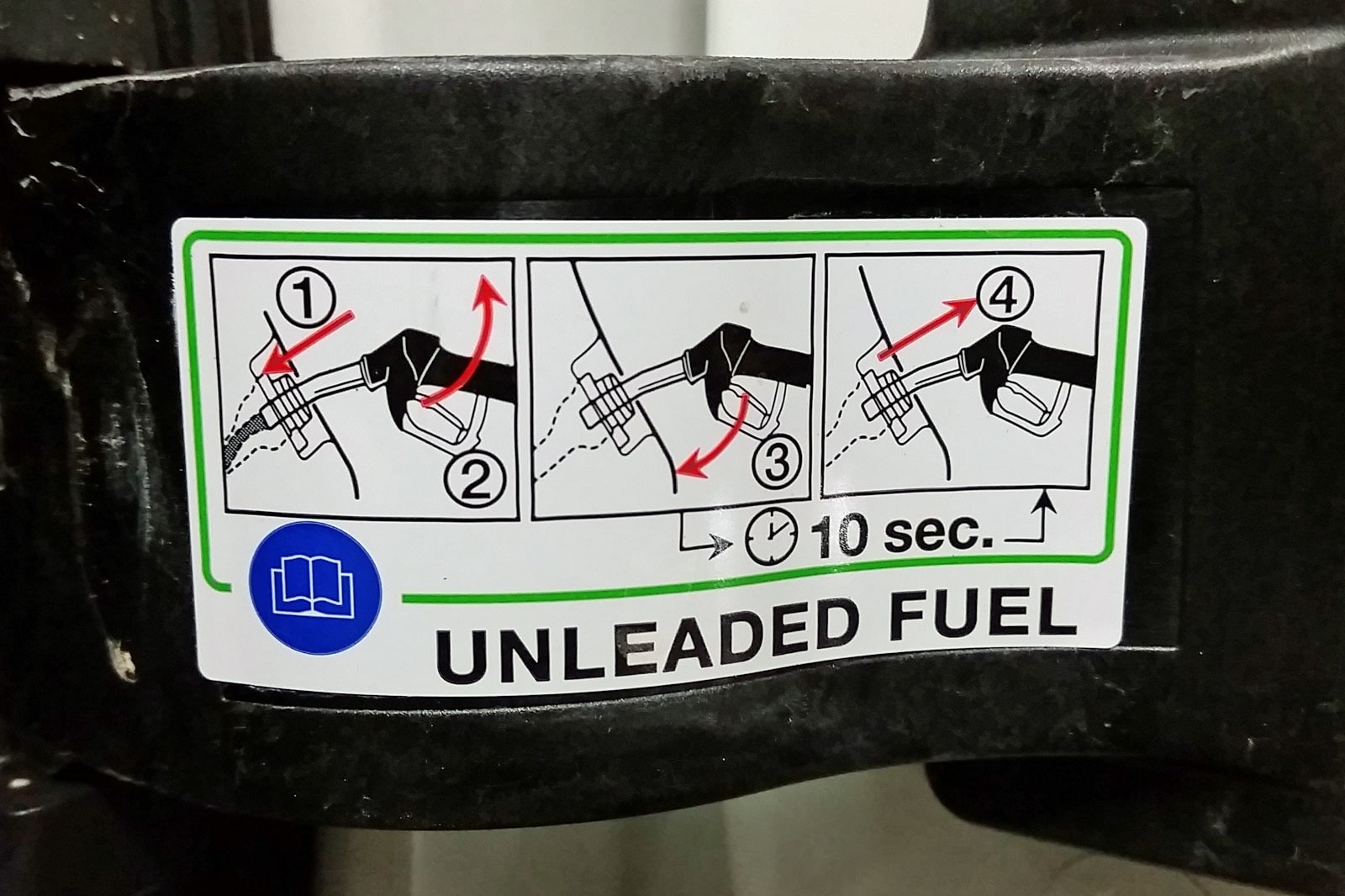
As our 2015 Jeep Renegade rolls into its last month in the fleet, it's well past the typical number of miles we rack up in a year. A big chunk of that was taken care of in its early days as it criss-crossed the country. But its comfortable interior and handy size also made it a popular vehicle for weekend errands and the occasional camping trip.
I'm still pretty impressed by this pint-sized crossover. It rides smoothly, has plenty of room and a comfortable seating position. Even larger-than-average drivers can get comfortable behind the wheel of this Jeep despite its small overall size.
Dan Edmunds gave the Renegade an off-road workout that highlighted this Jeep's capabilities and limitations when it's off the beaten path. And when he wasn't crawling down dirt roads, he took the time to figure out why our Renegade was always pulling to the right.
We'll be wrapping this test up by the end of the month, so expect to see a complete summary of our likes and dislikes in early August.
Worst Fill MPG: 15.2
Best Fill MPG: 29.9
Average Lifetime MPG: 22.1
EPA MPG Rating: 24 Combined (21 City/29 Highway)
Best Range: 361.9 miles
Current Odometer: 23,221 miles
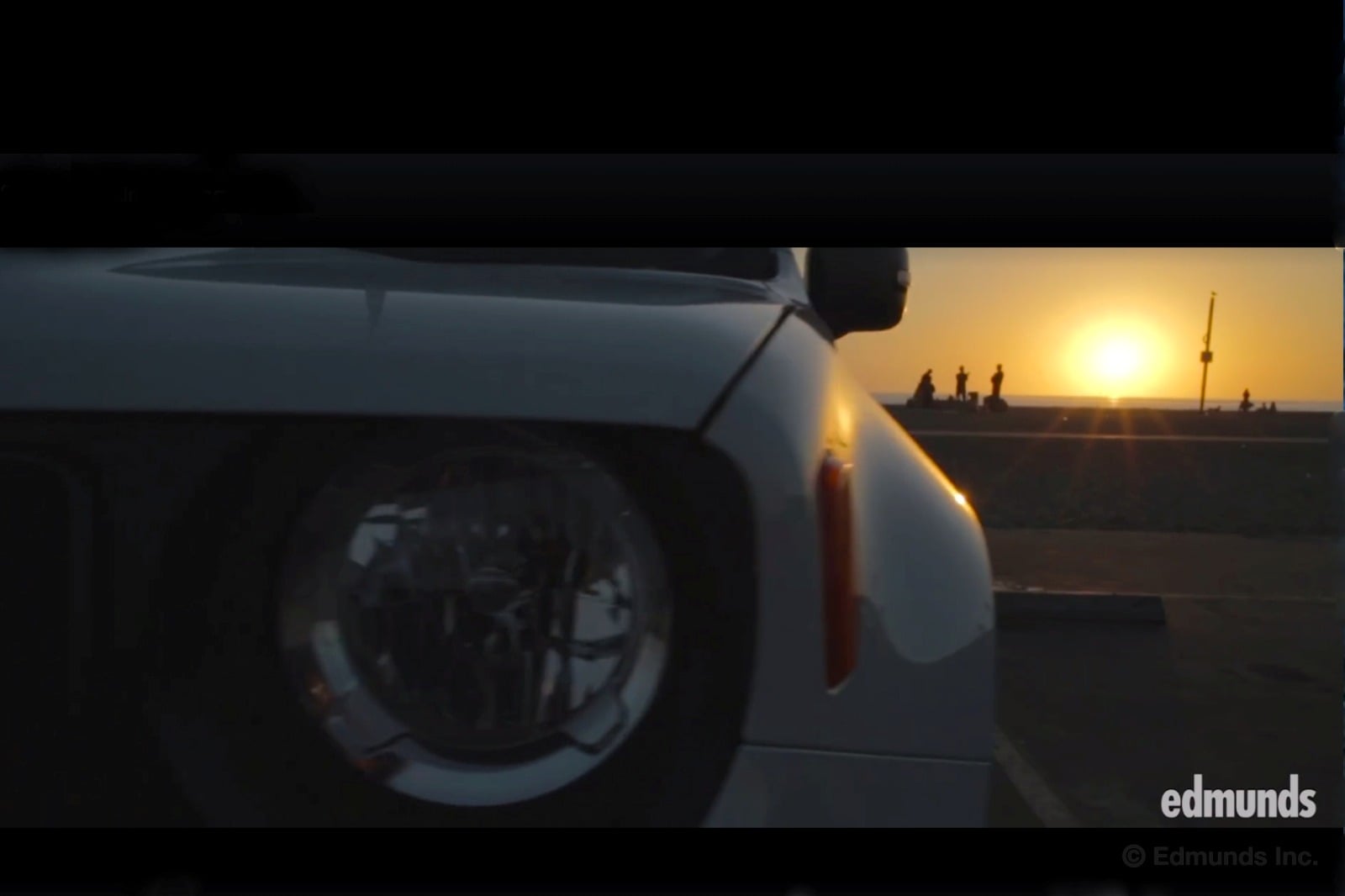
Edmunds recently put together a lifestyle video starring our 2015 Jeep Renegade Trailhawk. The idea was to show it being used in the manner of a typical owner.
The "owner," in this case, was me.
Our Renegade has some fundamental flaws, namely a dimwitted transmission, an undersized 12.7-gallon fuel tank (especially given its lifetime average of about 22 mpg) and a general lack of enthusiasm from the 2.4-liter engine. I've also nitpicked a few other things, but after spending some more time with it, I think it's possible that I'd begin to adapt and forgive these shortcomings.
I've ultimately enjoyed the Renegade for its capability, its comfortable and feature-rich interior and its relative ease of use. Size-wise, it hits a sweet spot — short enough to maneuver and park almost anywhere, yet boxy enough to offer generous vertical cargo room. It has served me equally well for snow- and surf-based activities.
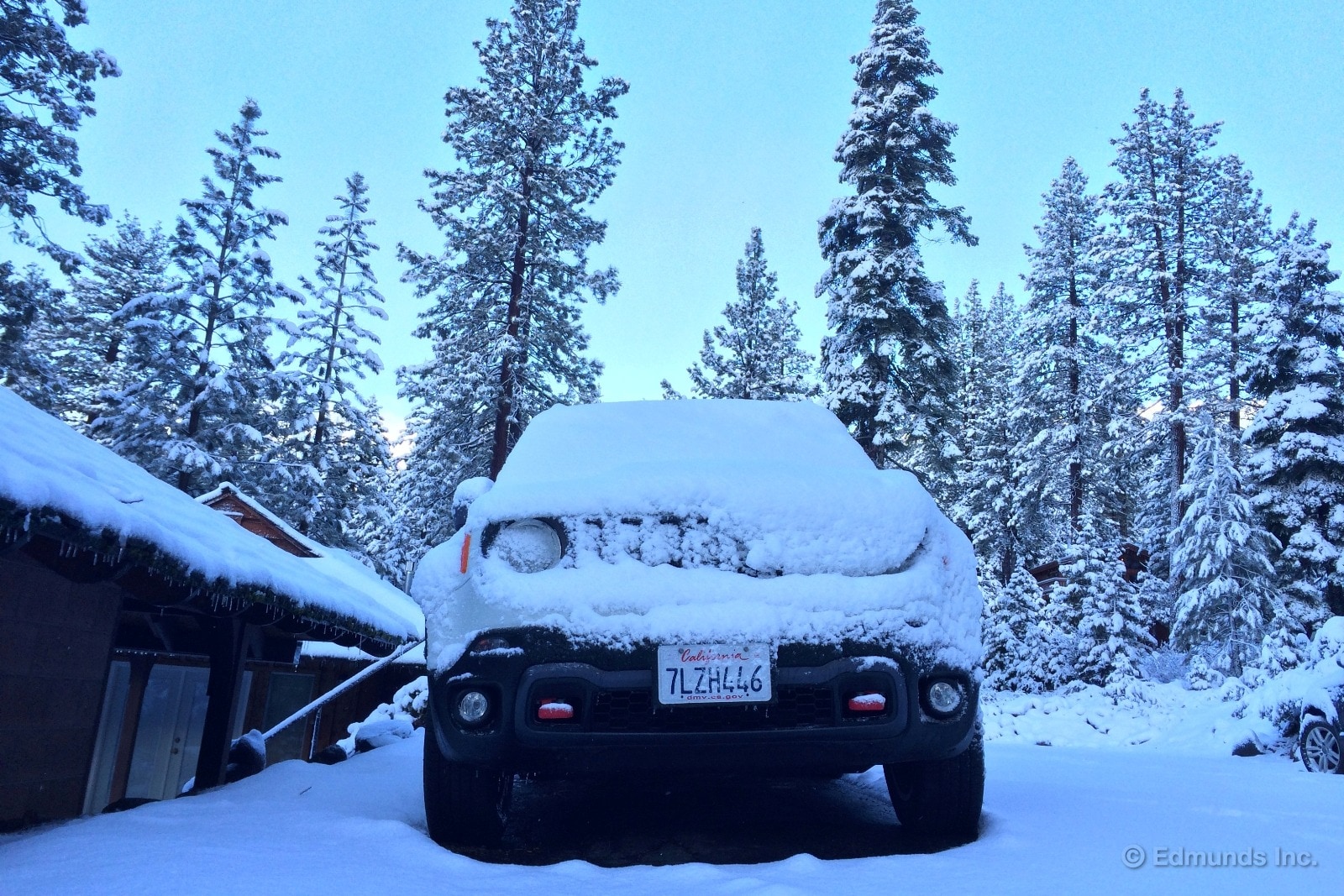
Snowboarding at Lake Tahoe.
If Jeep can iron out the powertrain issues in upcoming model years, the Renegade could become one of the top players in the segment. Until then, I think I'll stick to virtual ownership.
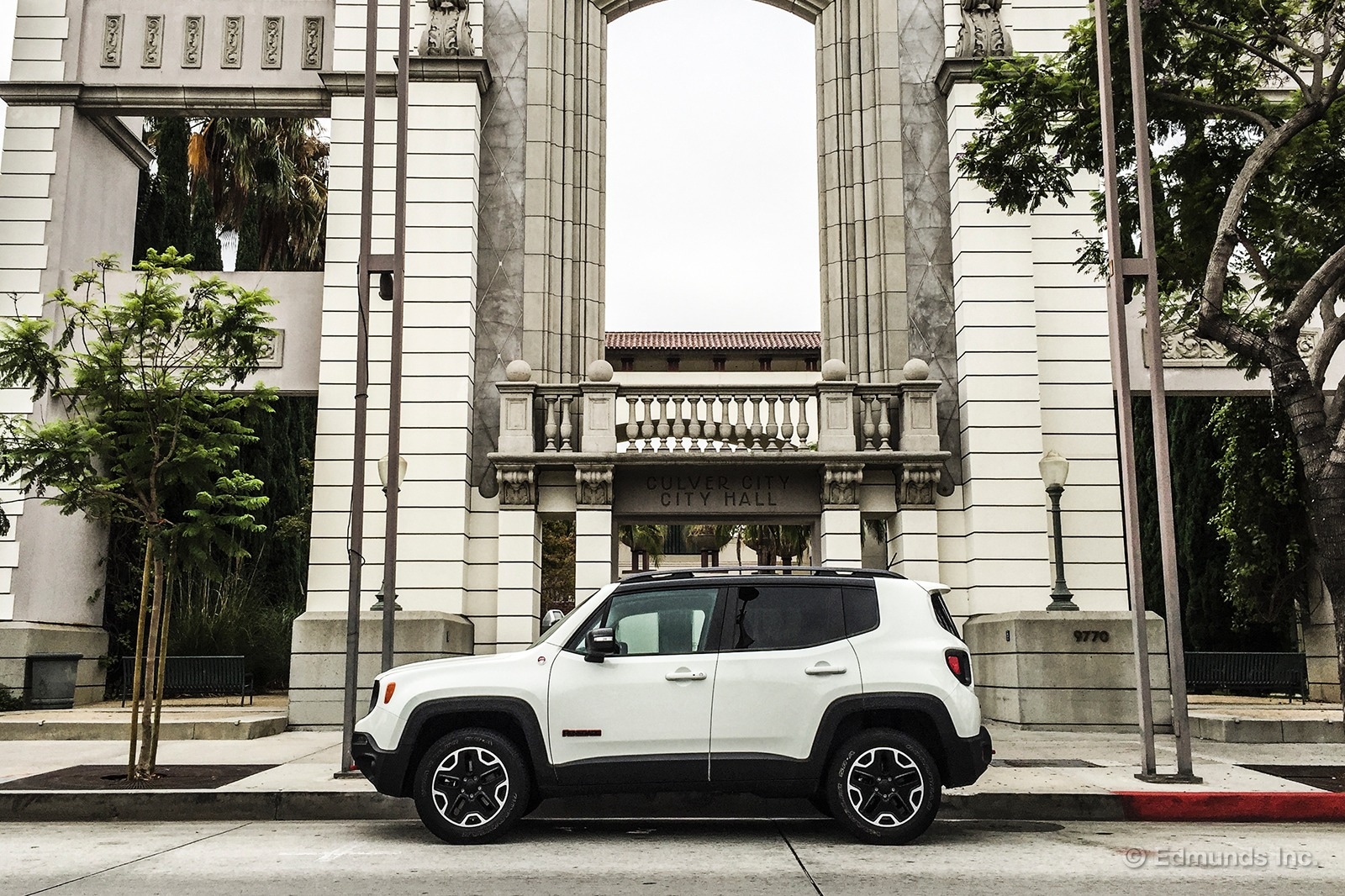
Late in July, our long-term 2015 Jeep Renegade Trailhawk passed the 12-month mark. We didn't give it a birthday cake or blow out any candles. We just drove it. But its name turned red on our sign-out sheet, signifying that its time in the fleet is drawing to a close.
The Renegade managed just 20.1 mpg for its 965 miles in July. Looking at the entire year, we filled up the Jeep 112 times while covering 24,138 miles, and it consumed 1,096 gallons of 87 octane. That works out to an average of 22 miles per gallon, which is still a full 2 mpg short of the EPA's combined estimate.
In all that time, we only beat the highway EPA estimate of 29 mpg once. That was when I drove ultra-conservatively in the middle of a 5,000-mile, cross-country-and-back road trip, achieving 29.9 mpg. It might be plucky, fun to operate off-road and full of personality, but when it comes to fuel economy, our Renegade has been a disappointment.
Worst Fill MPG: 15.2
Best Fill MPG: 29.9
Average Lifetime MPG: 22.0
EPA MPG Rating: 24 Combined (21 City/29 Highway)
Best Range: 361.9 miles
Current Odometer: 24,155 miles
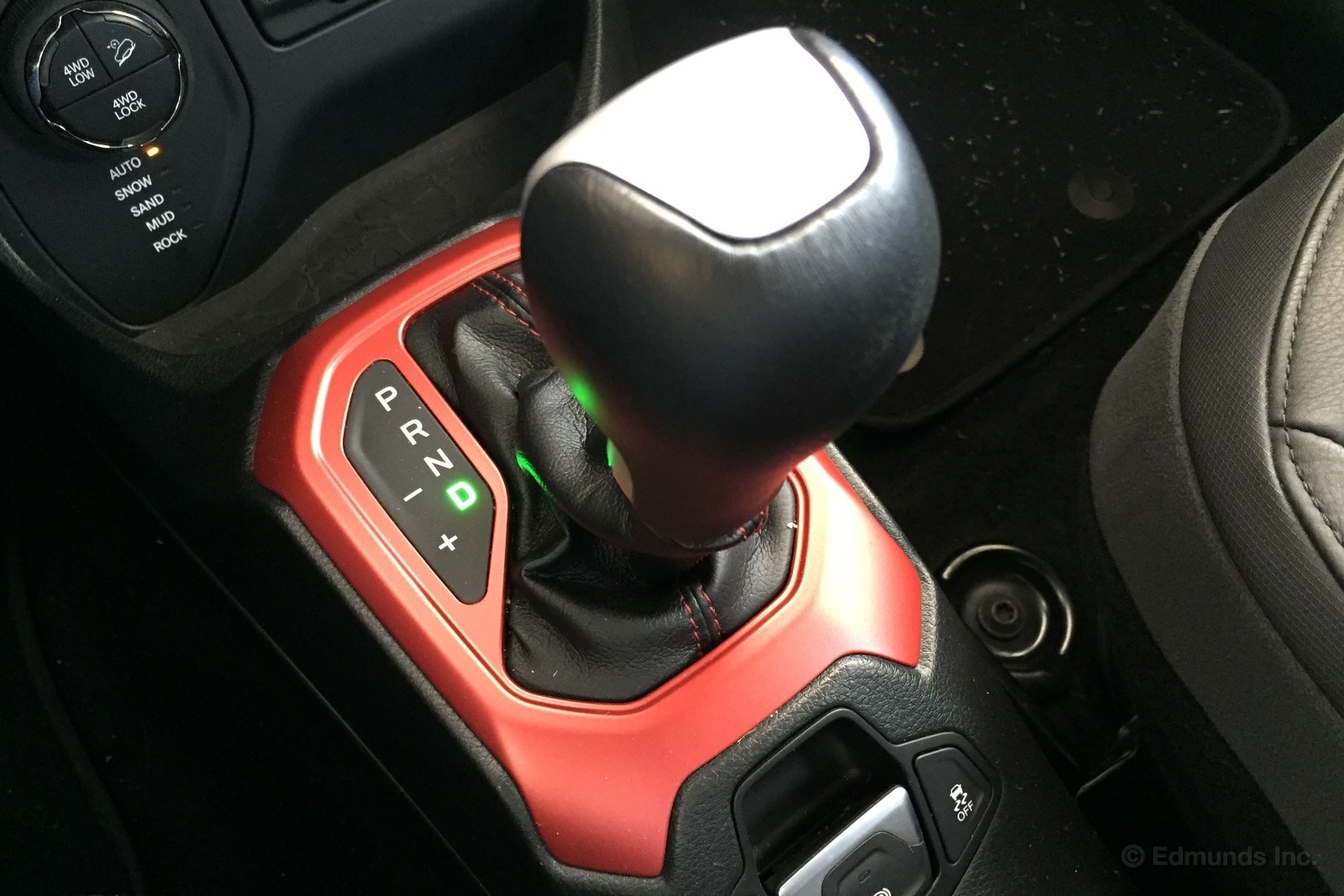
Our 2015 Jeep Renegade Trailhawk comes with the new ZF-built nine-speed automatic transmission, in case you didn't know. I'm not the first driver in these parts to find it lacking. Back in March, JKav took it to task for general inadequacy, opining that it "kind of ruin(s) every car it's in."
I'll add that I had the Renegade over the weekend, and on three separate occasions, I lifted off the throttle in a low-speed situation and it felt like I'd been rear-ended.
I know that sounds like hyperbole, but it's not. The first occurrence was Friday evening. I accelerated in stop-and-go traffic and then lifted off, and WHAM! Some kind of driveline jolt found its way directly to the seat of my pants. I instinctively checked my rearview mirror, but the car behind me wasn't close enough to have made contact. Apparently the transmission was just confused, and it's got an aggressive way of expressing it.
That made me curious, so I tried to reproduce the problem during the rest of my commute, succeeding once. It happened again organically the following day, when I picked up a friend and was dealing with more traffic. I can't tell you exactly what I did, but it was some combination of accelerate/lift-off at low speeds. WHAM! My friend checked his own rearview mirror to see if we'd been hit. It's not just me.
Director of Vehicle Testing Dan Edmunds tells me this is known as the "change in mind" shift condition, and it's the hardest one for engineers to master. I can imagine. Still, I've driven a lot of cars, and aside from maybe some exotic-type machines with single-clutch automated manuals, I've never felt this kind of jolt in what I'd call normal driving on congested roads.
The best transmissions don't draw attention to themselves, right? This one's been making a ruckus.
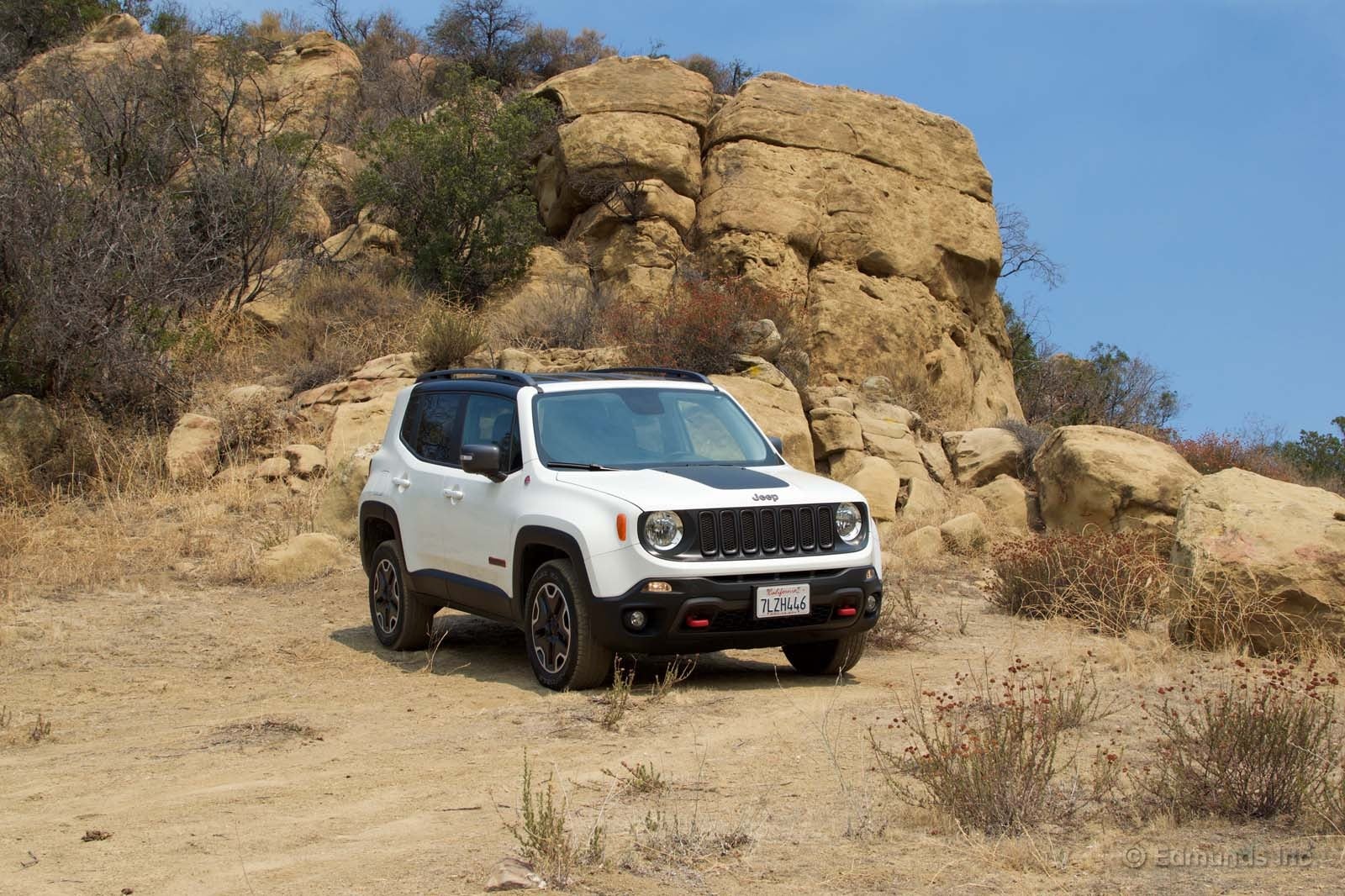
I don't know if Trailhawk is an accurate description of the 2015 Jeep Renegade Trailhawk. What I do know is that it's capable enough for the average off-road driver. Living up against the western mountainous edge of the San Fernando Valley, I am afforded plenty of cool opportunities to be off-road or on a winding canyon road.
This time, I brought my roommate, Jose, so he could see the Renegade Trailhawk in action. He's been kicking around the idea of purchasing this Jeep for awhile now and he was really interested in its capabilities.The Renegade's four-wheel drive engages with a faint mechanical buzz as I'm looking up a sandy, rocky incline in front of me. Tire ruts from previous off-road comrades lead the way. I've been to this park once or twice before but this time was different.
I crept up the incline. The Renegade tackled its obstacle with ease. I turned the Jeep around and demonstrated its ability to descend the same path. Jose loved it and the 4x4 performed as expected, with limited slip under semi-extreme circumstances. The Jeep knew what it was doing off the beaten path. Once back on asphalt we had a blast carving through Box Canyon Road.
Fun continued with a trek around Chatsworth Reservoir. When I glanced over at Jose, it was clear he was in a quandary. He asked what the Jeep cost. The MSRP of our Renegade is $31,465, so he could find a used Jeep Wrangler at a similar price. Granted, it would be a used Wrangler with a lot more miles, but it was still a valid concern.
Jose contemplated either risking hard-earned money on a new Renegade or investing in a multi-decade proven Wrangler. There's not a clear answer because it comes down to personal preference. I think that you find the majority of shoppers in two camps with this train of thought, loyalists or daredevils.
Loyalists are conservative. They will never hit at the blackjack table when they have an upward facing ace like the Wrangler in front of them. They are less apt to try the Renegade, a vehicle in only its second year of production. The uncertainty presented by the unproven model scares the loyalist, who prefers to sit back and wait for the kinks to be worked out.
Daredevils are a smaller segment of buyers, but very important to the entire process. These are the early adopters. They are the people willing to explore new manufacturer offerings and the general public is willing to follow their lead. Without them we may never know how significant the Tesla Model S is or how far the Mustang IIs were from being pony cars. These are the people, like Jose, that are excited by this new Jeep. From their perspective the Renegade is a strong choice.
The more we talked, it seemed like the Jeep Renegade made sense for Jose. The Renegade had better ride quality as a daily driver, better fuel mileage and more creature comforts. It just fit him better. Let's not forget that the Uconnect system is one of the best in the business. You can get that system at a much lower price point in a Renegade than a comparably priced Wrangler. With ride comfort, fuel economy and a quality infotainment system high on Jose's list, the Renegade was the clear leader.
The bottom line is simple. It will go off-road, achieves reasonable fuel mileage and offers a solid infotainment system. Those things interest him. It may not be the best off-road vehicle but it's plenty capable for the weekend enthusiast. For Jose, this test drive was more than enough for him to be certain. The Renegade is on his shopping list.
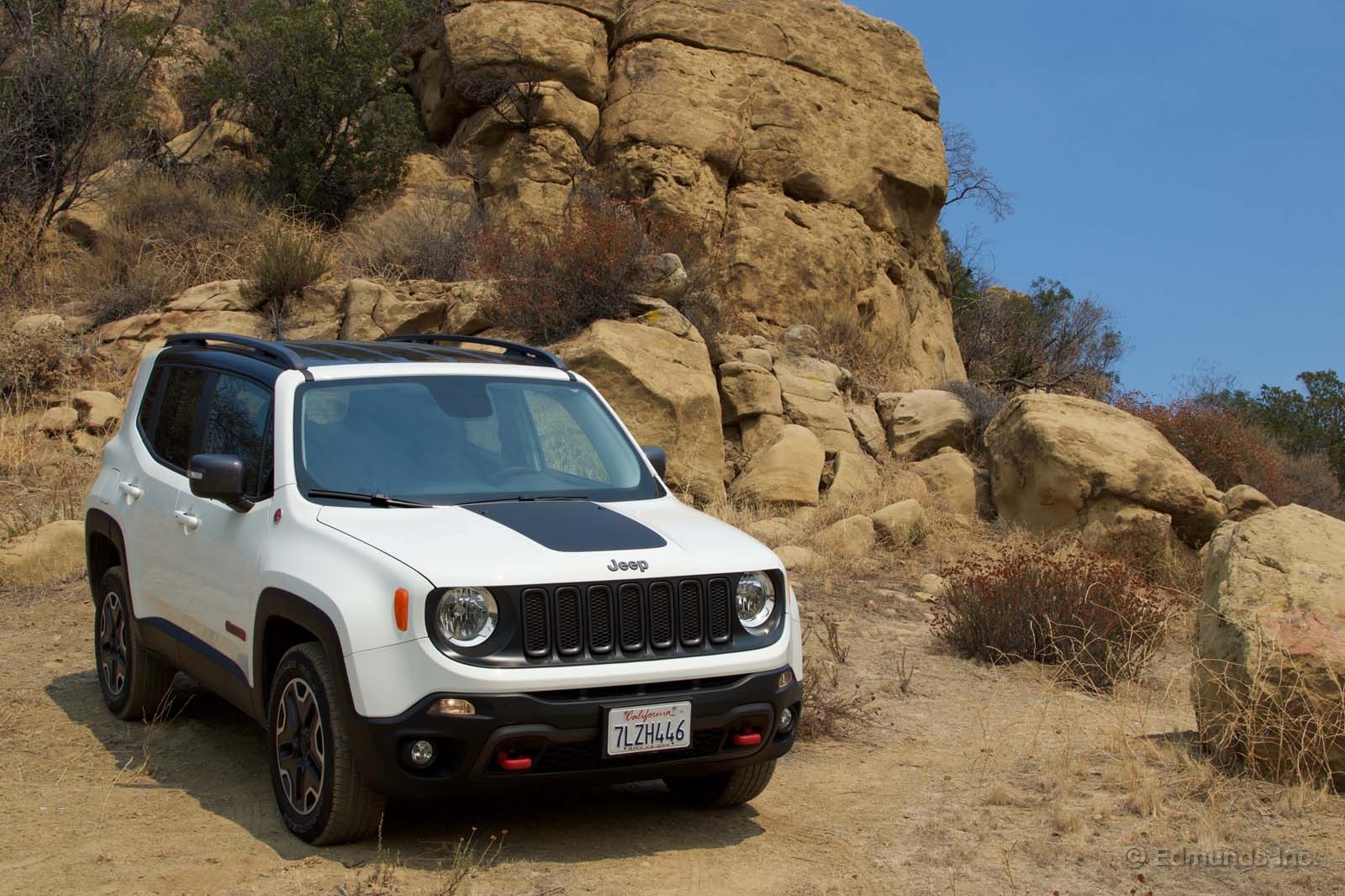
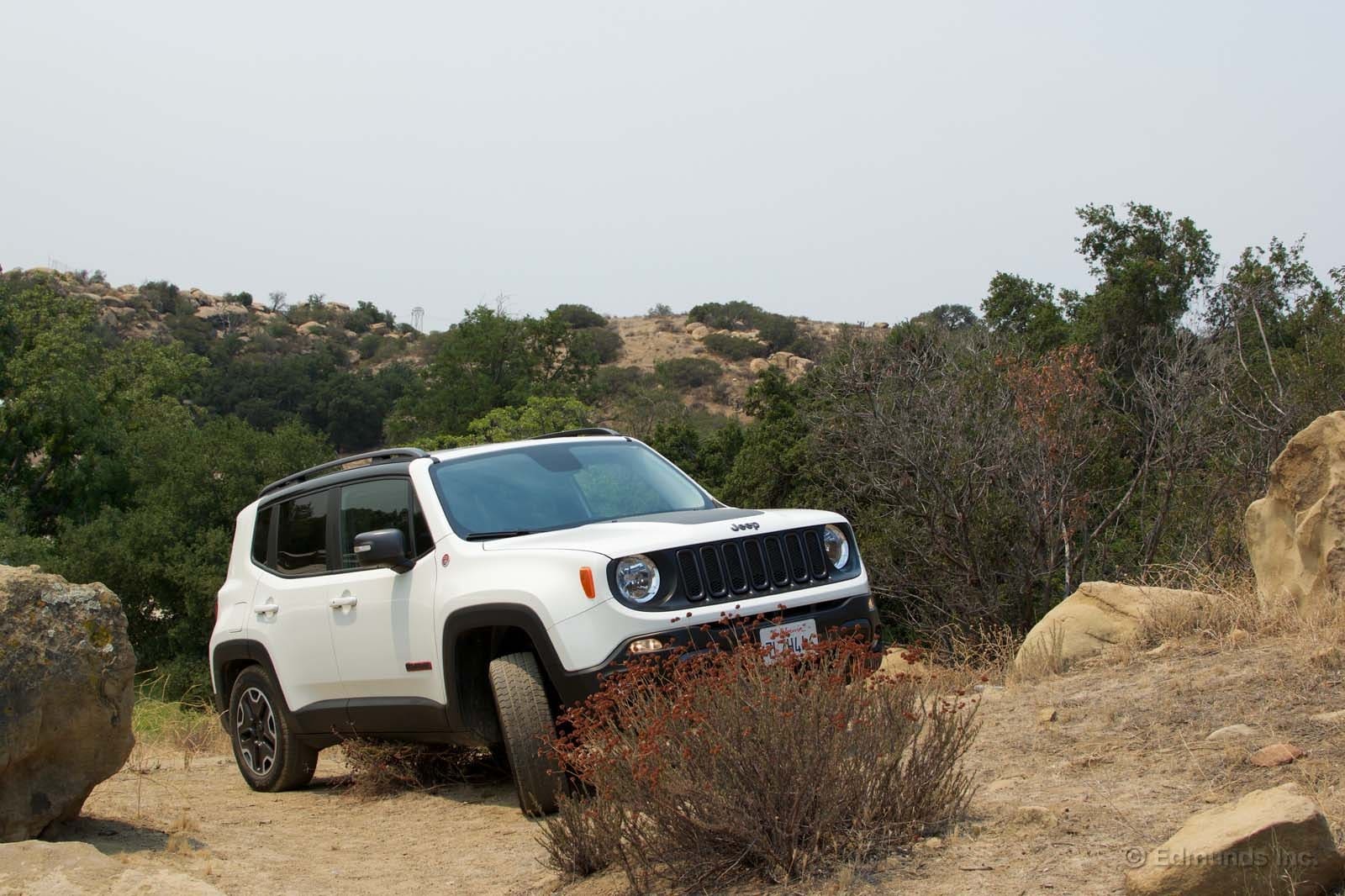
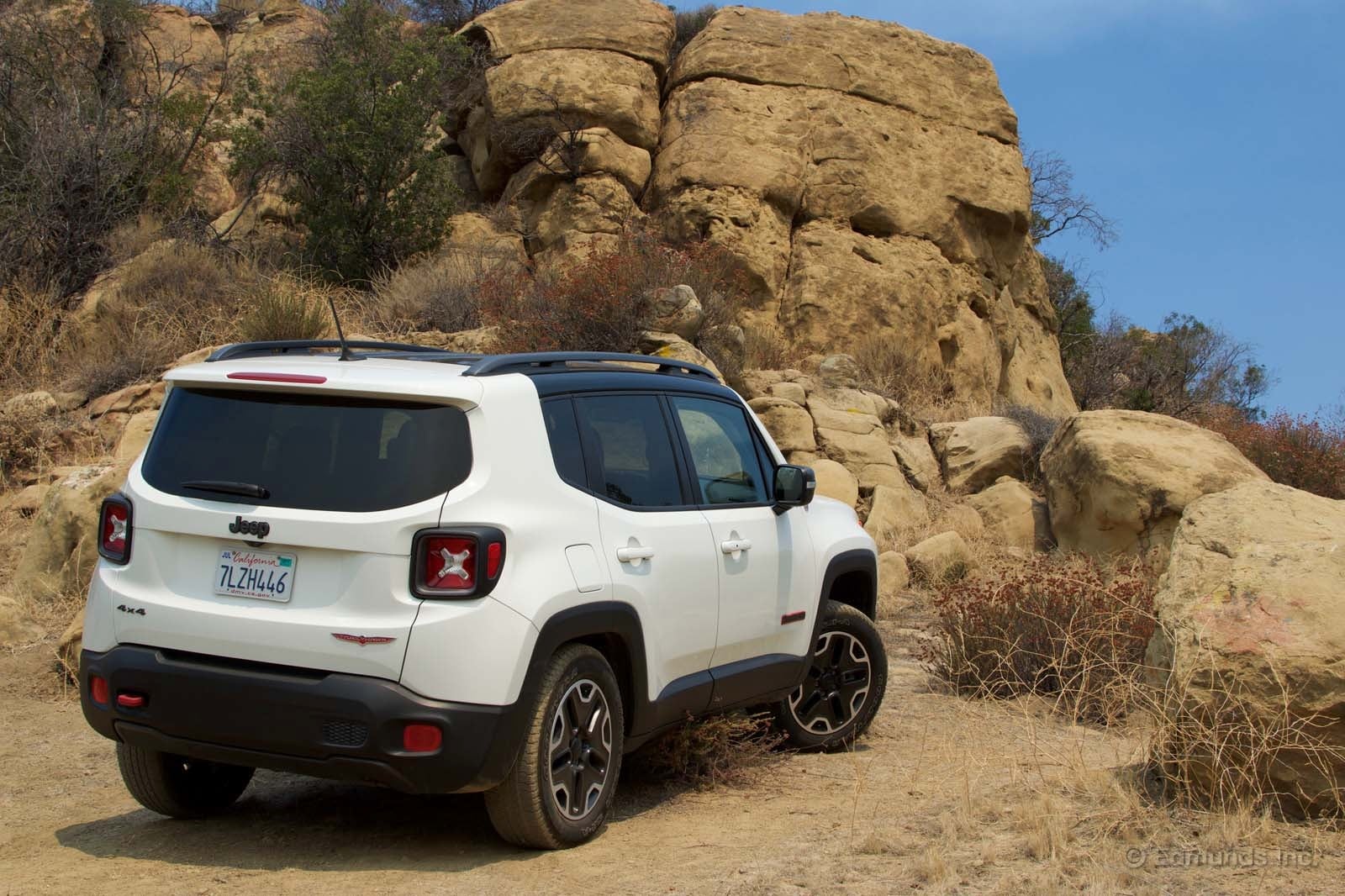
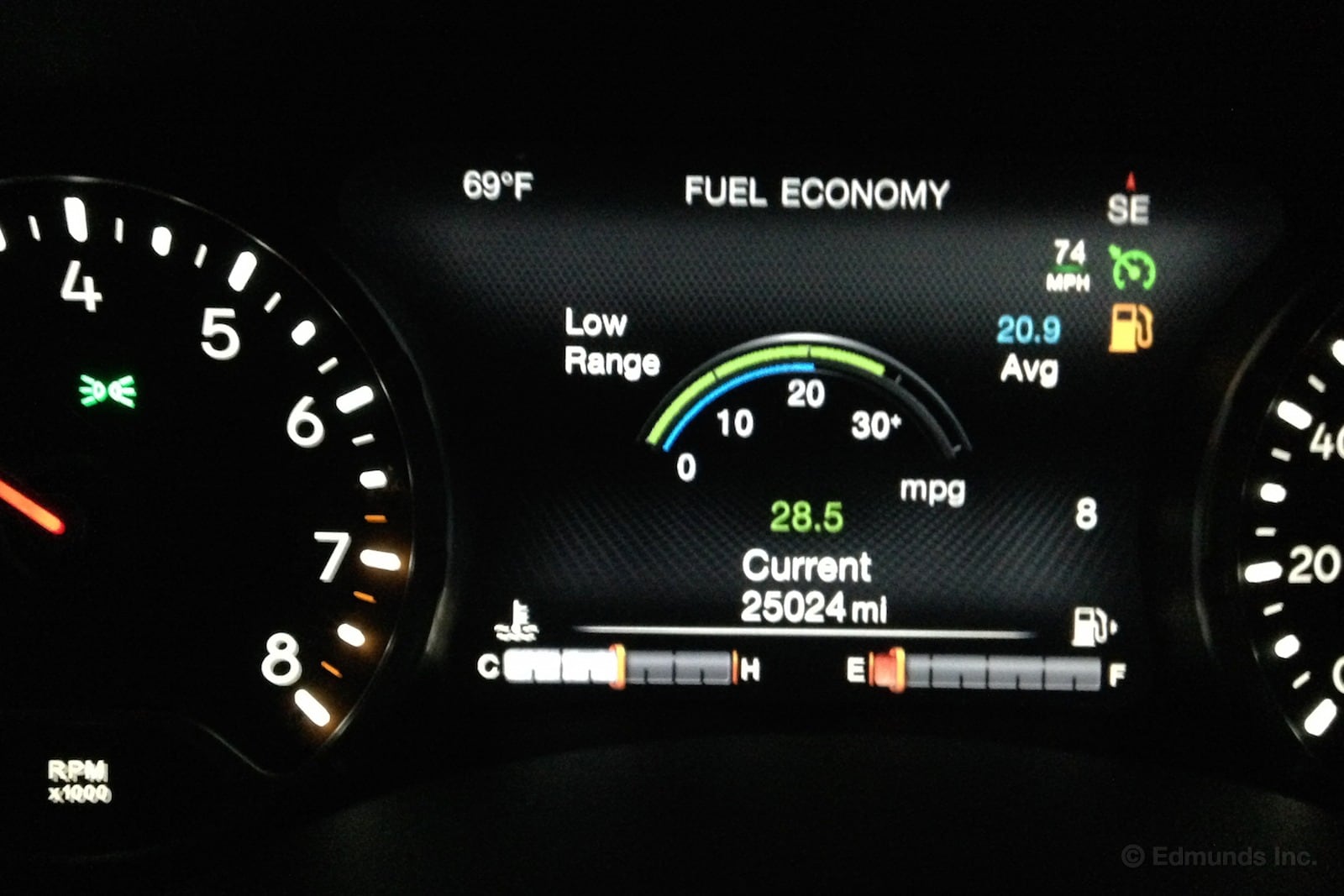
This is an accomplishment, really. Even if Travis and Mike hadn't road-tripped our 2015 Jeep Renegade Trailhawk to and from the 2016 Detroit Auto Show back in January, we still would've accumulated 20,000 miles on this unloved set of wheels.
It's been written before and it still holds true. The staff votes with the signout sheet, and after the honeymoon period with any new long-term fleet addition, the underperformers languish as their quirks and inferior qualities reveal themselves. In its time with us, the Renegade has struggled to gain our acceptance.
It's the transmission, for one, bad enough that it makes most of us grind our teeth at the thought of spending a couple of days with it. A tiny tank is another issue for anyone spending more than a few days with it.
I've found ways to make peace with the Renegade, as have others. The proof is right there in the odometer: 25,000
Although I wouldn't buy one myself, I could recommend it to someone willing to overlook a subpar driving experience in return for surprising cargo and passenger space, and in the case of our Trailhawk, legitimate ability in the ruts and dirt.
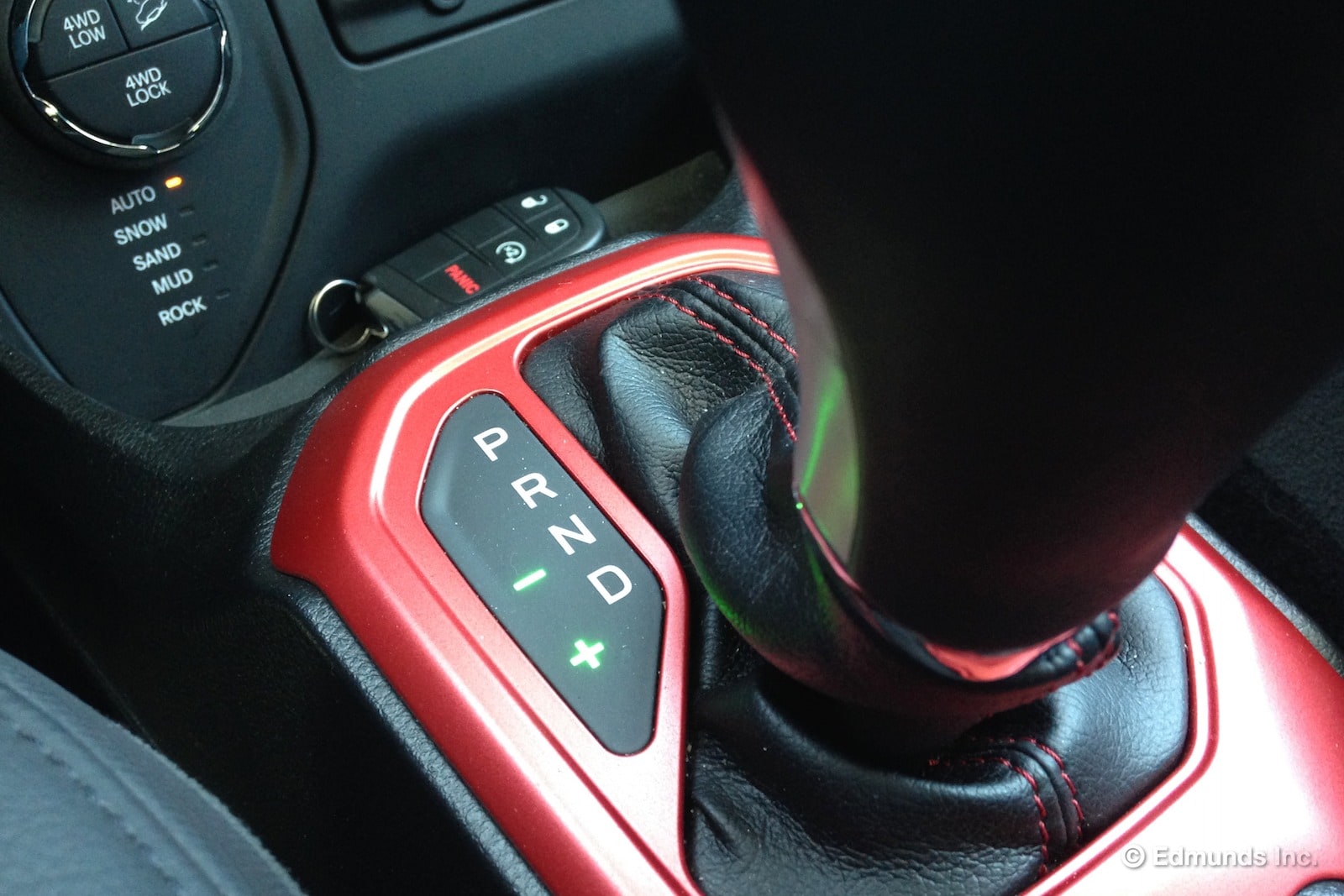
The nine-speed automatic transmission is arguably our 2015 Jeep Renegade Trailhawk's least-flattering trait. It shifts slow, it shifts often, and it avoids the four-cylinder's power band like the Zika virus. It either has poor programming and calibration or just left the factory too soon. And like Zika, it's spreading, showing up in more and more cars on the market.
But I've made my peace with it.
Now I habitually nudge the shifter to the left and request the shifts myself. It's the only way to drive this thing without completely losing your mind. Use it in the manual gate and you're able to extract that extra bit of power, that extra surge in momentum, to pass a slower vehicle or simply merge with the speed of interstate traffic.
There's still a noticeable lag on upshifts; the engine continues to rev after you've flicked the lever for the next gear. And since this four-cylinder sounds like it's dragging cats through the combustion chambers at higher RPM, it pays to listen, plan accordingly and request the shift a little earlier than you want it.
Fuel economy may suffer a bit, by the way. In the time I've been driving it, I'm averaging a little better than 20 mpg. Our lifetime average is hanging at 22 mpg.
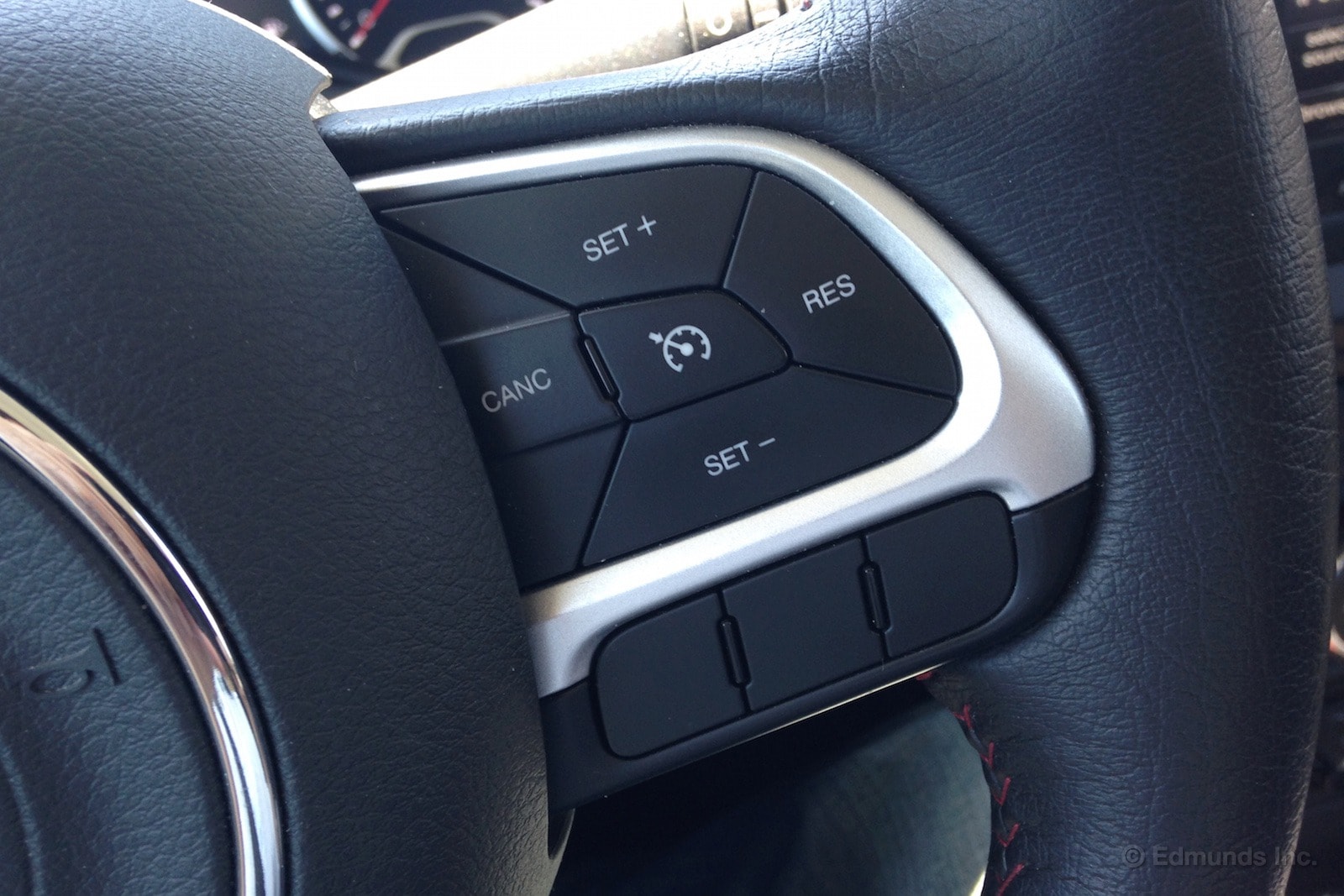
No one likes to feel like they cheaped out on a car purchase, especially when it crosses the $30,000 threshold. Our 2015 Jeep Renegade Trailhawk had an MSRP of $31,495 (we got it for $29,577), but these three empty tabs on the Renegade's steering wheel remind us that we left some things on the table.
Which features did we skip?
Actually, not many. We pretty much loaded up our Trailhawk with most of the available options. The Advanced Technology Group, which includes lane departure warning, forward collision alert, and rear parking sensors, is not offered for the Trailhawk.
So what are the three dead steering wheel tabs for? Most likely for the possible future addition of adaptive cruise control: one for on/off, two for selecting following distance. At least, that's what they controlled in our former 2014 Jeep Cherokee. It looks like our steering wheel is simply pulled from the same bin as the Cherokee's — not a surprise in this era of global markets and manufacturing — and the tabs actually represent options that weren't available on our Renegade.
For a car that goes overboard on Jeep-y Easter eggs, seems like the least they could've done was slap a little logo on there. You know, to keep your friends from thinking you were too cheap to spring for the Ultimate Jeep Moab Rock Eater package.
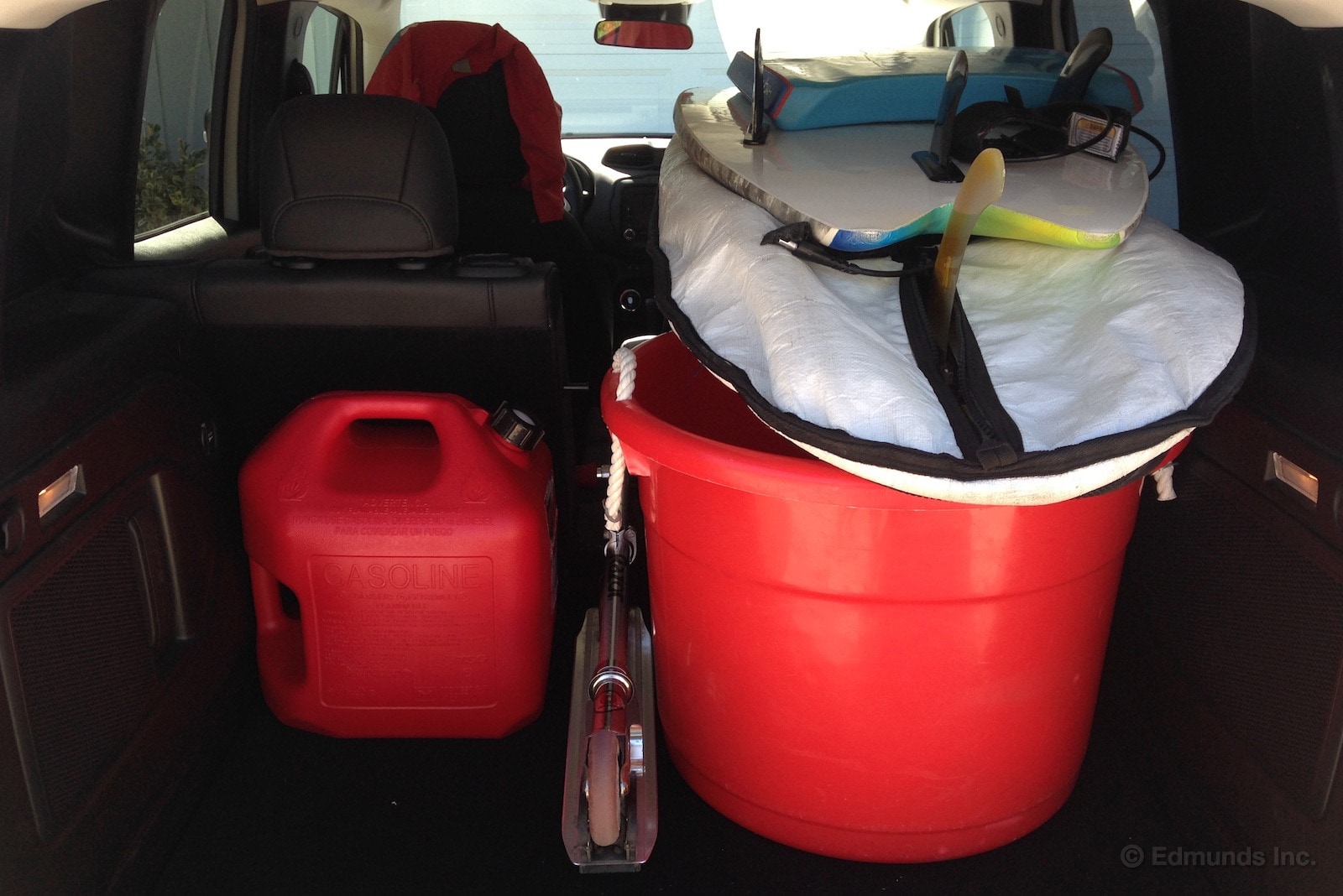
Our 2015 Jeep Renegade Trailhawk delivers much more cargo room, headroom and backseat room than you'd expect from just eyeballing it. This isn't news to us.
Brent learned that you could pack it to the ceiling without impinging on passenger space for a family road trip. Ed found out that it accommodates taller drivers like himself just fine. And Cameron tested the backseat accommodations for his equally tall self and determined that the Renegade seats four of him.
Should I have been surprised to find that I could Tetris a bunch of surf and beach gear for two into this small SUV?
No way, I thought to myself when I started mentally mapping the gear I wanted to take for a day at the beach with my daughter. We had a 9'2" longboard, her shortboard, a boogie board, a big tub for rinsing off salt and sand, a big gasoline jug full of water (since California turned off the showers at its state beaches), wetsuits, backpacks with towels and dry clothes, a couple of small folding chairs and a skateboard and Razor scooter for cruising around after ocean time.
It required a little trial and error, and there were a few false starts, but in the end we packed all the gear and still had room. The boards were stacked along the right side of the car (and strapped together before moving, Safety Police), the tub and jug and scooter went in back, the kid went behind the driver seat, and the wetsuits, skateboard, backpacks and chairs were neatly stashed elsewhere.
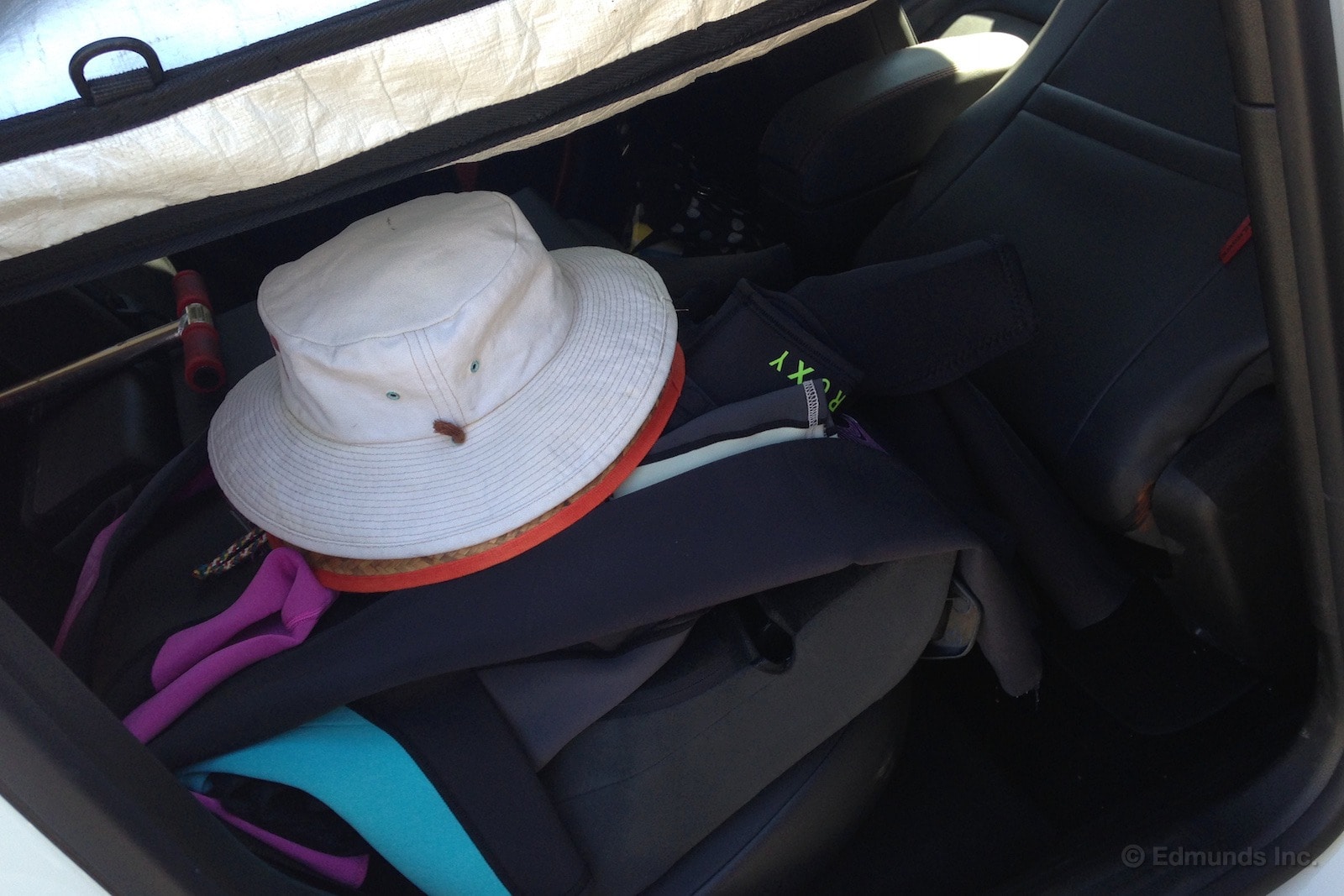
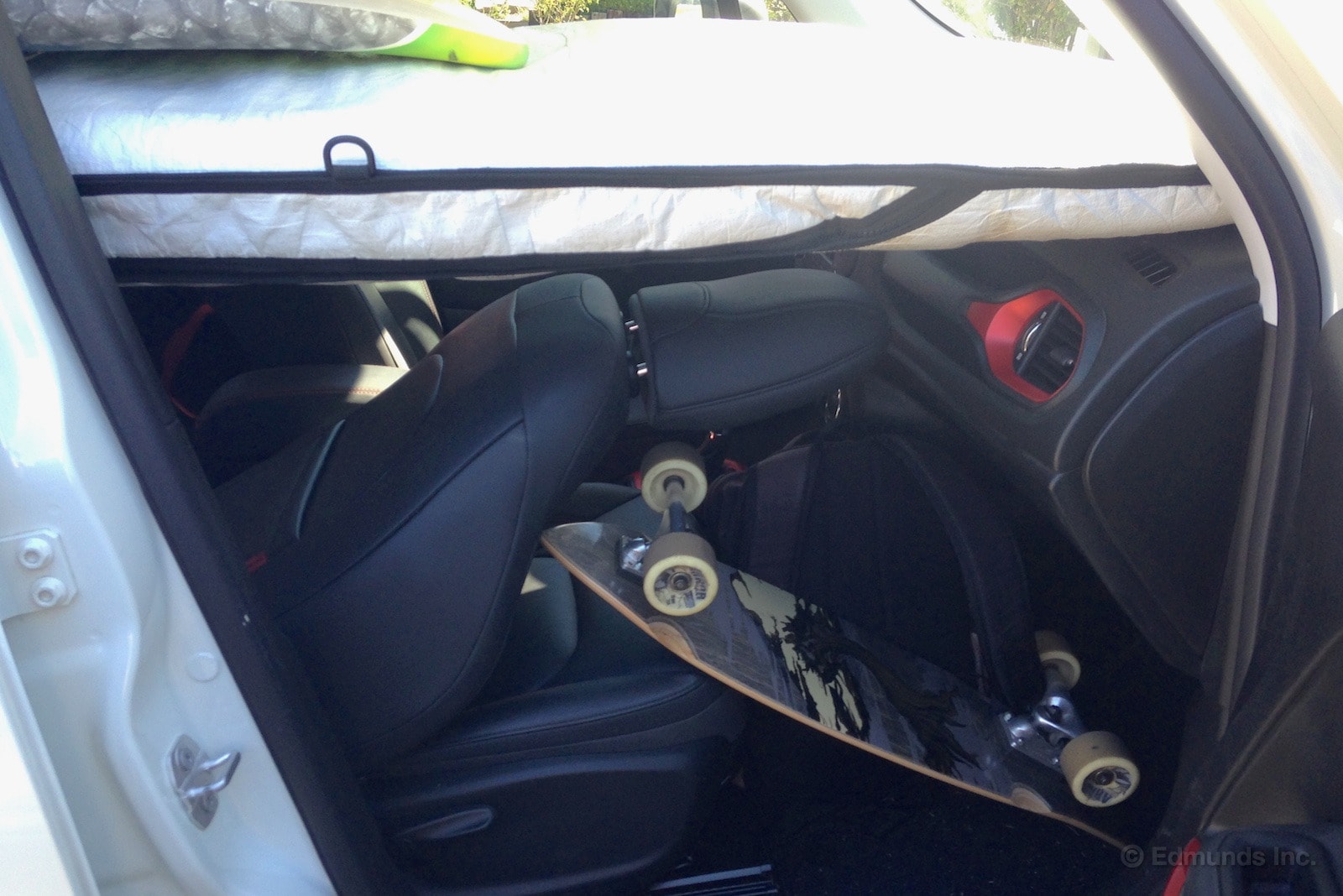
Didn't even need to remove the headrests, and that's a good thing since I'm not a qualified technician.
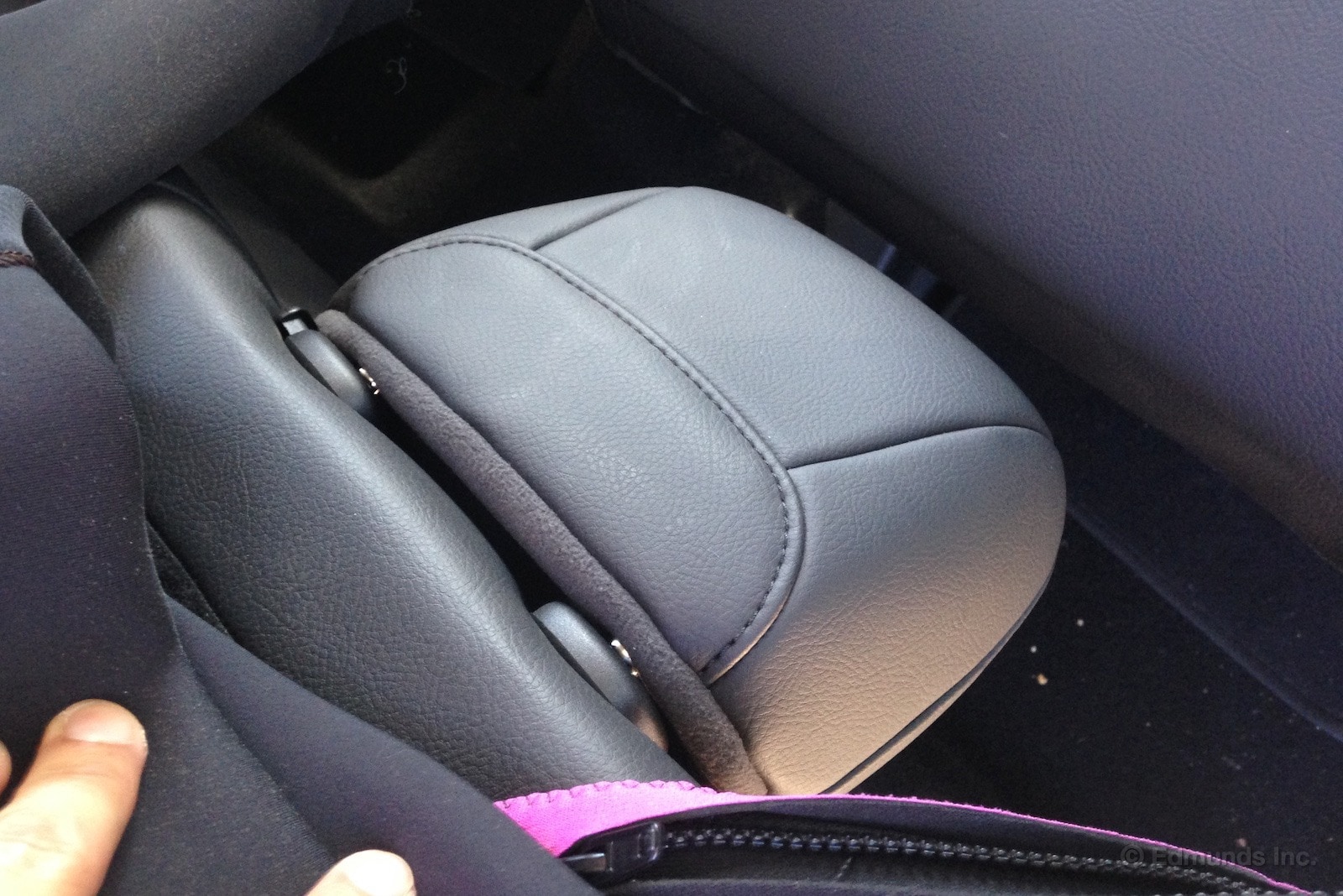
Most of this puzzle disappears if you simply decide to strap the boards to the roof. But I don't have racks I can move from car to car, and I prefer the option of stashing everything inside in case we need to leave the car out of sight for awhile. A fold-flat front seat would make the Renegade's cargo credentials even stronger.
Fuel Economy Update - Is August Over Already?

On July 31 we flipped the fuel-economy calendar forward on our 2015 Jeep Renegade Trailhawk. A month later we reflect on August and find ourselves yawning. This was one of the least memorable four-week fuel economy stretches since our test began.
Local travel and routine commuting accounted for all 1,600 miles covered by the Renegade. It just plugged along, uneventfully doing everything we asked of it but averaging a pathetic 21.5 mpg. The mystical 24-mpg EPA combined estimate remained far from reach.
Worst Fill MPG: 15.2
Best Fill MPG: 29.9
Average Lifetime MPG: 22.0
EPA MPG Rating: 24 Combined (21 City/29 Highway)
Best Range: 361.9 miles
Current Odometer: 25,763 miles
(NOTE: Cars are sometimes refueled well before their fuel tanks approach empty. As such, the "best" and "worst" entries above are not necessarily the result of an entire tank's worth of driving.)
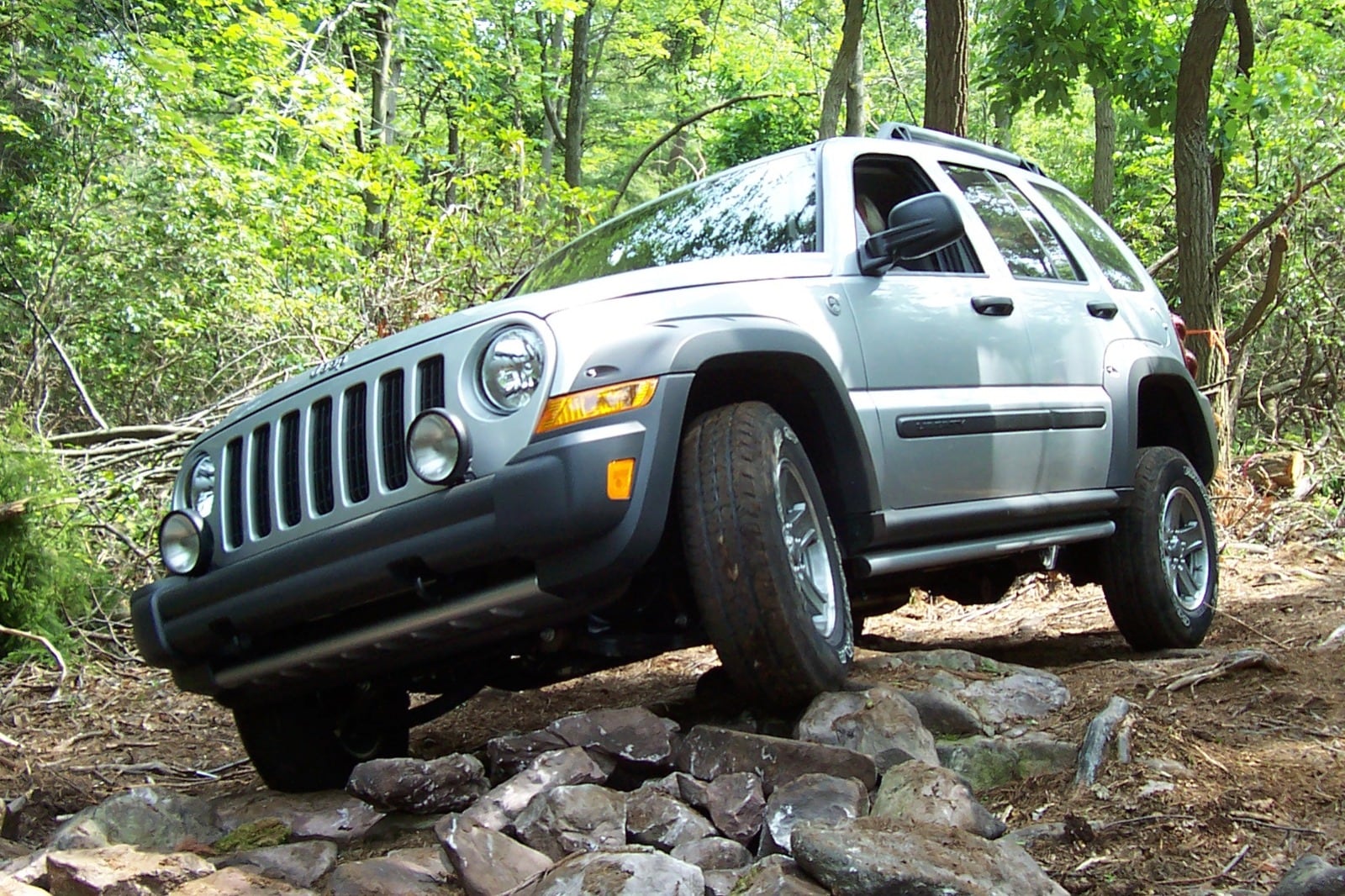
We've whipped on our 2015 Jeep Renegade Trailhawk for a few glaring flaws, most notably a witless transmission that some readers think would be fixed with a software update (we aren't keeping this thing long enough to find out).
But as I was driving the Renegade recently, probably for the last time, I spotted an early Jeep Liberty and thought, "Well, at least it's not that."
I speak from experience. My mom was so starry-eyed when I bought my 2001 Jeep Cherokee — Last of the Real Cherokees! End of the XJ! — that she wanted a Jeep of her own. She'd already paid her dues years before, logging many miles in a mid-80's Cherokee, but preferred the new Liberty's compact size and better on-road manners.
That thing was a disappointment. It was back at the dealer for warranty service after only a couple of months. There were some electronic gremlins and minor fit-and-finish problems within the first 10,000 miles. Not catastrophic stuff, but annoying.
Also, Mom's Jeep wasn't getting any better fuel economy than my XJ. I think she owned it for less than two years before trading it for something else I can't recall. It's not a fondly remembered car in the family.
The Liberty had a good 10-year run and made some fans, but I don't think it measured up as the XJ replacement that Jeep had in mind. And as crossovers got lighter and more fuel-efficient, the Liberty couldn't keep up. I think history will judge the Renegade more kindly, especially as the transmission improves. The Renegade won't be a first choice for the "It's a Jeep Thing" faithful, but it'll be a fun, favorite first Jeep for many, something the Liberty couldn't quite pull off.
Wrap-Up
What We Got
The Jeep Renegade was all-new for 2015, and it entered the rapidly expanding compact crossover utility segment. We wanted to know if this Jeep could compete with more mainstream vehicles and remain true to its off-road heritage. With that in mind, we set our sights on a 2015 Jeep Renegade Trailhawk 4x4, the most rugged version available.
In Trailhawk form, our Renegade had standard four-wheel drive with a nine-speed automatic transmission and a 2.4-liter four-cylinder engine. Also included were foglamps, skid plates, hill descent control, a 20:1 crawl ratio, knobby 17-inch tires, a slight lift, and modified front and rear bumper fascias. Inside it had a leather-wrapped steering wheel, backup camera, tinted glass and Uconnect infotainment system with a 5-inch touchscreen.
The Jeep we purchased added a black hood decal ($150), remote start ($200), keyless entry and ignition ($295), upgraded speakers ($495), the Safety and Security Group I ($595) with blind-spot and cross-traffic warnings, Uconnect upgrade ($1,245) and the Premium Leather Group ($95). The final sticker price was $31,495 on our 2015 Jeep Renegade Trailhawk, but we were able to negotiate a price of $29,577. It was about as loaded as a Renegade gets, so we expected quite a bit from this tiny Jeep. Here's what we found:
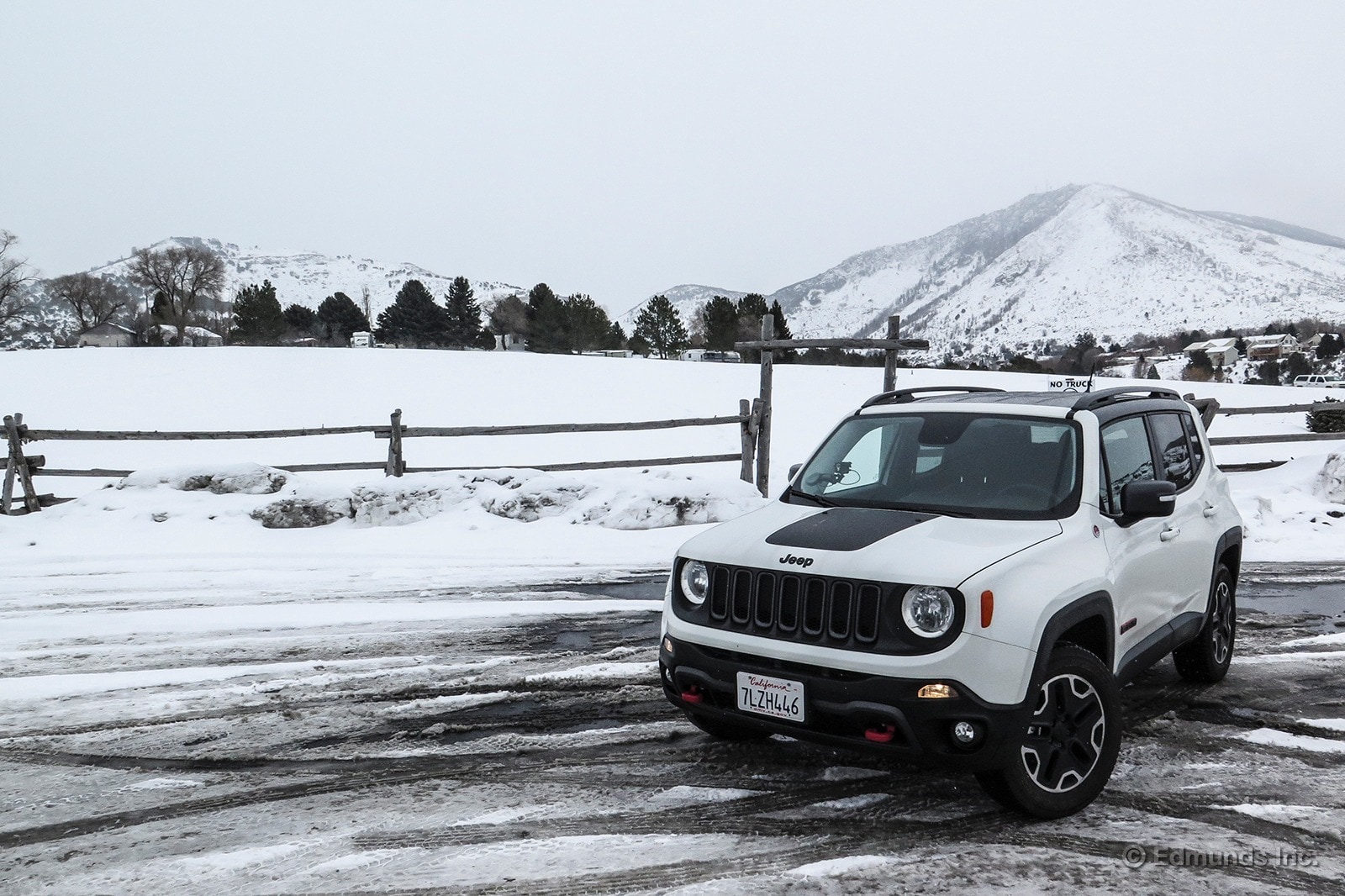
Performance
"Reasonable ground clearance and those remarkably stubby overhangs kept its nose and underside from getting hung up on anything. And its knobby tires and four-wheel-drive system with multiple terrain settings kept the party going when the uneven surface set it teetering on three wheels." — Dan Edmunds
"The nine-speed transmission is slow-witted and has inconsistent gear-change speed. This combination makes for a rather unlikable gearbox. There are technical reasons among its inner workings that are responsible, but for brevity let's just say that both its hardware and calibration share the blame." — Jason Kavanagh
MPG
"Aside from a heavy snowstorm on Day Three, almost all of the miles on the trip were highway miles. Depending on conditions and limits, speeds were kept between 65 and 80 mph. The Jeep was great at cruising on the highway, but with such a small gas tank and disappointing fuel economy, there were way too many stops." — Travis Langness
"For reference, though, I'll point out a few highway-heavy tanks: 25.9, 26.2, 25.5, 26.1, 27.5 and 26.1. That seems to be the typical mpg our Renegade gets while driving on California highways. ... We've also not yet beat our current 29.9 mpg record set by Travis on his drive to Detroit back in January." — Brent Romans
Comfort
"Eight-way adjustability helps, yet these seats also have firm cushions and an excellent shape. I've put in some decent time behind the wheel and have yet to get restless legs or a numb backside. There's also plenty of adjustability for my 6-foot-2 frame. ... Combined with the tilt-and-telescoping steering wheel, the Renegade's power driver's seat makes it easy to find a comfortable driving position." — Ed Hellwig
"After 1,000 miles in a tiny, four-cylinder Jeep, I only stopped because I couldn't mentally deal with another fuel stop. The Jeep's exceptional seating position and seats, great visibility and relative quietness kept me happy for hours. If the Renegade had a tolerable-size fuel tank, I'd have made Denver easy." — Mike Magrath
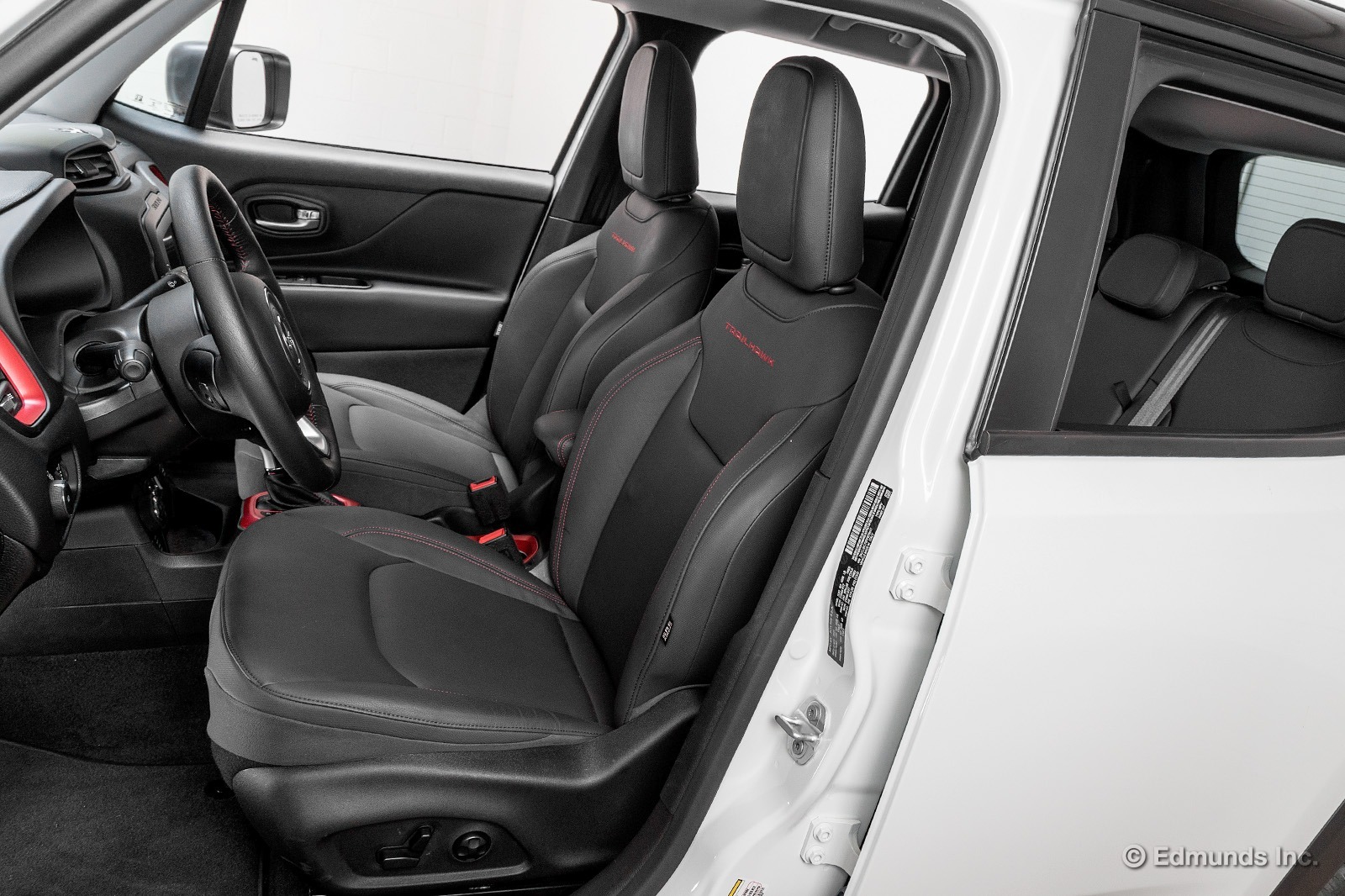
Cargo Space
"We had a 9'2" longboard, her shortboard, a boogie board, a big tub for rinsing off salt and sand, a big gasoline jug full of water (since California turned off the showers at its state beaches), wetsuits, backpacks with towels and dry clothes, a couple of small folding chairs and a skateboard and Razor scooter. ... We packed all the gear and still had room." — Dan Frio
"I've never been fond of stacking to the brim since it blocks rear visibility and places potentially loose items right behind your rear occupants' heads. But sometimes you've just got to do it. And to the Renegade's credit, its boxy shape allowed me to make the most of that space." — Brent Romans
Interior
"The side air vents, gear selector surround and cupholders all have this attractive red treatment. It has the look of a semi-gloss anodized aluminum. I know it's only painted plastic, but man, does it liven up the interior. Thankfully, these treatments aren't on elements that are frequently touched, so you get to keep believing they're not just plastic." — Mark Takahashi
"I appreciate this little crossover's spacious cabin. ... I'm 6 feet, 4 inches, and there are several inches between the top of my head and the headliner. There's also enough legroom for me to sit comfortably in the driver seat. But most unusual is the ability to sit behind myself, a feat not often achieved in a vehicle with the Renegade's dimensions." — Cameron Rogers
Audio and Technology
"The findings back up what I suspected. While most cars resume [Bluetooth] playback quickly, the Renegade took three times as long as the group average. ... Of course, this is not an exact science, but a rough approximation of a mild annoyance." — Carlos Lago
"As Southern California morning temps plummet into the low 50s, seat heater utilization in the Edmunds editorial office skyrockets about 650 percent. Ed Hellwig was first to call out our Renegade's generous offerings in heat conduction. Toasty palms on a brisk morning drive are one of life's underrated luxuries." — Jonathan Elfalan
Maintenance
"Put four N's or four P's on the same car and the net conicity across a given axle will be near zero as the left and right sides cancel each other out. ... All I know is the cross rotation helped and the squared-up alignment did the rest. The pull has subsided, and our Renegade's steering wheel is centered when it's going straight ahead." — Dan Edmunds
"We waited longer than anticipated for parts. The muffler, specifically. Supply was limited for the all-new Renegade, and it added three business days to our wait. Then we ran into the Thanksgiving holiday weekend. By the time we slid back behind the wheel, our Jeep had been out of service for 14 days." — Mike Schmidt
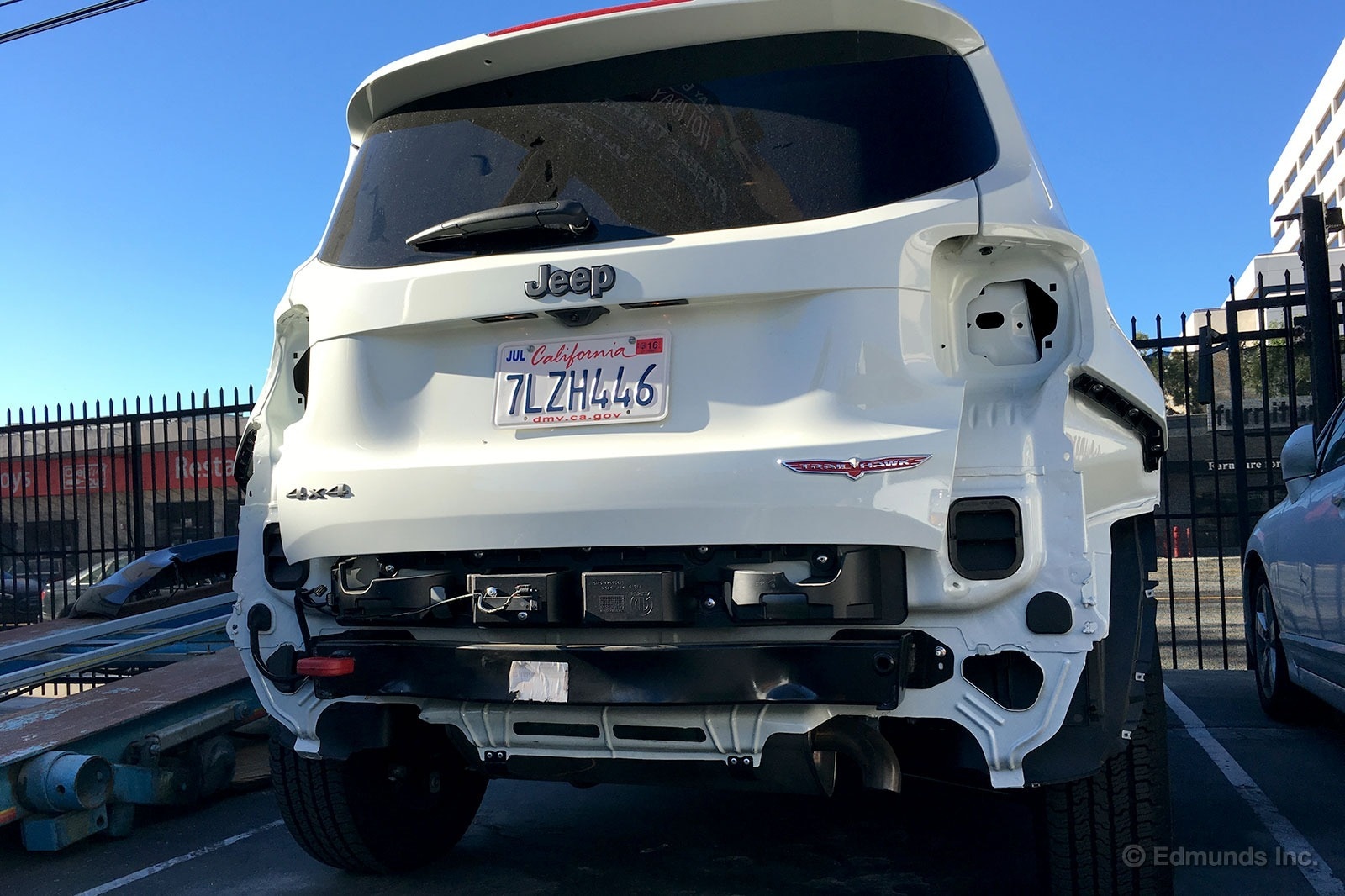
Miscellaneous
"Some of the other things that make [the Renegade] perfect for him, as a newish driver:
It moves, but it's far from fast. The 2.4-liter four-cylinder engine does just fine in getting the 3,500 pounds up to speed, but there's no chance whatsoever he'd ever be tempted to race somebody in it. None." — Matt Jones
"I call it the Renegade Rumble, a low-level grumbling sound that comes from down low behind the driver's seat under the back of the vehicle somewhere. It's not terribly loud, but the low frequency nature of the thing hovers on the edge of being an outright vibration." — Dan Edmunds
Maintenance & Repairs
Regular Maintenance:
The Renegade requested routine maintenance at 10,000-mile intervals.
We opted for an early service at around 7,500 miles in preparation for a cross-country road trip, which set us back $145. At roughly 15,000 miles we took the Jeep in for an unscheduled visit to address a short list of concerns, including the Renegade Rumble. This lasted three days and, overall, was a bit of a fiasco. A planned dealer stop near 20,000 miles cost $97 and was the last before our test concluded.
Service Campaigns:
A few open recalls were issued during our test. One replaced the wheel stud wrench because the stock tool was cast of material deemed too brittle. A second covered replacement of both front brake rotors and pads. And a third hoped to remedy erratic shift patterns. The process involved reflashes to the numerous systems, but it did nothing to solve our problem.
Fuel Economy and Resale Value
Observed Fuel Economy:
EPA estimates prepared us for 24 mpg (21 city/29 highway) and a total range of 305 miles. In reality we averaged just 22.0 mpg. Our best single tank was 29.9 mpg and our best range 361.9 miles. But on average, we went 250 miles per tank and broke past the 300-mile barrier on just four occasions.
Resale and Depreciation:
We purchased our 2015 Jeep Renegade Trailhawk for $29,577 just over one year ago. After 27,760 miles it was time to sell. Edmunds TMV Calculator valued our Jeep at $19,829 based on a private-party sale. So when CarMax offered us $19,500 we accepted. We'd have easily spent the difference in advertising and time in order to sell the car to a private buyer. The sales price reflected a mediocre 34 percent depreciation.
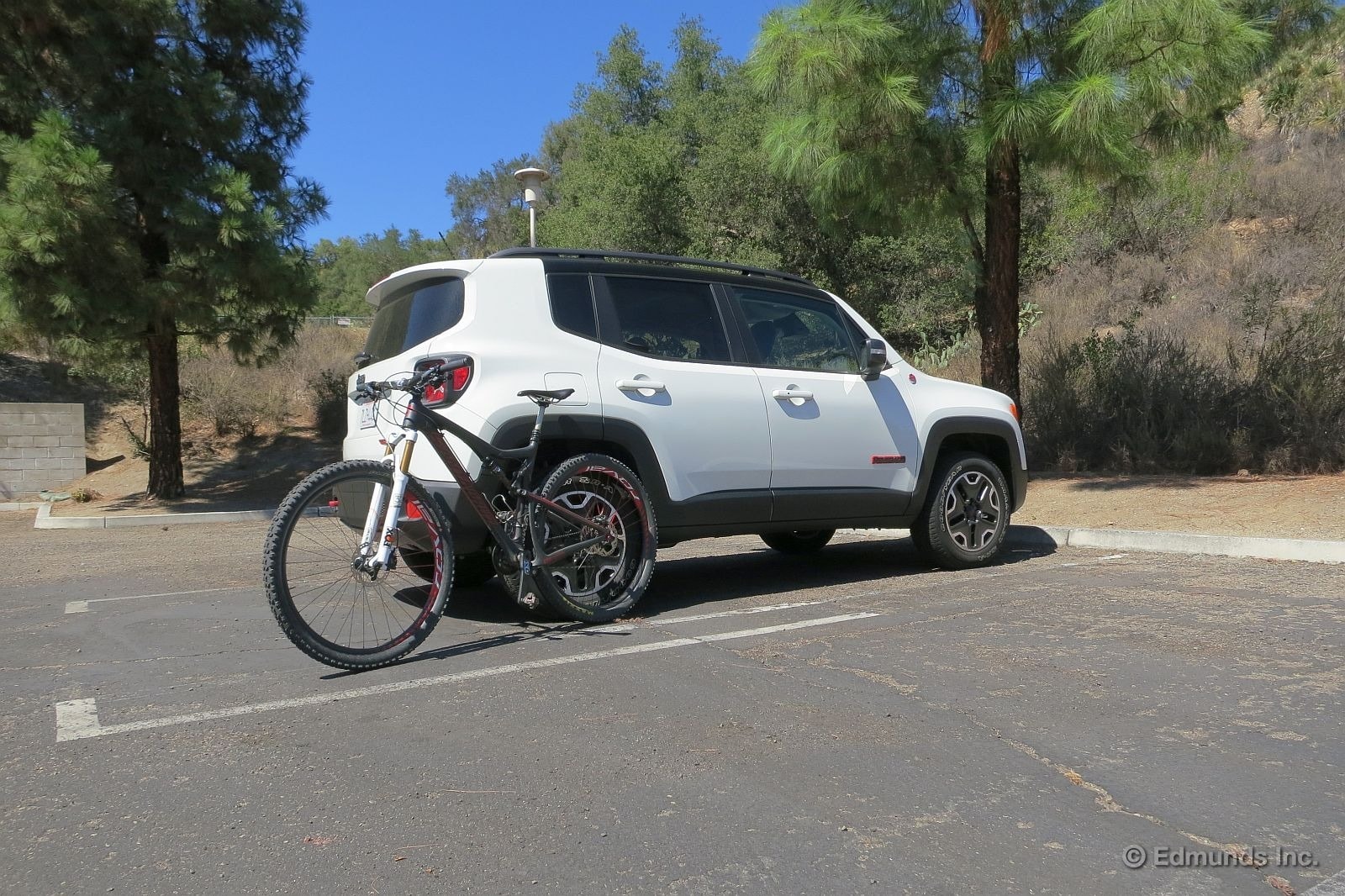
Summing Up
Pros:
Comfortable driver and front passenger seats; boxy design gives the interior a very spacious feel; more cargo space than you expect from a vehicle this small; can deliver its EPA mileage estimates if you're careful; legitimate off-road capability that is far superior to that of others in its segment.
Cons:
Inconsistent performance from the nine-speed automatic transmission; strange rumbling sound from underneath the vehicle that could not be fixed; small fuel tank limits the range on long trips.
Bottom Line:
If you want a small utility vehicle with a unique look and better than average off-road ability, the Jeep Renegade tops everything else in the class. When it comes to refinement, efficiency and a trouble-free ownership experience, the Renegade sits closer to the middle of its peers.
| Total Body Repair Costs: | $1,614.02 |
| Total Routine Maintenance Costs: | $292.71 (over 15 months) |
| Additional Maintenance Costs: | None |
| Warranty Repairs: | Replace wheel stud wrench, replace front brake rotors and pads, reflashes for various vehicle systems. |
| Non-Warranty Repairs: | None |
| Scheduled Dealer Visits: | 2 |
| Unscheduled Dealer Visits: | 3 |
| Days Out of Service: | 17 |
| Breakdowns Stranding Driver: | None |
| Best Fuel Economy: | 29.9 mpg |
| Worst Fuel Economy: | 15.2 mpg |
| Average Fuel Economy: | 22.0 mpg |
| True Market Value at service end: | $19,829 (private-party sale) |
| What it Sold for: | $19,500 |
| Depreciation: | $10,077 (34% of paid price) |
| Final Odometer Reading: | 27,760 miles |
Disclaimer:
Edmunds purchased this vehicle for the purposes of evaluation.